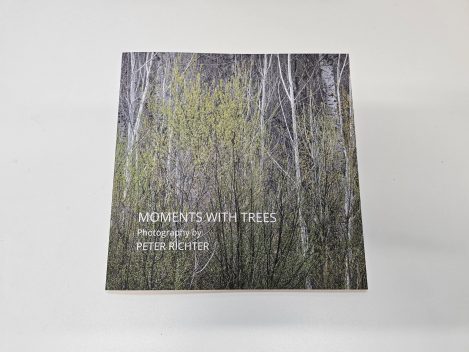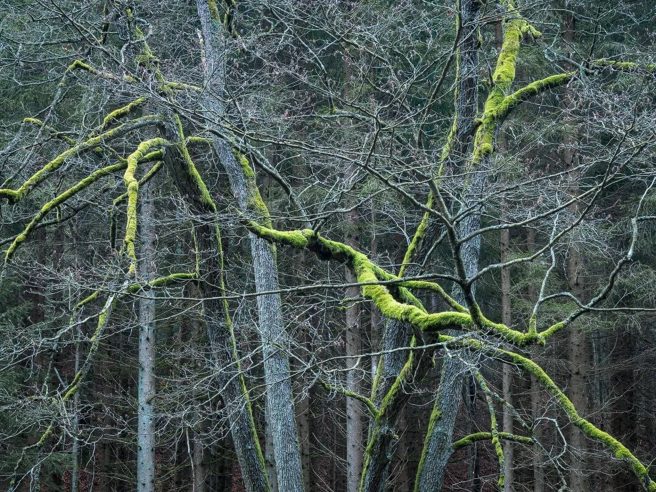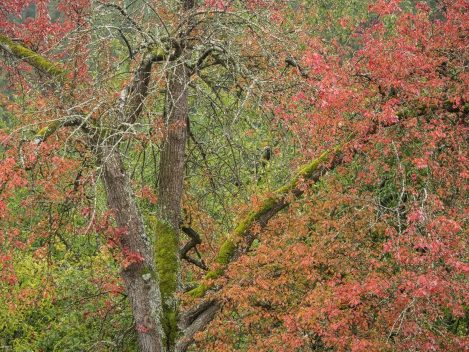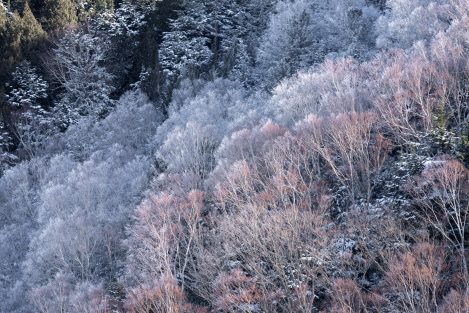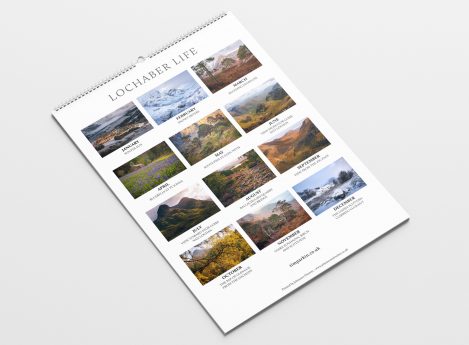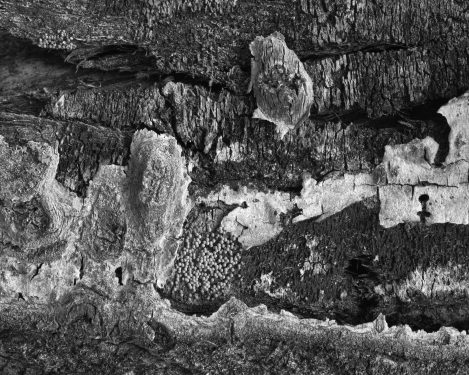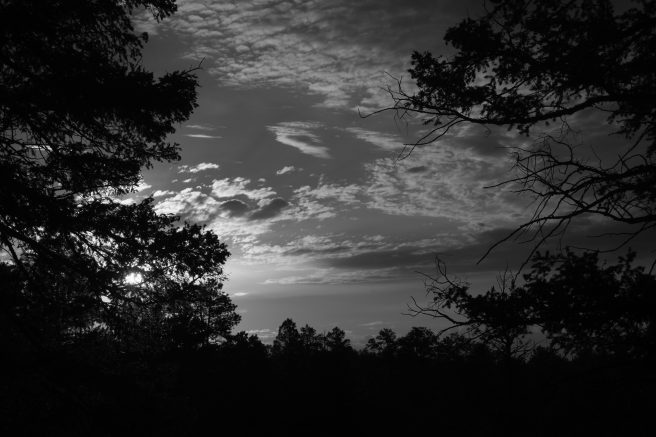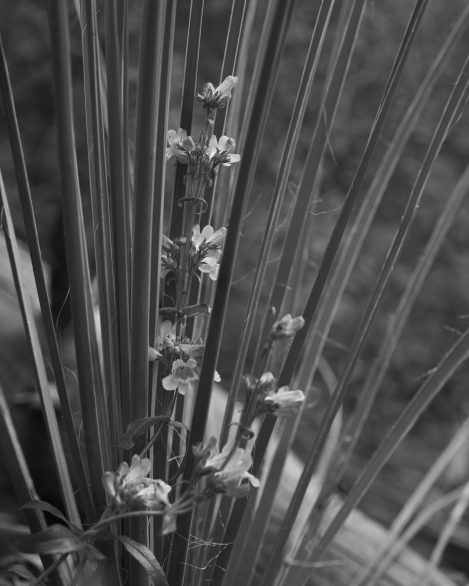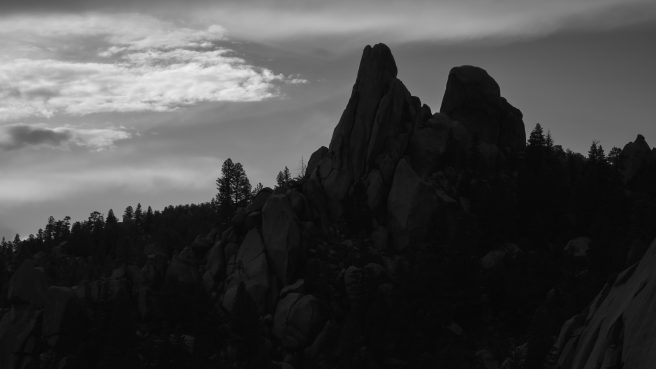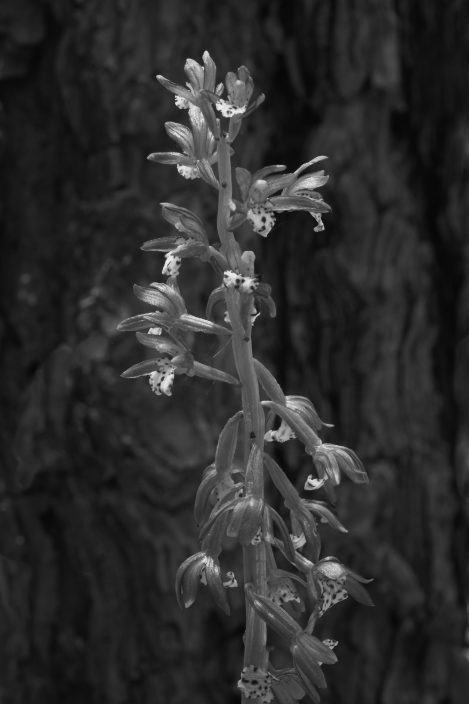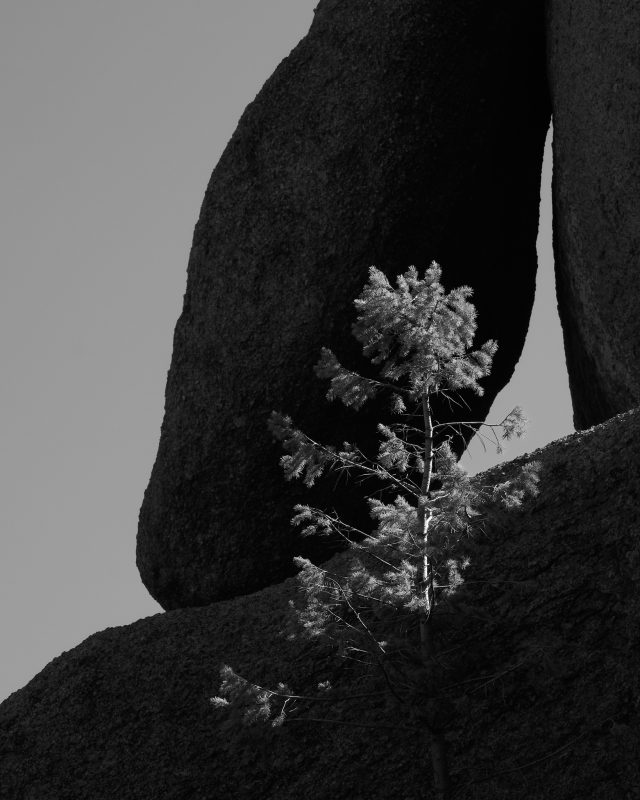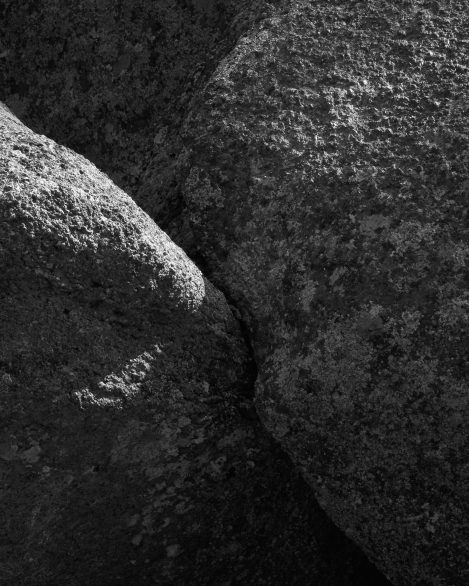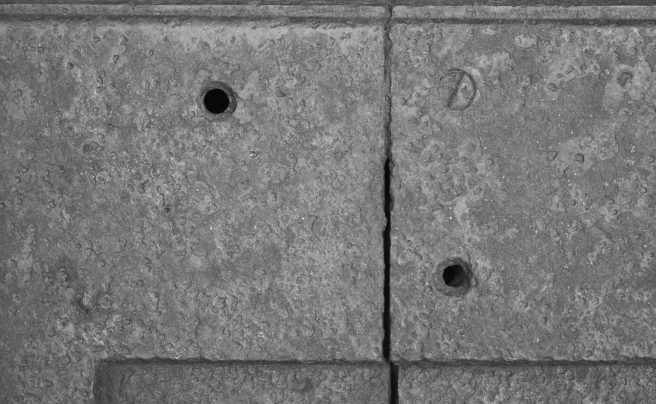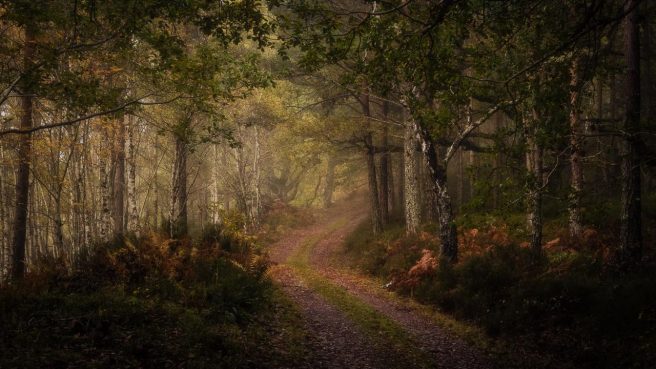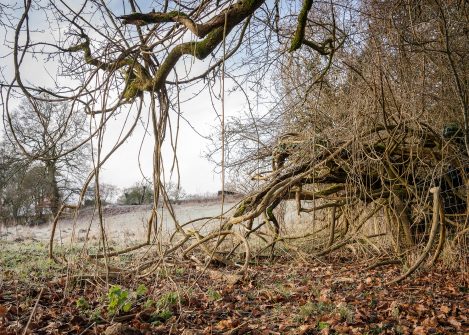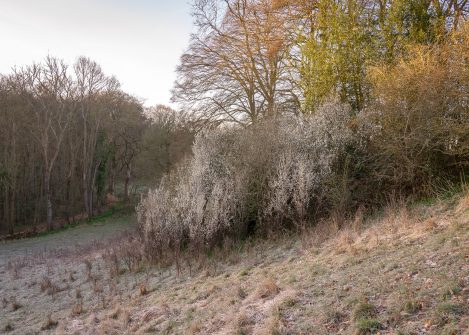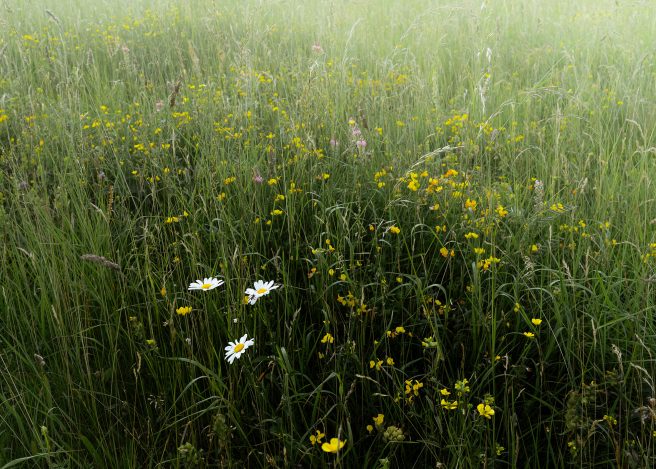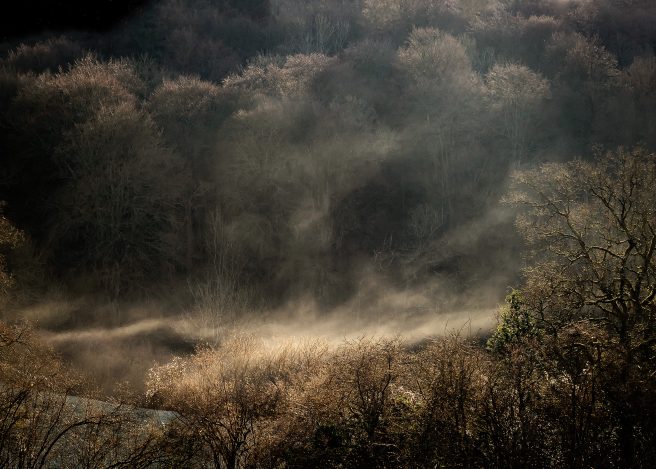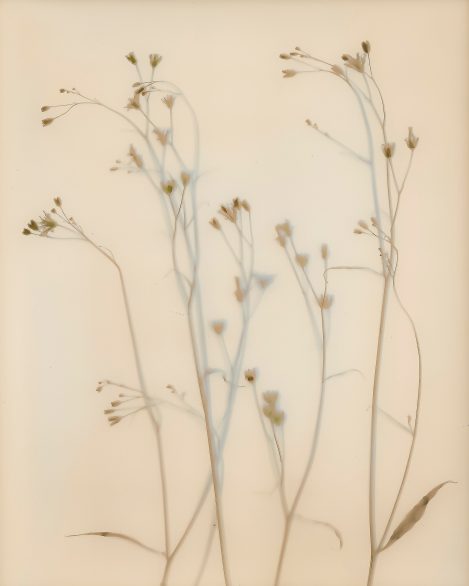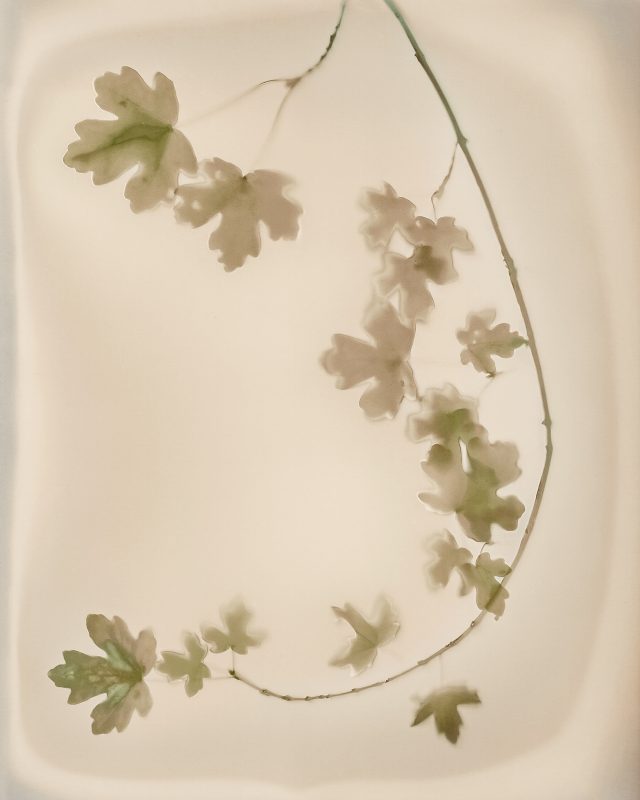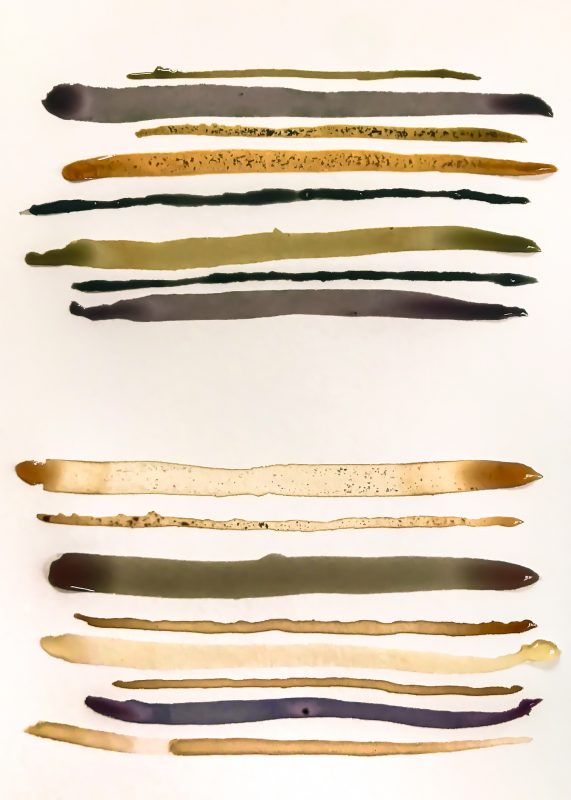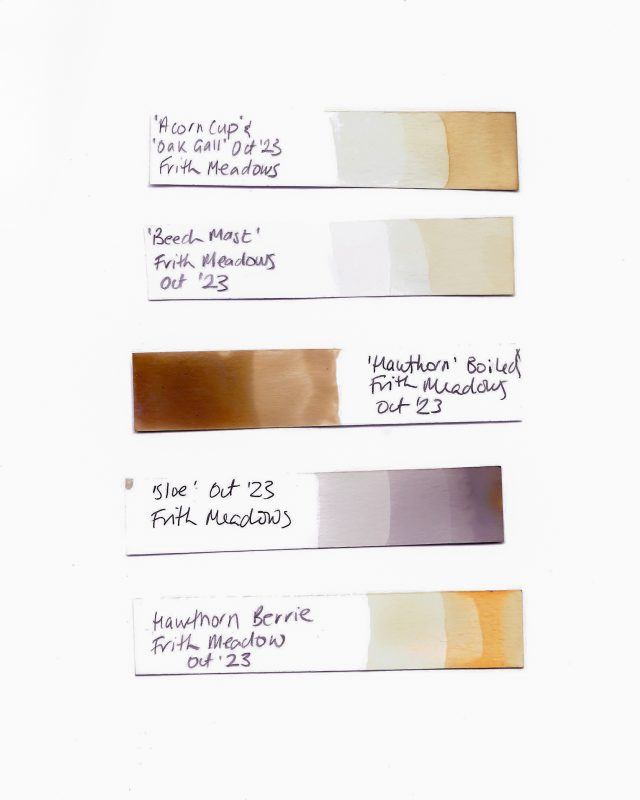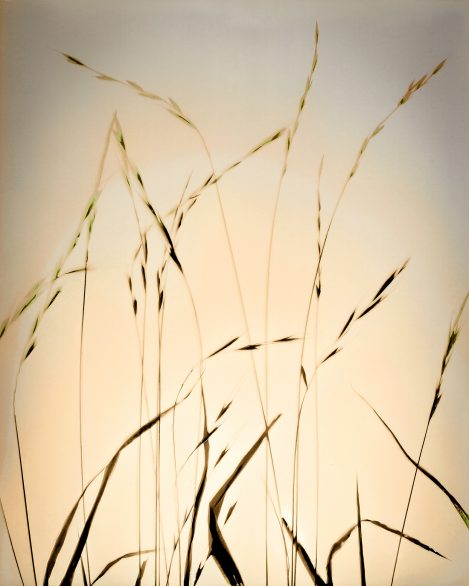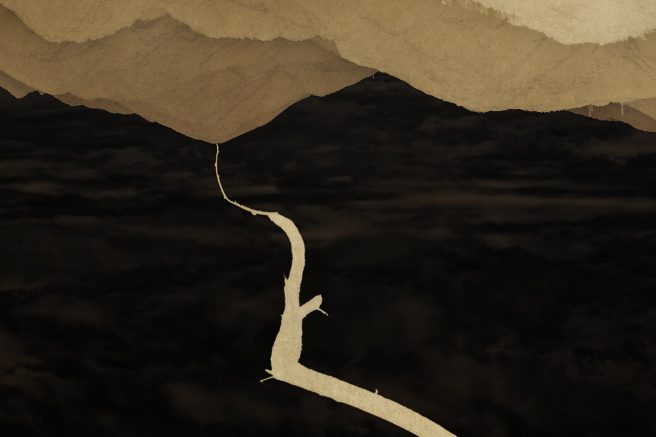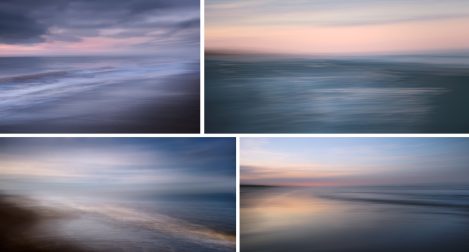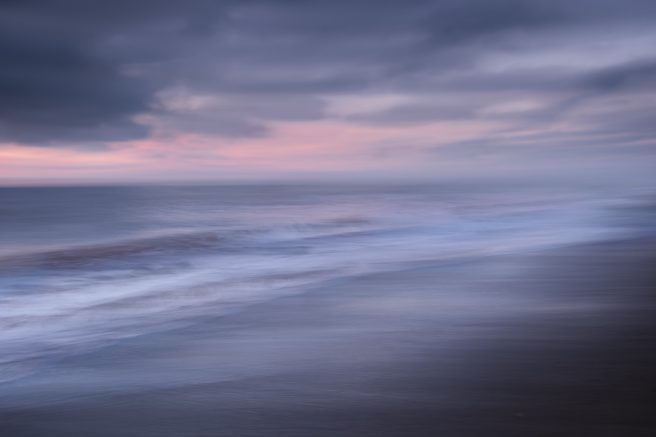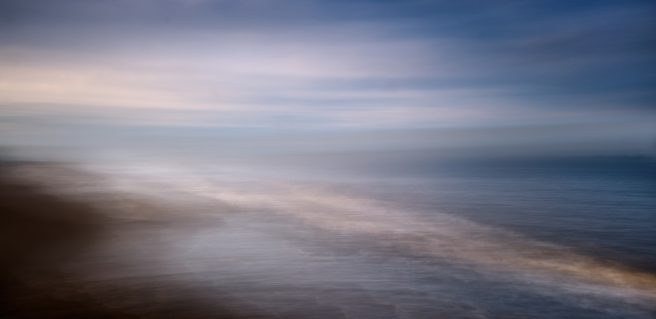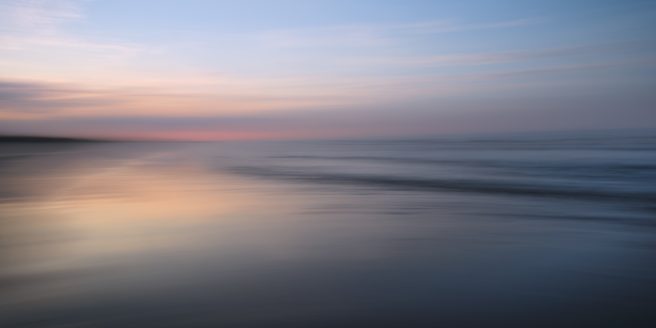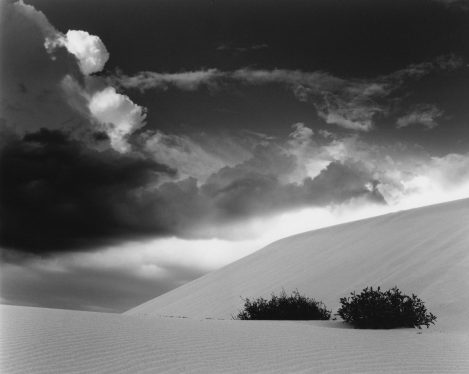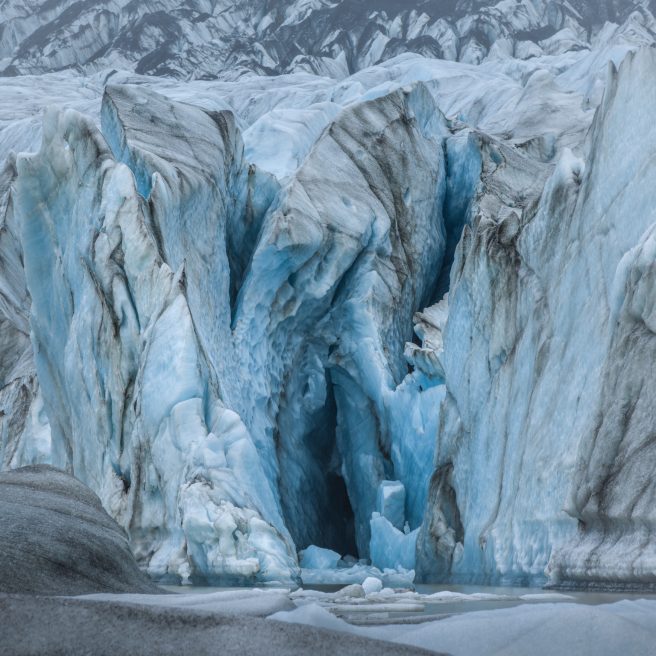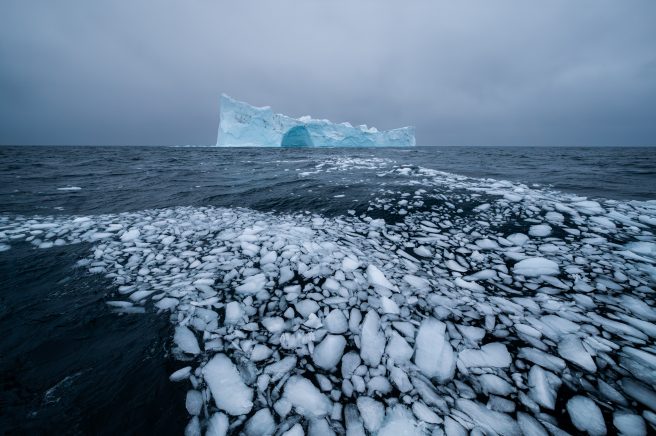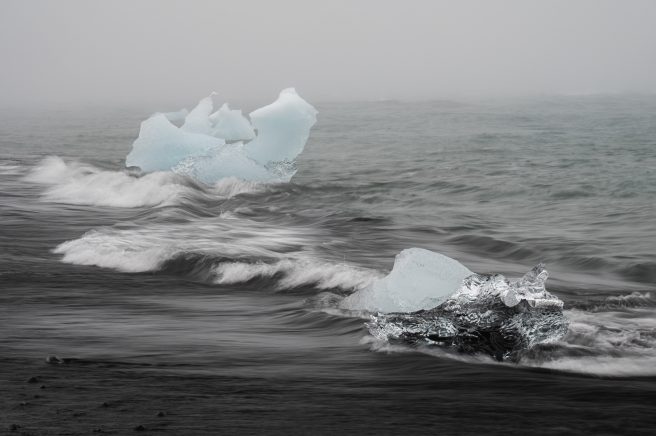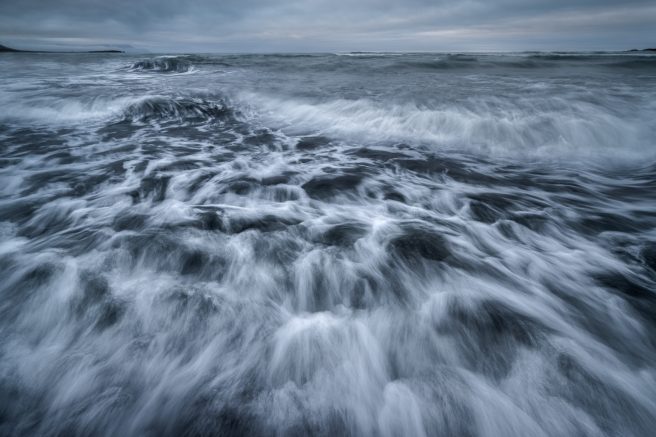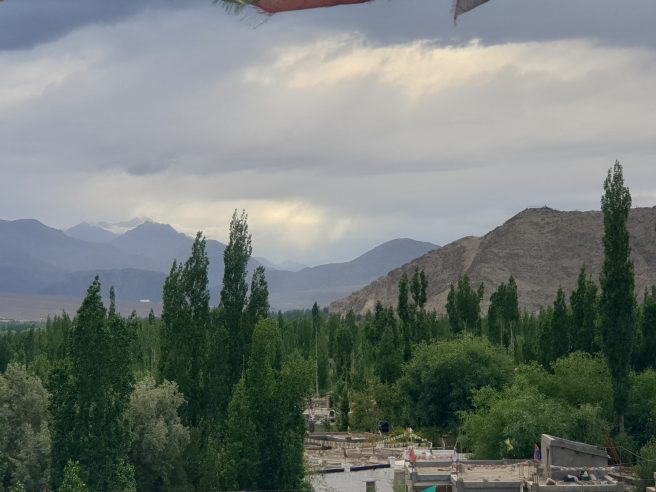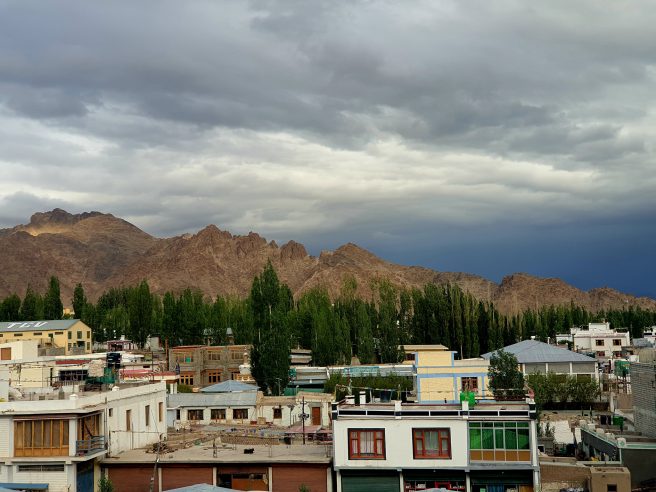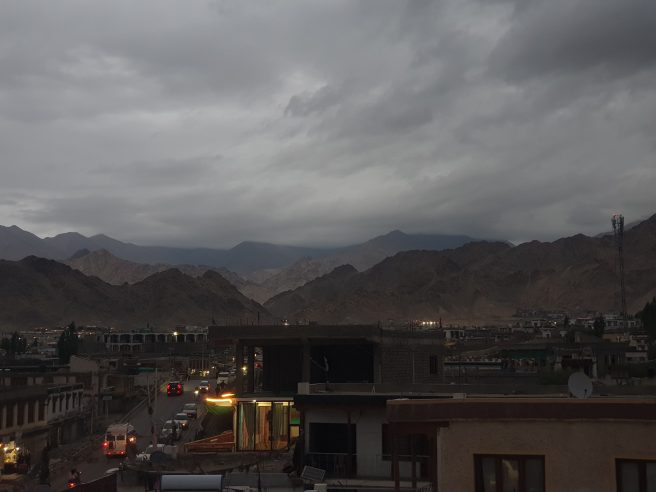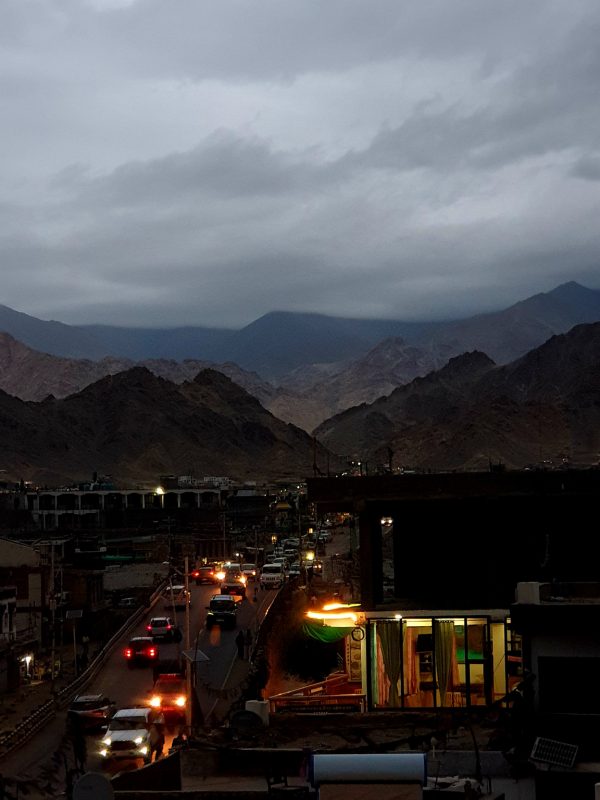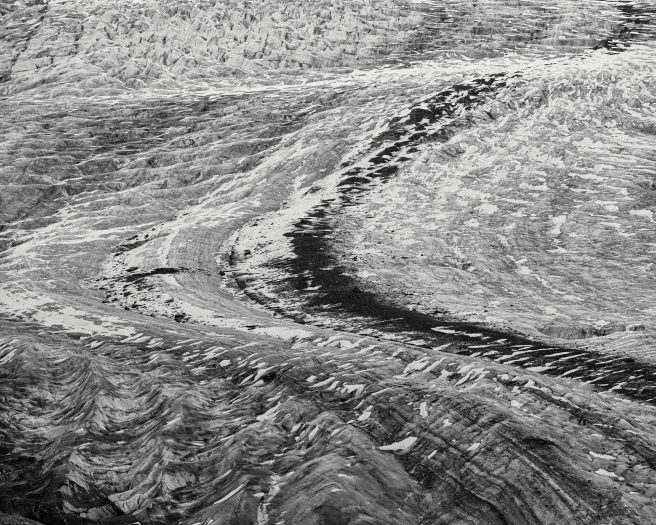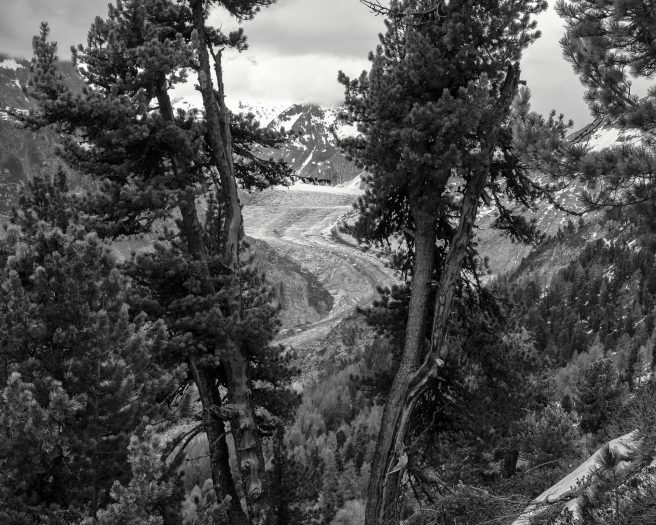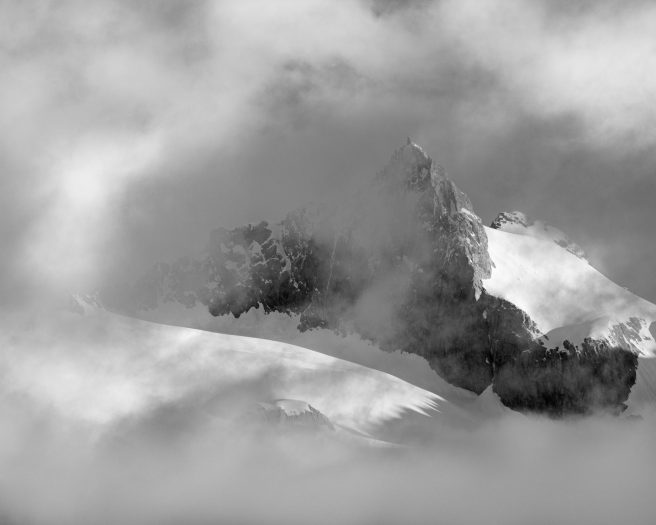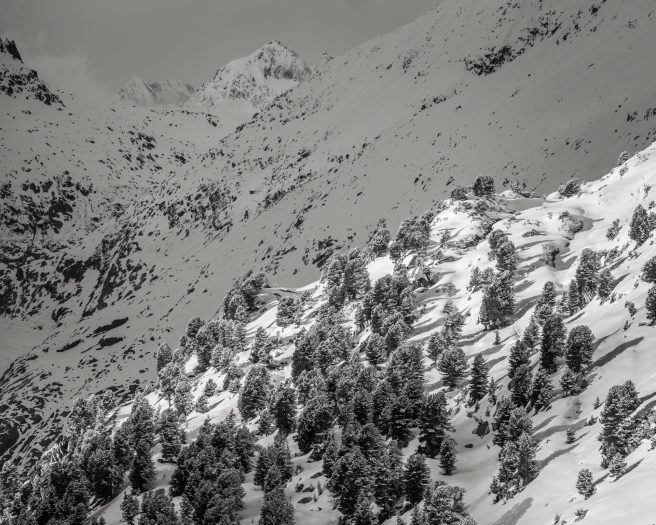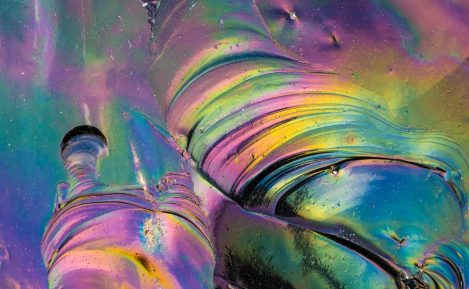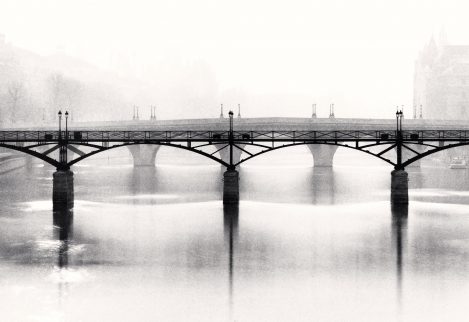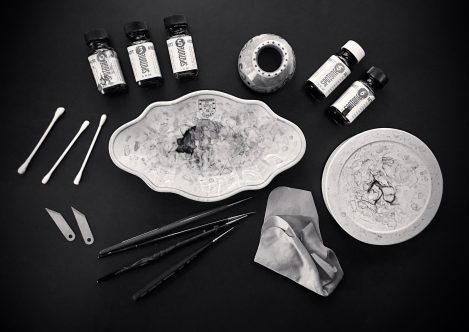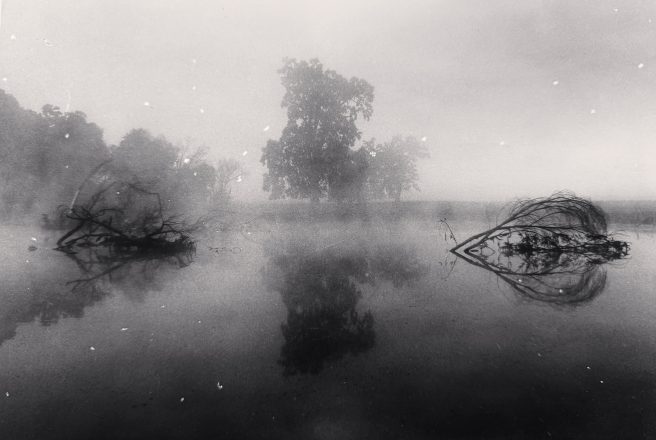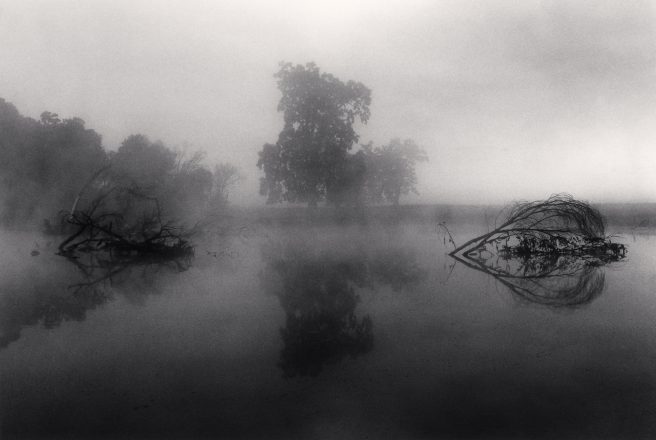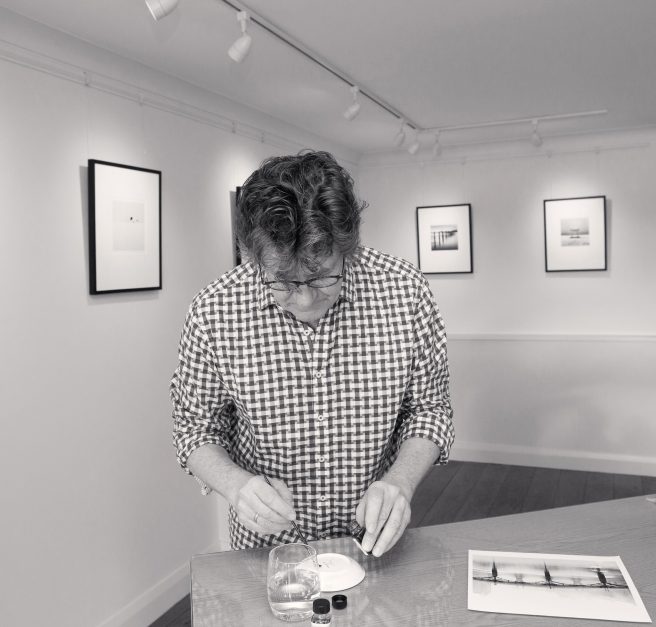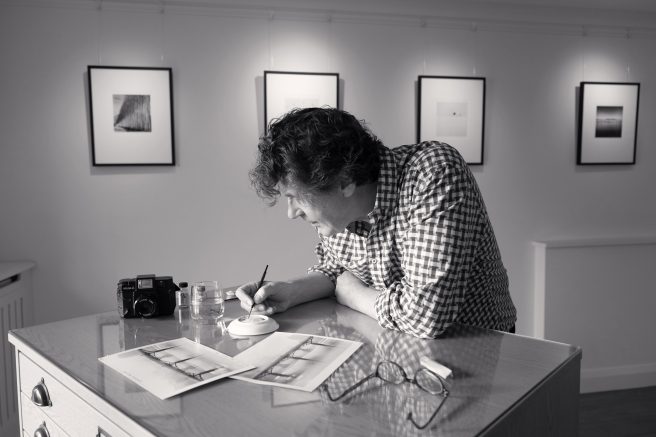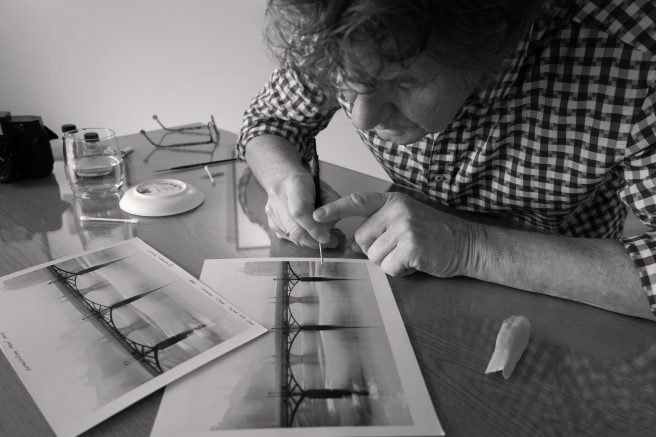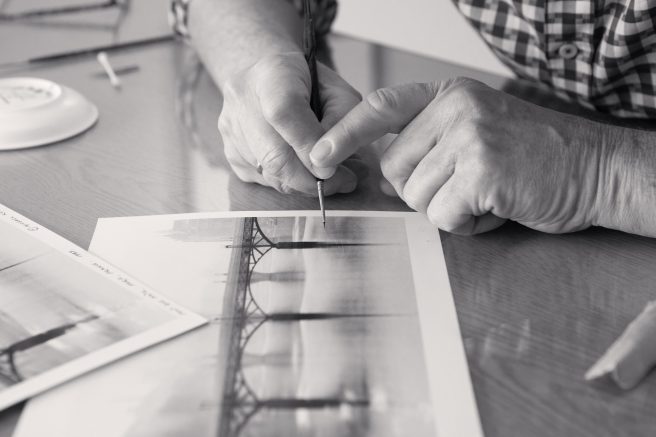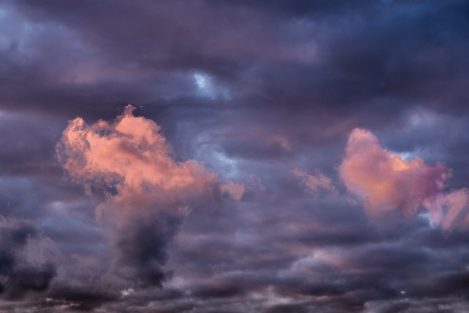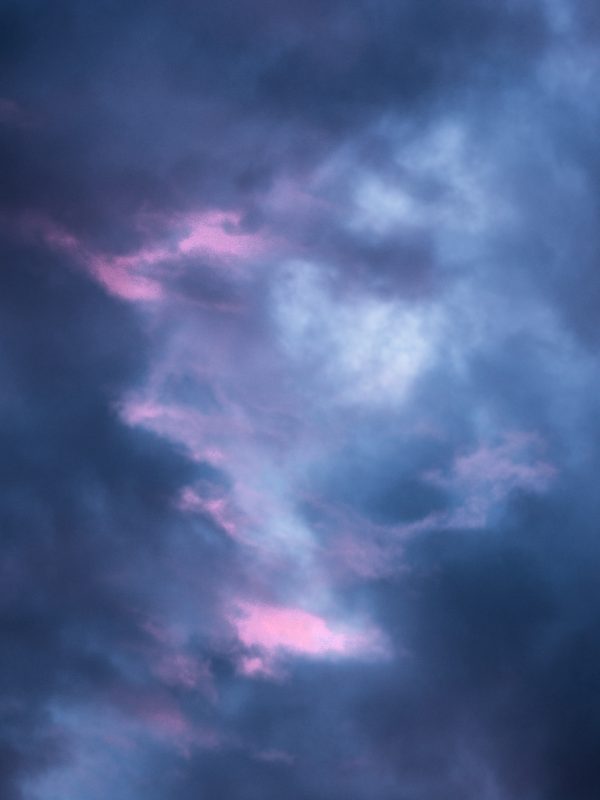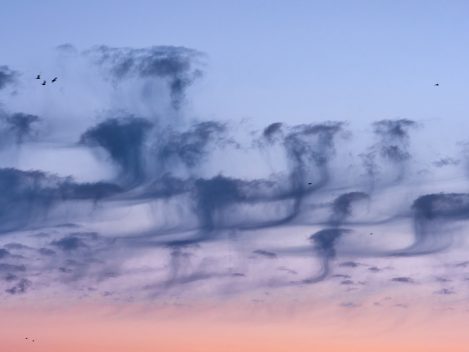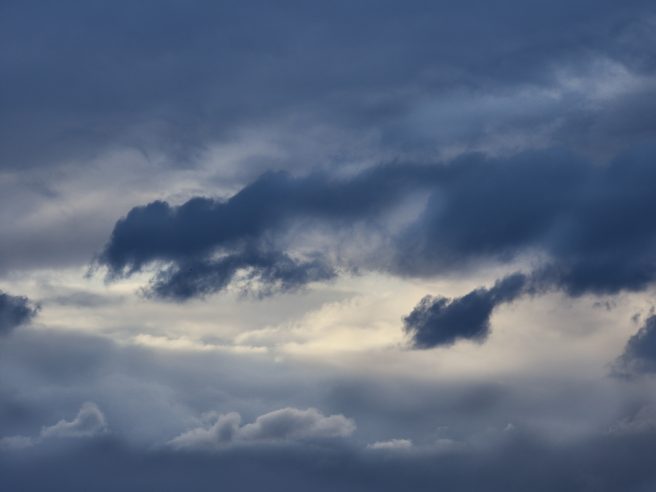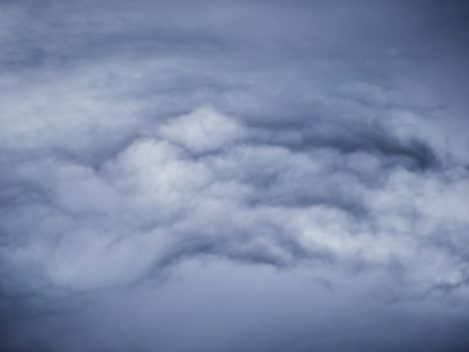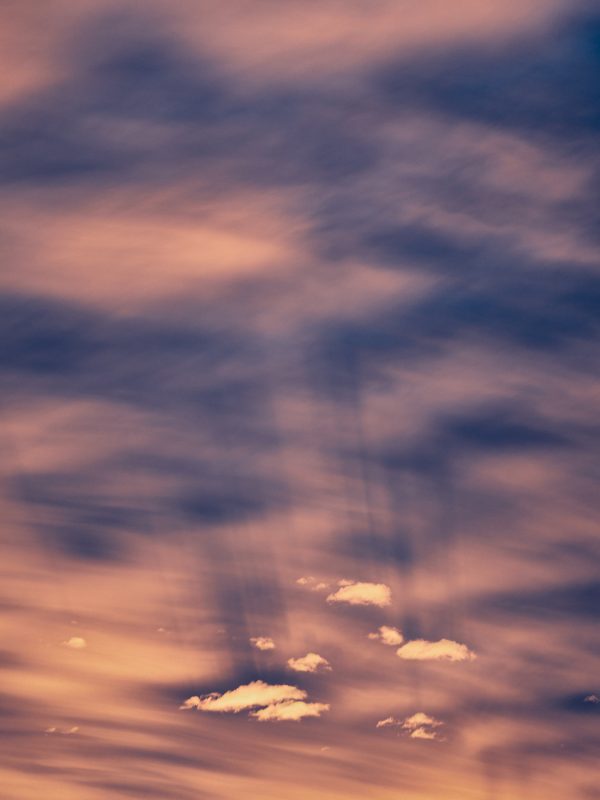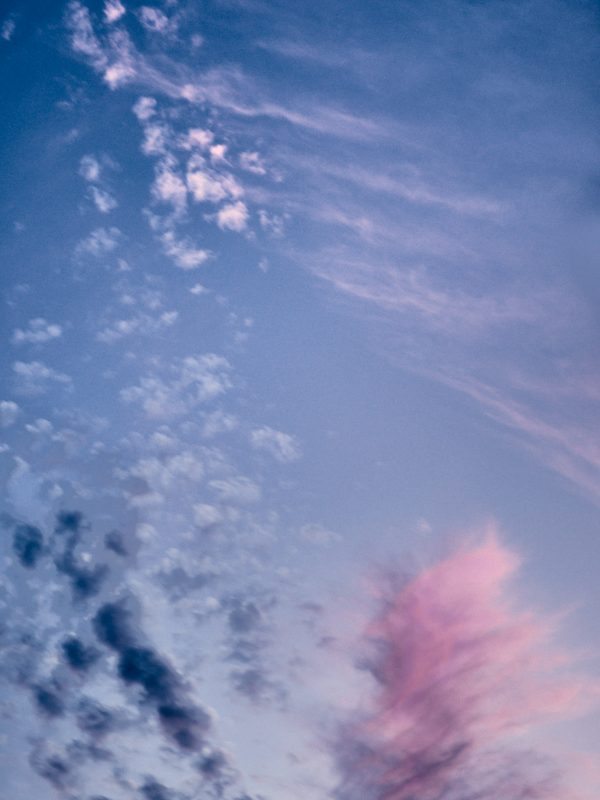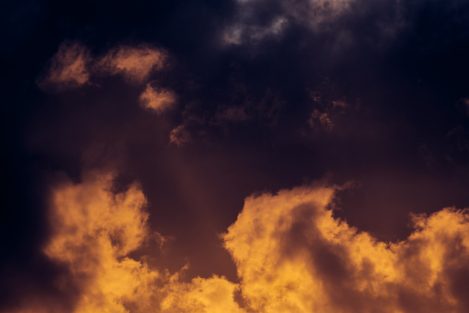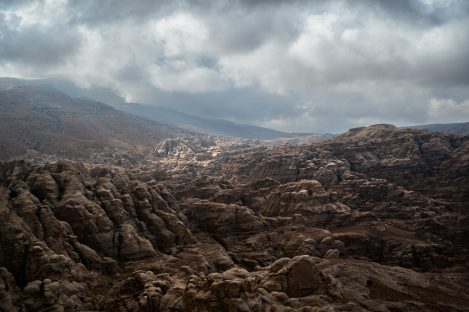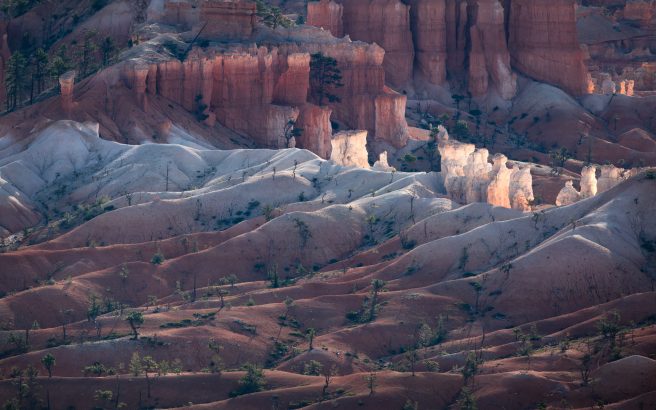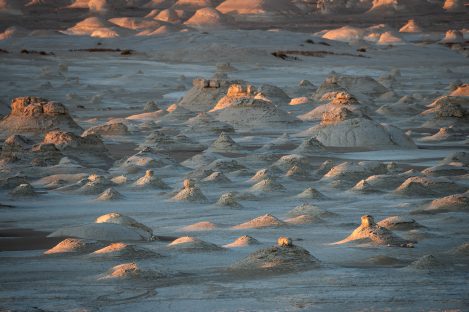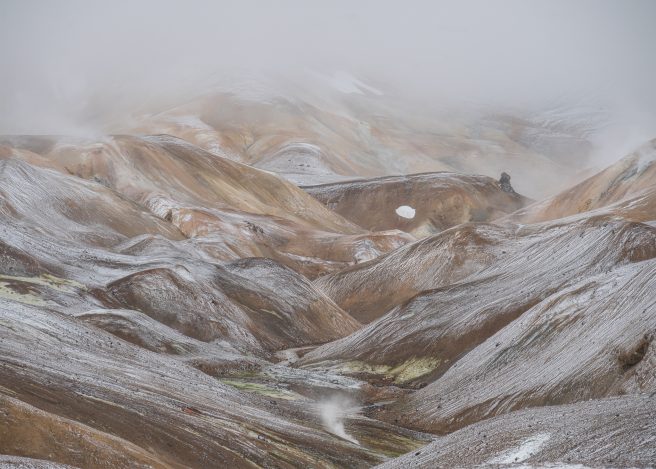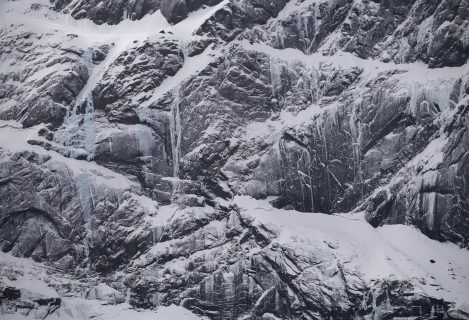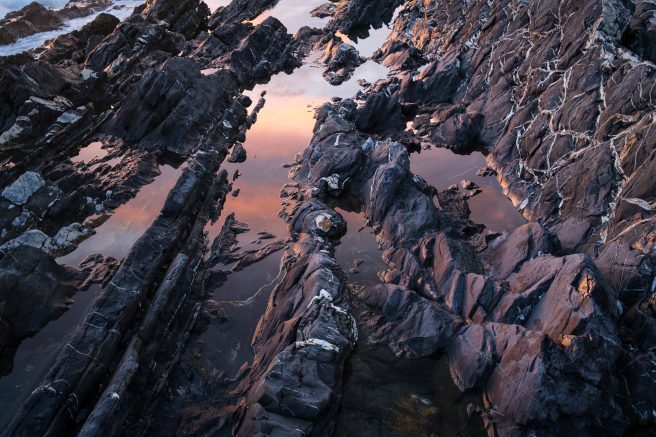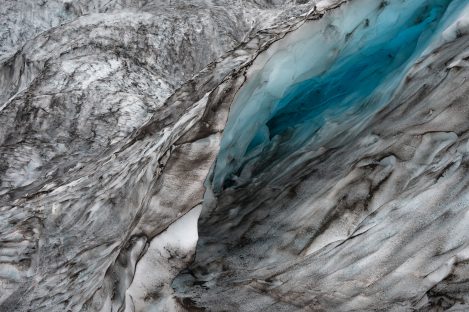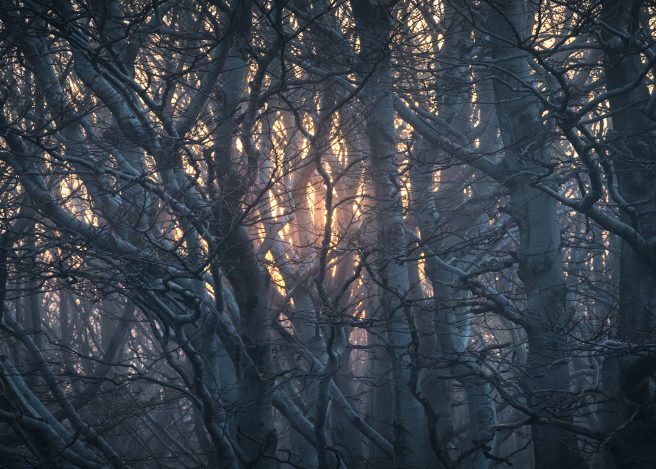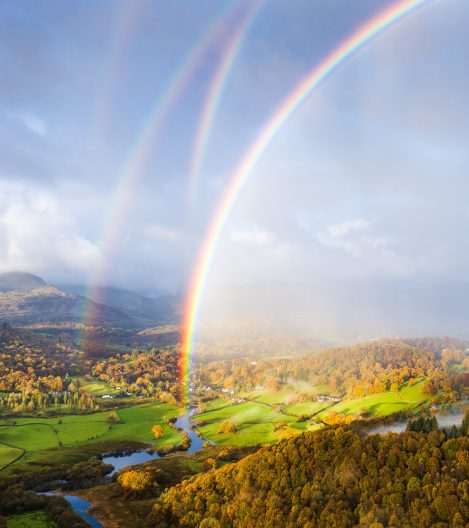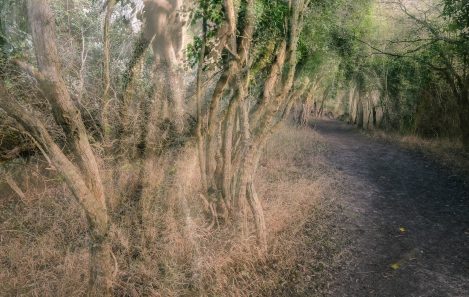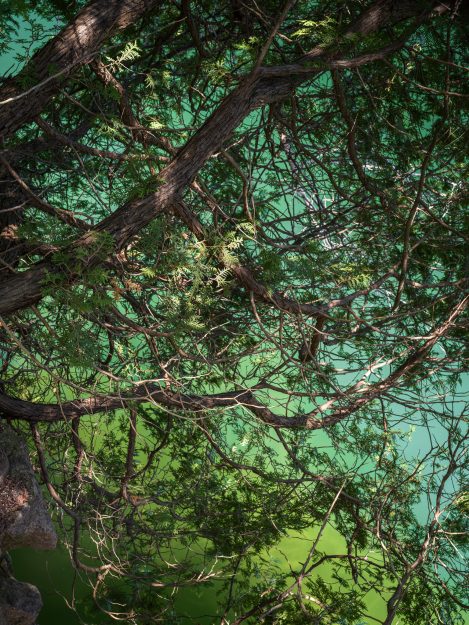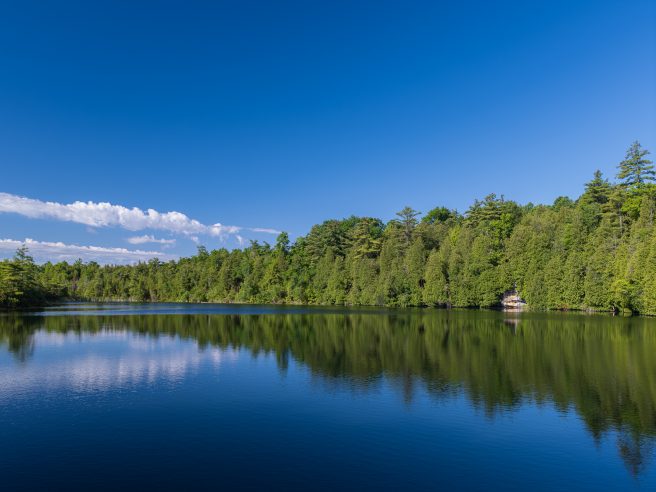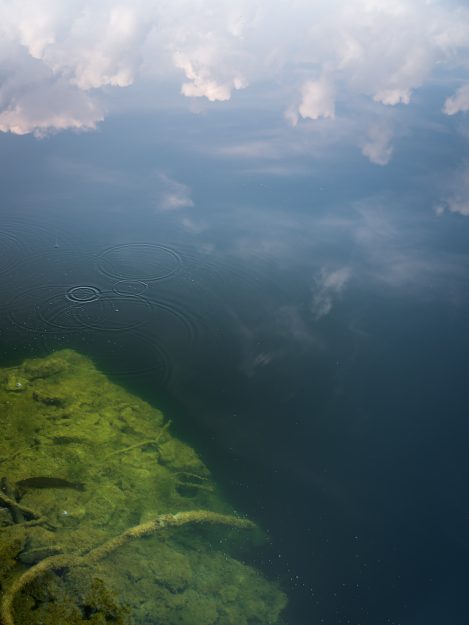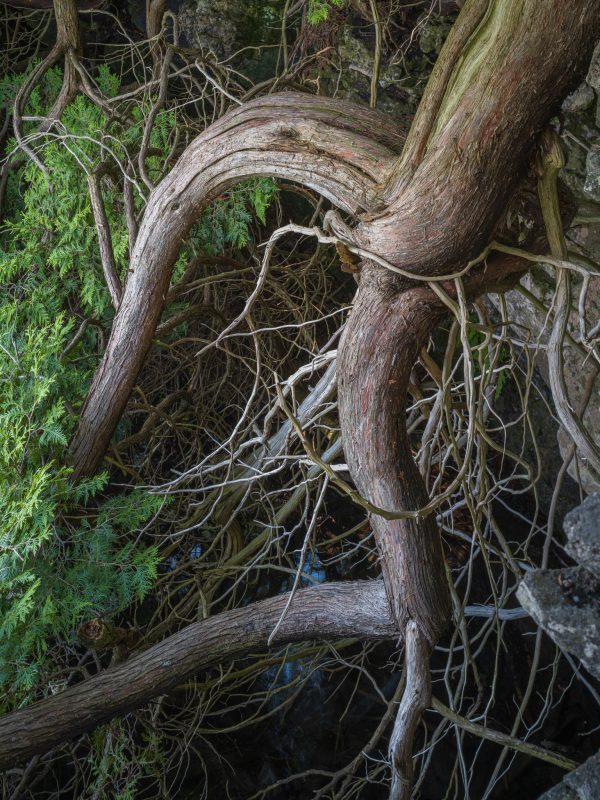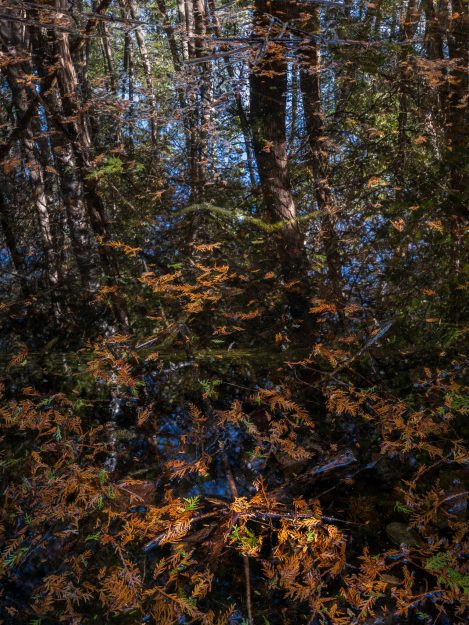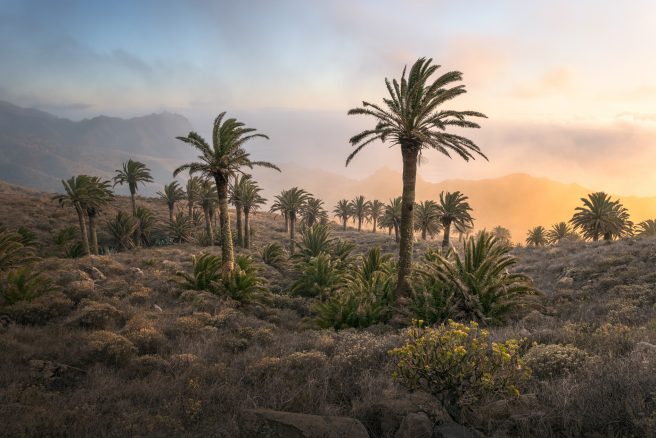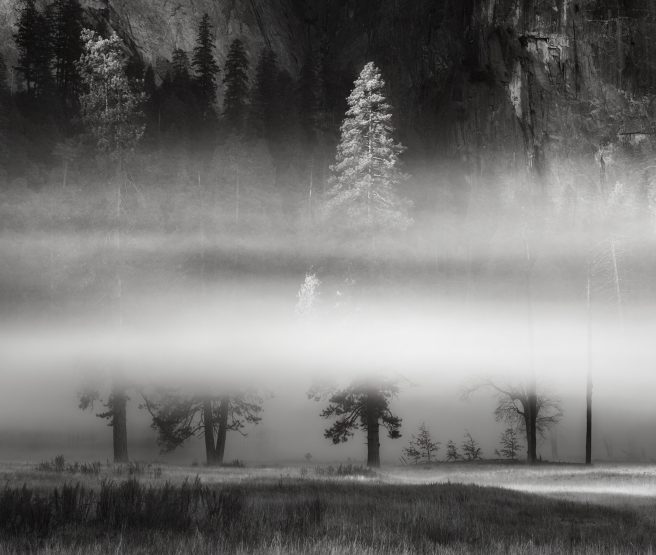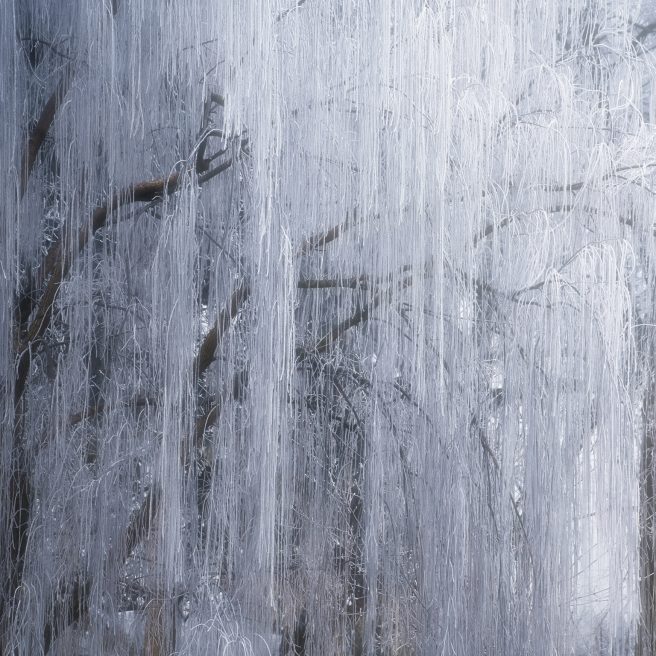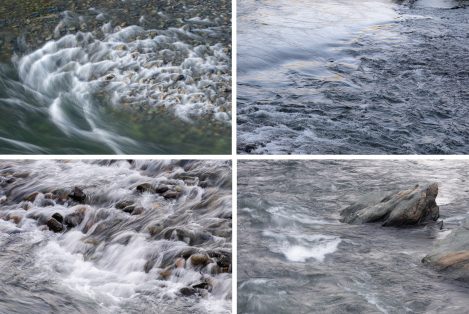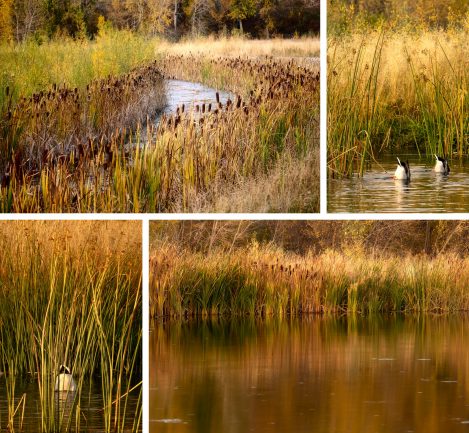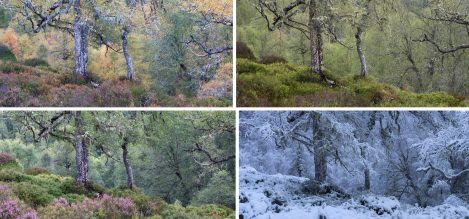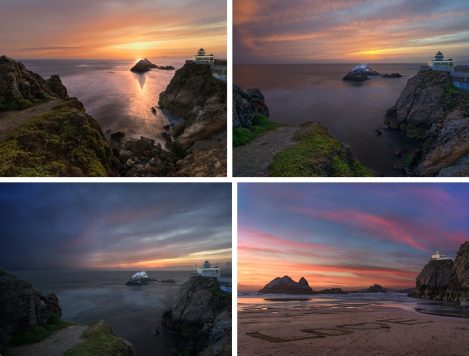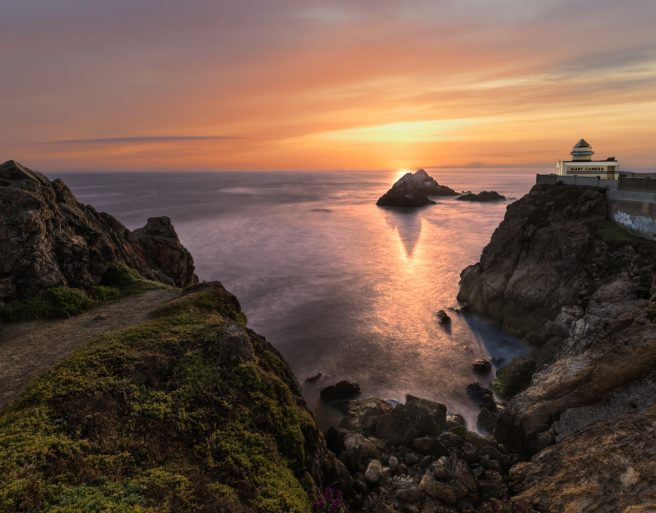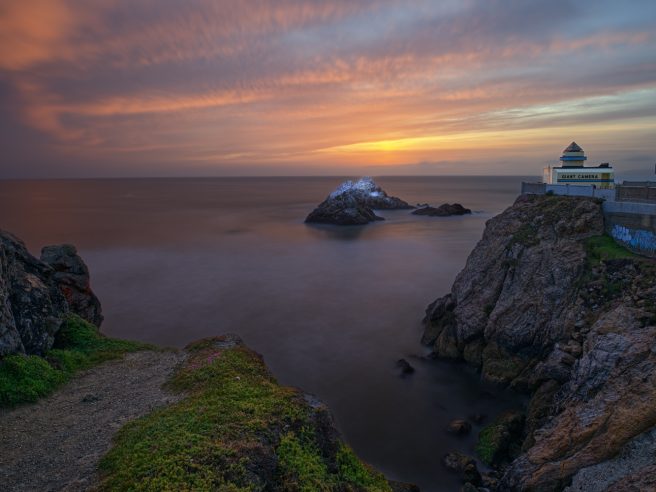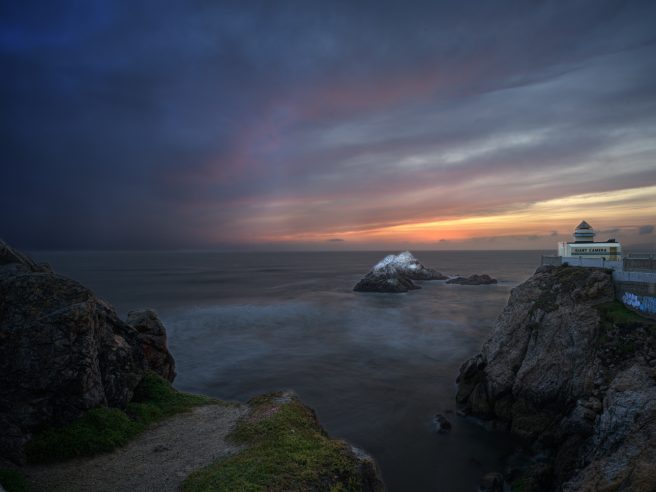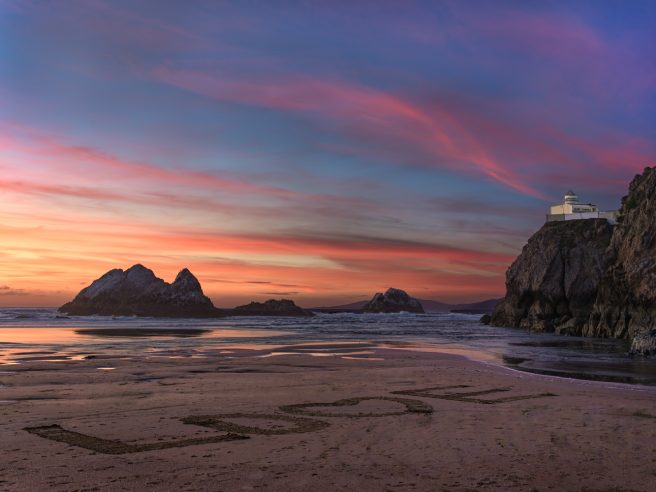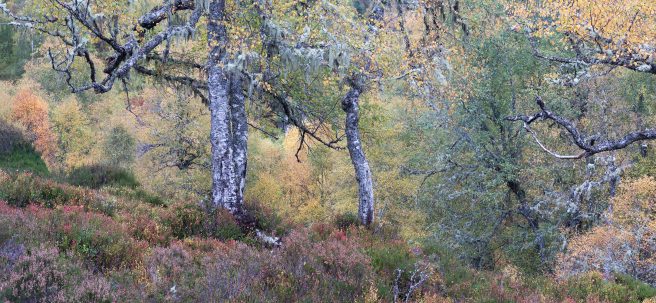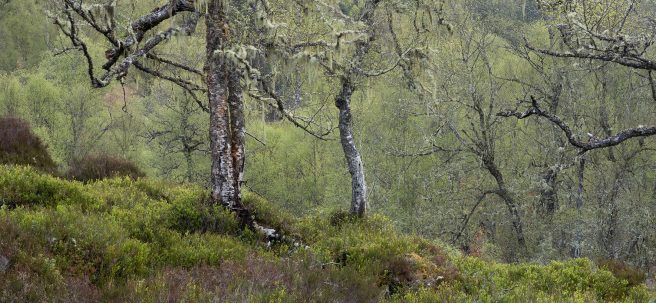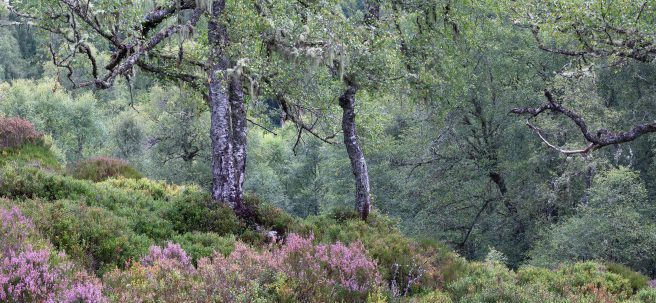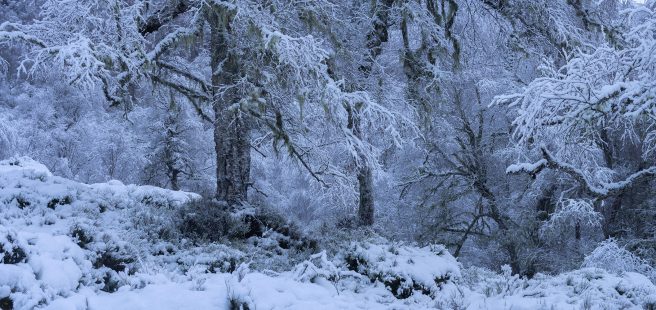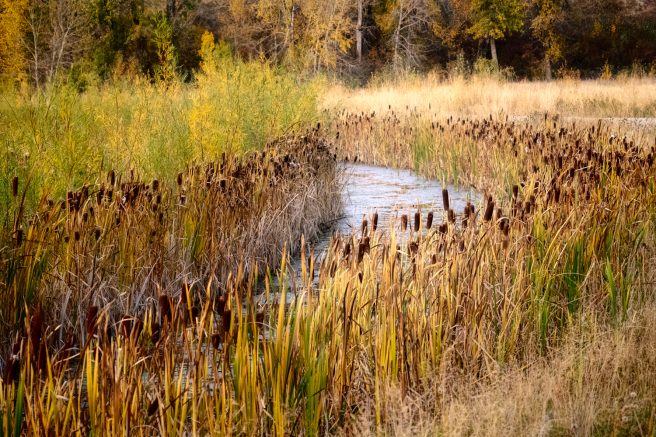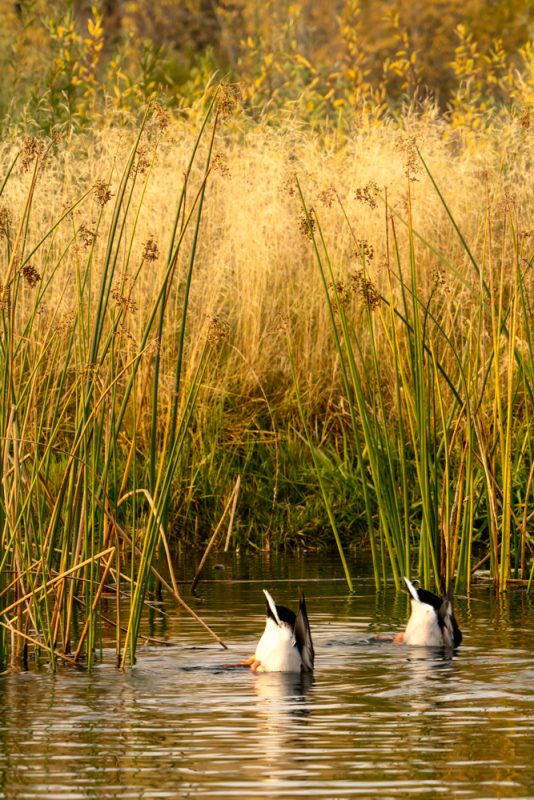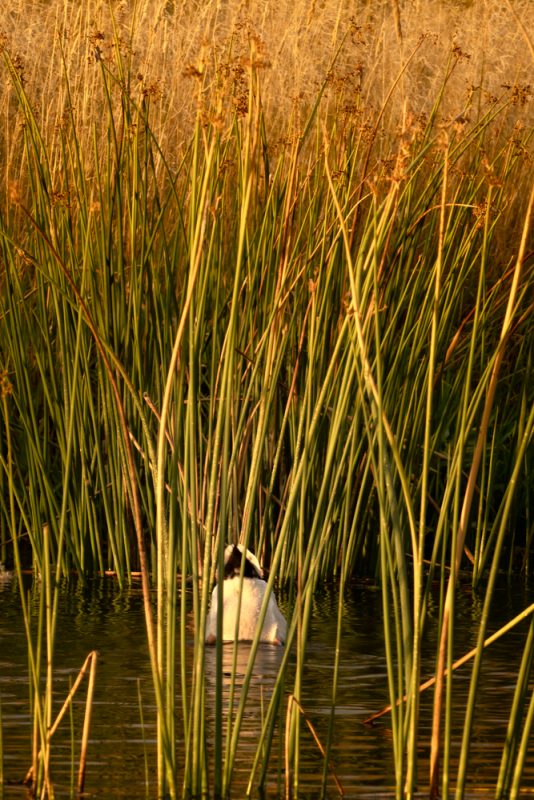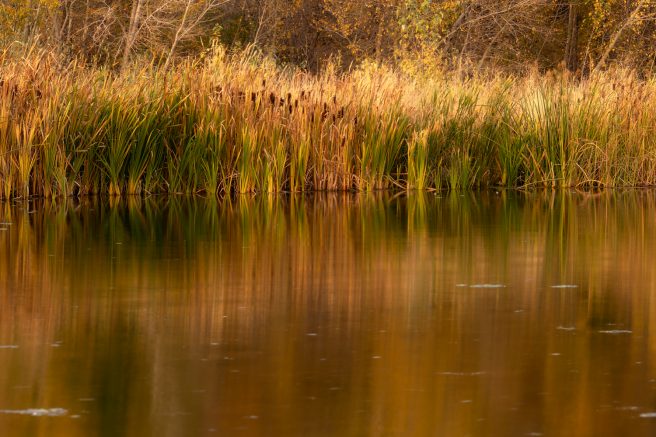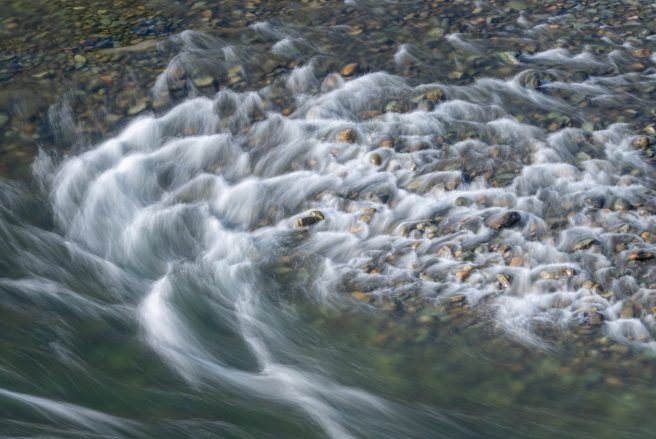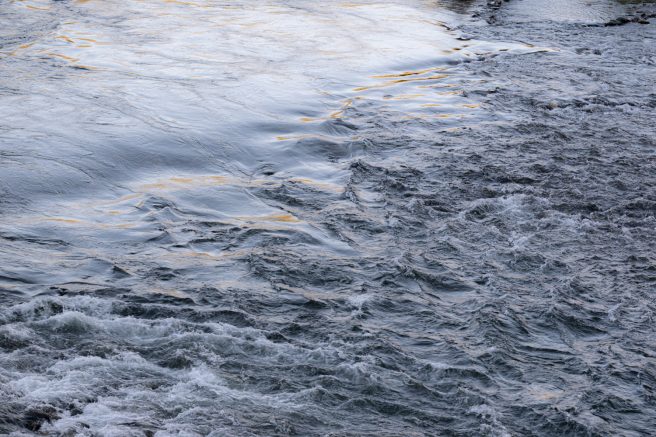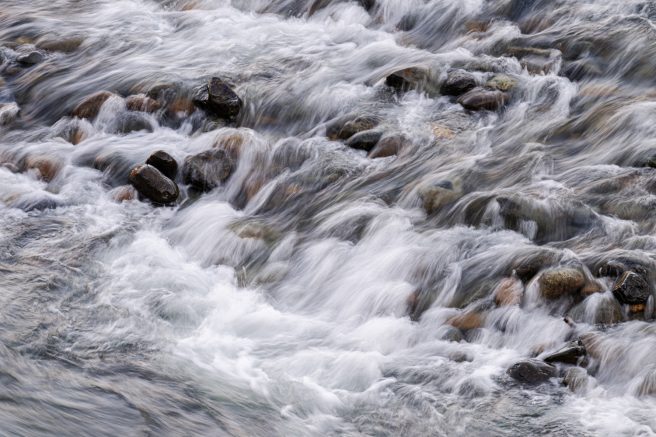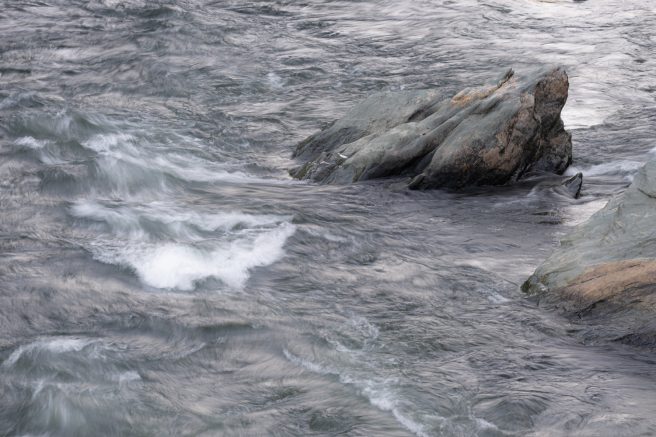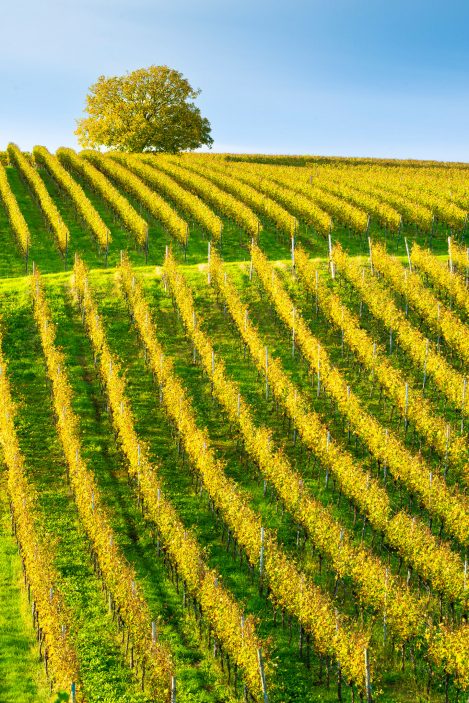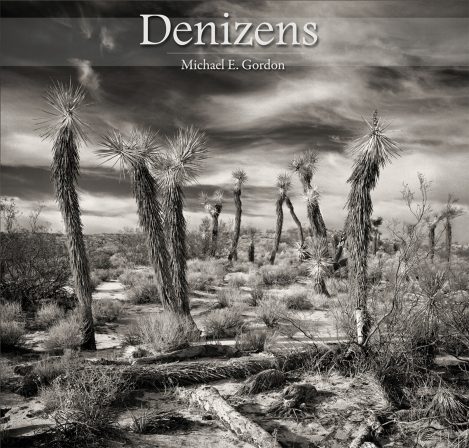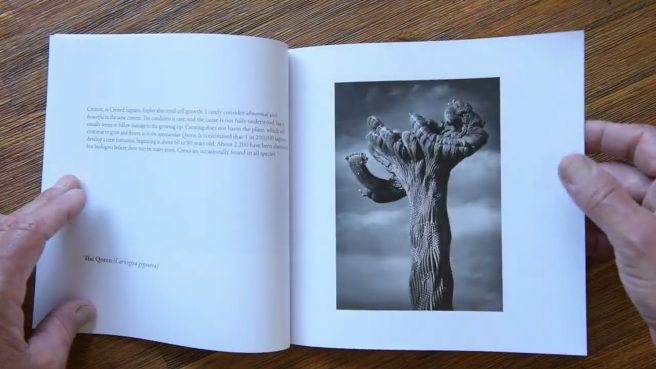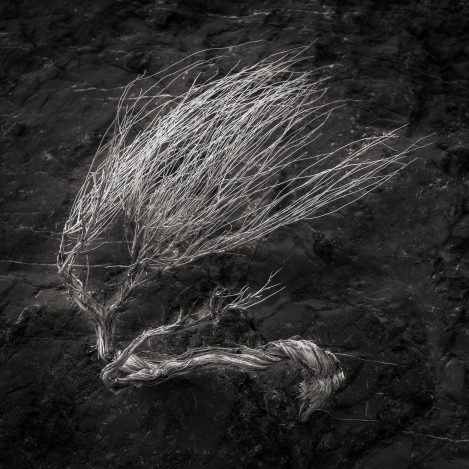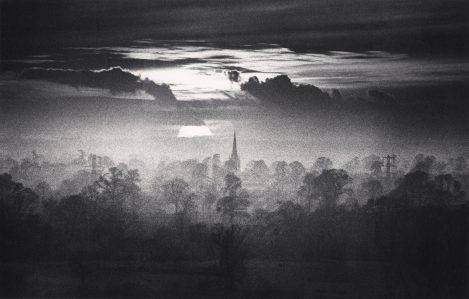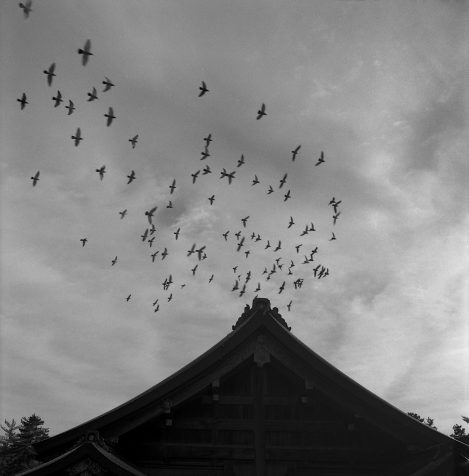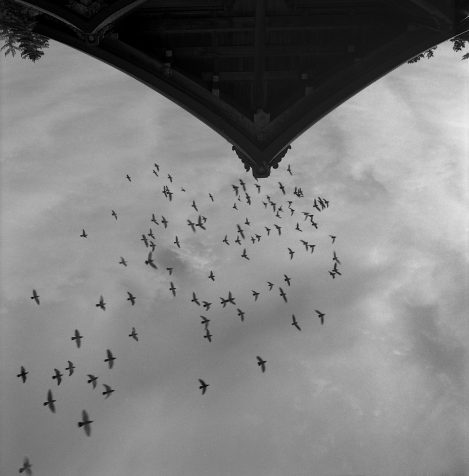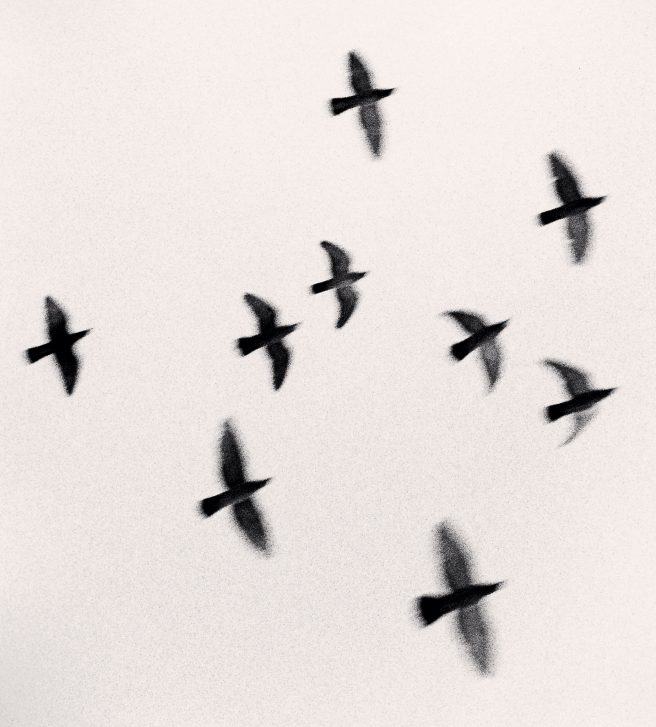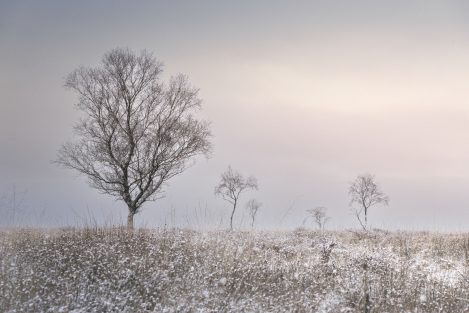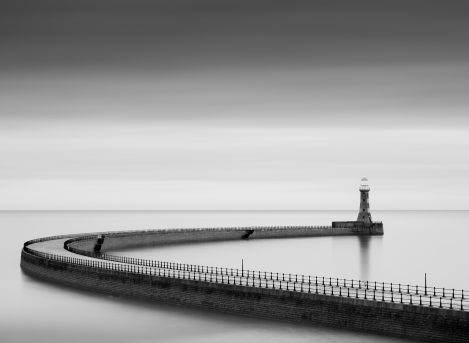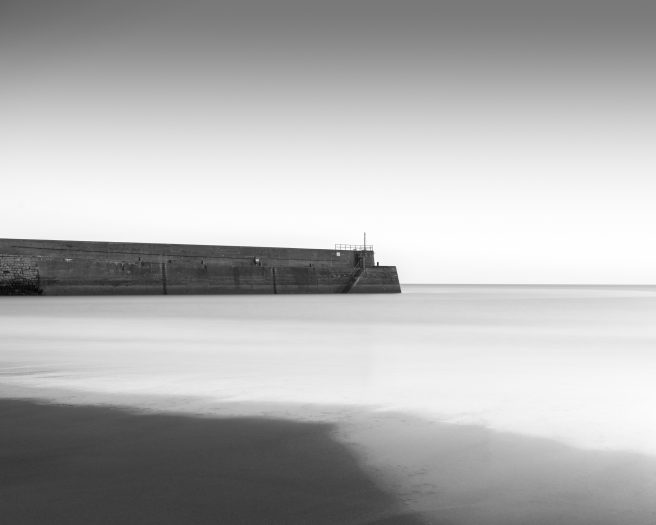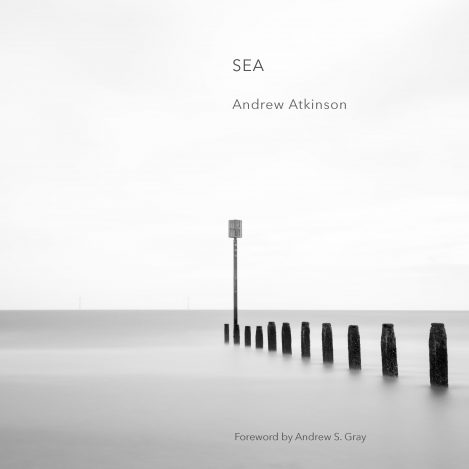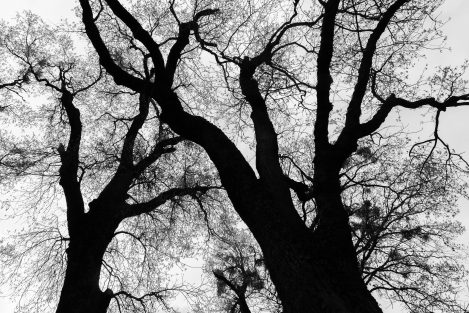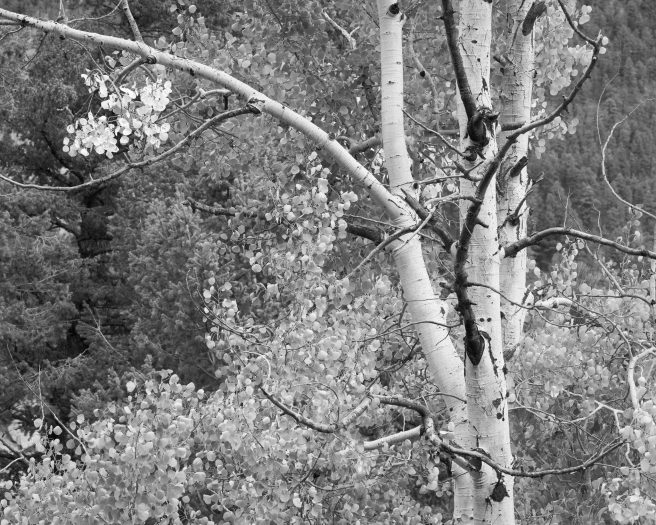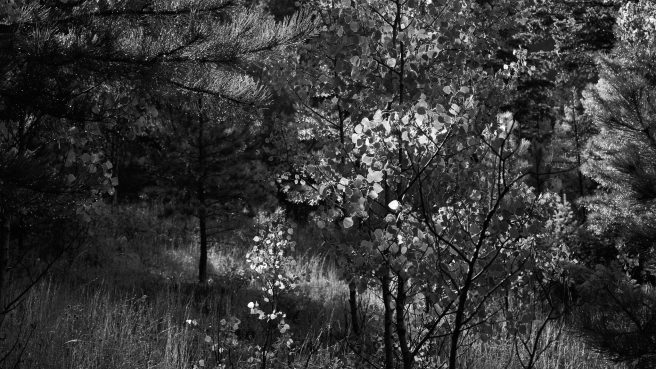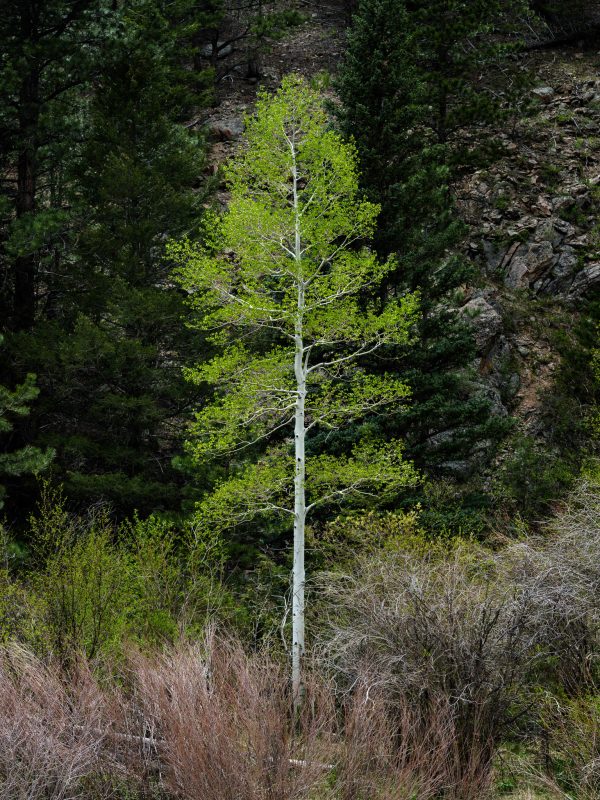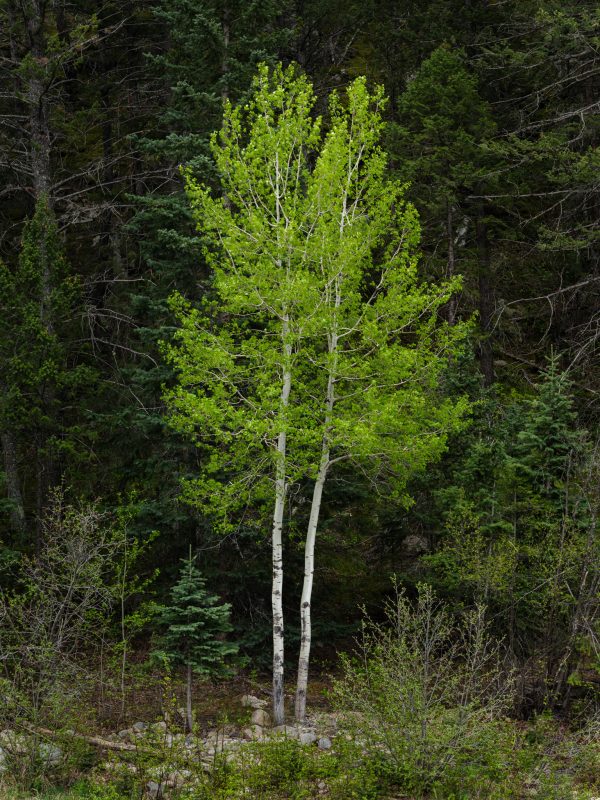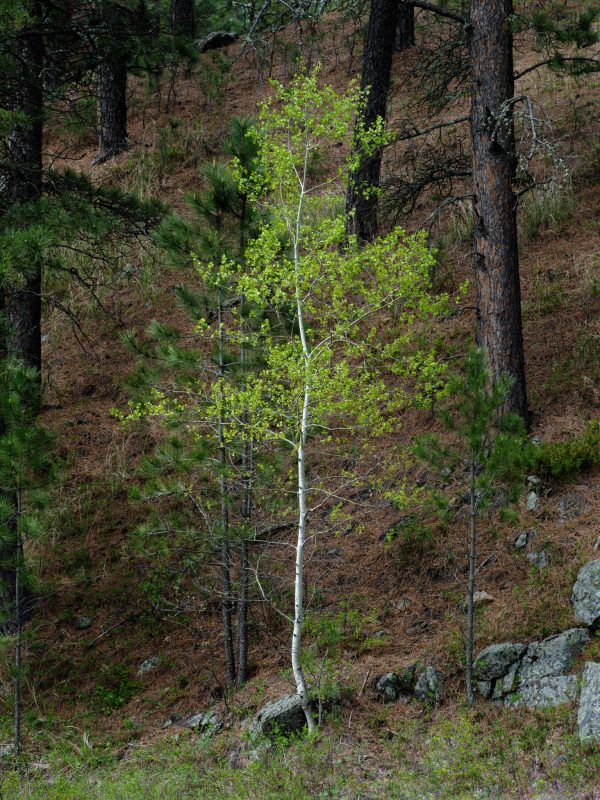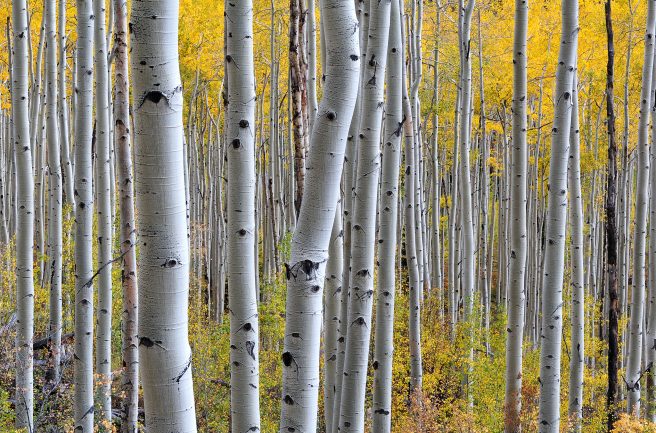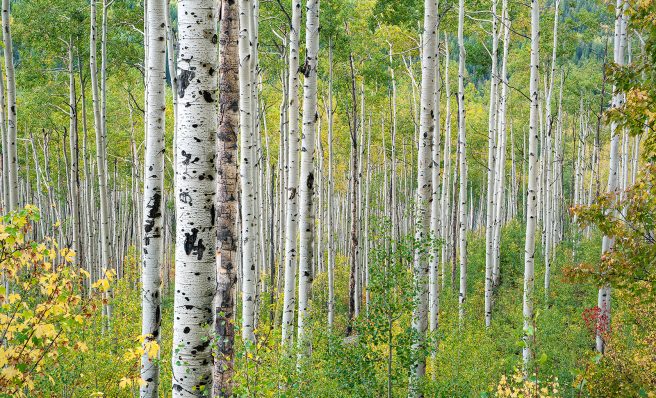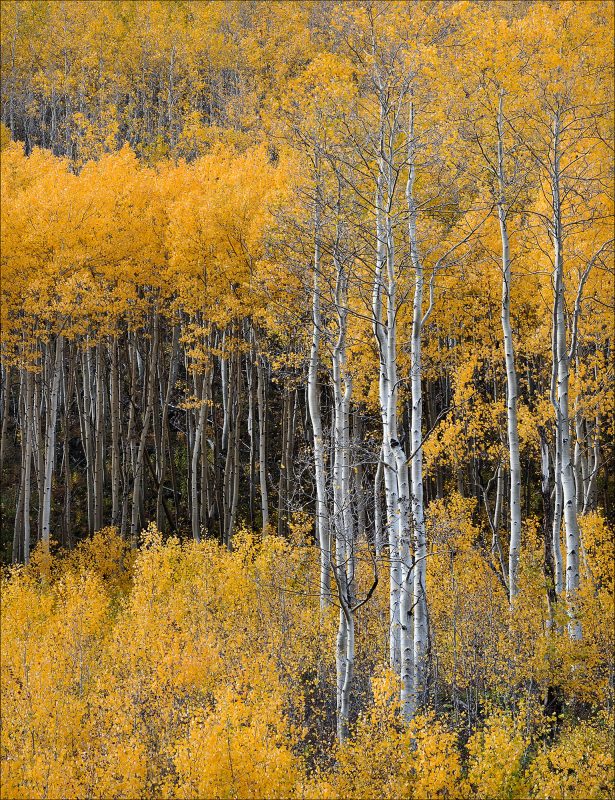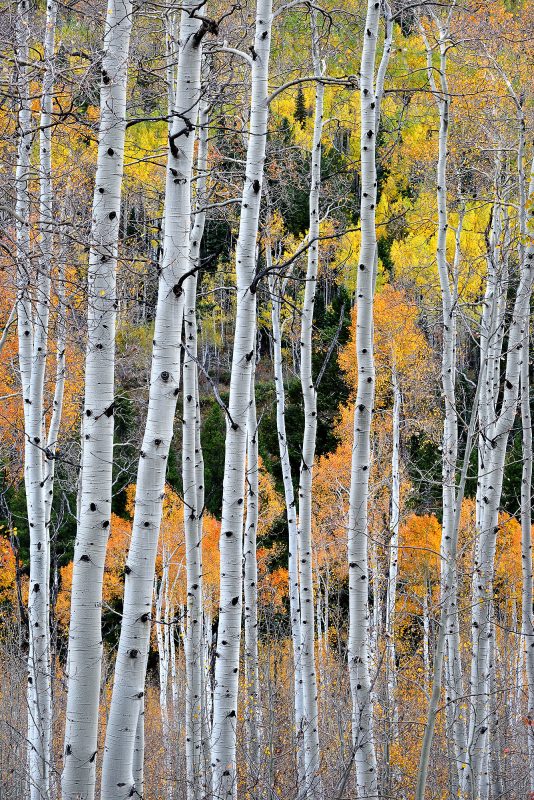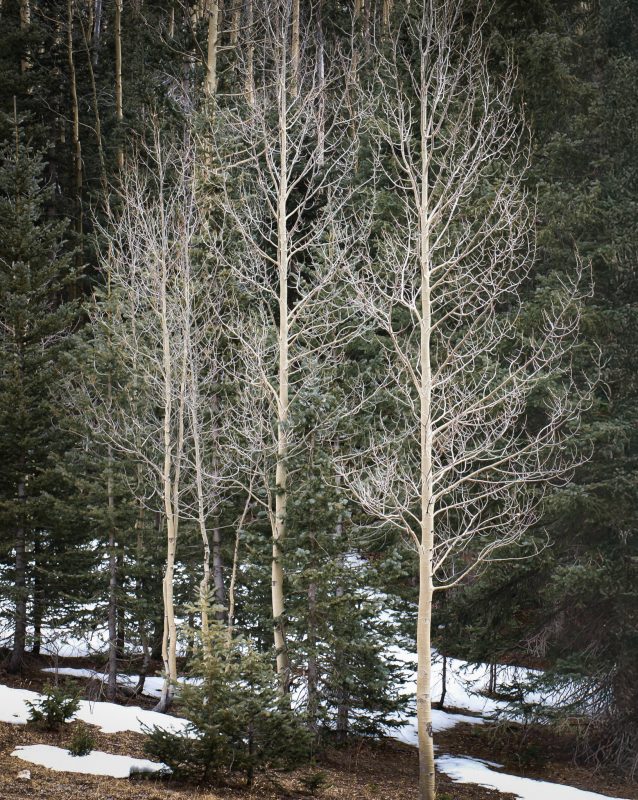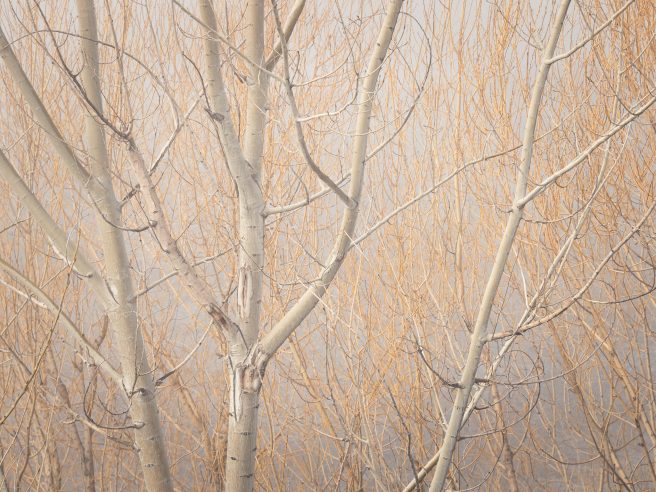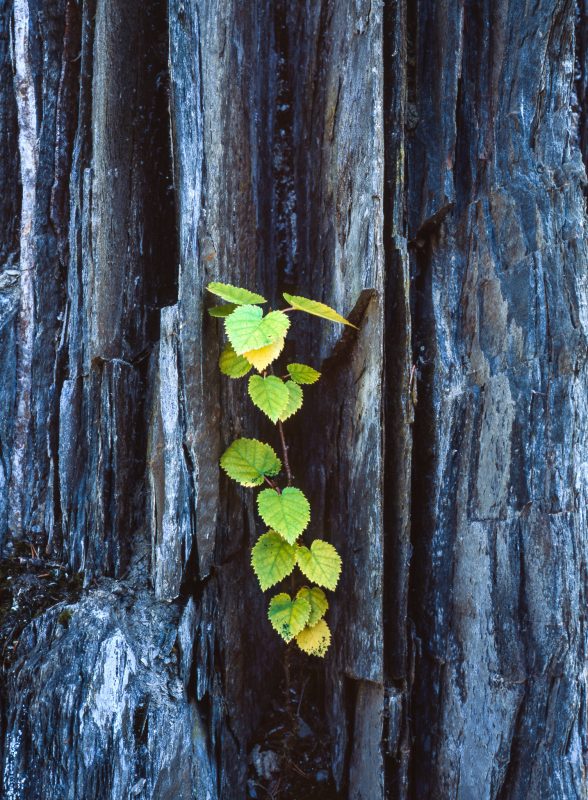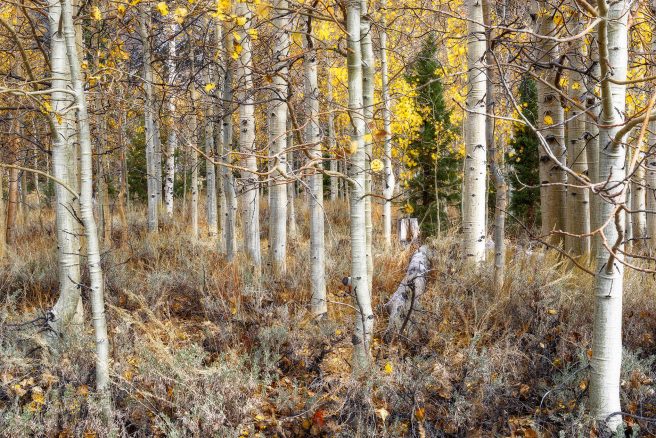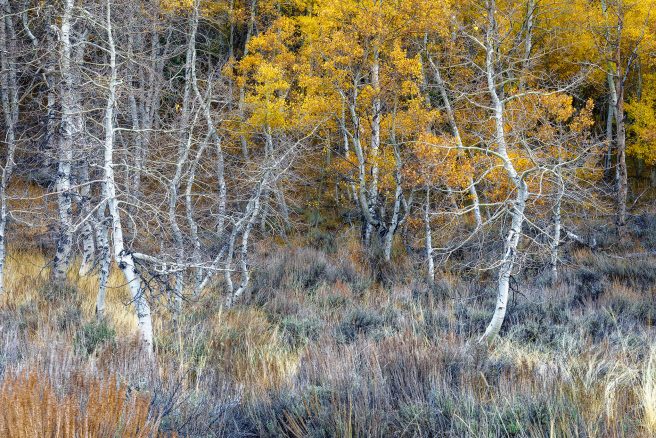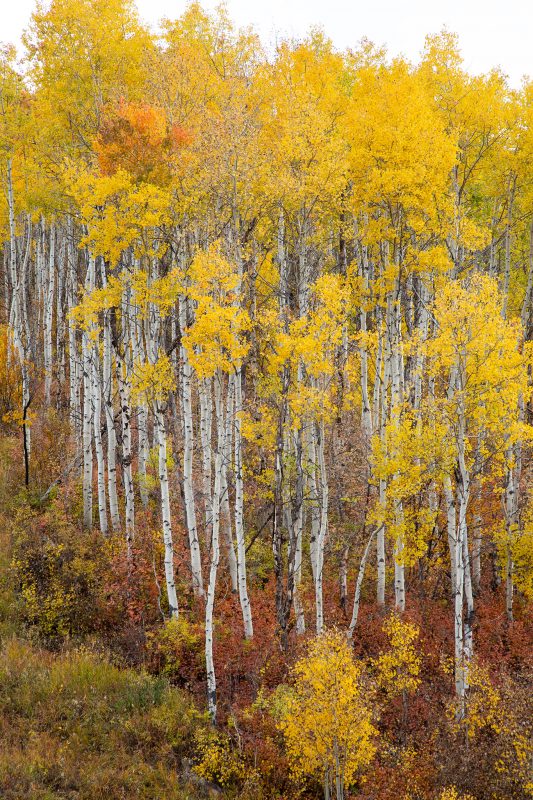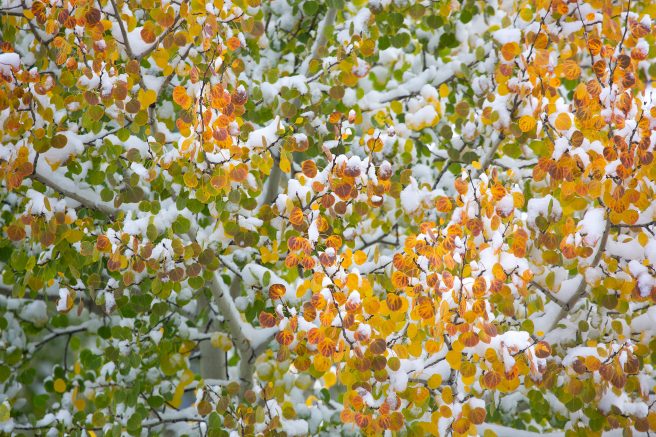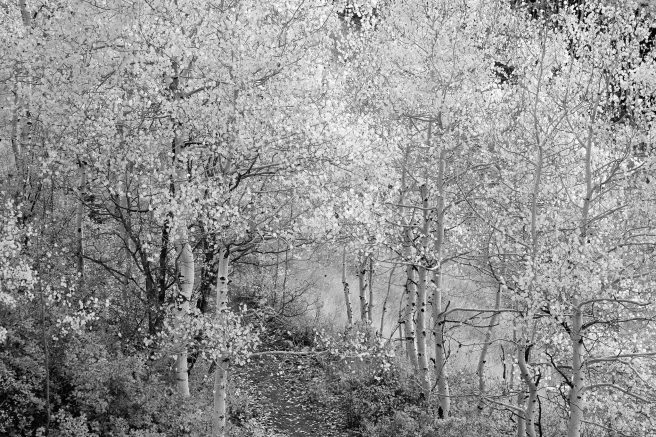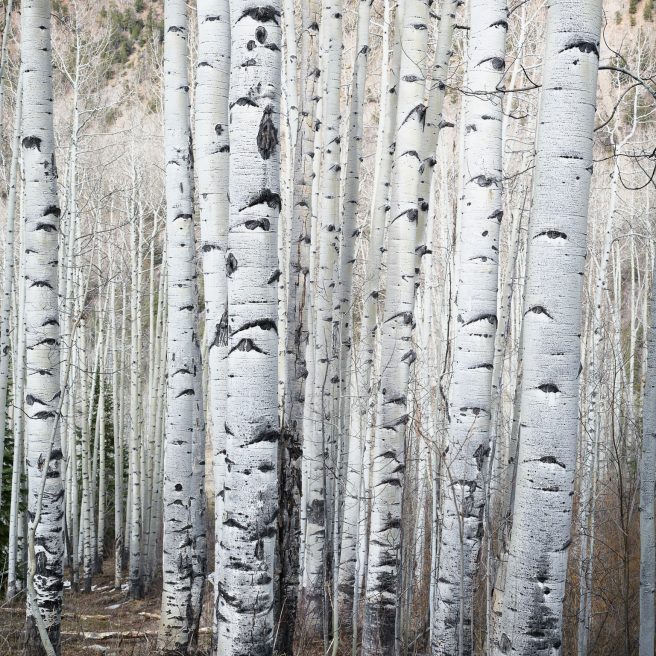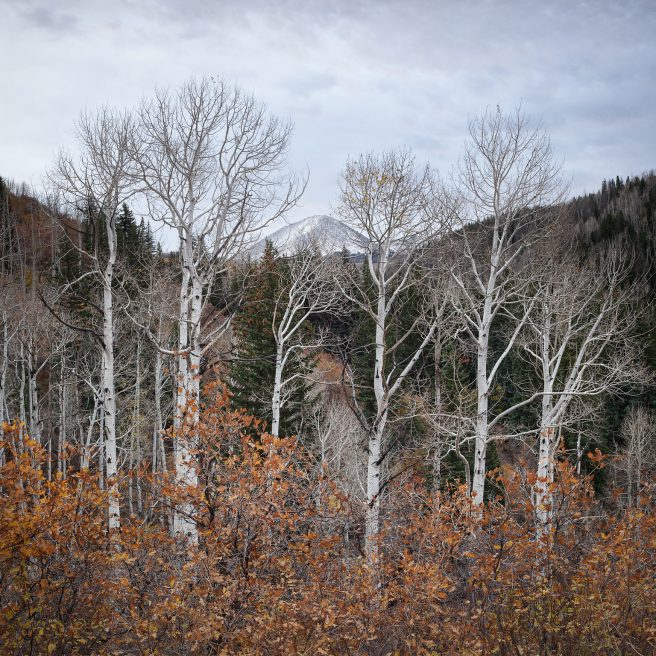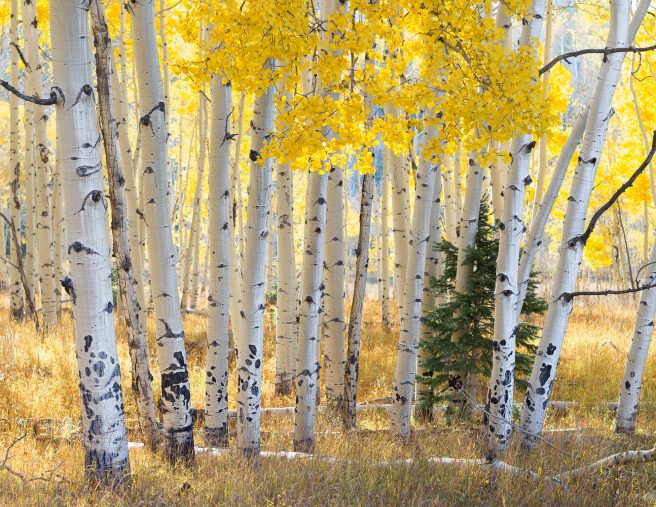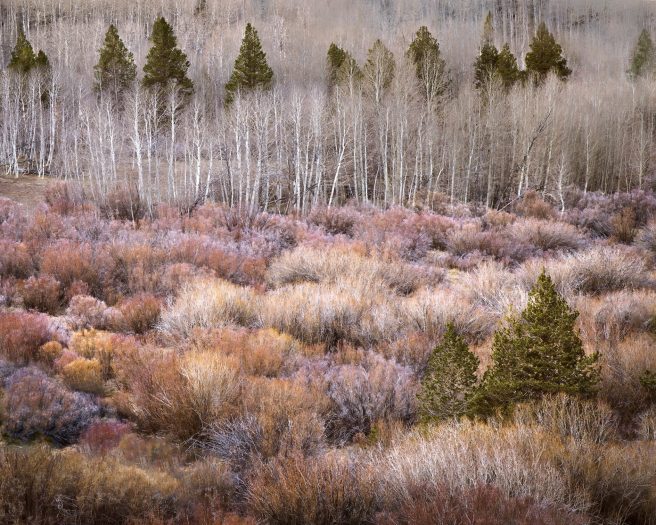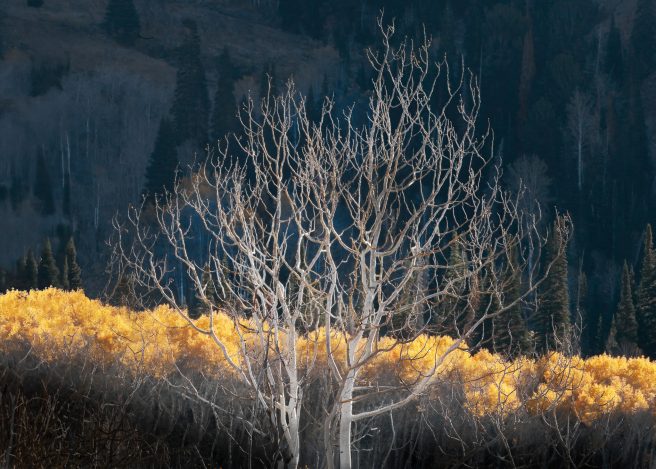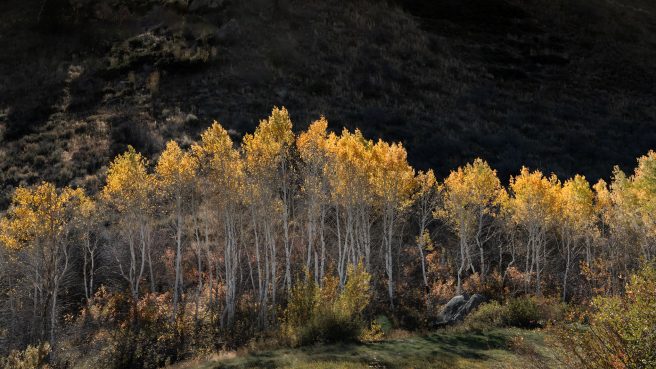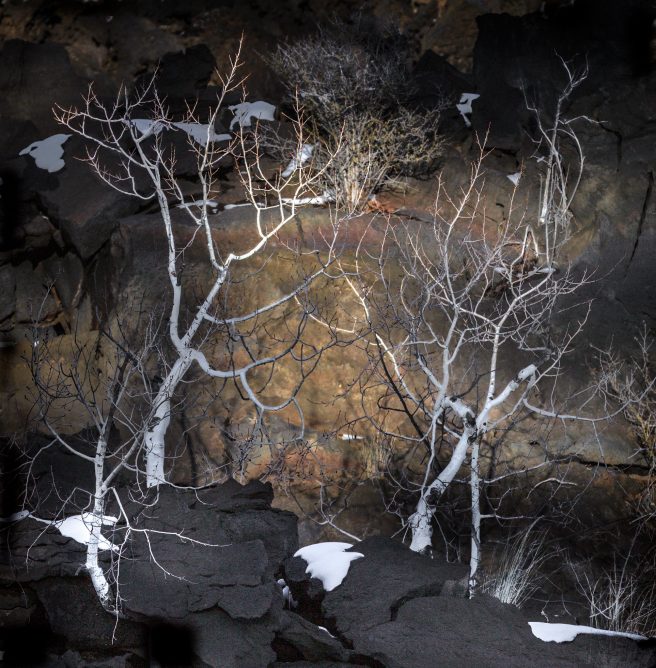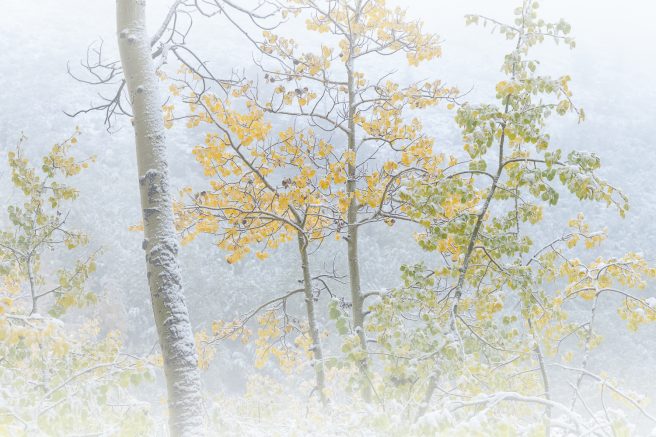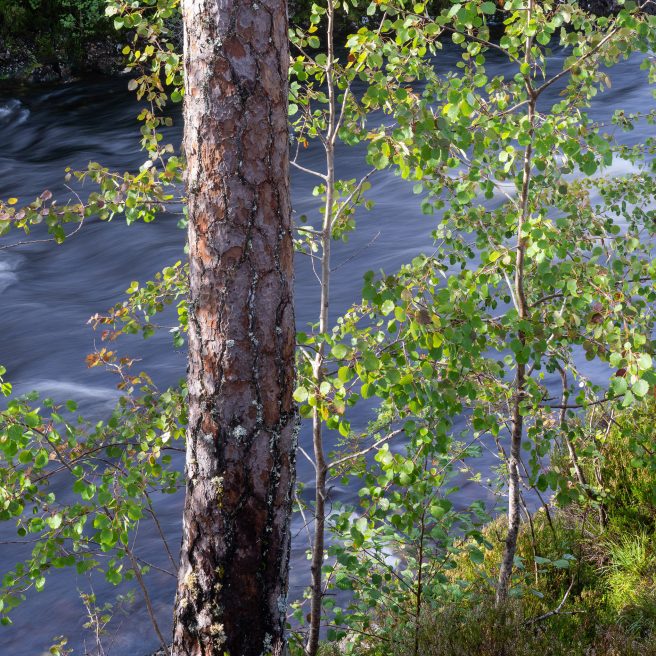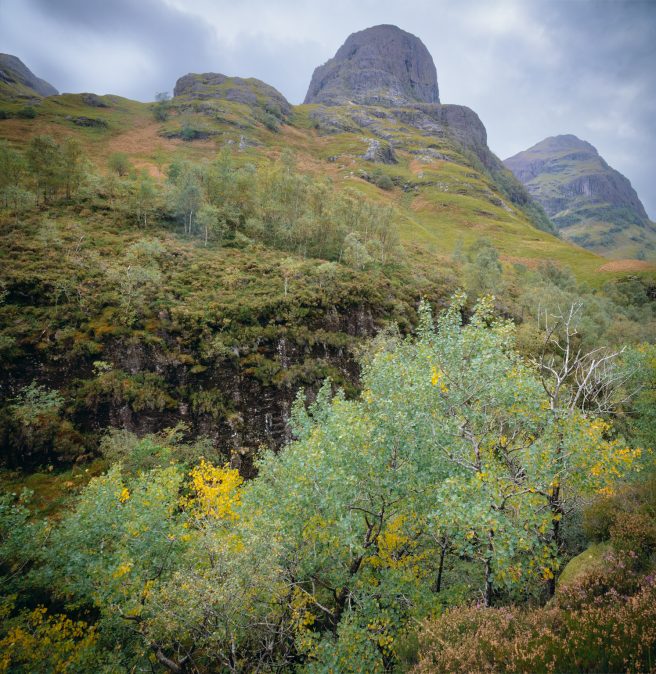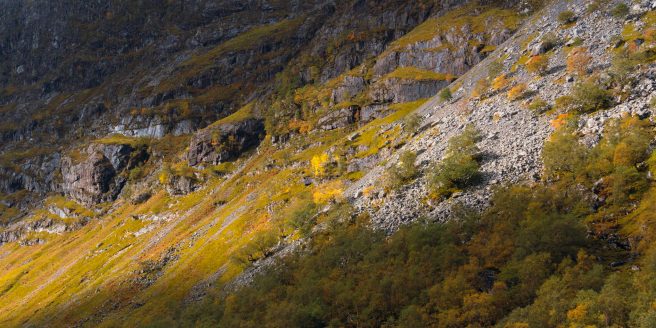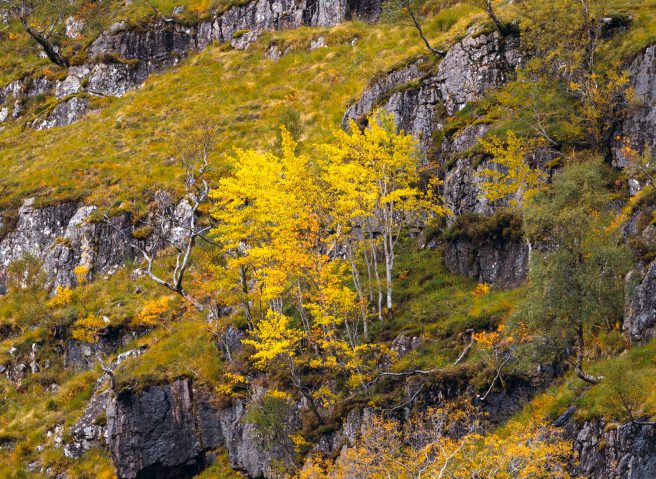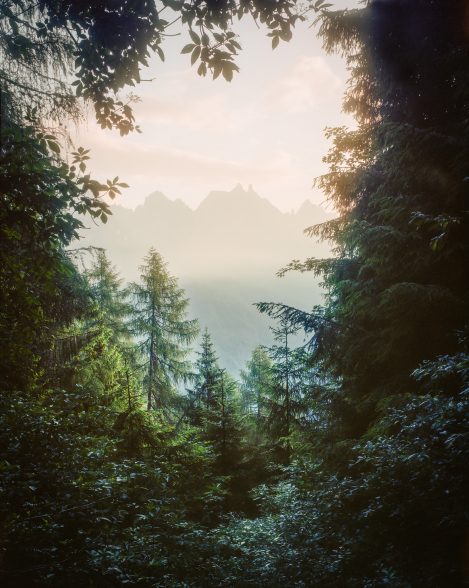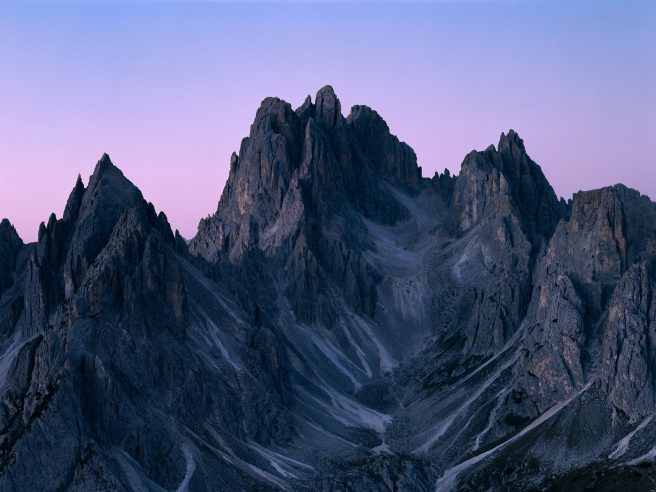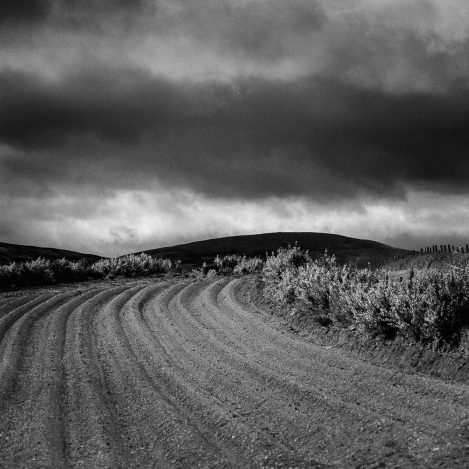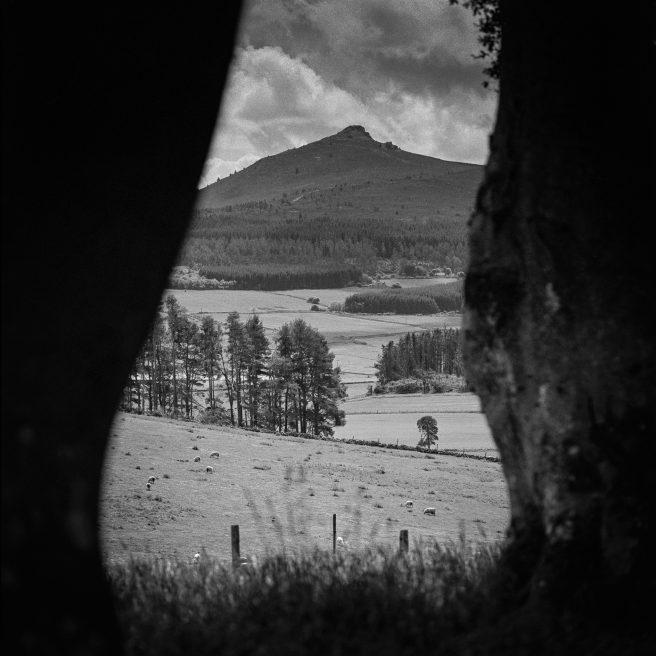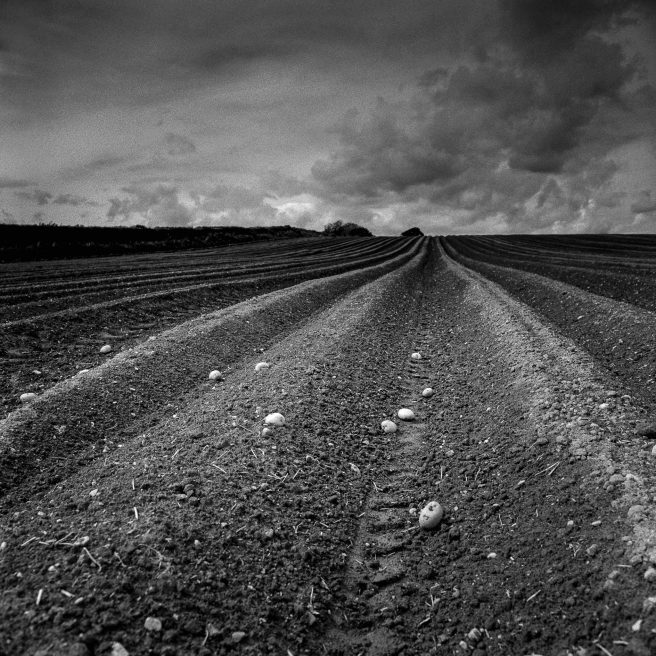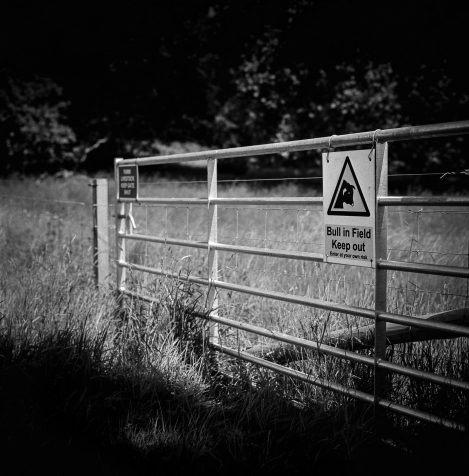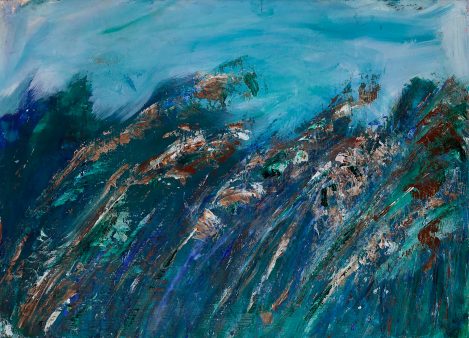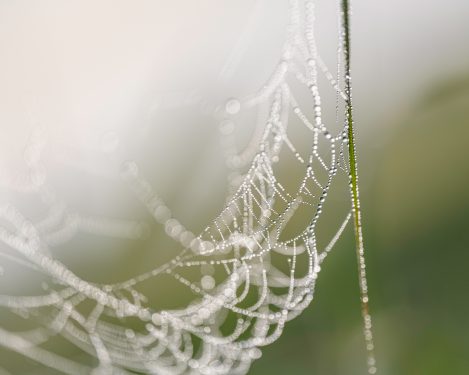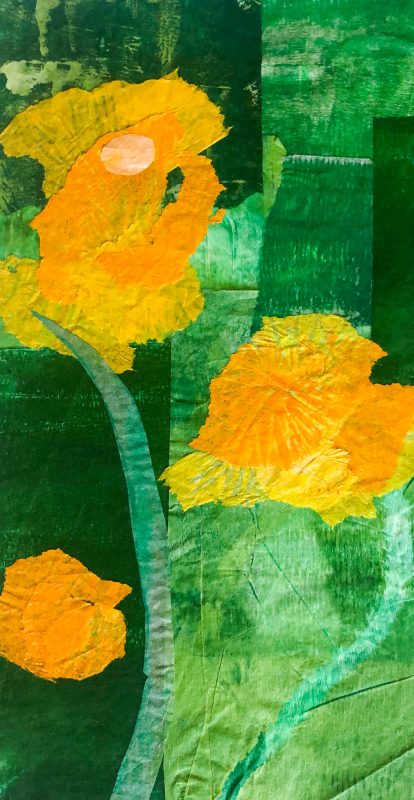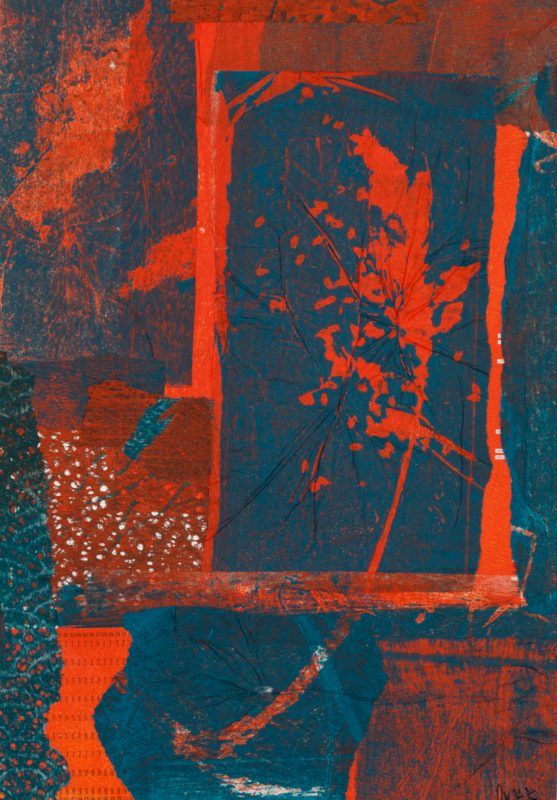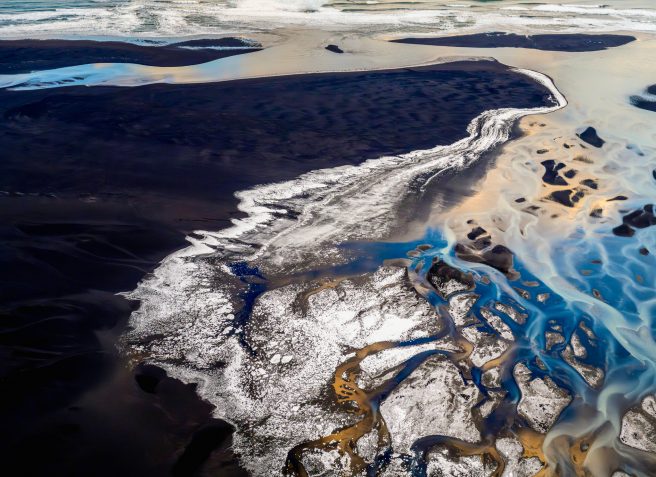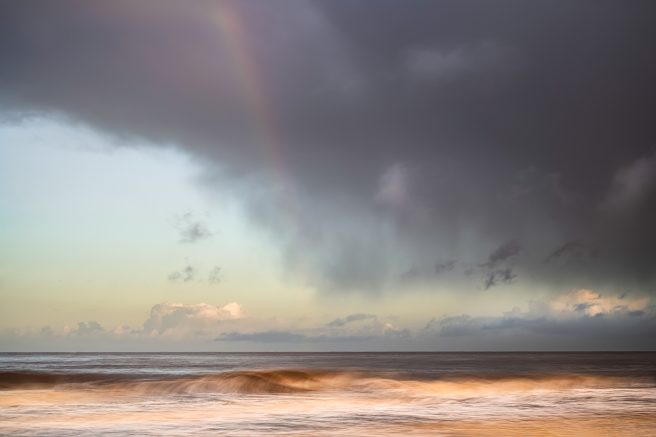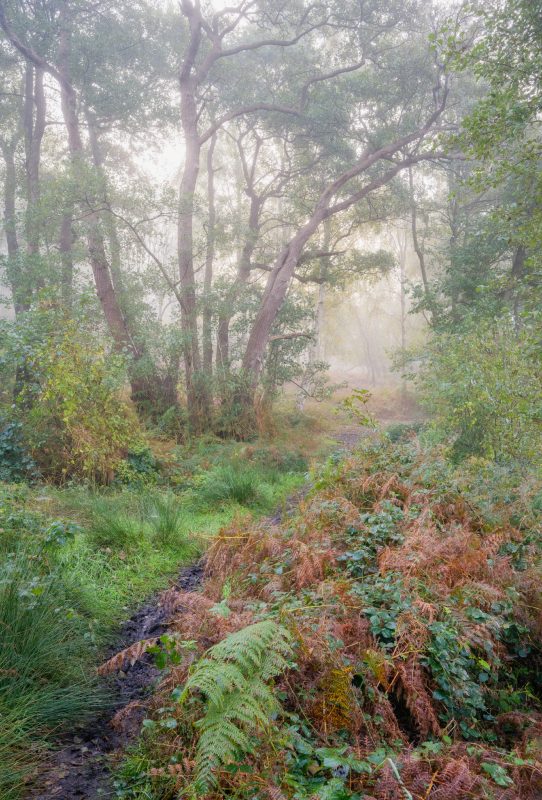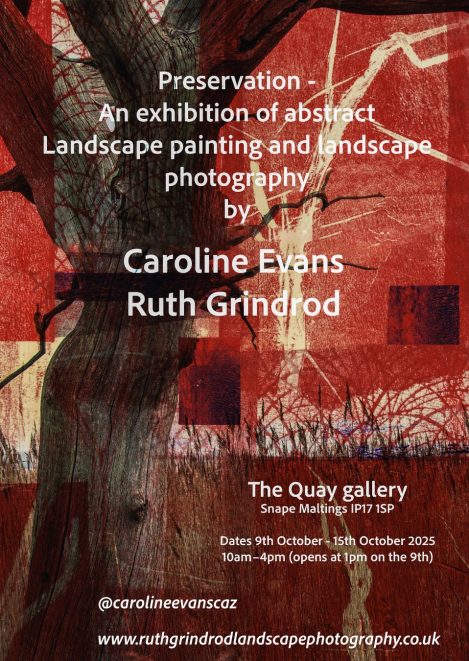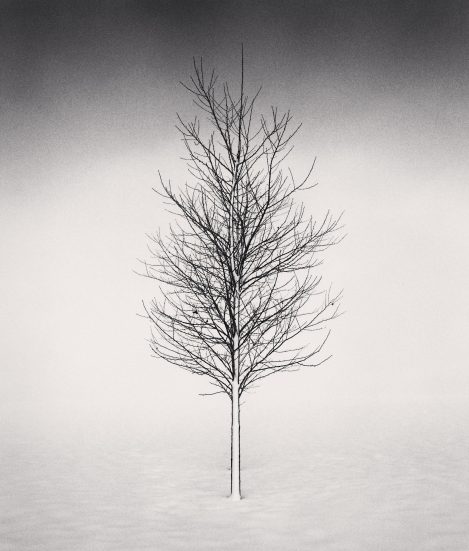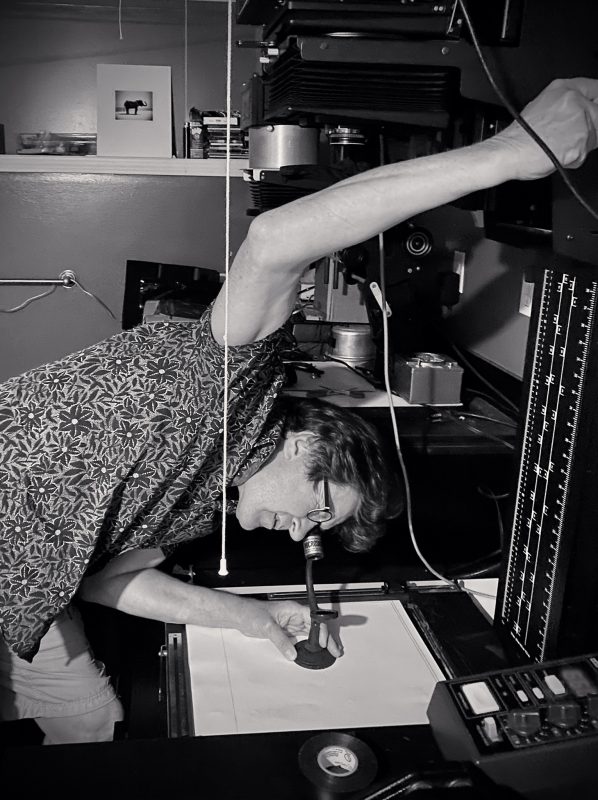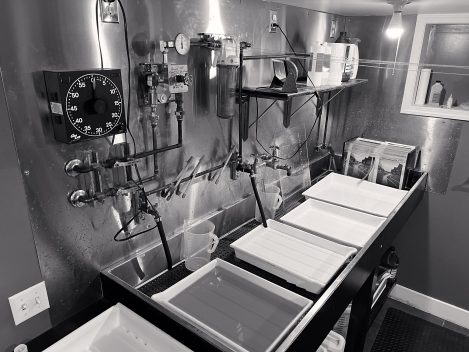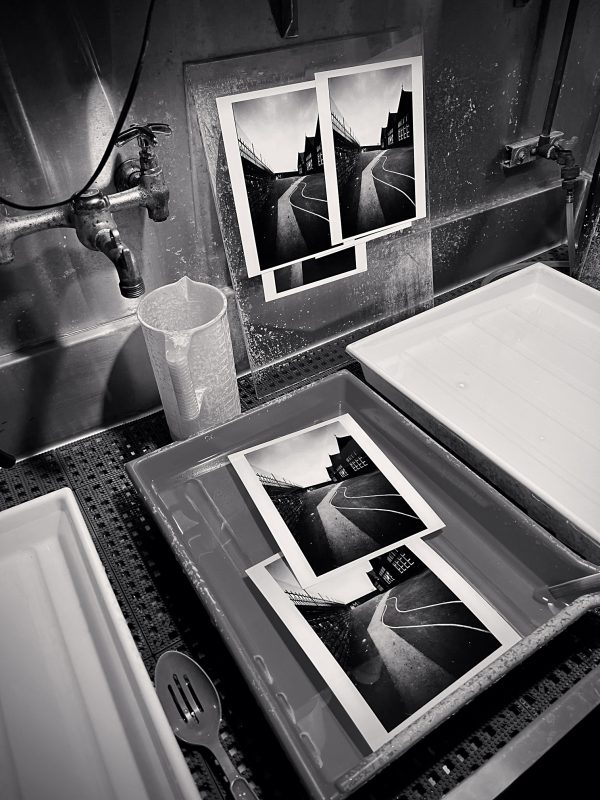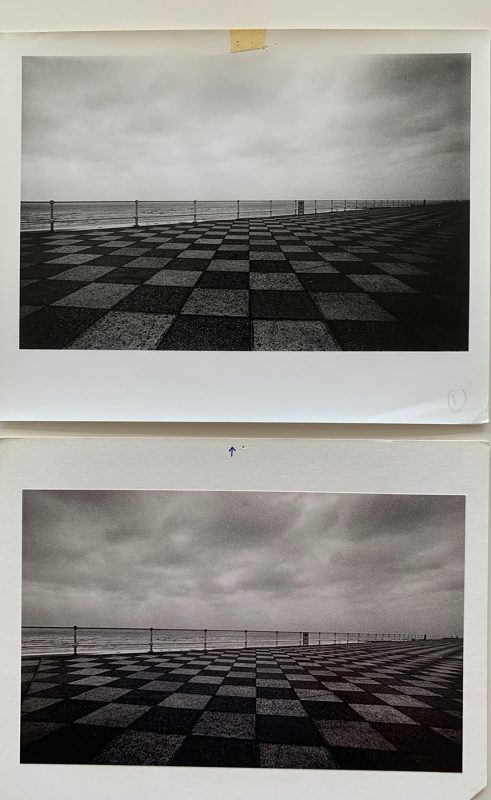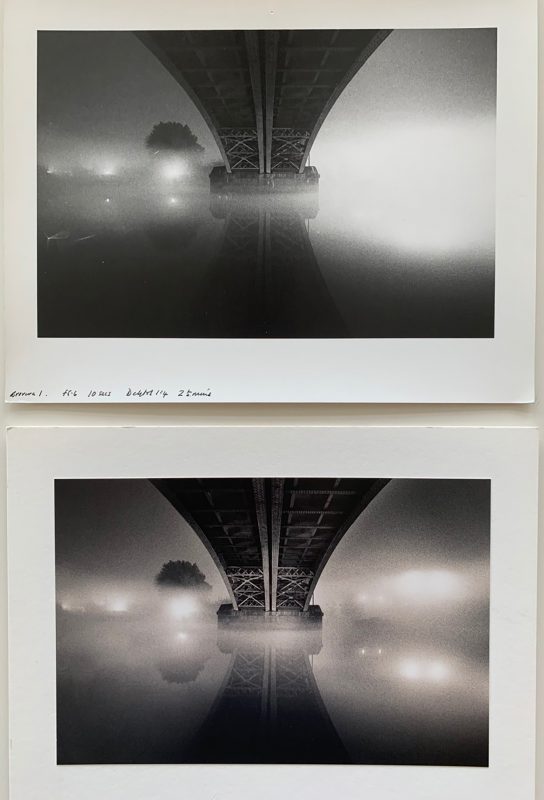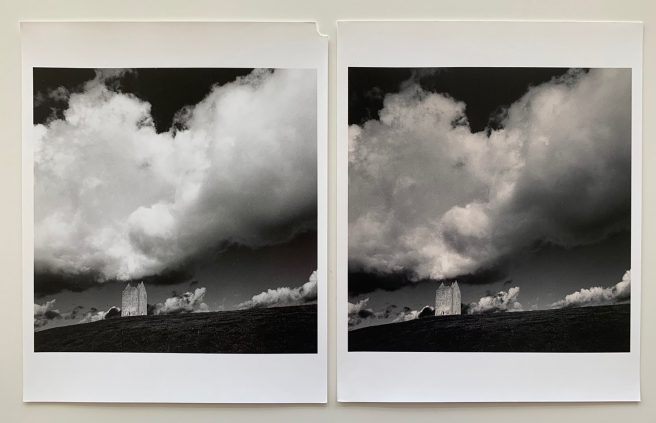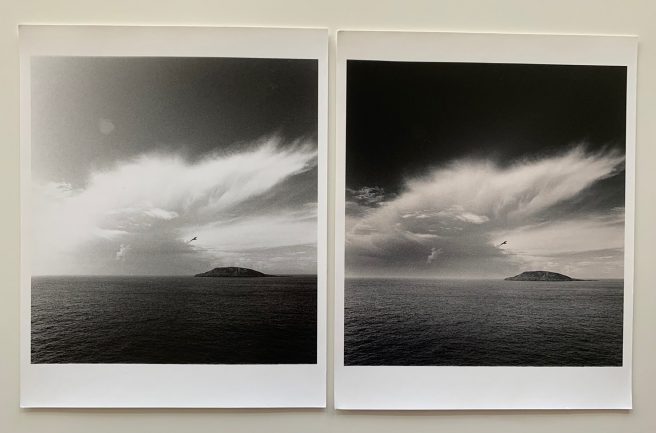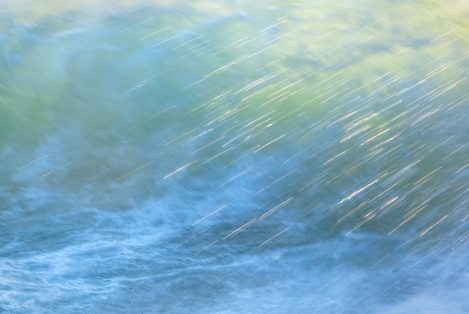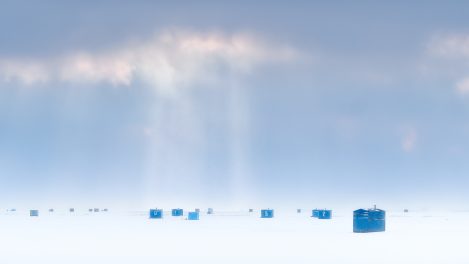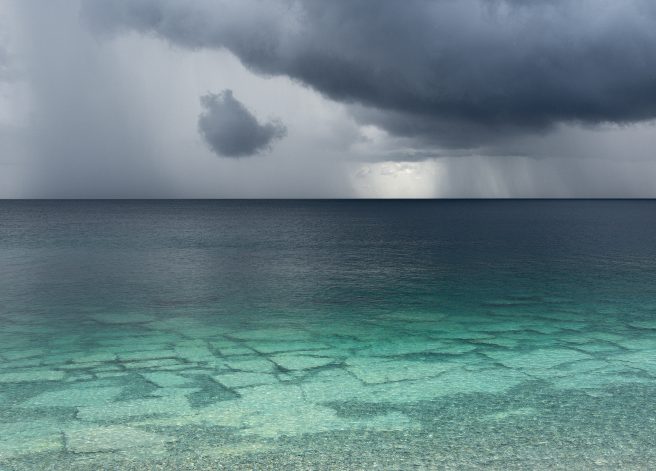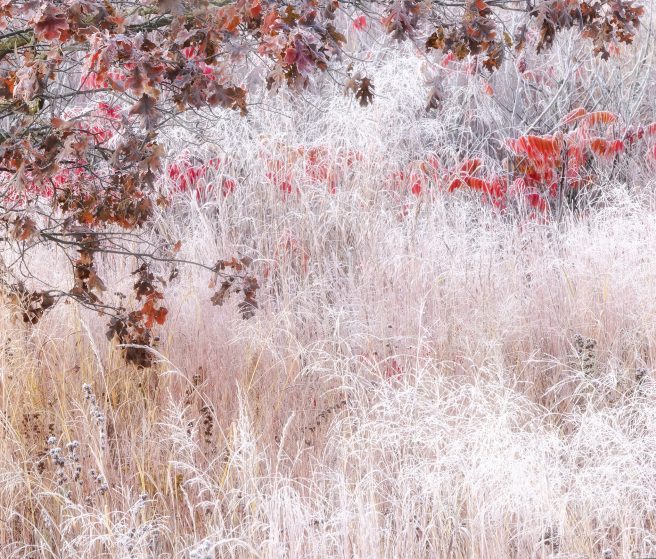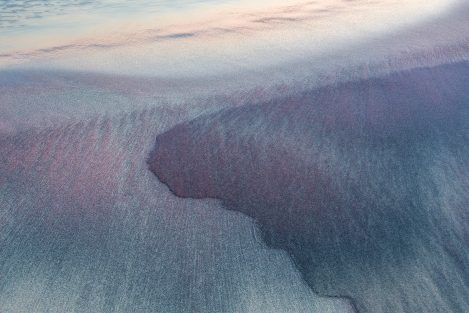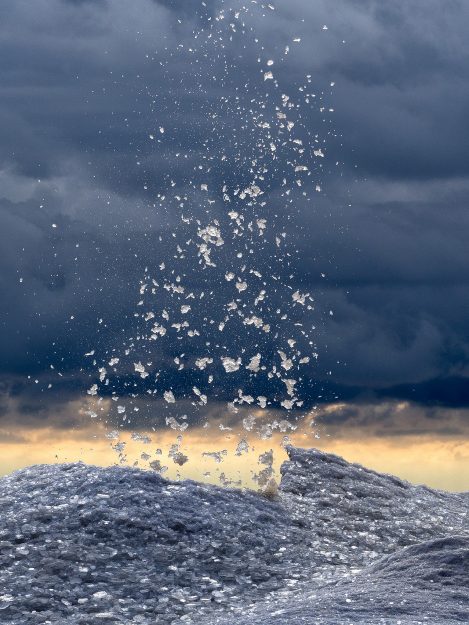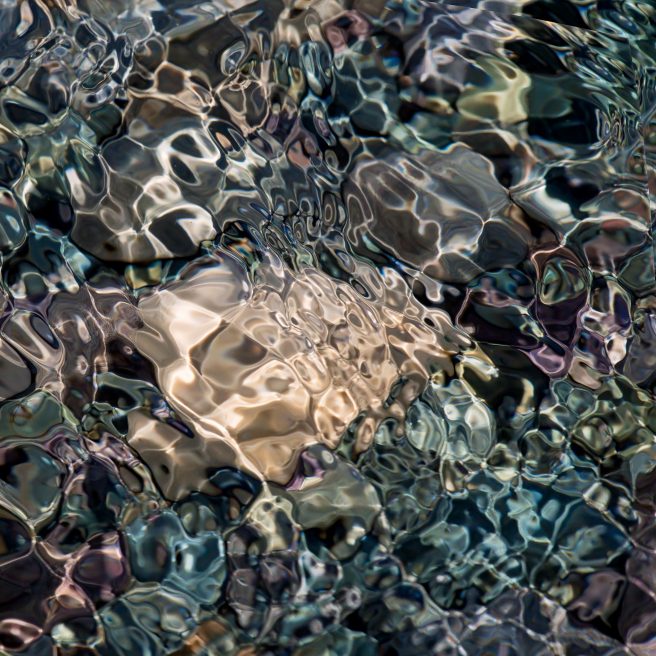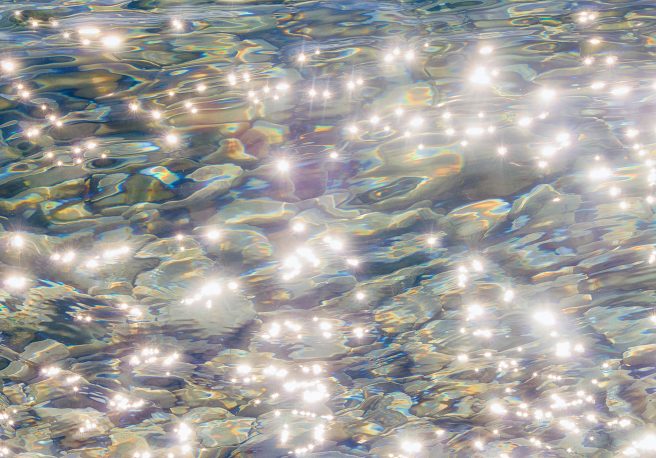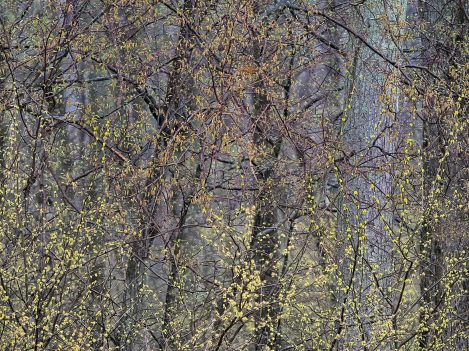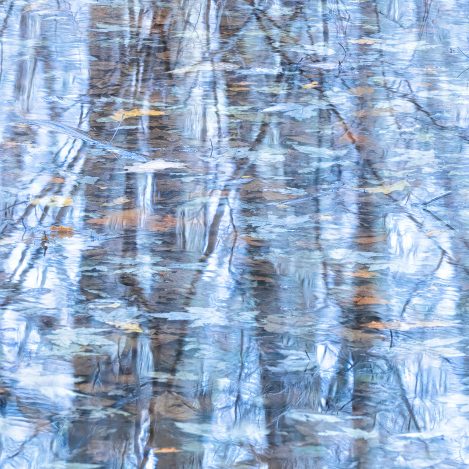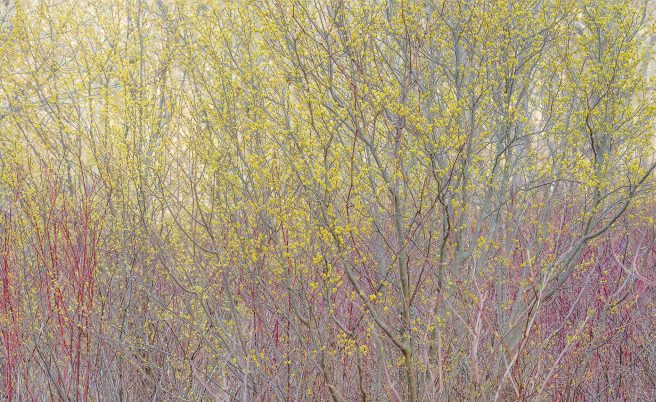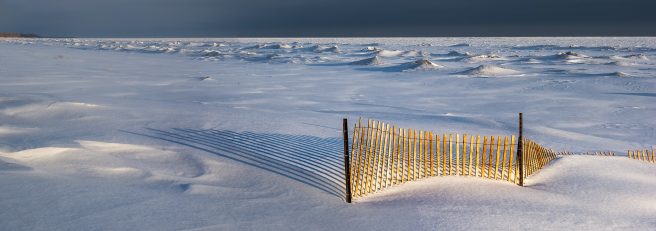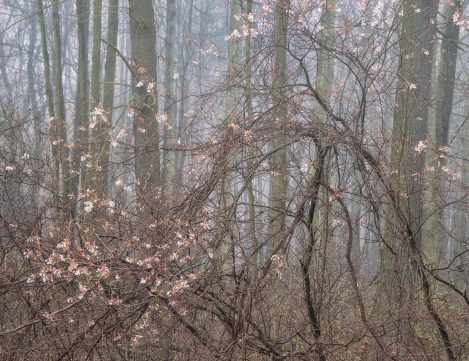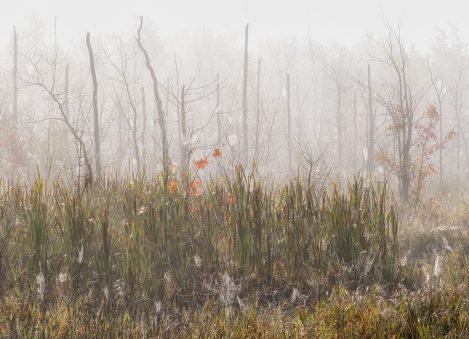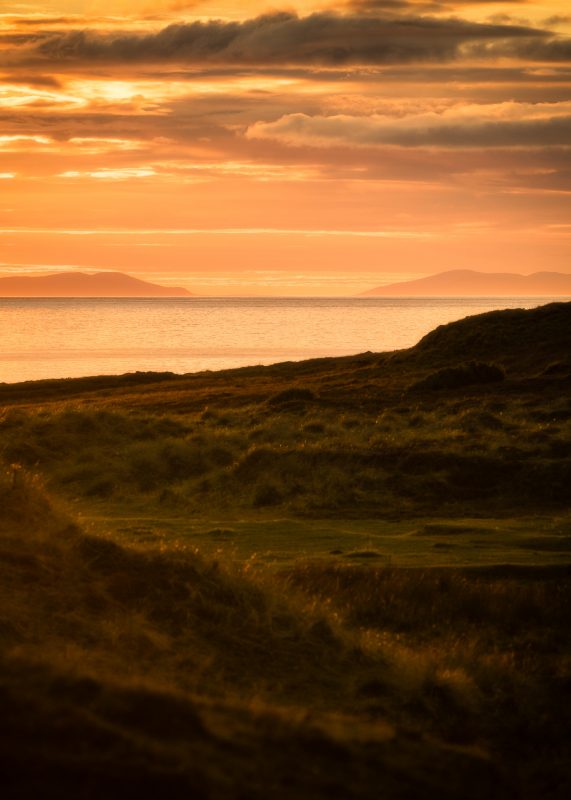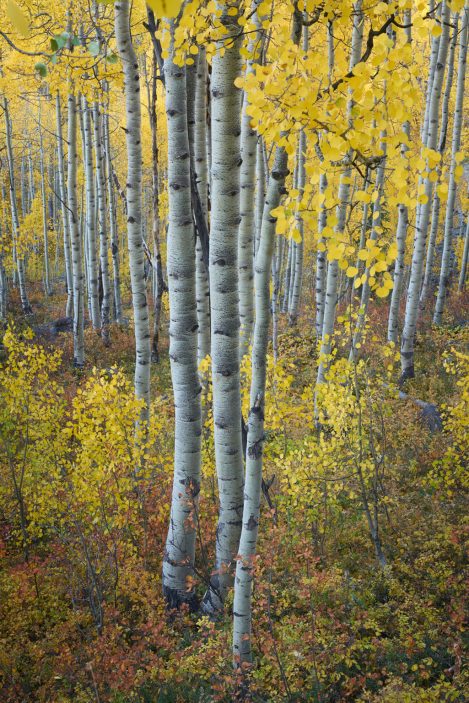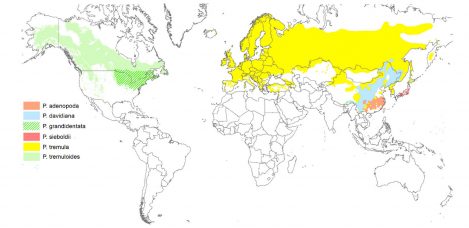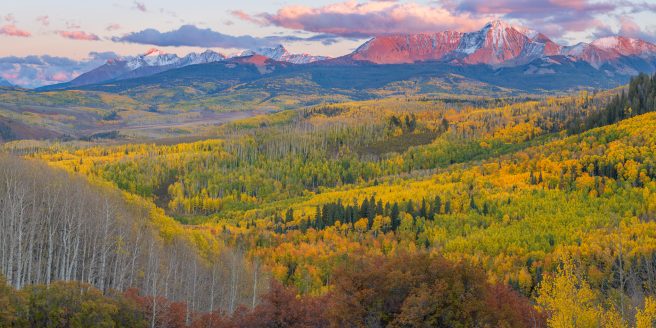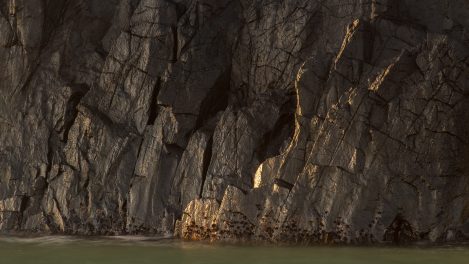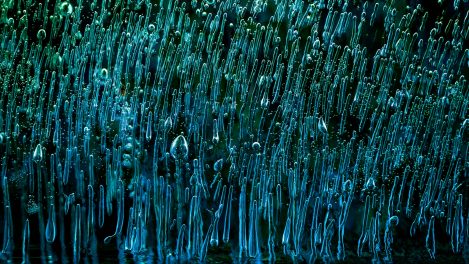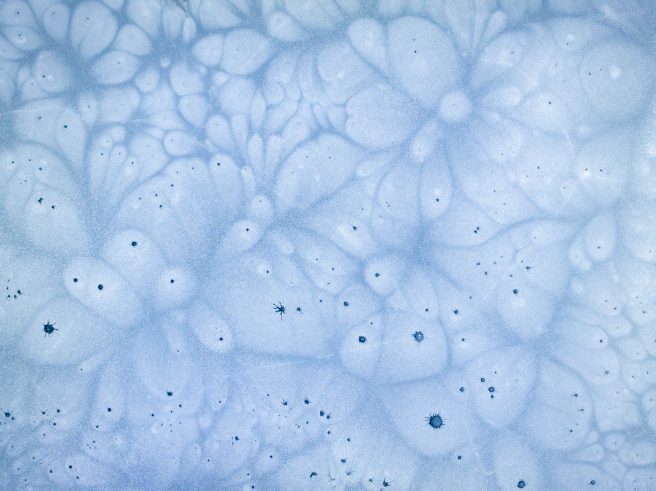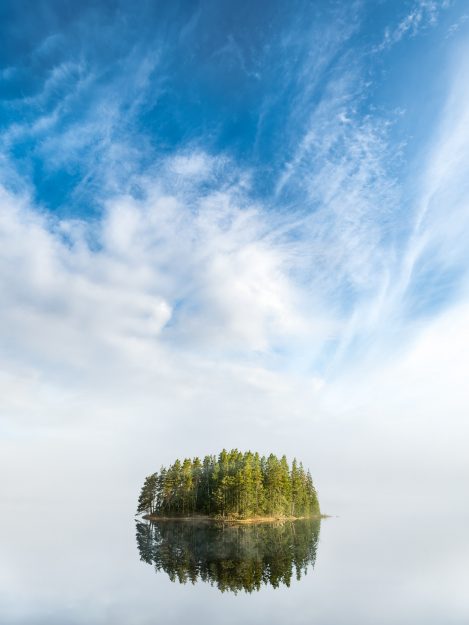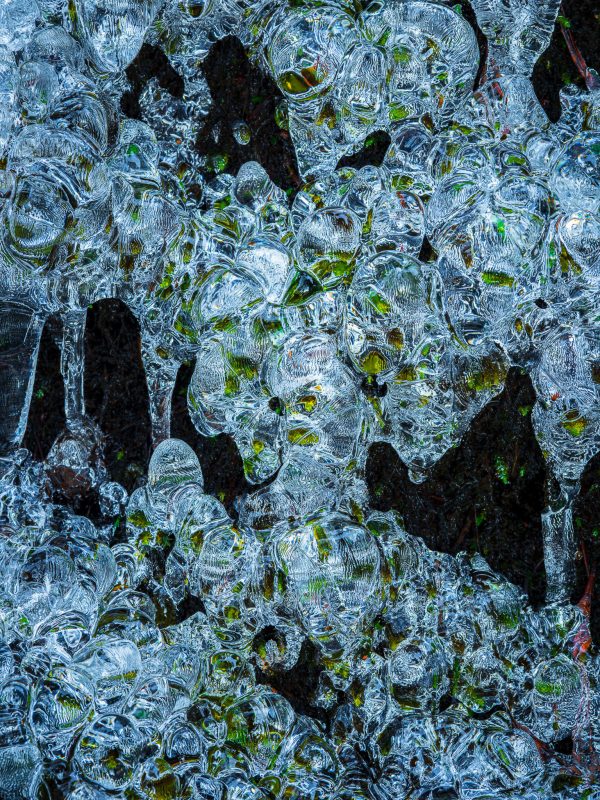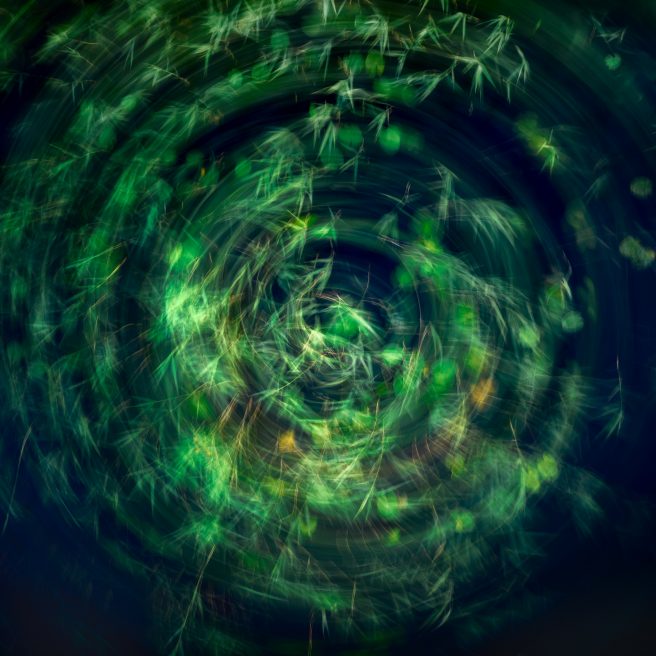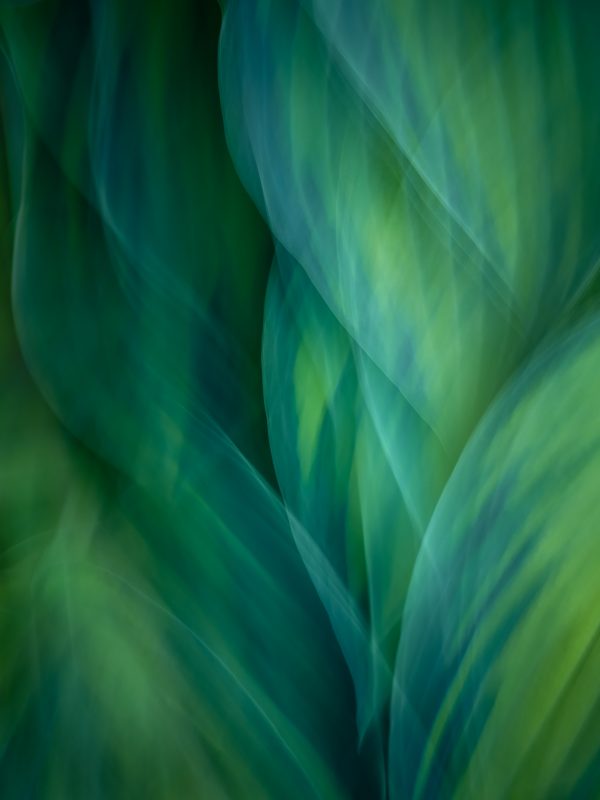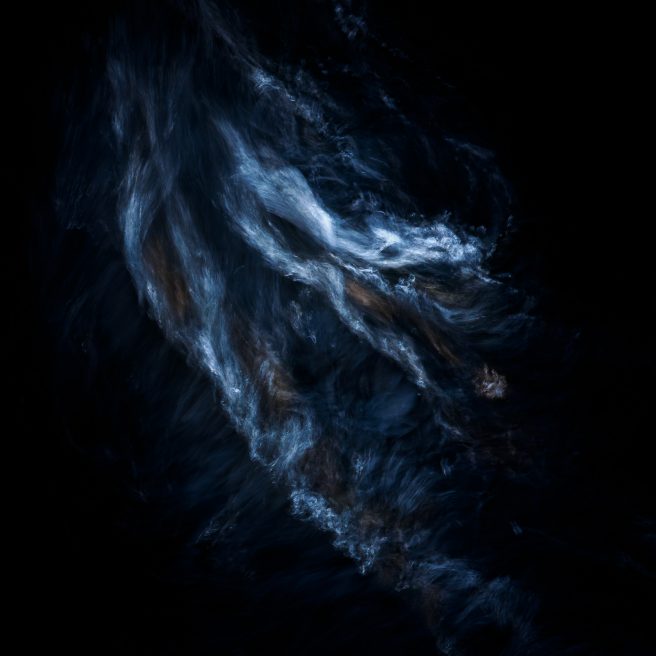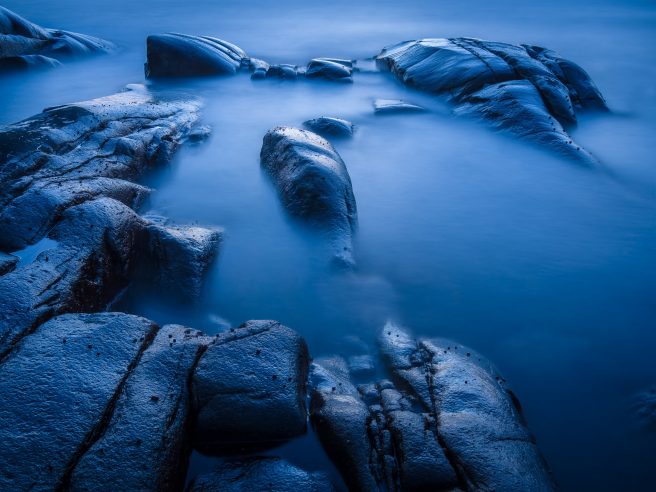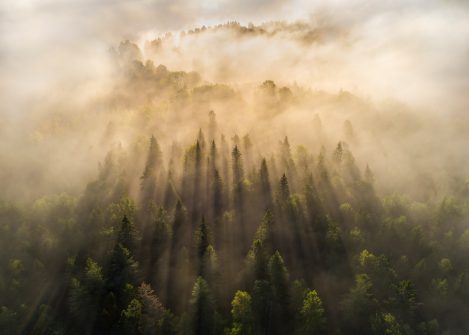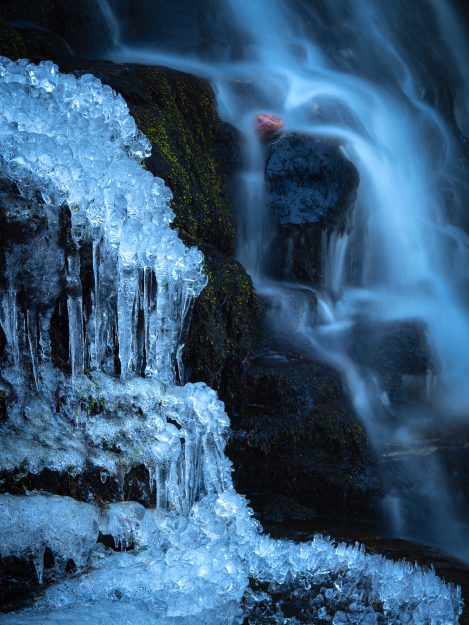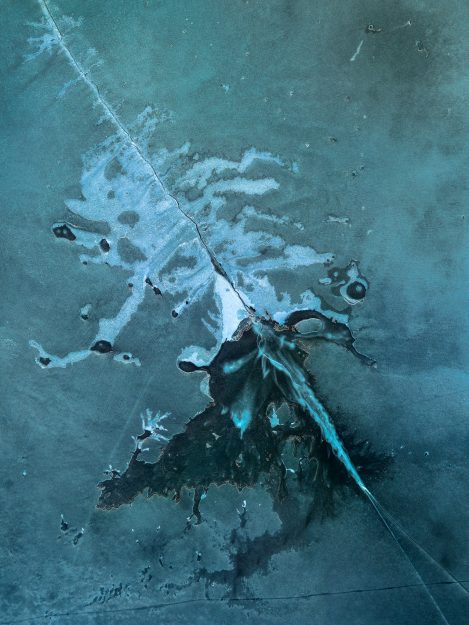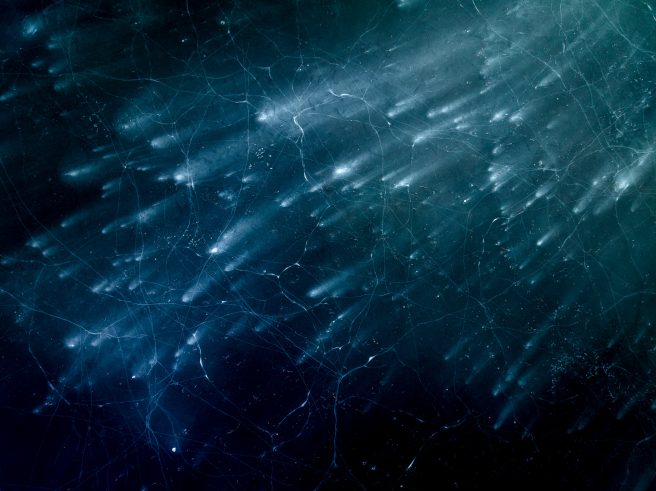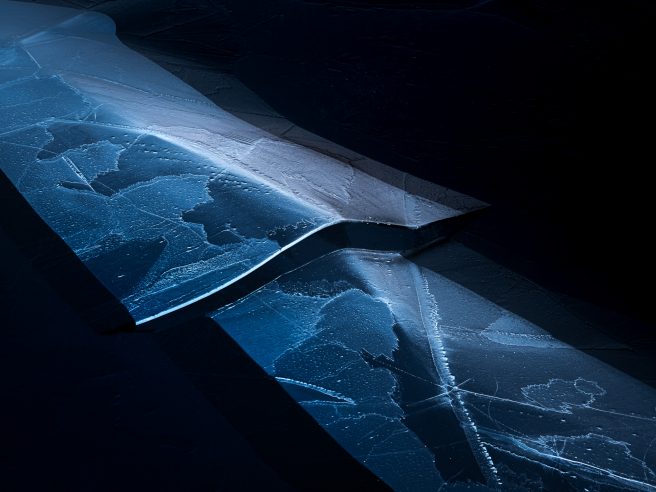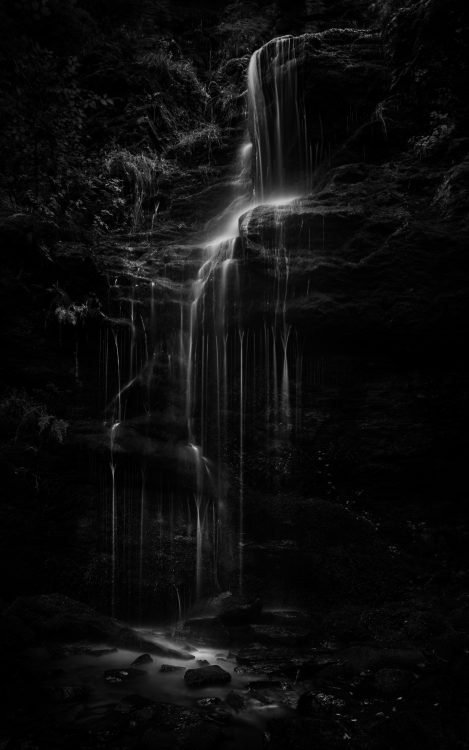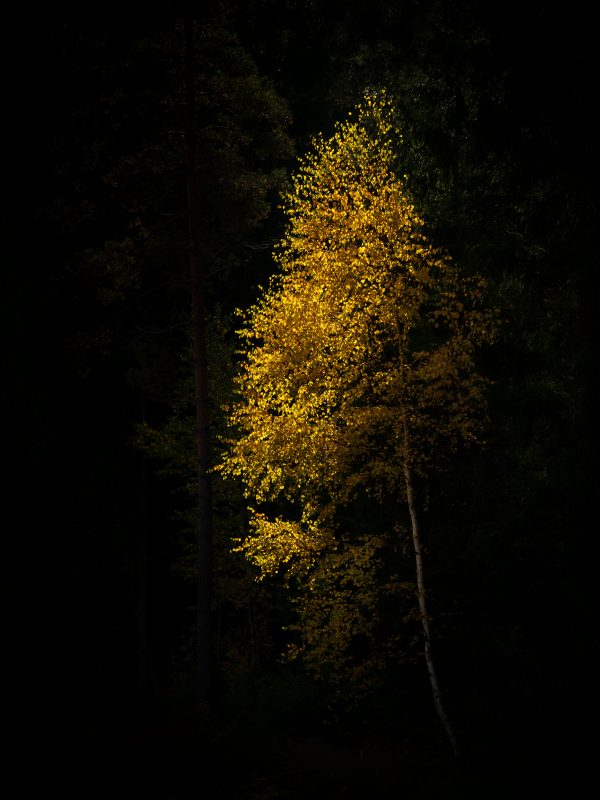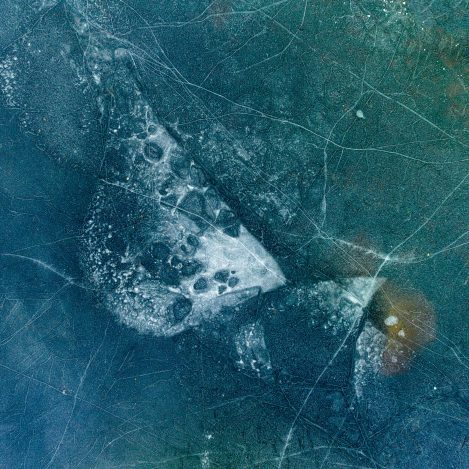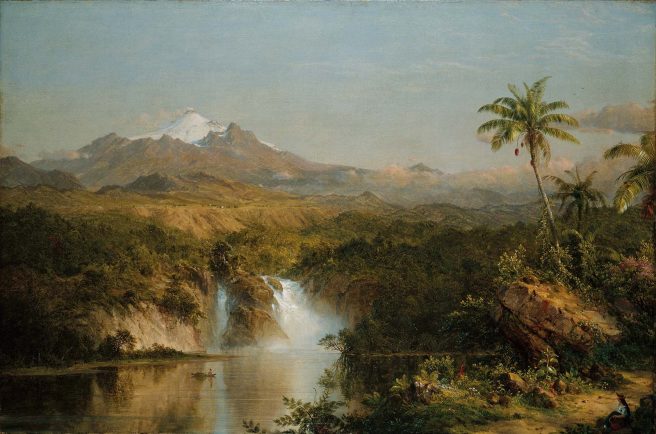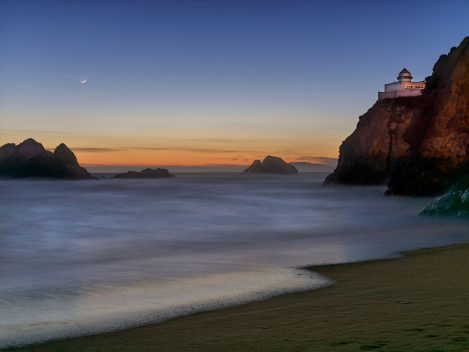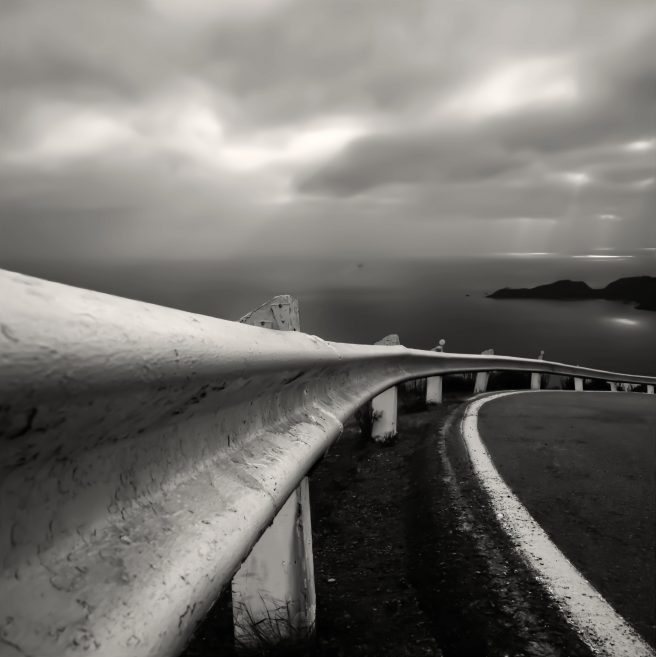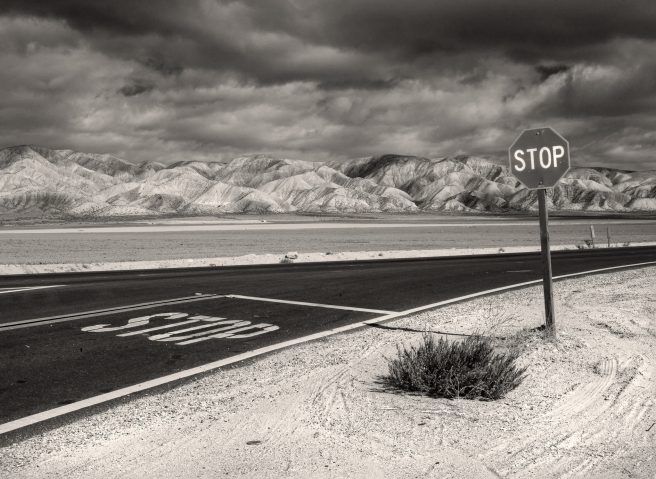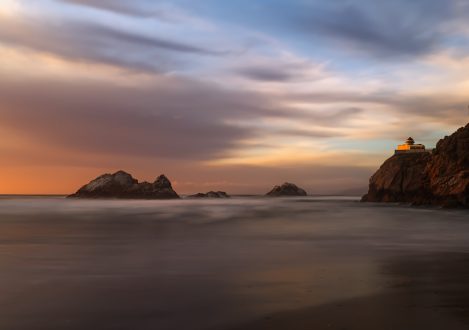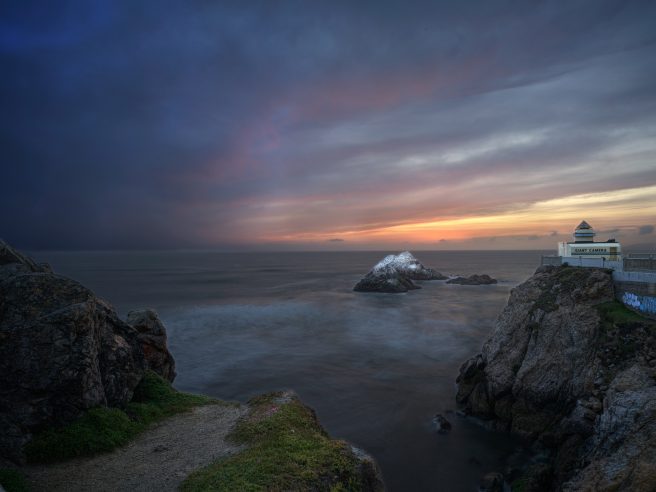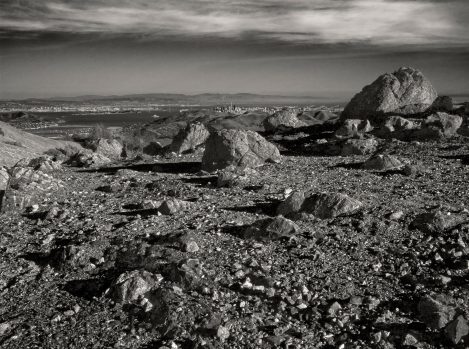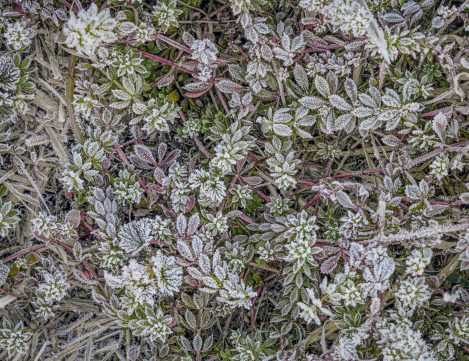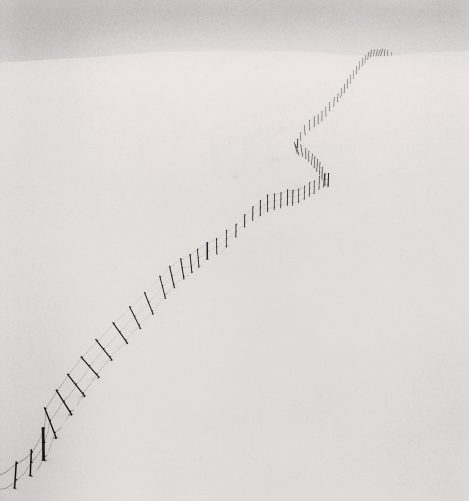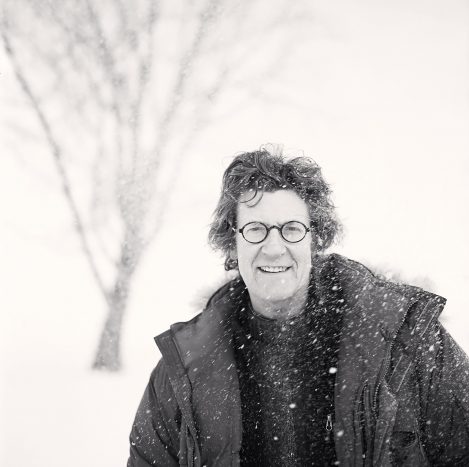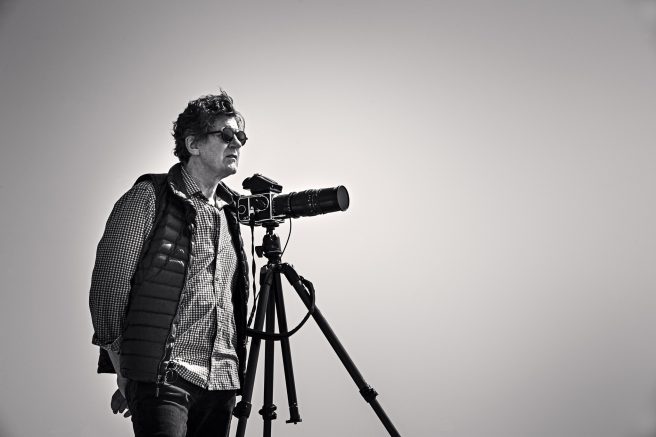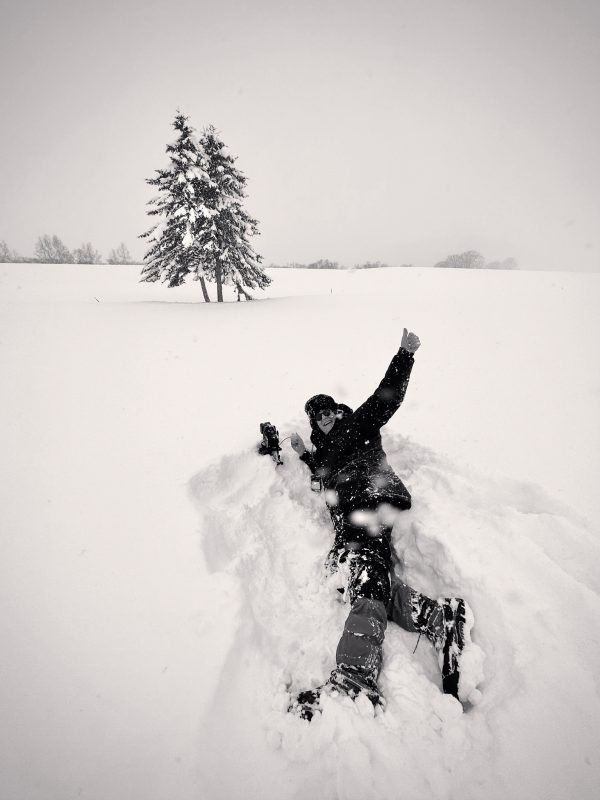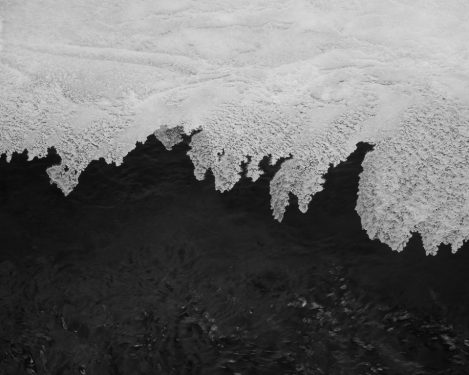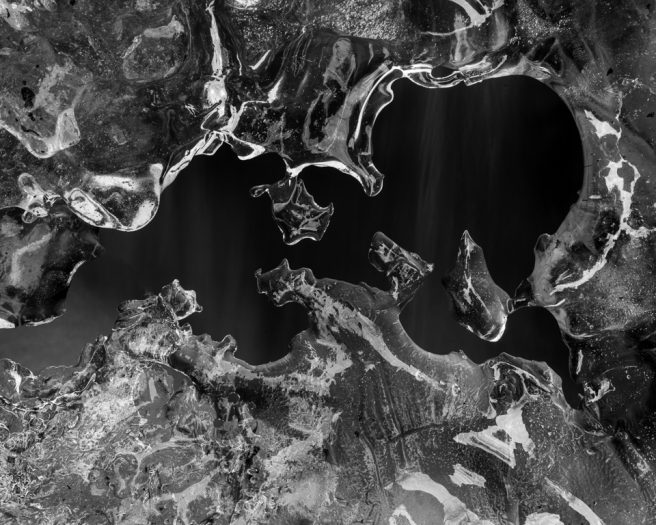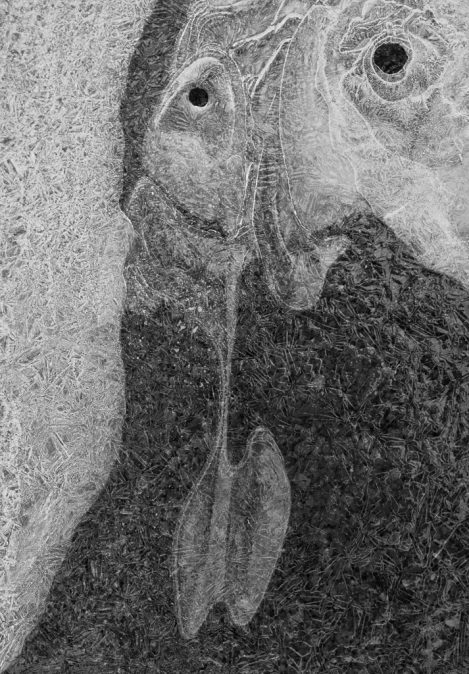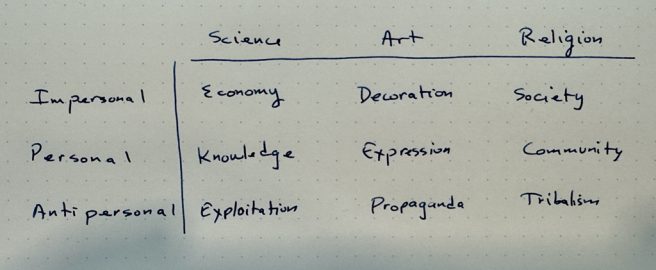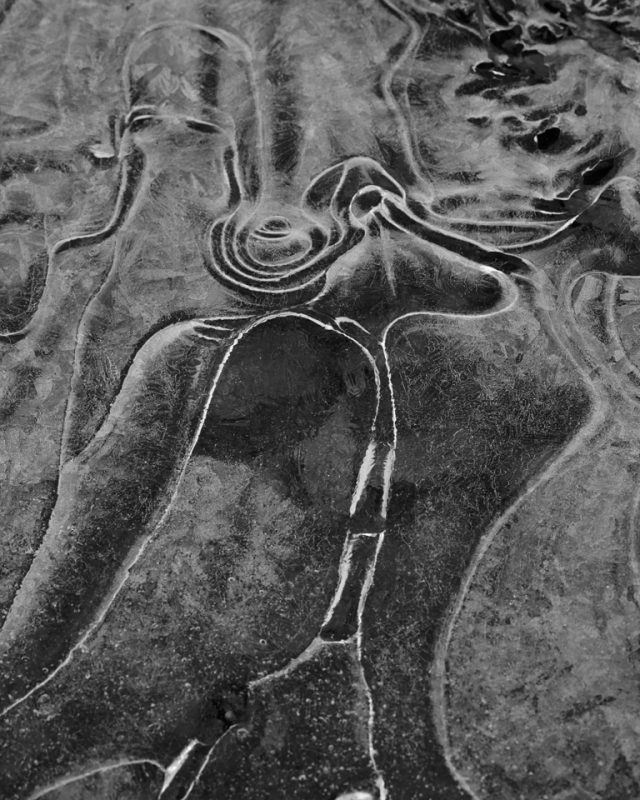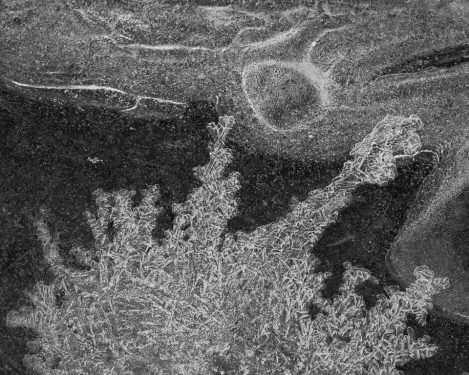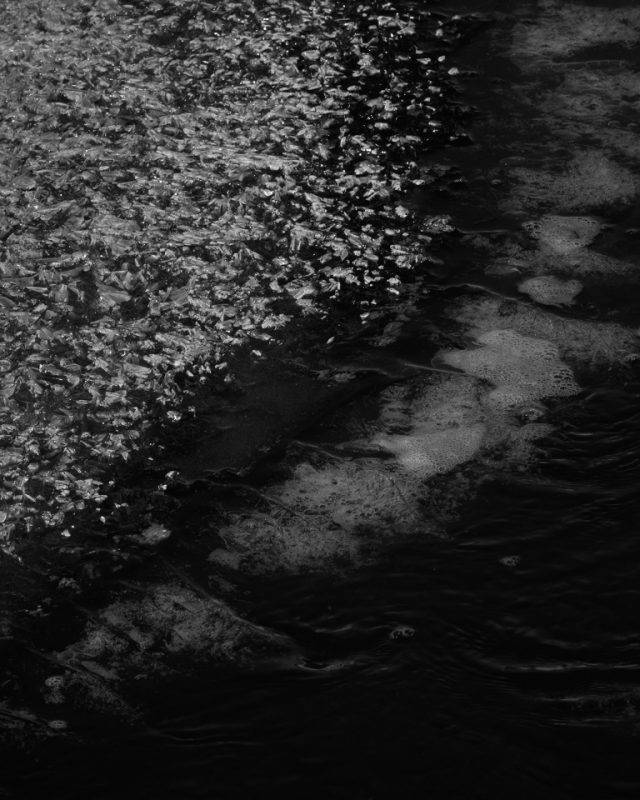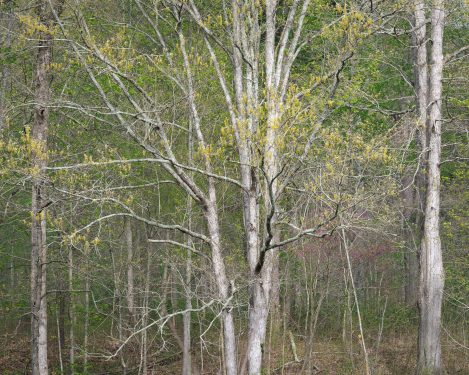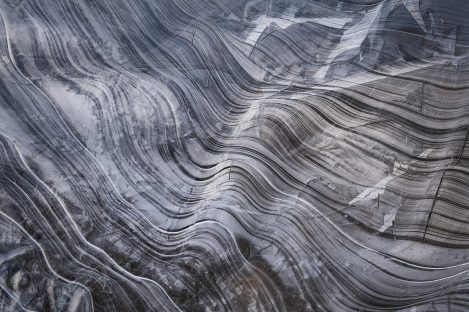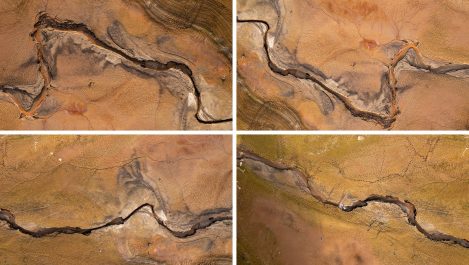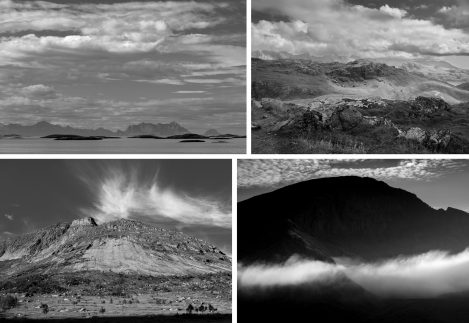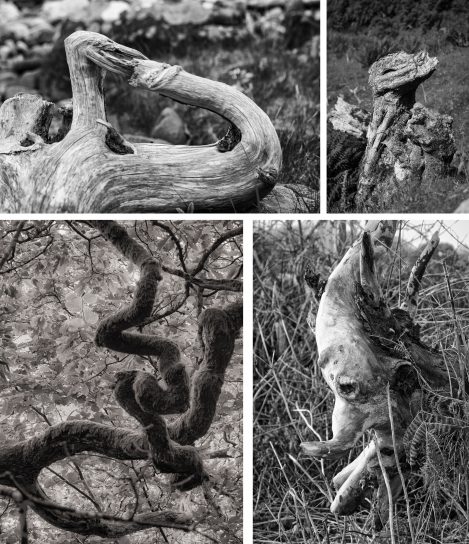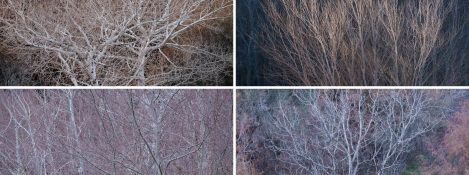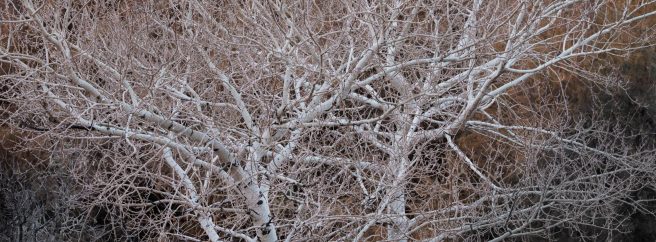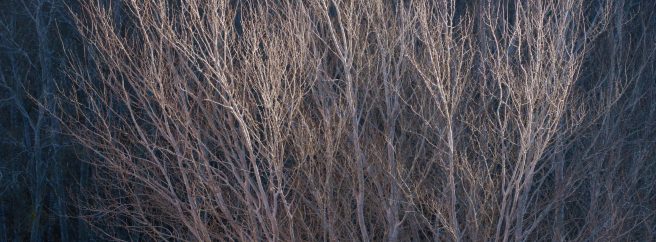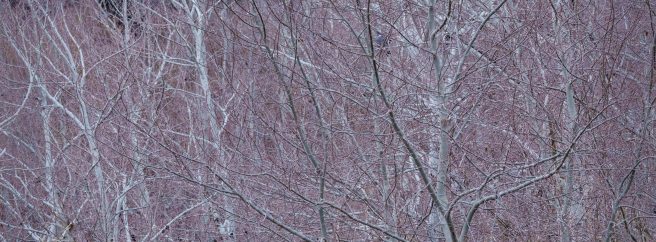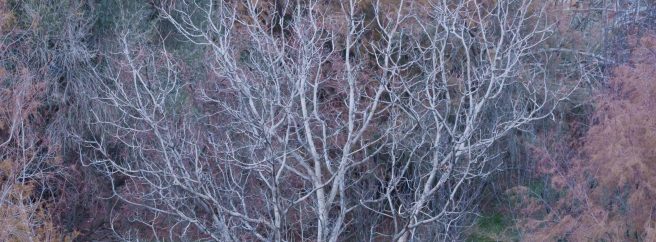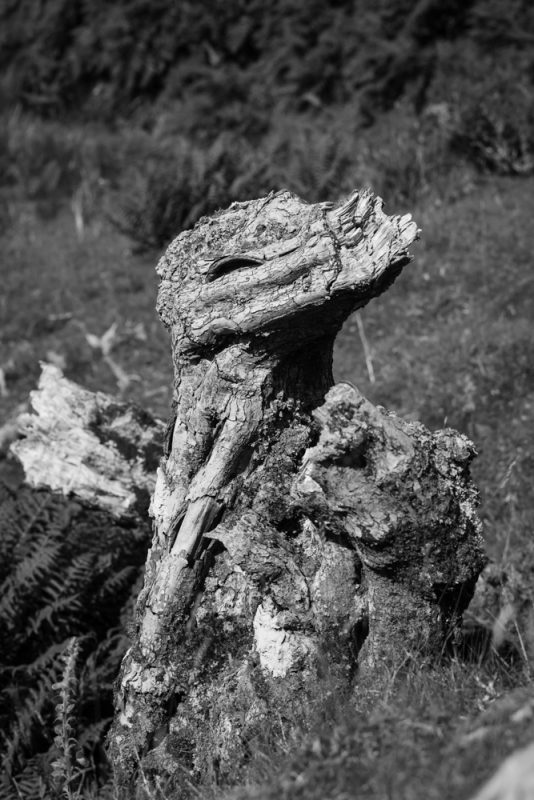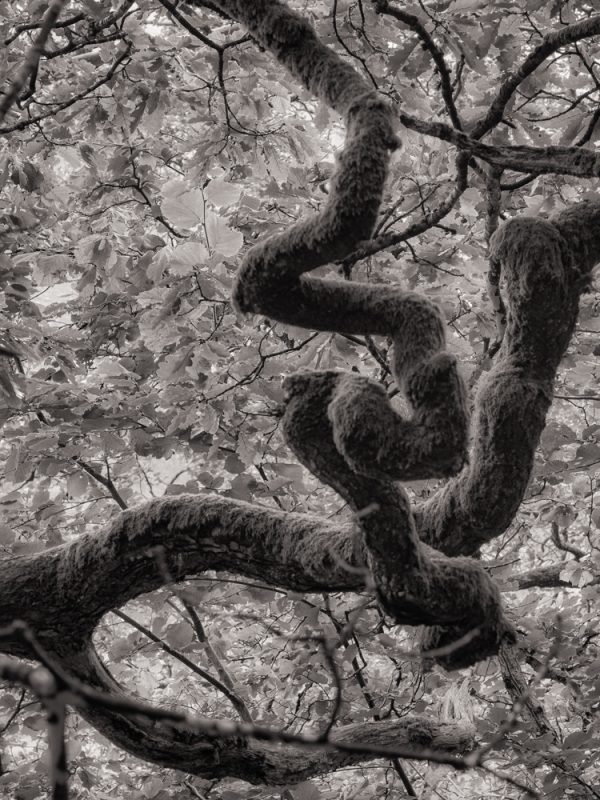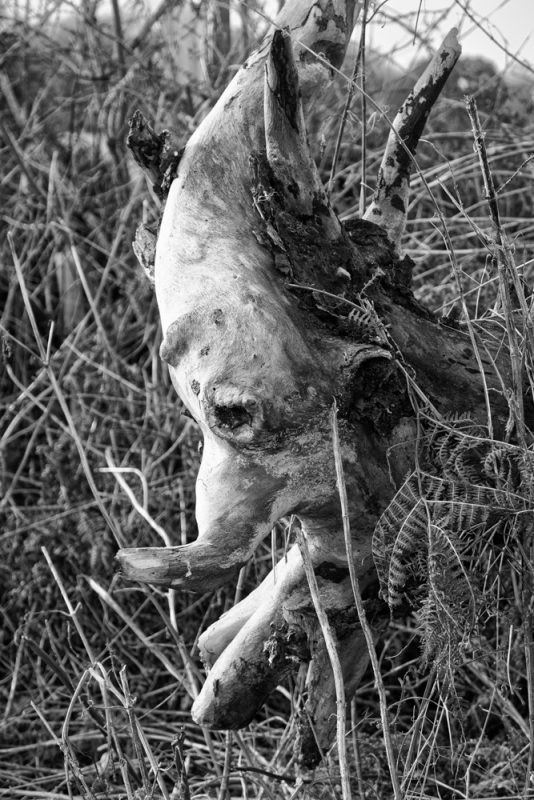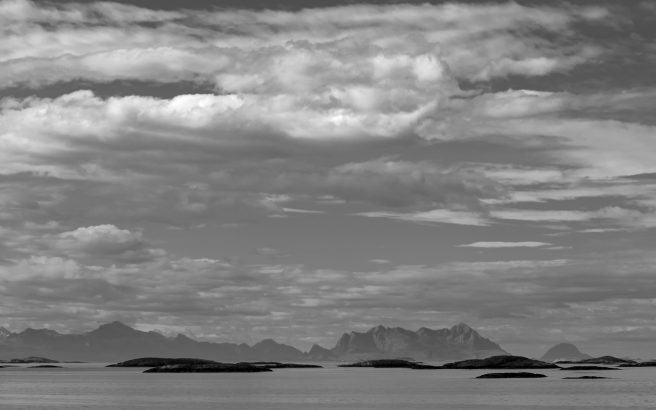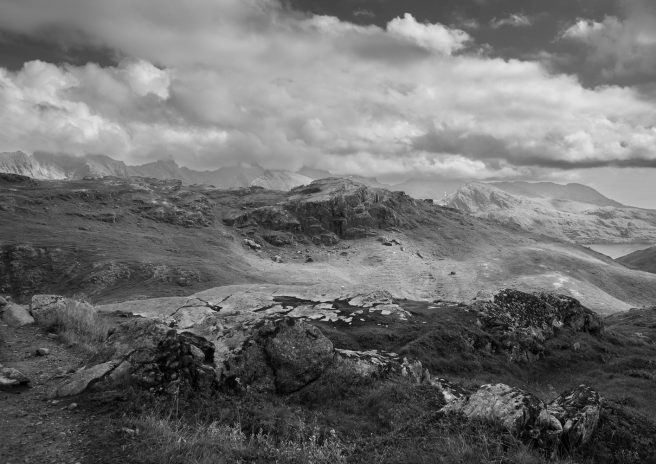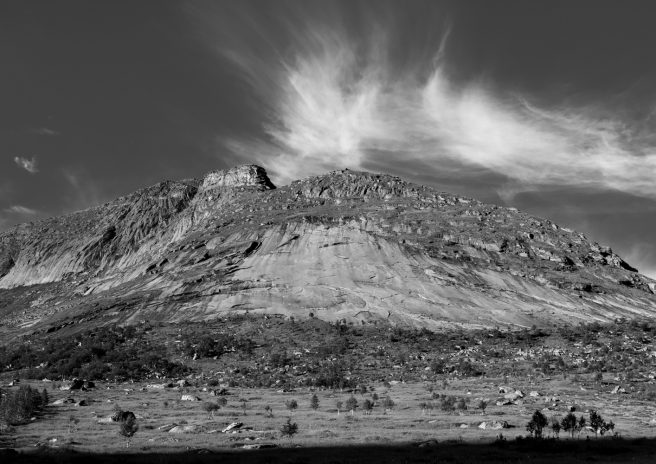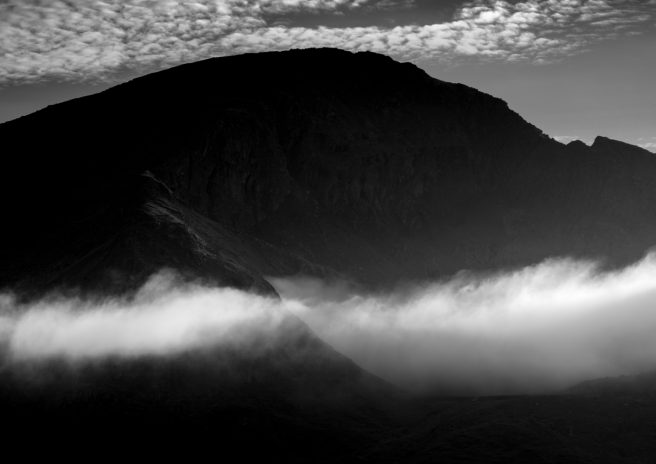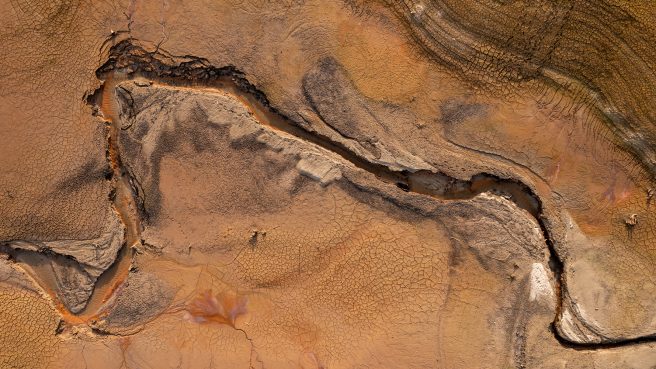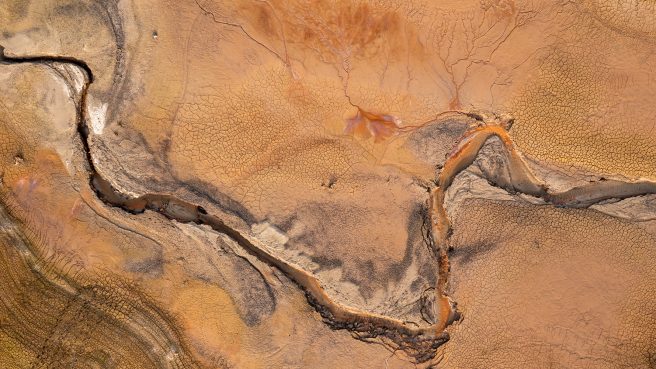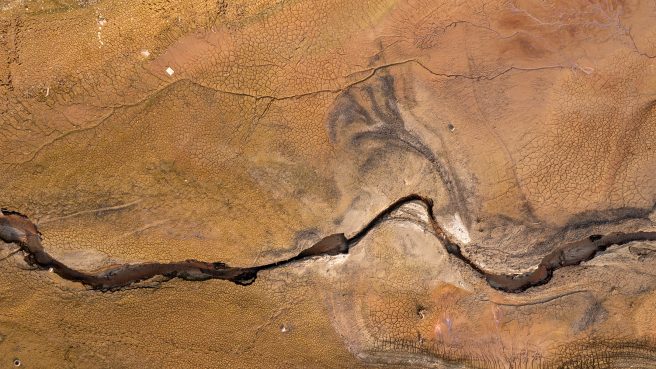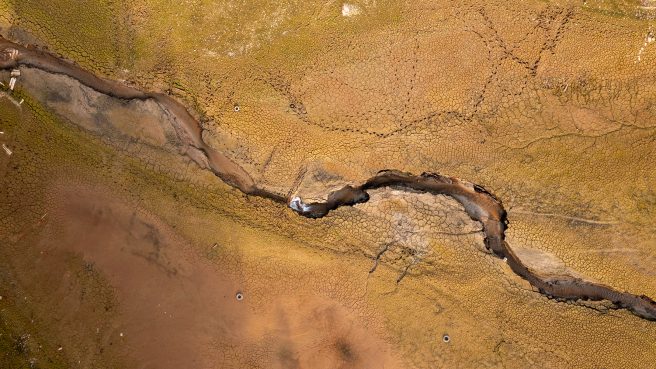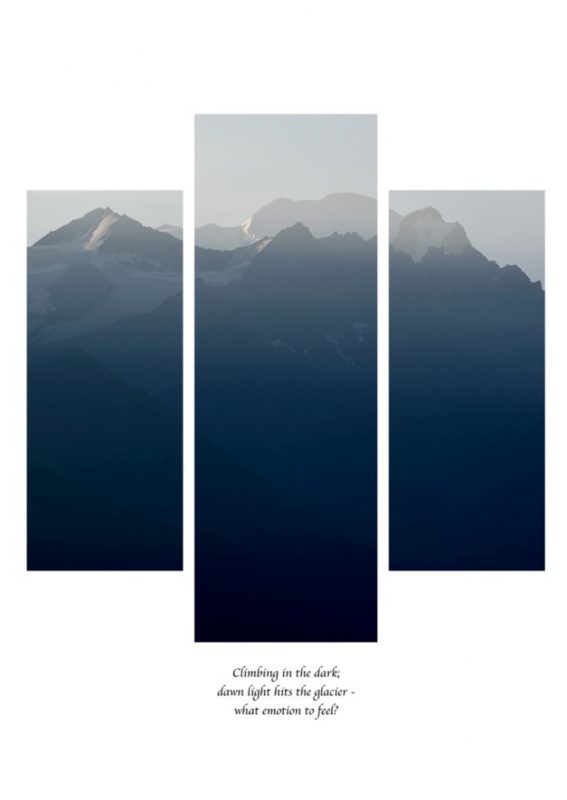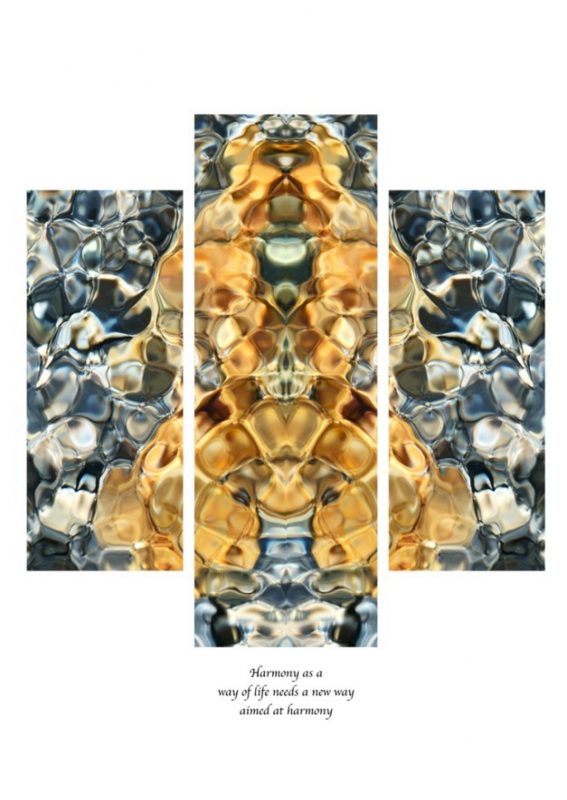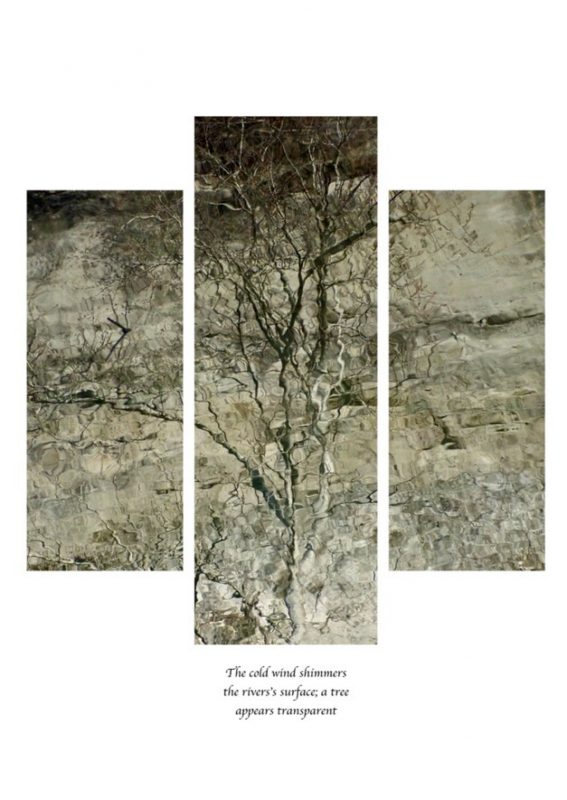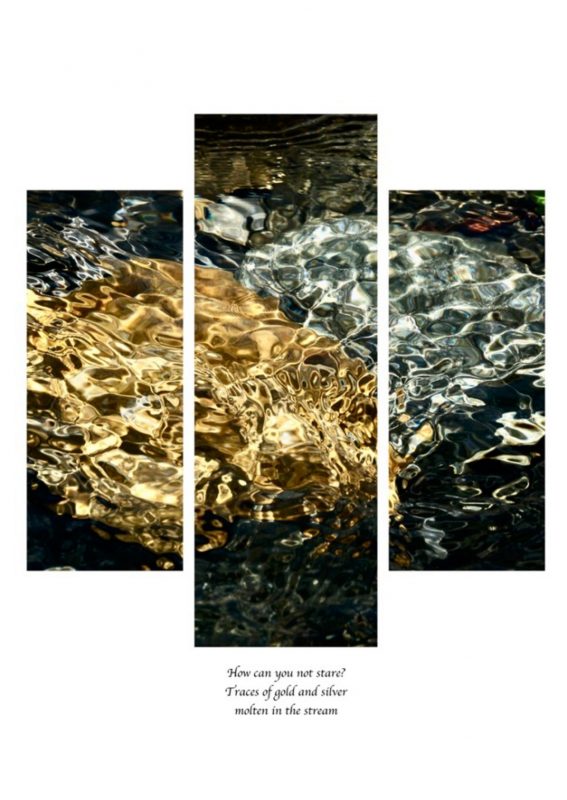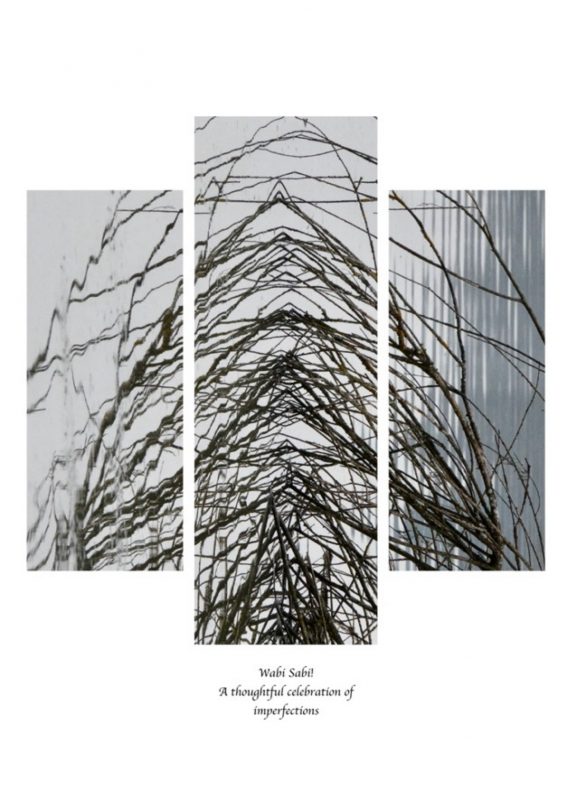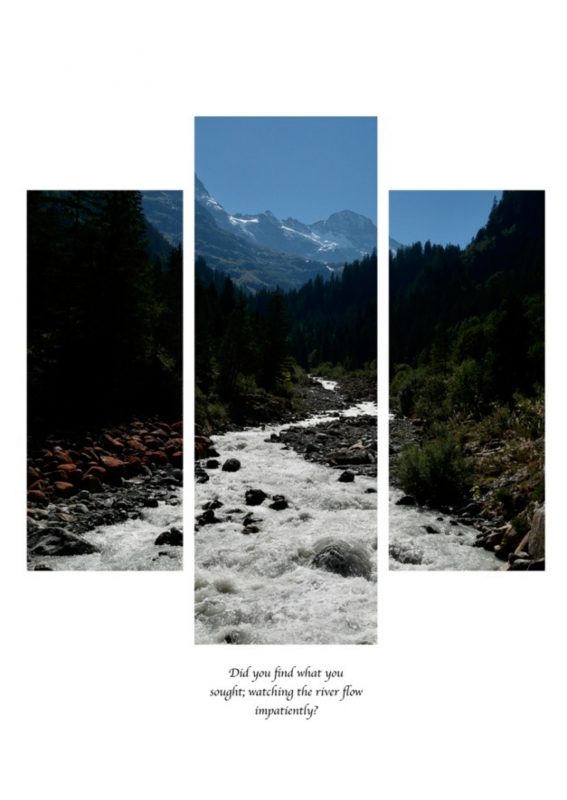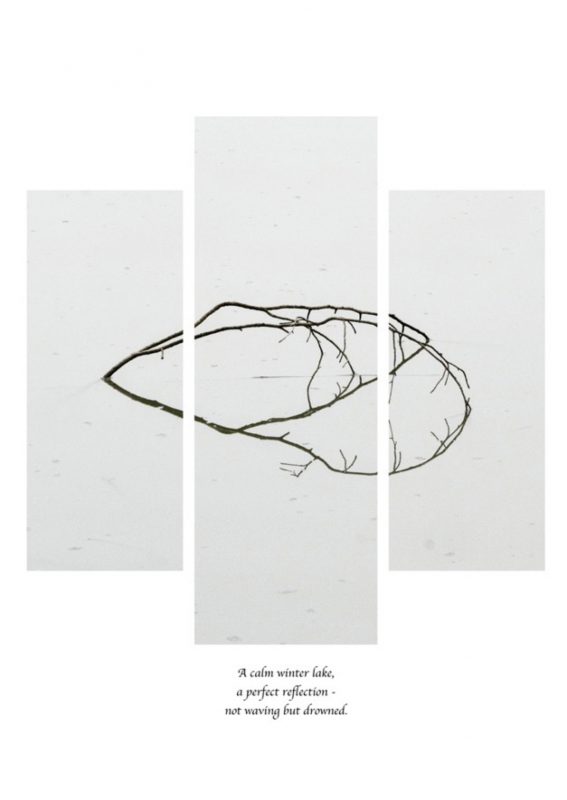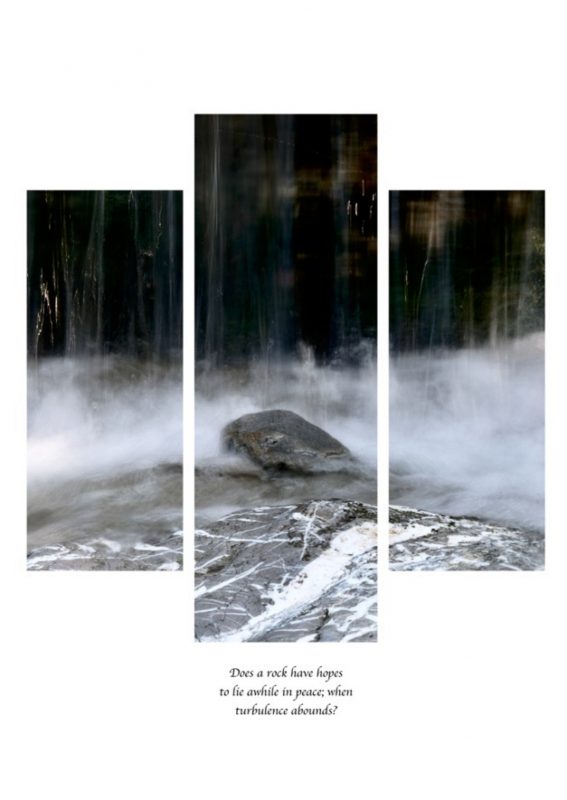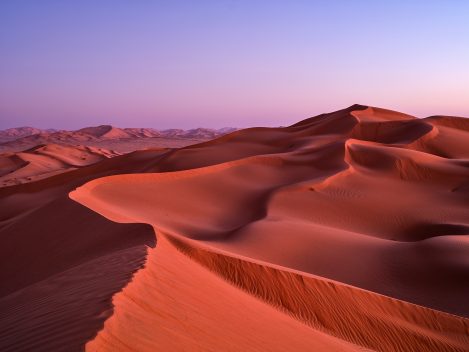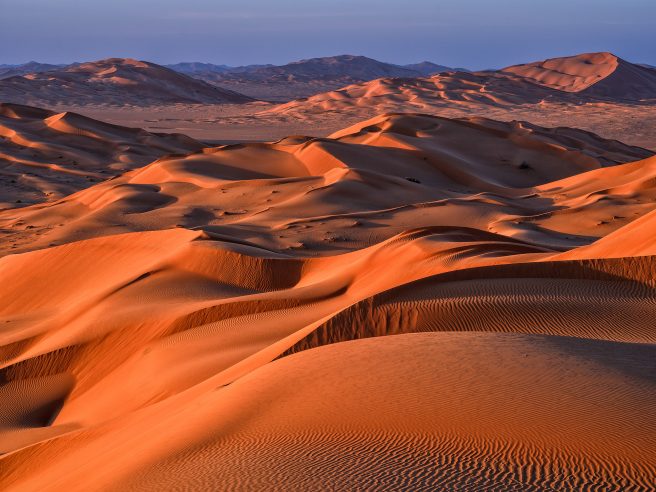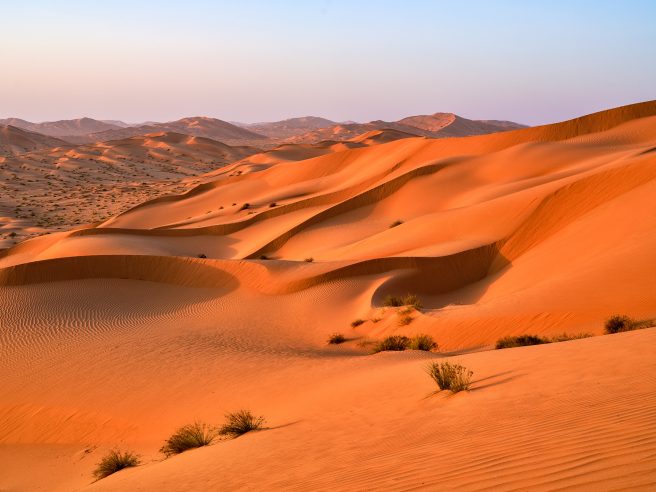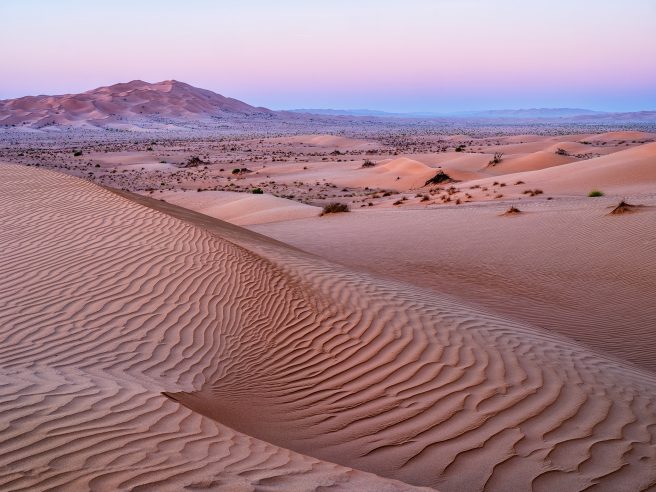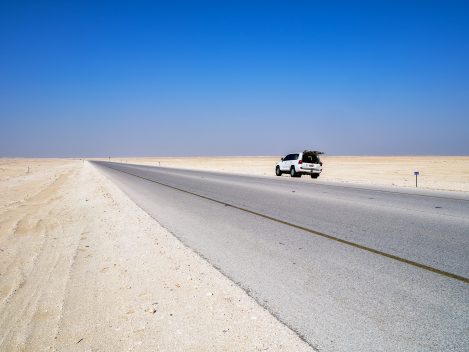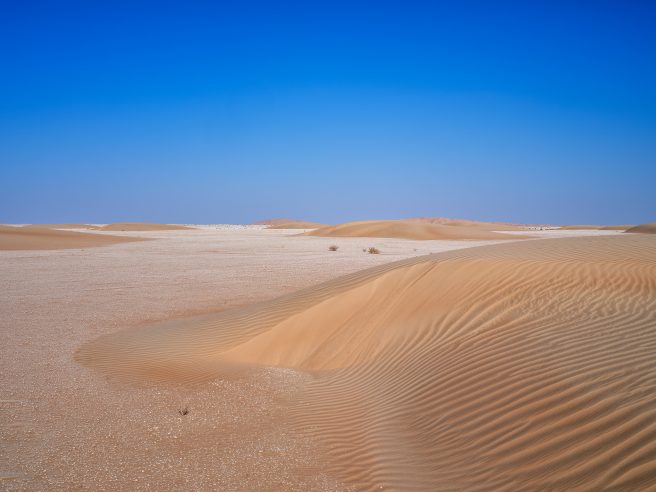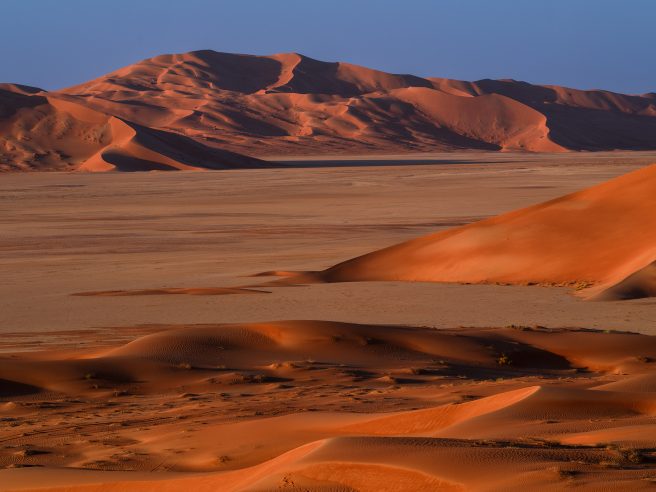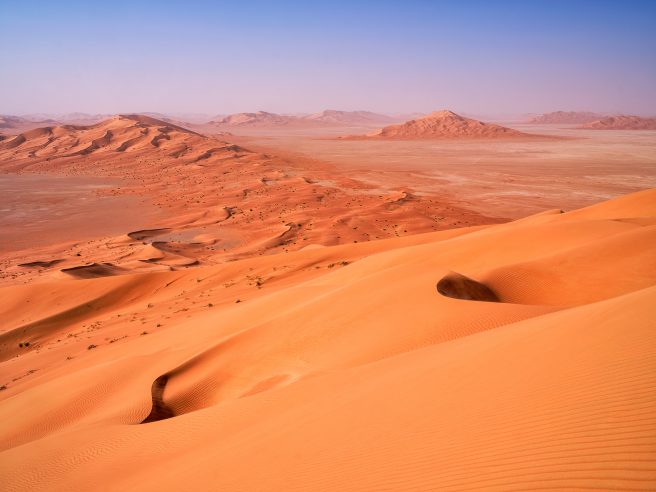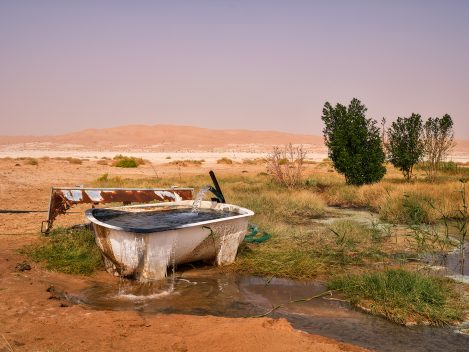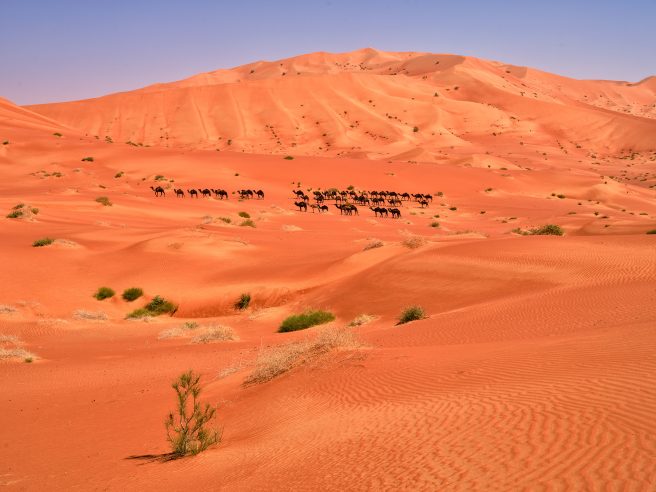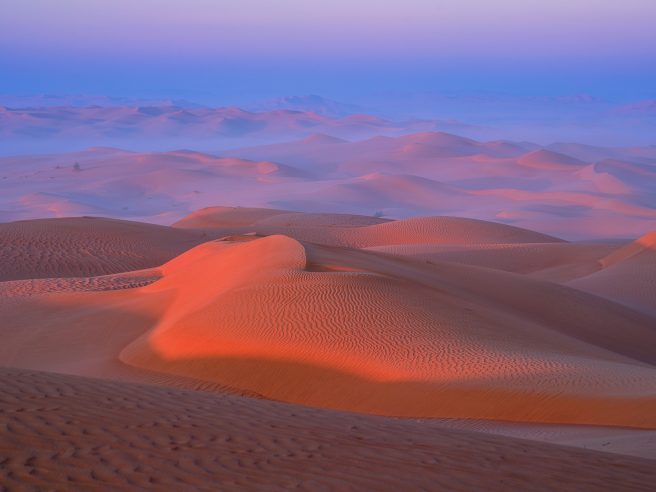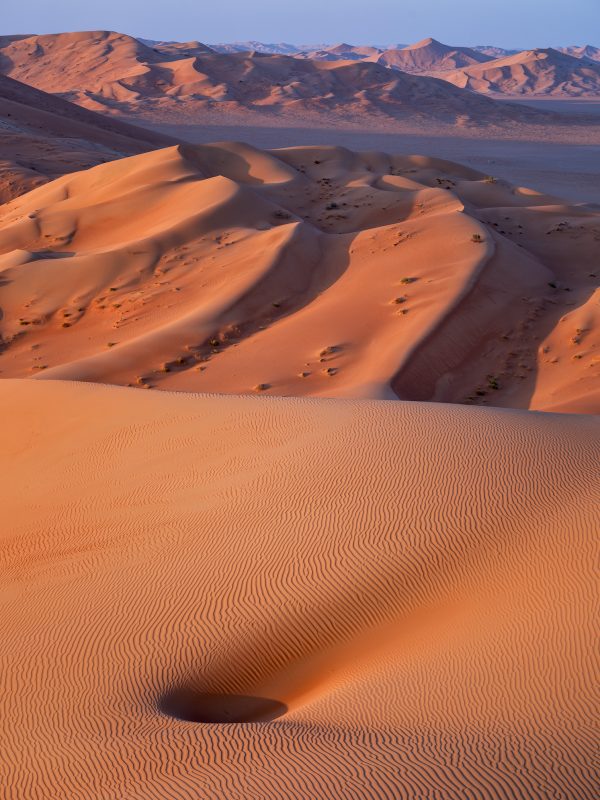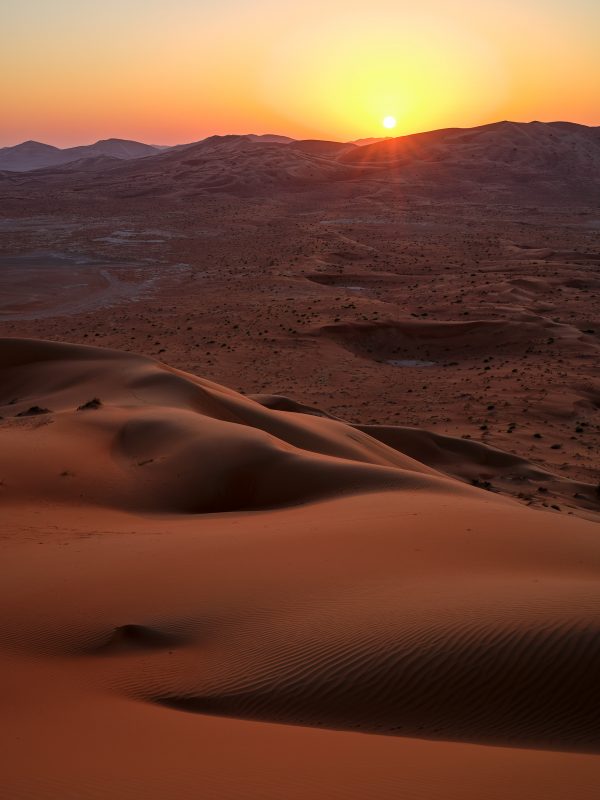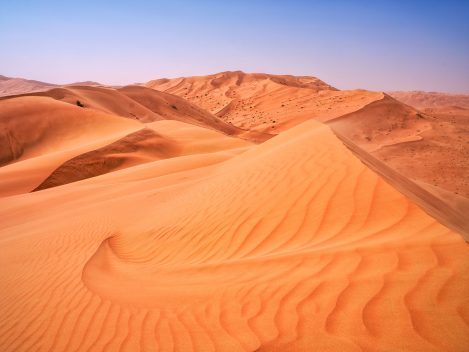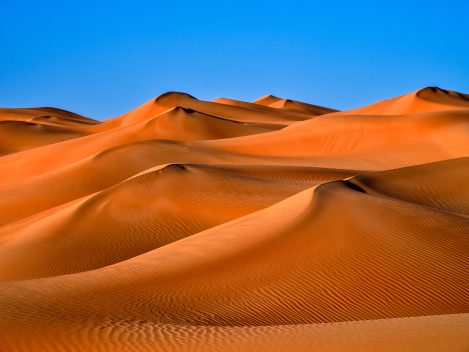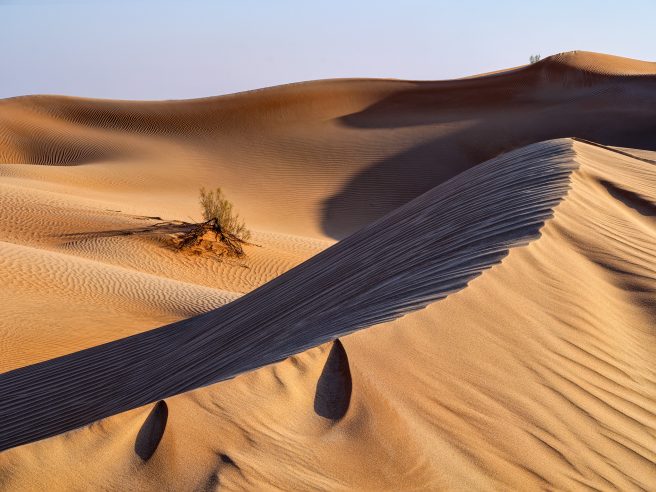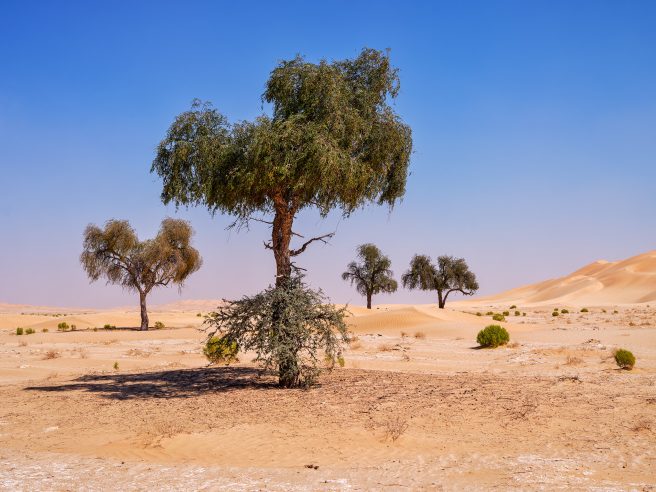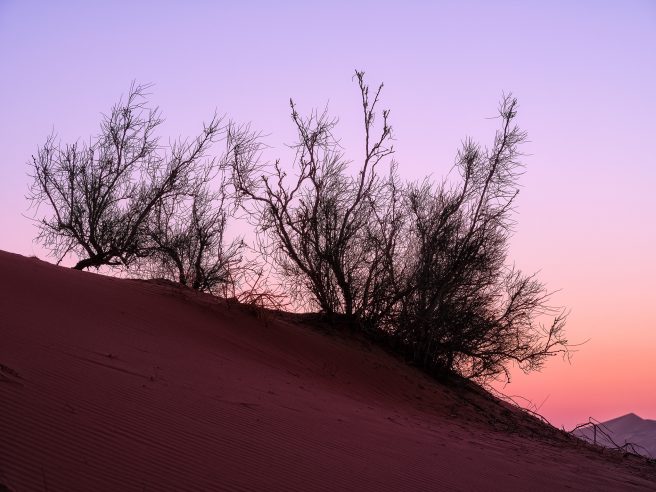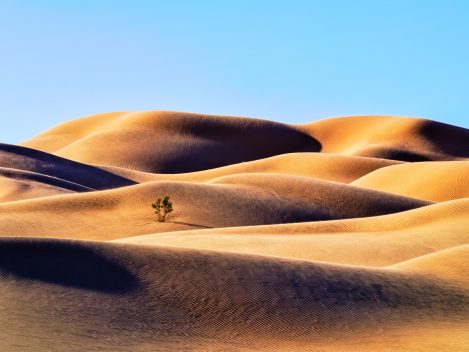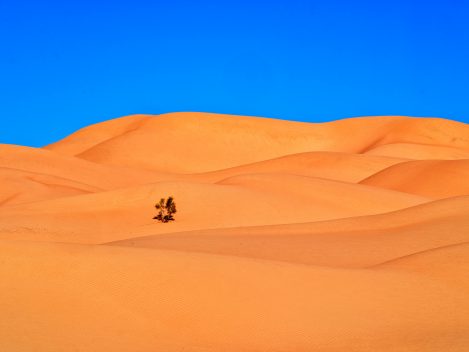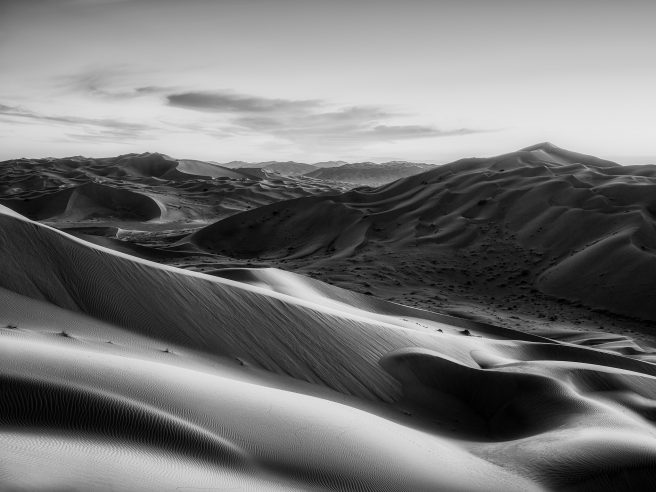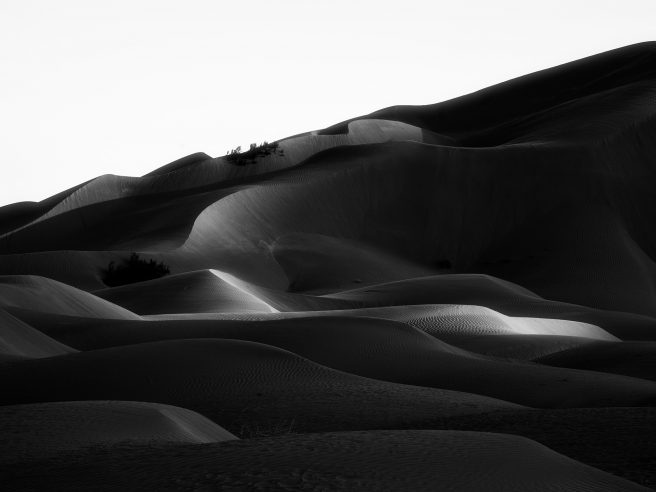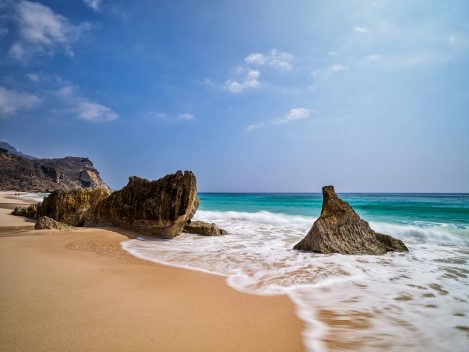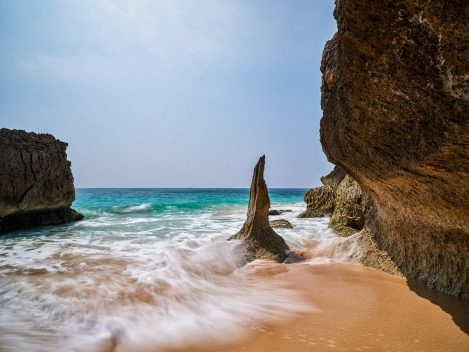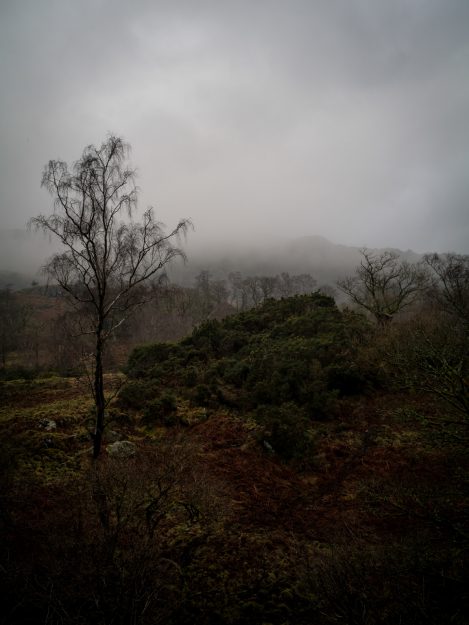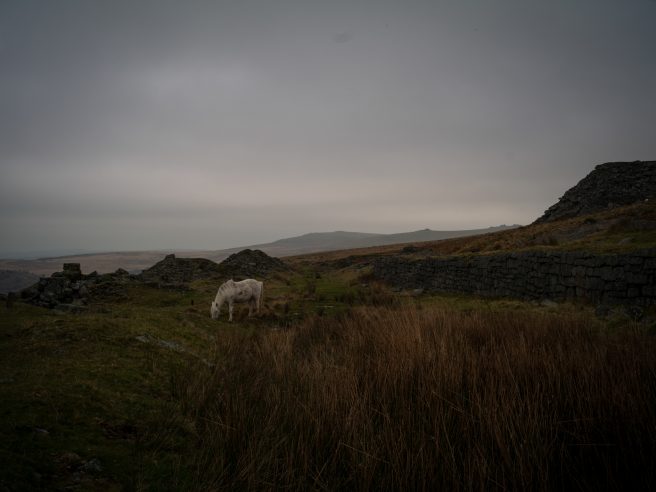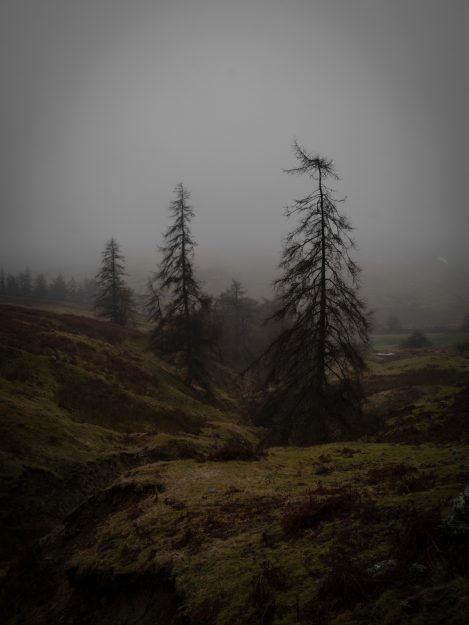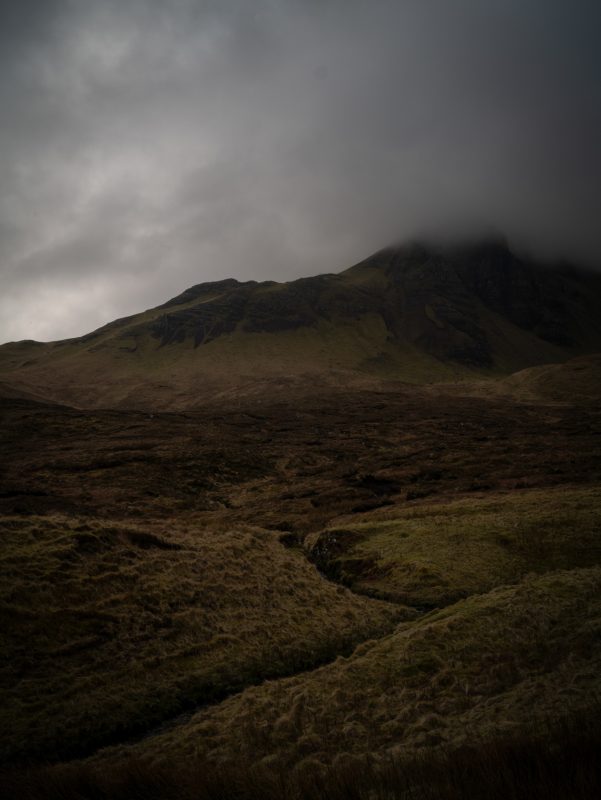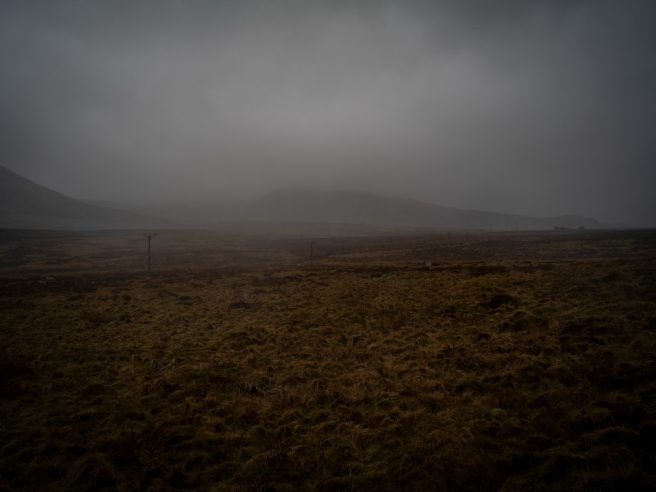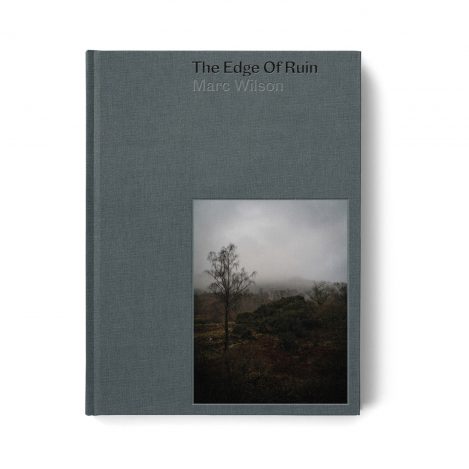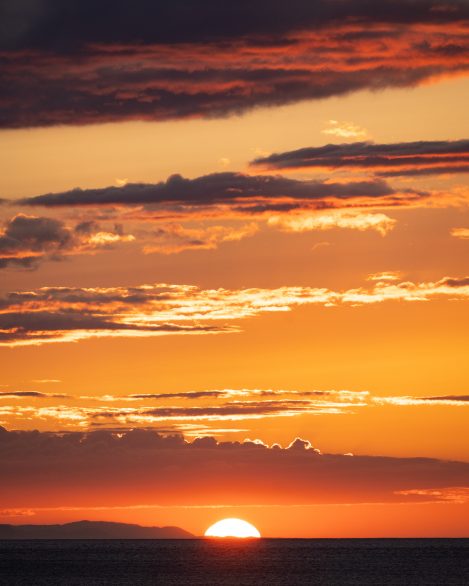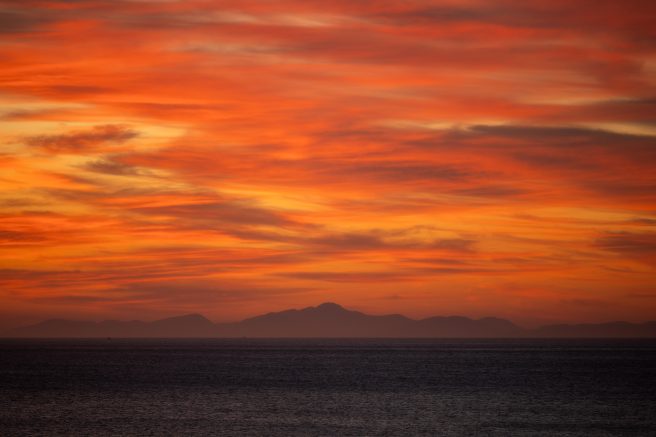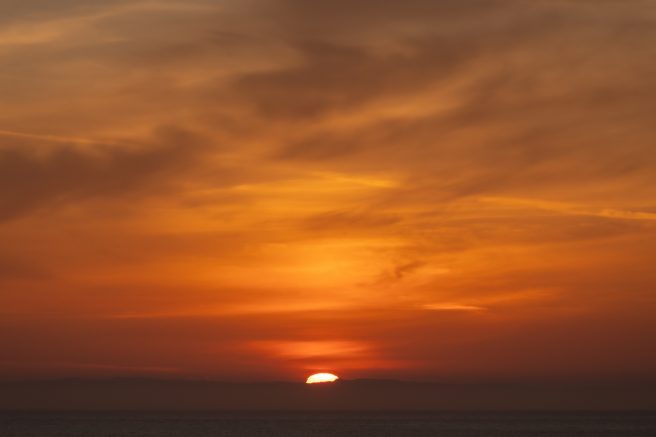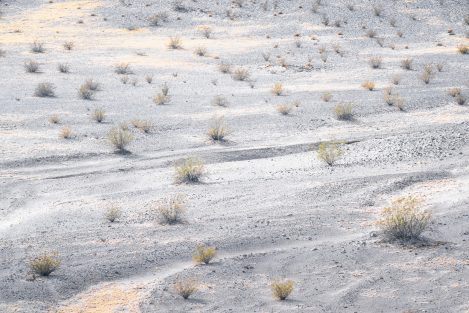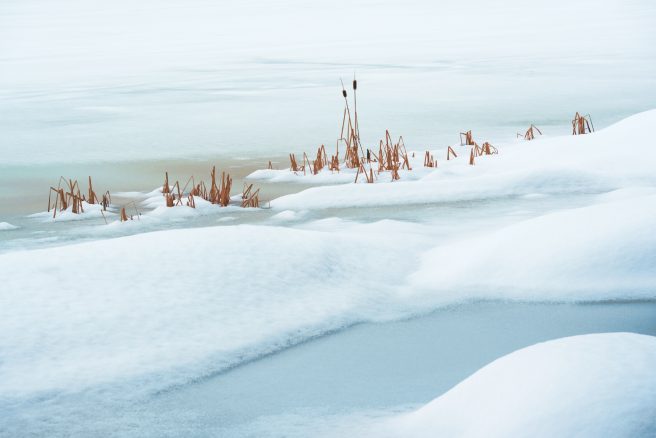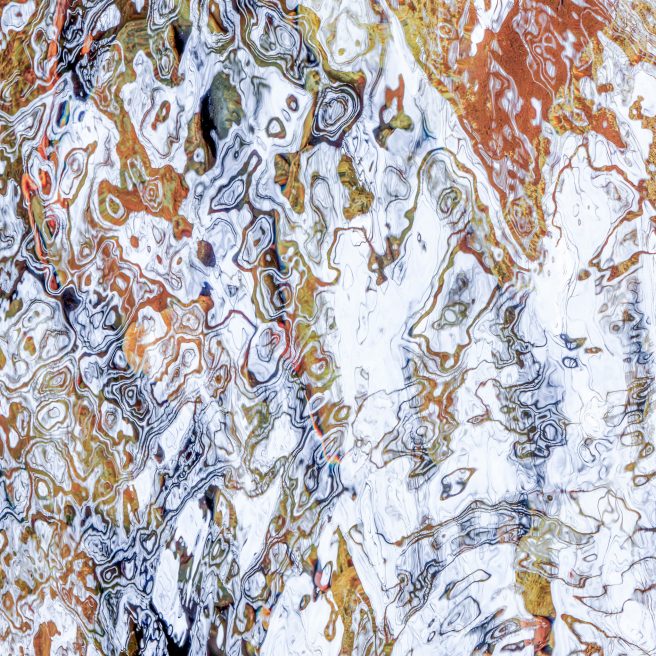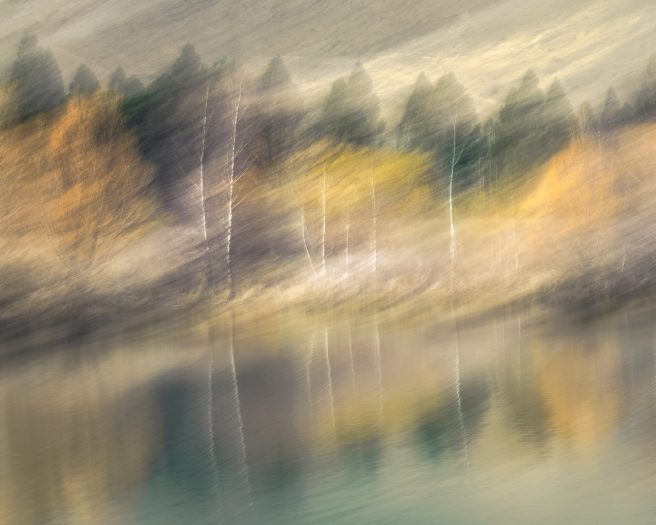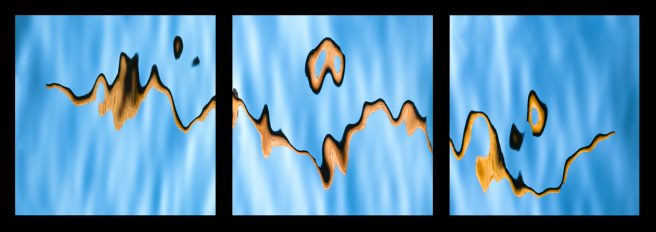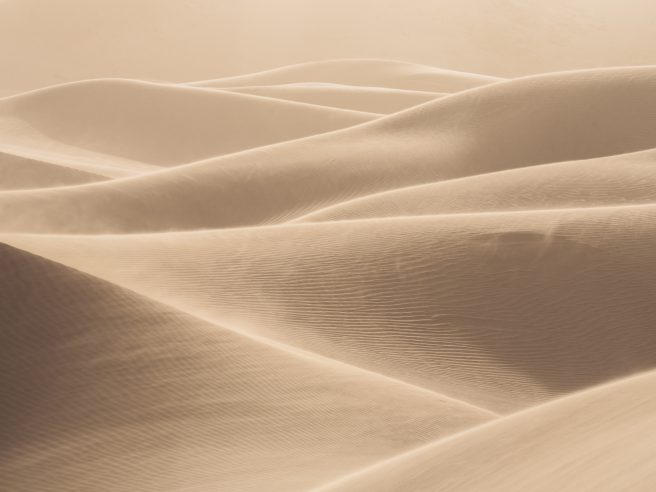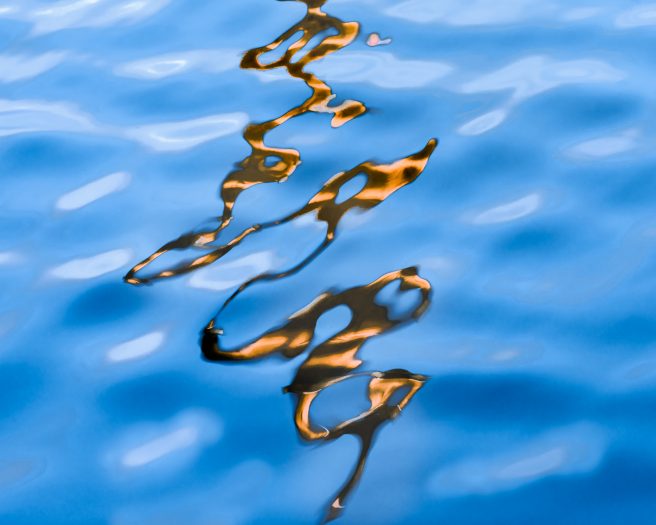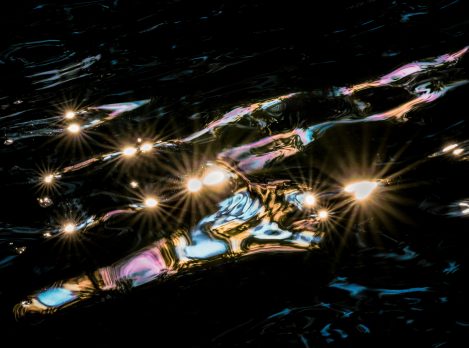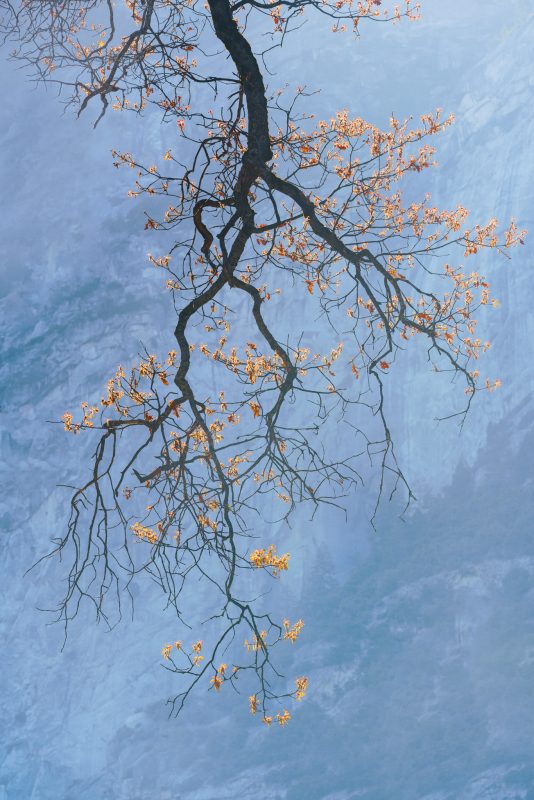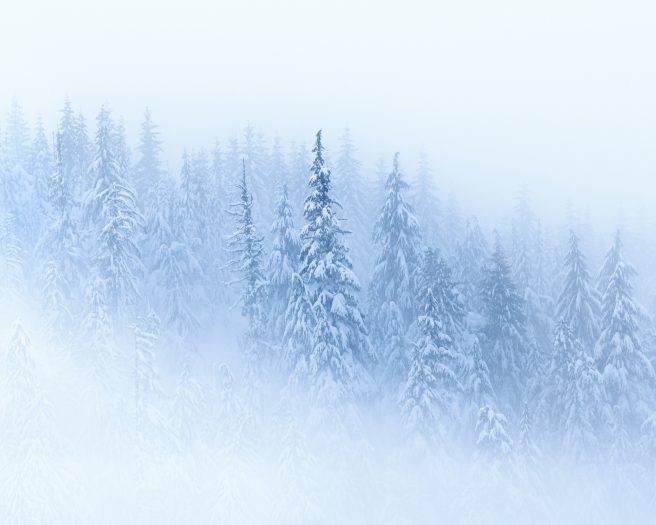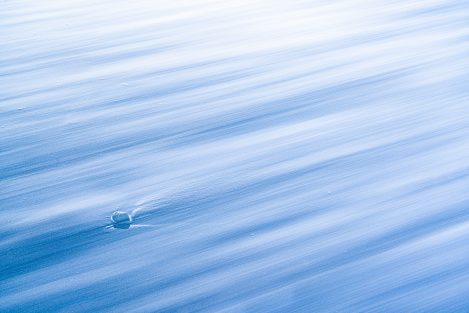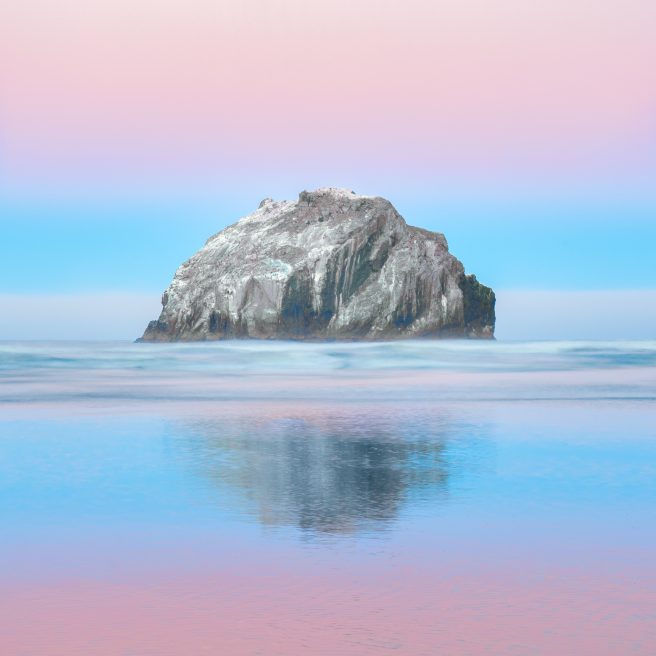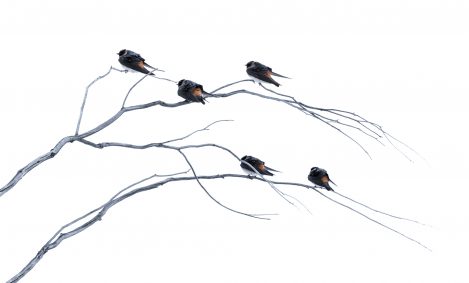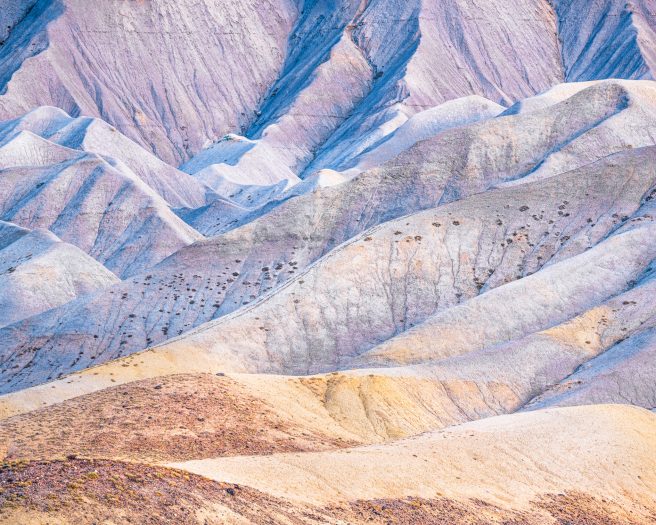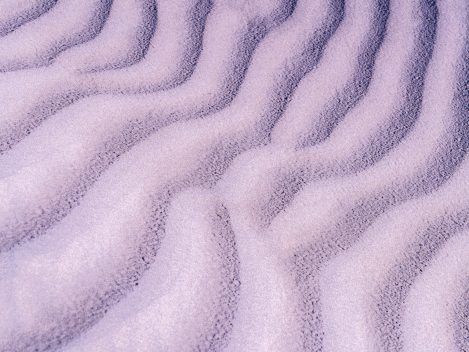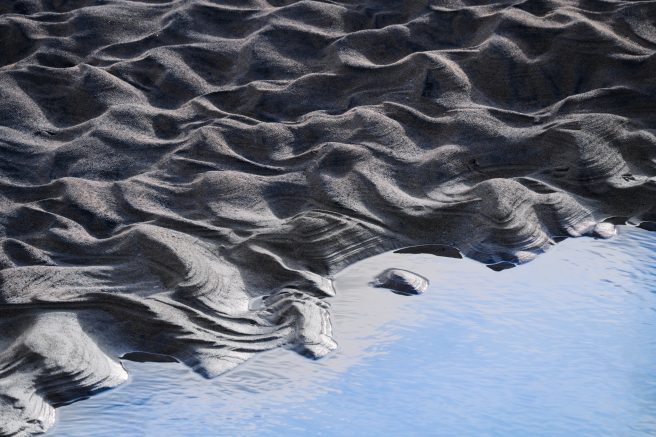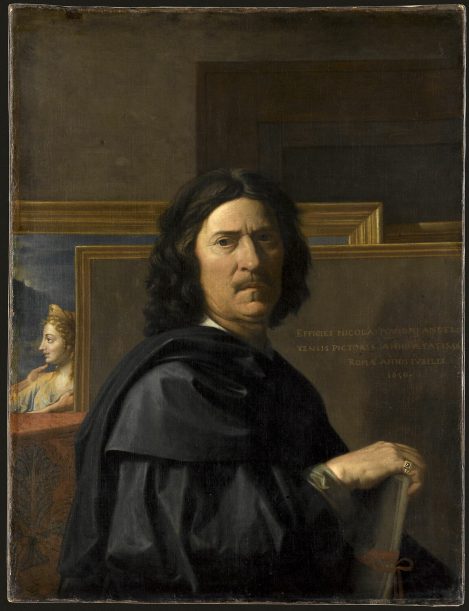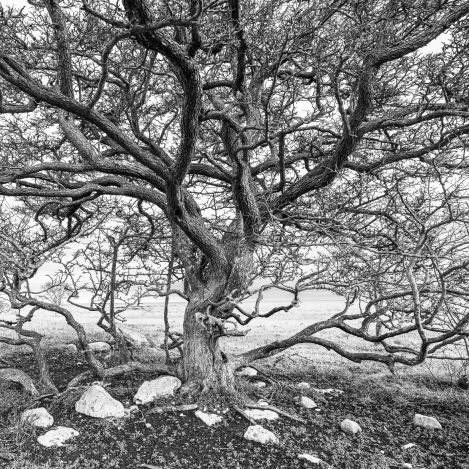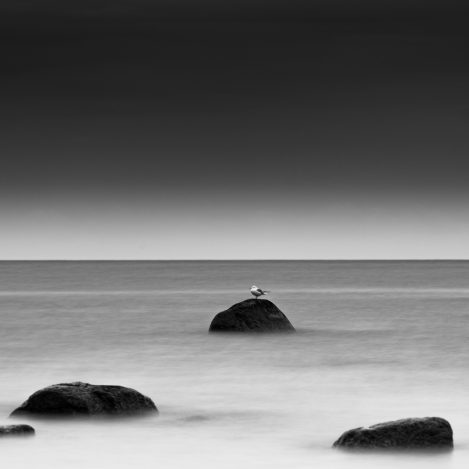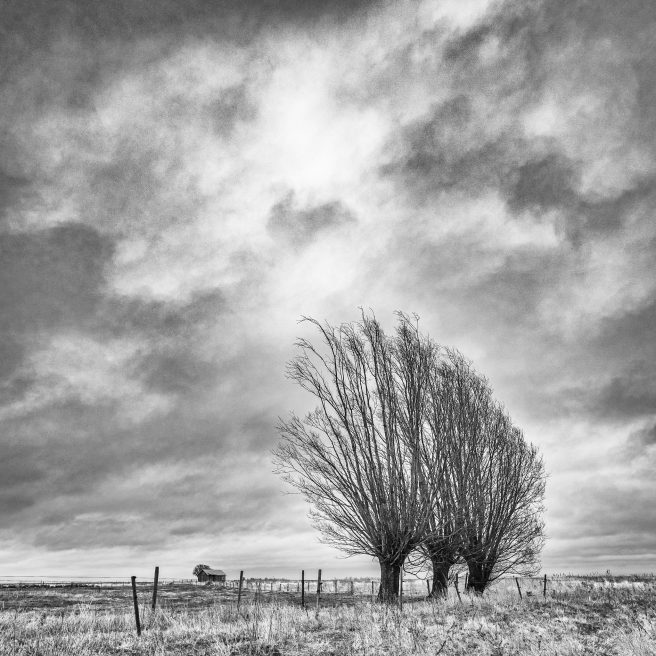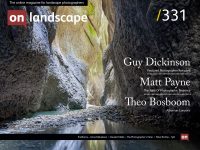End frame: Autumn, Yosemite Valley 1938 by Ansel Adams
Ansel Adams Autumn, Yosemite Valley, 1938, is the picture I have chosen from all the thousands of photographs I have seen in over 60 years of awareness of photography. But why this one, from the many beautiful images that Adams produced, and the legion of stunning images from other landscape photographers that I have seen over the years, especially since I became a subscriber to ‘On Landscape’? The reason is simple and personal.
At my university hall of residence, we had a library. It was there, in late 1968, that I came across a copy of Adams’ book ‘The Eloquent Light’, which immediately captivated me. I must admit that I hung onto it for far too long before eventually returning it, several years later. I had a hiatus from study for a year, which gave me the space to attempt to complete a painting commission that my wife had arranged with a teacher of hers in her home city. The teacher wanted to have a large painting of a landscape, with a blue and yellow colour palette, to hang on her wall. I chose the view of the Merced River and background rocks from the book, as frankly, the view of Headingley from my bedsit window did not inspire me.
Peter Richter “Moments with Trees”
Peter Richter recently sent us a small book made using KOZU’s new printing service MAKEBOOK. I was interested in the quality of their latest digital printing and also wanted to take a look at what Peter had made, both in his photography and in his design choices.
Firstly, Greg from Kozu has obviously got a lot of experience printing books and, as I commented in my recent review of Michael Gordon’s book, digital printing has progressed a great deal over the last decade or so. At its best, you’d be hard-pressed to tell the difference between it and litho printing. But not all digital printers or individual presses are created equal, so it was reassuring to see that in Peter’s case, the book printing quality is excellent. There is a bit of ink sheen on the 170gsm silk paper, an indication of a particular type of digital press (this would be a dry-toner printer rather than the HP Indigo’s wet inks, which tend to look more like litho). This slightly glossy look is a small price to pay for significantly lower production costs.
Peter’s book is a compilation of forest work, mainly collected near his home in Vienna, Austria. The aesthetic portrays a dense woodland interior, with little evidence of sky visible between the leaves or at the forest's edges. The result could be claustrophobic, but Peter's obvious passion for his subject gives a feeling of being enveloped in a blanket of forest.
The book’s design is simple: Peter has chosen to eschew captions, letting the photographs do the talking, and he’s arranged them in seasonal order, beginning and ending with winter snows. The book is given some variation in rhythm through the use of alternate blank facing pages and the occasional spread of a pair of related images. A beautiful cluster of cool, mossy-green branches, a spread of midwinter beech leaves, a facing pair showing the sun piercing through a coniferous forest.
The result is understated and relaxing in expression. I would have preferred a more consistent geographic location and some narrative to support the choice. Still, the work is more about the photographer's relationship than about the subject's narrative.
You can buy the book from the KOZU website by following this link. You can also see more of Peter Richter's work at his website peterrichter-photography.net.
I’d like to hear more about what Greg is offering through this MAKEBOOK service and will be keeping an eye on how it progresses.
Anna Onishi – Portrait of a Photographer
Have you ever found yourself wondering why you were born, or what you are actually living for? These are the kinds of questions most people push aside in the name of routine, although for Anna Onishi, they lingered persistently, rising and falling like waves until she could no longer ignore them.
In the search for something that might bring meaning back into her life, she spent a year writing down everything that resonated with her: what she loved, what she wanted to try, what might move her again. At the end of that personal inventory, she arrived at a simple and powerful realization: she wanted to photograph whatever stirred her heart.
What Anna found, almost immediately, was that photography allowed her to translate emotion into form. Since 2015, she has created images that speak with a quiet eloquence. They reveal a photographer who sees the world not as a collection of grand scenes, but as a series of delicate conversations between color, light, and the subtle gestures of nature.
In this essay, I want to explore how Anna’s photographs work on us gently yet decisively. Three qualities stand out: her use of form and color to shape mood, the distinctly feminine sensibility that guides her choices, and the unique sense of place and story that emerges from even her quietest frames.
Adam Gibbs
In this interview, Adam looks back at the influences that shaped his path from the UK to Canada, his early breaks in publishing, and the evolution of a style built on patience and close observation. We also touch on collaboration, book projects, competitions, and his continued work documenting the pressures on Vancouver Island’s old-growth forests. The result is a clear sense of a photographer who balances craft with an honest respect for the places he works in.
We’d love to hear a bit about your background - what you studied or chose to study at school/college, and your path to what kind of work you do now.
I studied photography at Langara College in Vancouver — a two-year program that covered everything from business to chemistry. Back in the late ’80s, most of the focus was on traditional photography: lab work, darkroom techniques, and studio sessions with products or models. Editorial work wasn’t really part of the curriculum.
At the time, my goal was to work in a studio photographing products. But near the end of the program, I spent a couple of weeks assisting in a professional studio, and after hearing the constant complaints about the industry, I realized it wasn’t for me.
While I was in school, I spent most of my free time practising at local public gardens. I couldn’t afford to travel, so the gardens became my classroom. By the time I finished college, I had built up what I thought were some great garden images, so I started sending them to gardening magazines. A few were accepted, and that small success led me to assignment work with a local publisher, Cornwall Publishing.
From there, I gradually built up steady freelance work and made a living shooting editorial photography, mostly for gardening magazines, for about 25 years.
By 2016, the magazine industry had taken a sharp downturn, and most of my editorial work disappeared. I tried running workshops but had little success at first, so I started a YouTube channel to reach more people. Eight years later, that’s still what I’m doing, sharing my love of photography in a completely different way.
Landscape Photography Calendars
Despite the proliferation of online calendars, phone-based diaries and watches that remind you of important life events every few hours, printed calendars still have a thriving market. There’s something about having a display of artwork that you are prompted to change every month and that doubles as a place to scribble dates that digital devices can’t seem to replace.
From the photographer’s perspective, calendars fulfil two important tasks: one, compiling and editing a year's images in line with Ansel Adams’ idea that “Twelve significant photographs in a year is a good crop”, and two, creating a lasting record of those photographs that you can share with friends and family and perhaps beyond that.
Historically, creating a calendar was either a one-off affair printed on your home inkjet or an expensive production managed by a company specialising in litho printing, which meant at least a few hundred copies that you’d have to sell to recoup the printing costs. These days, digital printing has progressed so far that it’s cost-effective to print just a few calendars, and there are companies out there that can help you not only print the calendars but also prepare and produce them (find out more later in this article).
What Makes a Good Calendar
Although calendars don’t have to obviously reflect the yearly changes, it’s a nice idea to think about them in this way, even if the pictures don’t imply any seasonality.
For instance, in equatorial regions, there isn’t really a ‘normal’ cycle; the year is shaped by the drift of the Intertropical Convergence Zone, which moves north and south like a slow tide. When it sits overhead, the rains come. When it moves away, the skies clear, regions often end up with patterns like a long wet season and a short wet season or two dry seasons divided by transitional months.
Once you know that pattern, sketch it as a twelve-step cycle. It does not have to match the classic quarters of spring or autumn. You take the phases and distribute them across the months in the order they actually happen. If the long rains begin in March where you live, then March becomes your dramatic cloud-building month. April and May become months of deep colour, swollen rivers and soft light. If the dry season peaks in August, that becomes your month of heat shimmer, haze or crisp sea horizons.
For the southern hemisphere, January is a month of long days and summer heat. The beaches are full, and there’s a feeling that it’s an extension of the holiday period. This feeling continues into February and it’s only really in March and April that temperatures lower, ‘normal’ life tends to return, and outdoor activities become more adventurous.
Resonance
Resonance recognizes and enters into the intrinsic value of an other and establishes an emotion toward that other. ~Michael Allan
Personal Photography, as I previously proposed, called for a search for Resonance. However, my description was simply a feeling I had in the field and digital darkroom, and I did not offer much detail that would help someone actually try it for themselves.
In an effort to both understand this feeling in myself and assist others, I offer some analysis of my experience, based on a two day backpack trip in the Rocky Mountains of Colorado, where I paid attention to what I was doing and comparing it to Suzi Gablik’s ideas in Progress In Art, then revisit Iain McGilchrist’s science and ideas.
Gablik examined progress in art as a set of stages that mirror Piaget’s stages of child development. There have been other models of social development, and it is not surprising to me that social development and individual development follow similar paths.
For explaining resonance, I am not so much interested in the development of art, than I am in the three modes of resonance Gablik uses. With slight renaming, I will call them Schematic, Iconic, and Conceptual.
Iconic
I will start with Iconic because it comes pretty close to what a camera naturally excels at: sharp images with single eye perspective, accurate tones, realistic color. With minimal darkroom adjustments that mimic what was seen when making the capture, the camera produces very high fidelity representations.
Schematic
Once a two-dimensional image is created, one may consider composition, balance, harmony, leading lines, added contrast and clarity, dogging and burning, and cloning out distractions. Much art theory and advice work in the Schematic mode with endless experts.
Conceptual
When someone says an image has a “what else it is,” or is abstract and creates “a feeling,“ or is made at a “decisive moment,” it becomes conceptual. Whereas Schematic tends to aesthetic values, Conceptual tends towards interpretation or explanation.
In my experience, one can resonate in these three modes individually, in combination, and probably in modes I am unaware of; and use different modes at different stages of making an image: when walking, when capturing, and when editing.
My Personal Experience
My personal experience, by self-examination on my backpack trip, was that these types of resonance typically occurred in a patterned way.
When walking, I am predominantly in an Iconic mode. I see like a human, not like a camera. If I liked to previsualize, I would probably stop and try to build a schematic in my head. But I don’t. Instead, I look through my viewfinder, which presents a two dimensional Schematic mode. Whether or not I capture different versions or move around or change zoom, I am not analyzing, I am seeking an “ahh” feeling of just right.
Because it is a Schematic view, rather than resonating Iconicly in three dimensions, I am responding to the frame, the balance, the harmony, the flow through the image, unwanted distractions and the feel of the light direction. I am not following rules.
Like all photographers, I have read the books and attended the seminars on composition. I, too, used a rule of thirds before I focused on balance or harmony. Perhaps I have internalized these, and resonating in the Schematic> mode is just an internalization of what I was taught. I can only hope there is something unique about my experience that comes from my relationship with nature.
Once I am in the digital darkroom, some images become Conceptual. Even though I may see something Conceptual in the field, I normally recognize it afterwards. It might even come to me while I am writing Poetry along side an image.
However, in the darkroom, it is mostly a Schematic affair of cropping, adjusting tones, contrast, clarity, tweaking colors or color filters, and cleaning up. Printing is just an extension of the same Schematic Mode but on paper.
This phased approach was not intentional, it was just me going out into the woods and paying attention to what I actually do and to try to make my description more concrete.
Examples
I will walk through some examples and try to reverse engineer what was going on in my head at capture and during processing Sunrise at Breakfast.
Sunrise at Breakfast
I was sitting on a log over my backpacking stove waiting for my dehydrated meal to rehydrate. Flies were nagging me and I put my spoon in my shirt pocket to keep them off because I know where those flies have been!
The air was chill, my muscles sore from lugging 4 extra liters to the top of a mountain without a water source. I was too tired to really think about much.
I looked up and was blinded by the sun, but the wind was blowing the tree limbs, and its bright light was flickering in and out. It got my attention, so I grabbed the camera, stood up and walked around a bit until I felt the back-lighting and sky were nice. I played around with framing and the exposure and made a capture.
In the darkroom, I adjusted the exposure and blue filter so the sky felt right, then, using levels, brought up the whites but not clipping the sun, then darkened shadows. A few experiments later, it just felt right.
The drama in the Schematic mode is more intense than the direct experience in the Iconic mode. It is not conceptual for me other than my memory of breakfast.
Together is Better
I was walking the trail with many wildflowers in bloom, and plenty of yucca plants. Yucca are mixed with aspen and fir trees at this elevation and look out of place. I have seen many intimate images of them and have made my own images of the seed pods or leaves. Nine times out of ten, I don’t like the result.
But with the flower sitting inside the yucca, it caught my eye.
In the Schematic mode of the viewfinder, I first played with depth of field until only what I felt interested me was sharp, then I moved around trying to minimize the bad effects of the background. Too light, or too splotchy, or too dark. And that log, it tells a story, but it might stick out like a sore thumb.
Eventually it feels right and I capture. In the darkroom, the flowers fall flat. So using the blue filter I brighten them until they capture my attention, some masking and clarity, and all the typical tricks. I find my sweetness.
Then the concept pops: symbiosis; the yucca protects the flower because nobody will sit on or step on a yucca. The flower is a leis around the yucca’s neck. The idea of symbiosis triggers thoughts on culture, and the title emphasises the concept of people together in harmony.
Kiss of Morning
These rocks can be seen from multiple high places, almost always full of tall trees, and on most day hikes, they are washed out by the bright Colorado sun, or in total shadow of thunder showers. After several years
of exploring, I found this viewpoint on the Winding Stairs trail and a place flat enough for a tent out on an outcrop just down the trail from the rocks.
The purpose of the backpacking trip was to try to find resonance with these rocks after failing multiple times. I thought, perhaps sunset or sunrise might do the trick. Sunset was a wash, nothing but thunder and rain while I sat in my tent reading poetry.
I was worried I might oversleep, but the full moon rose at 4:30 am, and by 4:45 am, the birds were chirping with just a little too much enthusiasm for my taste. At 6:00 am I put on warm clothes and headed to my spot between trees down a steep bank, then tripping on a log and sliding a meter down the hill trying not to drop the camera. The light was just touching a few places, and I made a few captures.
I headed back for breakfast, which is when I made Sunrise at Breakfast. I packed the tent, sleeping bag, and all my kit to head down the trail to home and glanced over my left side; I was taken aback.
I know from long experience I had maybe five minutes before the light changed. I already knew where to stand, I knew how to frame it, so there was a lot of quick fire captures that reused my previous resonance prior to breakfast.
In the darkroom, I felt a drama queen emerging, so I masked the sky, rock, and shadow and adjusted them separately.
The line between light and dark felt harsh. So I experimented by opening shadows to different degrees. The lighter the shadows the dimmer the rock looked, which is just the way the eye works with contrast. No matter how many changes I made, none felt better than the original high contrast version you see here.
The Barker
(See image at the start of the article.) Another image from the trail, the trunk of a dead aspen tree in deep shade. Lichens and rot and bark falling off.
There was not a lot I could do with perspective to change the resonance, so I concentrated on adequate depth of field, knowing that it would resonate in the darkroom when the round trunk is sharp enough to make the texture flat and abstract.
I worked the tones to a contrast that felt right to my taste, then I added a vignette. But it looked like a tree, so I started rotating and flipping to see if I would resonate more. I eventually ended up with a rotation and a flip.
Then I revisited the tones until if felt right.
If you want to know why it felt right, I have no idea other than it did not look as much like a typical dead aspen.
Spring Surprise
This plant is called Summer Coralroot and is an orchid that depends of a fungus because it cannot photosynthesize. I have never seen one of these before after 40 years of hiking in Colorado.
I was waking the trail as usual, looked down at a rock to ensure I did not trip, and nearly fell over when I saw the unusual flower. I sat down and realized how special this was.
I put the camera in macro mode and looked for some wow, which was a combination of depth of focus and using the tree trunk for a neutral background. The wow is not so much the composition which was very limited by circumstance, and more the pure excitement at finding one in the short time it had flowers.
In the darkroom, the processing was simple. Add some brightness to the plant, darken the trunk, clone out some trunk highlights, and just delight at the plant itself. It is just a plant, but it is a rare find, and to me very beautiful. It is a reminder that I can walk the same trails for many years and still be surprised. The sunrise rock I was looking for became a bonus rather than the main thing.
Resonance makes no guarantees, only promises.
Stepping Back
The descriptions above were written as a stream of consciousness with minimal editing so that you can see if I lived up to my aspiration on my backpacking trip. My success in doing what I say wanders. I find that on a single trip, there are a few photographs with intense resonance among a larger number of photographs, someone might say “that’s nice” in a polite way.
I want to explore the role intuition and intellect plays in my proposed “resonance” (and its modes), and for that, I return to Iain McGilchrist for inspiration. Let’s consider two modes of interacting with the world, then the role of culture and society, using The Matter With Things, then The Master and His Emissary.
One way of putting it is that the left hemisphere can provide some sorts of knowledge about the world, as it would be scrutinized from a certain theoretical point of view effectively outside the realms of space and time (as on a map); whereas the right hemisphere provides us with the knowledge of the world in space and time (as experienced).~McGilchrist
This statement about knowledge is important because Macmurray uses the same terms (in bold) to describe science and art. These types of knowing can be found in philosophy as far back as Sir William Hamilton. It is as if philosophy discovered these differences before neurology found their source in brain structure.
These two words for types of knowledge “about” and “of,” one like science and one like art, was the key that unlocked art for me.
Social and emotional understanding are central to understanding all human situations. The evidence is that the right hemisphere is of critical importance for this, including the sense of reality itself, the ability to understand what another person knows, how that differs from what you know, what they mean and what their unspoken intentions might be.
The right hemisphere is superior at emotional expression and receptivity. It is crucial for empathy and for a sense of agency. It is important for understanding implicit meaning, in all its forms, including metaphor, and for reading faces and body language. It understands how context changes meaning. In all these respects, the evidence is that it is superior to the left hemisphere. ~McGilchrist
I don’t know about you, but for me, if I am making art, receptivity, expression, and meaning in context, are what count. So I claim: resonance is mainly a right hemisphere activity, leaving the left hemisphere to help manage the technical aspect of the camera. It is our helper, but should not be in charge.
Now, the problem is, modern culture favors left hemisphere activity: predicting, planning, controlling, managing, rule following, and exploitation. This is why I do not pre-visualize: it stimulates my left hemisphere engineering mind and turns its art neighbor off. Maybe it is possible to pre-visualize with the right hemisphere. If you can do it, by all means go for it. If not, consider joining me in avoiding it.
We are imitators, not copying machines. ~McGilchrist
The context of this statement was a discussion of how ideas propagate differently than genes.
Imitation has a relational and imaginative (you guessed it) right hemisphere aspect. He continues:
...imitation is imagination’s most powerful path into whatever is Other than ourselves.
...only humans directly imitate the means as well as the end.
...ability to transform what we perceive into something we directly experience.
Imitation is non-instrumental. It is intrinsically pleasurable.
Imitation gives rise, paradoxically as it may seem, to individuality. That is precisely because the process is not mechanical reproduction, but an imaginative inhabiting of the other, which is always different because of its intersubjective betweenness ~McGilchrist
.
In the Personal Photography article, I mentioned the photograph expressing the relation between you and the other; intersubjective betweenness is the scientific way to say this. If you are imaginatively inhabiting, you are resonating.
McGilchrist goes on to say that in our contemporary world, we have become busy at “imitating machines.” I think Macmurray saw this problem 100 years before McGilchrist and his philosophy of the personal was his solution. Surely many artists have come to similar diagnosis and solutions under different descriptions, yet some went the other way: full on left hemisphere art. Some modern art seems that way to me, but my concern is photography.
We go out into the landscape with a computerized capture device that has a semiconductor sensor and high quality optics. We process the pixels with computer algorithms and tools. We post images on social media. See the problem? The tools we use are temptations to left hemispheric mechanical thinking alongside all the temptations of our culture and society.
We need all that, but we have to, or at least I have to, resist by intention. I need to aspire to an intuitive personal photography and use resonance as a metaphor of the experience so I don’t wander through the woods thinking about Macmurray and McGilchrist.
A Final Example
I have a hangout place on my backpacking route with boulders. Each trip I stop and look and nothing resonates. But this trip I saw a kiss; the concept resonated immediately. I then went into schematic resonance mode until it just felt right, making multiple captures and reviewing them on the spot.
This one was a “no left-brainer.” And the sun did the heavy lifting.
Resonance in Context
I think that Resonance depends on where you are photographing and your personality. If you are in Death Valley, you find dramatic shadows, blowing sand. If you are in Yosemite, there are clouds and mists from the Merced River. On a beach at sunrise or sunset
there are dramatic skies with color. The Great Plains might have dramatic thunderheads and lighting. A big island might provide fog and misty air with moors and mountains.
You might prefer drama or realism, contrast or subtlety. You may perceive the world concretely or abstractly. You may be
influenced by historical or contemporary photographers.
But when you spend significant time in your local place, resonance will develop over time. Neither nature, weather, nor a personality is static. If it helps, think of resonance as a form of play, and nature as your playground.
- The Barker
- Sunrise at Breakfast
- Together is Better
- Kiss of Morning
- Spring Surprise
- Kissing Rock
A Wander down near Garve
A gent commented the other day, “It's a lovely picture, but there's been a fair bit of colour tweaking”. You’re fecking right there was! I’m a cynic with a romantic heart. I’ve lived in the real world long enough to realise that reality is overrated. These days, most of us are loath to turn on the news for fear of what we’re going to see.
Why should my pictures be sombre replications of the world around me? In my previous life in the police, it was a case of the truth, the whole truth and nothing but the truth. But I’m no longer required to be a faithful servant of the truth. I’m free to process these little scenes the way I envisage them in the rose tinted avenues and alleyways of my mind. I’m not a skilled technician; my processing is rudimentary at best. But I know how to achieve what I want to achieve.
I like to look at the end result and sigh happily. To look at a finished image with a smile. Knowing that I’ve managed to replicate what it was that I saw in my mind's eye when I took the original image.
All my alterations are global; I don’t make little selections and work on small areas separately. This obviously limits me slightly and means that I’m very conditions dependent. But that's how it should be. I want to be excited by both ends of the process. The taking and the making.
And if the colouring doesn’t suit some folk then thats absolutely fine. As long as the failed artist that lurks within me likes it then thats fine. We look at the work of painters and allow them artistic licence so why can’t we do the same with photographers.
Anyway. A picture.
Possibly the last from last week's wander down near Garve
The Frith Fields
The Frith Fields lie in the south Cotswolds, and have, through care and steadfastness, been returned to native meadow. My project began with a simple idea: to photograph the fields through the seasons, and to let repeated encounters with this place reveal new ways of seeing it, and maybe to create a book.
Beneath this plan, there was also a looser purpose: to understand how one lives and works with place. Emma and Matt’s stewardship of the fields was a vital part of this. Their years of patient restoration, their belief in “doing the right thing” by the land, and their generosity in sharing knowledge gave me a strong foundation.
Alongside making the photographs, I kept a written journal, usually penned back in the studio using the images from each day to reflect on the thoughts, feelings and sensations I’d experienced. Each entry was both an anchor and a prompt, which helped me to understand and acknowledge how much the fields resisted being contained by the frame, and how my methods would have to adapt.
Inspiration
The inspiration for the work came from multiple sources. Research revealed that the UK has lost 7.5 million acres of wildflower meadow and flower-rich grassland since the 1930s1. 1400 insect species rely on meadows for their survival, and these plants and insects help to maintain a healthy ecosystem. Meeting Emma and Matt, who had devoted years to restoring the meadows, gave me both context and motivation. Their stewardship spoke of patience and persistence, and Emma’s references to Ikigai - the balance of purpose and practice - and to Katherine Swift’s The Morville Hours situated my own efforts within a wider tradition of living with land.
Alongside this, exhibitions, reading and conversations informed my thinking.
The voices of others were important, Matt’s insights and knowledge of the wildlife in the fields, his sighting of a stoat dragging a baby rabbit, bigger than itself, across the bottom field or finding a newly born fawn nestled among the long grass—all these grounded my practice within a living network of care and observation. Later, my friend Shelley’s reflection that my work carried something of the “pastoral sublime” reframed what I was doing. Was my attention to this landscape simply about beauty? Or did it echo wider crises—climate, political, social—that haunt our times? Inspiration, I came to see, is never solitary. It is a conversation between place, people, and understanding.
Highs and Lows
There were auspicious moments when photography and place aligned, if briefly. Early morning mists rising from the valley offered fleeting drama; frosted seedheads glowed under low sun; the appearance of blackthorn blossom against a grey hedge brought a clarity where form, light, and season cohered into an image.
The low points came in quieter, more insistent ways. The fields sit on the side of a steep valley; in winter, the sun rarely lifts high enough to illuminate the fields. In summer, the opposite harsh midday light flattened the abundance in the fields into visual confusion, making it nearly impossible to render with any subtlety. There was the impossibility of capturing grass snakes, or of making butterflies feel as alive in an image as they were in flight. And at times the meadows felt constraining: three fields, always the same boundaries, the sense of repetition that made me long for the unstructured wandering which is my usual way of working.
Shifting Process: From Image to Material
The recognition of the limits of what I was able to do with the camera marked a turning point. So rather than photographing what I saw, I began to work with what I could touch. Collecting and pressing plants became a new form of image-making. At first, this was a nostalgic act, and one that echoed early photographic processes. Like a negative, pressing flattens, fixes, and preserves—pigments fade, colours shift, chlorophyll recedes. What remains is both presence and absence: the form intact, but the life altered
.
Making pigments followed, I became fascinated with the idea of making inks from the very matter of the fields—plants, soil, stones. I did a short workshop with Lucy at London Pigment, who generates pigments from materials in the landscape that reflect the city, and her relationship with colour and place.
Inspired by Fabian Miller, I began placing plants and seeds from the fields directly onto photographic paper and exposing them to sunlight, creating lumen prints. These negative images were formed not only by the shadows of the plants but also by their chemical reaction with the paper, which formed soft auras around the images of the plants. I later scanned these negatives and converted them into positives. The originals remain unfixed, tucked away in a dark drawer in my studio, like the flowers and grasses they depict, they are ephemeral, fragile —still sensitive to light, and always vulnerable to change.
These processes remain photographic in spirit, but without the lens — an engagement with light-sensitive materials, with chemistry, with the physical traces of place. Each pressed flower, pigment and lumen print felt like an attempt to bridge the gap between presence and representation.
Insights
In the end, the Frith Fields became less about making successful photographs and more about learning what photography cannot do. The camera faltered where the fields were most alive. But in that I discovered other ways of working - pressings, pigment, lumen printing — that deepened the project rather than diminished it.
Looking back, the Frith Fields taught me that photography is as much about failure as success.
I made the work by following my nose, letting process lead the way, and found myself with a collection of disparate pieces: photographs, pressed flowers, landscapes, still-lives, and ink. At first, drawing these fragments together into a coherent whole felt impossible. Then I spoke again with Iain at Another Place Press — so generous with his time, ideas, and skill. We talked about the possibility of a small publication in the Field Notes series, and I sent him a mass of files. What came back was nothing short of transformative: a design that wove together the photographs and lumen prints, interlacing them so they began to speak with one voice. Somehow it captured that elusive sense of the fields’ vitality. From this starting point, I can now imagine a larger publication, one that draws on all the elements of the process. Thanks to Iain’s intervention and design expertise, I can see the work differently — as something whole, and alive.
Final thoughts
‘The Frith Fields’ began as a simple plan to document three fields, but it became a reflection on the limits and possibilities of photography itself. In turning to camera-less processes — lumen prints, pressed plants, pigments — I found ways to work that felt more intimate and connected to the life of the fields. These processes became the breakthrough of the project, transforming limitation into possibility, absence into presence. They reminded me that photography is not only about what the lens captures, but also about how light, chemistry, and material can speak together.
In the end, the Frith Fields were less a subject, more a collaborator; they resisted simplification and offered, in return, a richer way of seeing.
The Frith Fields by Amanda Harman, Another Place press
Issue 340
End frame: Nyx #60006 by Anna Cabrera & Ángel Albarrán
Do you know the feeling? Stuck with your photography and generally a bit meh towards your images, asking yourself whether your photos are “good enough”? Inspiration has vanished, motivation is nowhere to be seen, new ideas are in hiding, and you begin to wonder whether your mojo will ever come back. In other words, the creative block has struck.
Whenever I hit such a phase, I turn to the work of Ángel Albarrán and Anna Cabrera for some creative input. The Spanish photographer duo have been working together for almost 30 years and have created an extensive portfolio that is, in equal measures, uplifting and inspiring. Immersing myself in their dream-like images enables me to let go of my worries and self-doubts, thereby making room for creativity to return.
An image I keep coming back to in particular is this work from Albarrán Cabrera’s series ‘Nyx’. The name derives from Greek mythology, where the goddess Nyx is the personification of the darkness and is considered one of the first beings to exist. As such, she stands at the beginning of all creation - a fitting coincidence.
This photograph shows a path meandering through a very dark, barren landscape into a distant mountain range. In stark contrast to the almost hostile foreground, the path leading through it is of golden colour. The mountains in the distance are also lit up in warm gold tones, perhaps by the rising or setting sun. There is no further context given - it is a timeless scene and the intention is obviously not to show a particular place or landscape. Upon taking a closer look, it becomes apparent that the path leading our eyes and thoughts into the distance has the contours of the branch of a gnarly tree. Is the path in reality a tree? Or is it something else? Does it matter?
Many of the scenes in Albarrán Cabrera’s photos look familiar at first glimpse. But then we notice that something is odd, that something jars. The angle isn’t quite right, the scale of things is funny, the colours are different to what we would expect. The photographers are not shy to invert, flip or rotate an image, nor do they hold back with changing hues and colours.
By breaking the rules and conventions of photography, Albarrán Cabrera’s images challenge our perception. These are not pin-sharp or perfectly composed landscape photos but mysterious, longing, melancholic images that invite us to contemplate, to allow our thoughts to wander and to fill the image in front of our eyes with our own stories based on our own memories, experiences and emotions.
And so does the selected image take the viewer on a journey through their own feelings, memories, fears, dreams, wishes, hopes. This journey will be different for each of us. We don’t know where the path takes us, whether we could get lost, what lies in the distance; it is even possible that the mountains are just a mirage. The story will vary for everyone. It might even change for the same person over time, for instance depending on our mood, the time of year, the current circumstances we find ourselves in.
Albarrán Cabrera’s work reminds us that the construction of reality is a highly subjective matter and that it can be liberating to let go of preconceived ideas and expectations. ‘Nyx’ does exactly that to me - it takes me on a trip through a landscape of emotions and opens a path for my creativity to come back.
Do you have a favourite image that you would like to write an end frame on? We are always keen to get submissions, so please get in touch to discuss your idea.
4×4 Landscape Portfolios
Welcome to our 4x4 feature, which is a set of four mini landscape photography portfolios which has been submitted for publishing. Each portfolio consists of four images related in some way. Whether that's location, a project, a theme or a story. See our previous submissions here.
Submit Your 4x4 Portfolio
Interested in submitting your work? We are always keen to get submissions, so please do get in touch!
Do you have a project or article idea that you'd like to get published? Then drop us a line. We are always looking for articles.
Martin Küenzi
Aletsch
Sanjeev Kumar Yadav
Color of Nature
Stefano Balma
Shapes of Ice, on the Life of Arctic Glaciers
Tony Gaskins
What Lies Beyond
What Lies Beyond
Being born and raised on the East Coast, just a stone's throw from the beach, as a child, I often gazed towards the horizon, wondering what lies beyond. Childhood curiosity has been replaced by existential questions and the need to explore emotional upheaval, and once again, I have turned to my old friend, the sea, for answers, or at least a mechanism to examine my inner thoughts.
These images are the beginnings of a planned wider body of work that explores perception, memory and the subtle thresholds that define our experience of reality. I intentionally blur the boundaries between land, sea and sky to evoke the liminal space between what is seen and what is felt.
These images capture fleeting moments at the edge of the day – when light dissolves and certainty softens, mirroring the emotional ambiguity often encountered in personal transitions.
I aim to abstract the familiar through ICM (intentional camera movement) and slow shutter speed to displace the viewer from a purely visual reading of the landscape and invite them into a more intuitive, introspective engagement. This is not documentation of place, but a meditation on the unknown – on what lies beyond and the thresholds we cross without realising.
This series draws on my personal experience of grief, displacement, introspection and the quiet moments where uncertainty is not feared but accepted as part of the human condition.
A Connection Through Landscape Shaped from Within
I have over the last 40 years or so, pointed my cameras at many of Australia’s most picturesque locations. For much of this period it was the unrelenting colour, the sun, and the oozing beauty of our land that maintained my momentum; a pace that seemed never quite enough, as I pounded a familiar treadmill to capture these palpable visions on film.
Over time, my photography became more exotic, both in destination and in its technique, as I attempted to wring even more rawness from the genre, yet in terms of personal expression, I was spent. I felt restricted by a sense that landscape, as I traditionally defined it, offered only a limited capacity for something new, something deeper, something to connect with.
There became a growing incongruity between the latent complexity of a setting and how I chose to photograph it. The idea that ‘the scene’ must be preserved as a visual unit, at the expense of a more ‘molecular’ assessment, seemed to discourage any interpretation that overlooked the most obvious elements. While it’s possible to appreciate the nuances of a landscape without photographing it, is it even viable to do the reverse? Can we photograph a landscape without fully immersing ourselves in its complexity? I believe that we can, and I believe that I was!
Shapes of Ice, on the Life of Arctic Glaciers
I will never forget the emotion I felt the first time I saw a glacier.
It happened during my first trip to Iceland: standing in front of the towering ice walls of Skaftafell felt like being in the presence of an ancient being. I watched in silence for several minutes, until, between its crevasses, I noticed a shape that resembled a grimace of agony, eerily similar to the face in Edvard Munch’s iconic painting The Scream.
I was deeply shaken.
That vision became the starting point for this photographic series, which brings together images captured during my travels in Iceland and Greenland, with the aim of visually narrating the melting process of Arctic glaciers as part of a cycle of continuous transformation.
The ever-changing nature of ice makes each landscape unique and unrepeatable. This constant transformation invites reflection on the flow of life and its impermanence, while also serving as a stark warning: Arctic regions are undergoing a profound transformation, subjected to unprecedented climatic and geopolitical pressures.
The future of these ecosystems is uncertain—threatened by their strategic position and the presumed abundance of natural resources that make them the focus of global competition. And yet, their protection is crucial for the future of humanity.
The agony we read in the ice today may one day be reflected in the faces of future generations.
Color of Nature
I have focused on landscapes for most of my photographic life, and I have learned one thing above any other: good light makes for good images. If the lighting conditions complement and strengthen your subject, an incredible photograph is just waiting to be taken.
There is a reason why sunsets and sunrises have such a wonderful reputation in landscape photography. If the atmospheric conditions are right, you can see every color from bright pink to dark purple, and the low angle of the sun opens up opportunities that do not exist at other times of day.
Aletsch
The Aletsch Forest is one of the most beautiful nature reserves in Switzerland. The flora and fauna in this area are simply fascinating, and there are exciting things to observe in every season.
The proximity to the great Aletsch Glacier results in an almost inexhaustible variety of views: From large landscapes to intimate details and wildlife.
I have been visiting this area in spring for several years now and help an ornithological station count the black grouse.
And of course for photography....
Kavin Chawla
We can grow up surrounded by cameras, and yet not pick one up. Curiosity, travel, noticing details and becoming an observer came first for Kavin. A trip to New Zealand was the nudge to begin framing the landscape, and to wonder what a camera, used with intent, might reveal. An apprenticeship followed, but Kavin credits moving to California with fostering his connection to nature and giving him something he wanted to voice. His curiosity now finds its outlet on small details and shifting shores. He describes photography nicely as a conversation—here’s our conversation with Kavin.
Would you start by telling readers a little about yourself—where you grew up, early interests, and what you went on to do?
I grew up in Thailand in a Punjabi family that had moved there generations earlier. My nationality is Thai, but ethnically I’m Punjabi, and that mix of cultures shaped a lot of who I am. Bangkok was home—a vibrant, sometimes chaotic city full of color, incredible food, and an energy that never really sleeps. My childhood had the typical ingredients of a city kid’s life: school, sports, friends, and family trips.
Sports were a big part of my early interests. I loved playing them and the camaraderie that came with it. I was also drawn to technology—anything with wires and circuits fascinated me. I’d happily spend hours tinkering with the latest gadgets, taking them apart to see how they worked and then trying (sometimes failing) to put them back together. That curiosity about how things function is still with me today and, I think, quietly informs the way I photograph.
Even though cameras were around me constantly—my dad and older brother were both avid hobby photographers—I didn’t immediately pick up photography myself. The camera was there at family events and on vacations, but it was more their domain. My own focus was on education and the path that would eventually bring me to the United States. Like many kids, I followed the expected route: study hard, aim for good grades, and keep doors open for higher education abroad.
Any Questions, with special guest Ben Horne
The premise of our podcast is loosely based on Radio Four's “Any Questions.” Joe Cornish (or Mark Littlejohn) and I (Tim Parkin) invite a special guest to each show and solicit questions from our subscribers.
Michael Kenna’s Darkroom Diaries
I watched Michael Kenna retouch a print by hand in my gallery in Bosham in 2019 during an exhibition of his New & Rare Works, and it was like seeing magic! The retouching process was so extraordinary that I joked with Michael that he had turned the gallery into a scene from Hogwarts. At any moment I expected Dumbledore to walk in! Unless one experiences retouching in person, I don’t think it is possible to appreciate the skill and patience required to make adjustments to the surface of a silver print with fine paint brushes and retouching dyes. The print in question was Pont Des Arts, Study 1, Paris, France, 1987 and a small speck on the surface of the silver gelatin print needed to be retouched.
It was caused by a tiny scratch to the negative. Before I share an extract from Michael Kenna’s print diaries, along with photographs of Michael retouching the print, it is important to explain the nature of retouching prints as part of the overall process of making wet chemistry silver gelatin prints. As Michael points out, it is almost impossible to make silver prints from negatives without there being some small white dust spots on the prints or the occasional black specks caused by scratches on the negatives. These have to be carefully retouched by hand with coloured dyes and fine retouching brushes. If a silver print is examined closely in the right lighting, it is possible to see how the image is embedded in the silver gelatin, rather than sitting on the surface of the paper as per a modern pigment print.
It was fascinating to watch Michael at work and see how a series of fine paint brush strokes darken areas within the print, and a scalpel blade lightens other areas. Every single print that Michael makes within each limited edition is compared and matched to an original Artist Proof. Because each single print has to be retouched by hand, each print becomes a unique work of art. Each dust spot might only take a minute or so to retouch by hand, but it is easy to appreciate how a whole print can take an hour or two to get just right.
Retouching requires a very steady hand, great patience and is extremely demanding on the eyes. Watching Michael at work, it was clear that I was seeing a master printer who had been doing this for decades.
Read the previous articles in this series:
- Chapter 1: Working With Film For Over 50 Years
- Chapter 2: Printing in the Darkroom
- Chapter 3: Grain, Cropping and Toning
Luke Whitaker
I think the retouching aspect of silver gelatin prints is greatly under appreciated. I have noticed some very beautiful prints, with quite poor retouching, which I think is wholly unnecessary.
Retouching helps the viewer look into and around a print. It is also another option to edit out areas we do not want to attract attention to. Most of us are now familiar with digital retouching. The principles are the same with physical retouching, albeit it is a lot more time consuming. As mentioned in earlier chapters in this series, our eyes generally move towards bright areas.
White spots, therefore, force us to remain on the surface of the print, which effectively destroys the three-dimensional illusion of a photograph. Certain highlights can also often obstruct the flow of a print. I look at prints from both close up and at a distance to see if there are spots or areas of highlights which can be helped by being retouched out.
Retouching dyes come in different colours and need to be matched to the different areas of the print - warm in the highlights and cold in the shadows for my prints. Occasionally, black spots appear on the print from tiny holes in the emulsion of the negative. These are a bit more troublesome and need fine etching with a scalpel blade.
Retouching a single print can take anywhere from minutes to hours and every print needs to be retouched. Good retouching should not be immediately visible. Indeed, if a viewer comments on the ‘excellent retouching’, you know you haven’t done a very good job!
While printing for the great photographer, Ruth Bernhard, I learnt a little trick that is not mentioned in most technical descriptions of the print making process: steaming. After a print is fully retouched, I boil a kettle of water and let the print hover over the steam. The gelatin subsequently swells and absorbs the retouching agent to the point that the two surfaces become one. Good retouching ‘should’ become invisible!
A good example of the principle of retouching is the image Reflection, Big Sur, California, USA. 1979. The original negative is 4x5 inches, and all resulting prints are covered in white dust specks. My fault entirely, as I had just purchased the Graflex Speed folding camera and, in my enthusiasm, did not even think to clean the film dark slides before use. The result is 3+ hours of hand retouching on every print.”
4 Studies of Michael Kenna
Retouching Pont Des Arts, Study 1, Paris, France, 1987, in Bosham Gallery in 2019 © Henry Wells:
Retired Negatives by Michael Kenna
Retired Negatives by Michael Kenna is an online exhibition of his most collected work over the past 50 years, featuring the remaining Artist Proof editions of photographs whose numbered limited editions have now sold out.
The collection is a chance to acquire a print from editions in which the negative has been formally retired within Michael’s archive. All of his silver gelatin prints are still made by him personally in his darkroom at his home in Seattle. The online exhibition is hosted by Bosham Gallery and can be seen at boshamgallery.com until 17th December 2025.
‘Machine-made pigment prints are of excellent quality, but, at least for me, silver prints remain the gold standard in photography,’ says Michael. ‘It is also comforting to know that these prints are made to archival standards, which means they should well outlast me and collectors. I keep records of every print I have signed and editioned, and have prints in my own collection, which I made 50 years ago. They are as good today as when I first made them.’
To accompany Retired Negatives, and to celebrate 50 years of darkroom printing, Bosham Gallery’s Luke Whitaker is presenting a five-part series of chapters from Michael Kenna’s Darkroom Diaries in collaboration with Black & White Photography Magazine.
Please visit boshamgallery.com to see the online exhibition and to read Michael Kenna’s Darkroom Diaries.
With my Head in the Clouds
Over the years, my outdoor photography has moved from the wider vistas to more intimate scenes, although I still enjoy grand landscapes given the right light. I am now drawn to natural forms, be it lichens, rocks, reflections on water, trees, other botanicals - and yes, rust and corrosion too … all of which entail patterns and textures.
Understanding abstract paintings has usually eluded me, and to be honest, it still does. Apparently, I should think about what story the artist/painter was trying to put across, or to come up with my own interpretation of what these paintings mean, but mostly they leave me somewhat bemused and feeling that I’ve missed the point. Mark Rothko, Wassily Kandinsky, Piet Mondrian are all very well known and frankly not really my cup of tea: random splashes of paint on canvas, coloured lines, blocks of colour… Granted, some have quite pleasing patterns or shapes, but that’s as far as it goes – they don’t invoke any strong feeling or deeper meaning, and I don’t linger over them. I’ve recently come across some contemporary artists, for example, Juan Jose Hoyos Quiles, Riszky Rach, Francesco D’Adamo, Cristina Cruz and others. Some of their works, while still predominantly coloured patches and shapes, are more to my taste, but still not really arresting. As to Dali, I find his work disturbing, which I believe was his intention, but I don’t enjoy being disturbed!
Not so long ago, I stumbled across an article, or rather a blog post, by Mayank Jain, specifically about Rothko and more broadly about interpreting art.
This explains how to look at abstract art and how it might relate to my own experiences. Statements such as “You sense the artist's deliberate attempt to avoid shoving his ideas towards the observer. It is what it is.”, or “The paintings really don't say anything specific.” go some way to reassure me that it’s OK to just look at a piece of art and not expect to find a deep meaning. Then I read “The meaning that we seek in life …. is to be found within us, and in our understanding of the world around us. That meaning is what we choose to ascribe to things in our life.” I believe this explains what shapes our reaction to, and understanding of, art and most probably why we photographers release the shutter.
In the early-mid 1920s, American photographer Alfred Stieglitz created his famed series of photographs of clouds, which he called "equivalents", meaning that he wanted “to record something so completely that those who see it will relive an experience of what had been expressed.” According to an essay at the Phillips Collection website, the series, "A symbolist aesthetic underlies these images, which became increasingly abstract equivalents of his own experiences, thoughts, and emotions".
Waldo Frank, an American novelist, historian, political activist, and literary critic, had earlier suggested that the impact of Stieglitz’s photography was due to the individuals he photographed. Stieglitz was none too pleased, as Waldo Frank seemed to accuse him of simply recording what appeared in front of his camera. This drove him to create that series of cloud studies "to show that (the success of) my photographs (was) not due to subject matter – not to special trees or faces, or interiors, to special privileges – clouds were there for everyone…"
Recently, in fact, while I was researching about abstract art in preparation for this article, I came across Norwegian artist Nina Enger whose abstract oil or acrylic paintings are often inspired by what she sees when out walking in nature. Seeing her work, in particular the paintings that appear to be clouds, really resonated with me. She also creates fine landscapes!
Which brings me to the subject of this article: what was I thinking, or perhaps what feelings drove me to recently make cloud photographs?
My own strongest memories of clouds go back to when I was 13, when my father first took me climbing in the Alps and later the Dolomites (and sometimes my mother came too, even across glaciers!). I was fascinated by clouds lazily and quietly drifting among the peaks and spires, sometimes coming up from below us, sometimes looking very ominous; I found their slow, serene motion and the total silence around quite mesmerising. Many decades later, it was the big skies over open seas, and the wonderful and very changeable Icelandic skies, that caught my attention and became subjects for my camera, although always as single frames.
During this year’s (2025) spring and summer, I was quite taken by cloudscapes over the big city where I live and having a decidedly non-photogenic urban foreground, I was moved to shoot just the skies. That first evening in mid-April was the start of an unexpected series of cloudscapes that ran through to late July. Till now, I had only shot maybe up to 4-5 images in a mini-series, but over those three months or so, I amassed over 130 frames! With a clear view above rooftops, I could shoot side-lit and into-the-sun, or catch occasional light on the underneath of clouds, leaving the tops in dark shadow.
On several evenings, the attraction was not saturated sunset colours but softer opposing colours; indeed, in quite a few of the images here, I desaturated the blues or even the whole image as the colours were utterly surreal. In contrast, there was one particular evening when the setting sun lit the clouds with a fiery glow, transforming them into orange flames as though these were giant coronal eruptions from the sun itself. On rather dull evenings, it was the monochromatic tones that caught my eye; other times, the mix of different types of cloud made the picture. I was surprised how certain images on my computer monitor were so different to looking through the viewfinder: it seemed that I was looking down rather than up, or that there was a definite 3D near-far perspective. Curiously, sometimes the final image looks rather like a reflection in water. And when a bird or three would fortuitously fly through the scene, this unexpected wildlife added a layer of interest!
Watching these scenes unfold prompted me to fetch my camera; these were too good to miss! I was enthralled with all that was happening above me and I wanted - needed - to record these views. I have no doubt that in some way, the memories of watching clouds in the mountains were coming to the surface, feeding my desire to make photographs. Is this what is meant by having a story to tell, being expressive?
I certainly was not using the camera specifically with the intent of conveying my feelings, Stieglitz was far from my mind; I just wanted a record of how arresting a natural scene can be and to share this. I know for sure that in many instances my non-photographer friends don’t notice what I do when we are out on walks, and perhaps perversely, it gives me some pleasure to show them what they had missed.
Just recently – and after I had made my own “accidental” clouds series – I read a blog post by Guy Tal in which he discusses how he has changed his approach to the concept of “equivalence”. Guy no longer tries “to make others feel “relive”— exactly what I have experienced and what it meant to me” as Stieglitz said. Thank you, Guy, that has put my mind at rest. I don’t need to create images that make a potential viewer feel exactly as I did, i.e. create an equivalent! Phew! It’s OK to photograph for myself. Indeed, Guy proposes that creating a full equivalent is probably impossible as there’s no way that a photographer can guarantee the viewer will receive the image exactly as visualised by the artist.
But Rothko also said, “And the fact that a lot of people break down and cry when confronted with my pictures shows that I can communicate … basic human emotions…. If you … are moved only by their color relationships, then you miss the point.”
Oh dear, am I still missing the point? Maybe not: I do like colour in my photography, but also tonal and textural relationships and I am quite content to record these in my own way, for myself and to share with others. Also, I do shoot in infra-red monochrome, especially when summer greens are dominant, I don’t need colour.
- Nebula
- Flights of Fancy
- Omen
- Brooding
- Aliens Incoming
- From a Watery World
- Flames of Wrath
- Reflections
- Serenity
- Maelstrom
- Ejection
- Portal
- Ripples
- Shafts of Blue
- Turbulence
- Eruption
Issue 339
End frame: Shimmer & Flame by Simon Baxter
Simon Baxter is one of my favorite contemporary landscape photographers and photography YouTubers. I love watching his (very rare!) videos — especially the ones featuring his labradoodle, Meg — while enjoying my morning cup of coffee in my favorite corner of the sofa, and (depending on the season) wrapped in a warm wool blanket.
His woodland photos (and he mostly shoots woodlands) are calm (something I strive for in my own photography), and their compositions are precisely crafted (something I never have the patience for).
However, his approach to photography is probably the opposite of mine. He often revisits the same forests (which I also do) and even the same trees, waiting for the right conditions (which I rarely do because I never remember such things). My approach is much more reactive: I walk around and respond to what I see (the light, the colours, the shapes, and so on). Then I set up my tripod, take a photo, and look at it deeply for a while. I adjust the composition or camera settings, take another photo, and repeat the process until I’m satisfied with the result. I never make specific plans. One thing we do share, though, is a preference for shooting close to home.
This photo has everything any photographer (or at least one like me) could wish for in a woodland: majestic old trees (and not just any trees – oaks), orange and brown autumn leaves, patches of shrubbery, fog that creates a mysterious mood and obscures details, and a small river or stream. I especially like the way the long lower branches almost touch the water, and a subtle, barely noticeable ripple on its surface.
Impermanence is the Language of Nature
Impermanence is nature's language. Translating this language into photographs is what I try to do with my shots.
My name is Stefano Balma and I am a landscape photographer born in Turin (Italy) in 1988. In every phase of my life, I have dedicated myself to some form of art, first with drawing, then with music. In 2017, I moved to Genoa, and in 2019, I encountered photography during a wonderful tour in Morocco with my wife. For that trip, I bought my first camera, a Nikon Z50, whose functions I knew nothing about and which I used strictly in automatic mode, with very poor results. I knew absolutely nothing about photography, and it had never interested me before, but I felt that it was through a camera that I would best capture those wonderful experiences.
Since that moment, I have dedicated at least one or two hours a day to photography, studying technique, composition and post-production, all aspects that I find interesting and fascinating. I also renewed my equipment in a short time, replacing the Z50 (APS-C) with a Z6II (FF) and investing in quality lenses.
Nature has always been my main subject, but over the years, I have tried to include more introspective themes in my shots, which have always been very important in my life. By attending a local Buddhist community, I have developed a particular sensitivity towards themes such as impermanence and the flow of existence, which I have progressively tried to represent through wind-eroded rocks and the mutability of arctic landscapes.
Shapes of Earth: Nature's Eternal Sculpture
"Shapes of Earth" is a project that I "found myself with" without realizing it. When I started traveling I was mainly attracted to Northern Europe, while my wife had a weakness for Africa and the Middle East. So we bounced between Iceland and Namibia, Greenland and Jordan, Norway and Morocco, all very different places, but united by extraordinary beauty.
When I felt the need to work on projects, a friend recommended the photobook "The Creation" by Ernst Haas, which became a great source of inspiration, giving me the means to find a common thread among my images. Analyzing my archive, I noticed that many photographs showed places with a certain dynamic, strongly shaped by time and elements. From here "Shapes of Earth" was born, to represent the incessant metamorphosis of the landscape (the Earth itself) through the elements Fire, Air and Water.
Technical and Artistic Evolution
Having developed the theme based on shots I already possessed, the project was still incomplete and with several visually inconsistent images. The first step to complete it was to add a lens to my equipment. I mainly shot with a wide-angle and a medium telephoto, covering focal lengths from 14 to 200mm; I bought a more powerful telephoto, a Sigma 100-400mm, which allowed me to capture many more details. This choice proved fundamental in giving variety and richness to the project, while at the same time allowing me to better link the various groups of images.
I then planned the trips of the last two years to visit places with precise landscape characteristics, so as to complete the first part of the work. After seeing photos from a friend, I went to Egypt to capture the beautiful limestone formations of the White Desert, a place sculpted by wind and silence. Then, I returned to Iceland to photograph the volcanic landscapes present in the beautiful highlands. With a certain satisfaction I managed to give space to my territory by collecting a good number of images of a stretch of the Genoese coast called Lungomare di Nervi, which with its beautiful textures does not pale at all when compared to much more famous places.
Project Challenges
Photographing while traveling inevitably means leaving some shots in the field. Conditions are often not perfect, and it happens that you have to change plans and improvise. I would like to return to photograph the deserts of Arizona and Utah and still capture the tufa of Mono Lake at the foot of the Sierra Nevada. I went there 4 years ago during our honeymoon trip, but at that moment I was not yet photographically ready for that vastness and I wasted a lot. Photographing those places made me understand why so many great photographers were born in the United States and how those landscapes shaped their style.
Over time I have greatly refined the organizational and photographic aspects of travel, trying not to rely completely on weather conditions to bring home good shots. This has greatly influenced my photographic style: I have focused on making the best use of the quality of available light and on capturing intimate scenes, rather than relying on the hope of finding a beautiful sunset sky.
Future Developments
Shapes of Earth is the result of six years of photography, which I hope one day to be able to collect in a book. Precisely for this reason, the project is still expanding: I have already planned the next destinations, mostly in Italy, a country with an extraordinary naturalistic and geological heritage but still little known. I want to show how the same transformative events that shaped Iceland or Utah have given birth to masterpieces here too, at my home.
Other Projects
Parallel to "Shapes of Earth", I have developed two other projects that explore similar themes from different perspectives. "Shapes of Ice, on the life of arctic glaciers", represents the agony of glacier melting and their progressive dissolution into water. Ice is an element that inspires me a lot because of its mutability and its delicacy.
I organized a trip to Disko Bay specifically to be able to capture the icebergs of Greenland, a country that already glimpses the political and environmental consequences of global warming. Telling the story of ice melting is the way I have chosen to draw attention to this problem and, at the same time, reflect on the flow of life and the transformation of what surrounds us.
"Sati Vana" instead is a project developed entirely in my region and stems from a personal interpretation of the Beigua Natural Park. Located between sea and mountain, the park is characterized by vast beech forests often shrouded in fog, which create an atmosphere suspended between dream and wakefulness transforming its forests into a place of introspection and transformation.
It is in this liminal space that trees seem to come to life and interact with us, establishing relationships that are not always idyllic, indeed, often disturbing and destabilizing; it is in this dimension that we have the possibility to recognize what manifests inside and outside of us, as part of a single reality in constant transformation.
Photography has given me back the enthusiasm of discovery, that curious and amazed look that you have as children. For me it is a great game, and I have the fortune of being able to play it every day. Transforming what we live into images is anything but simple: it requires constant work on oneself, on one's ability to observe, feel and communicate. Sometimes it can be frustrating, but I often find it therapeutic.
And to think that everything started just to preserve some travel memories! But you know, after every trip you never really return the same as before.
- From the project “Shapes of Earth”, Jordan 2023
- From the project “Shapes of Earth”, Utah, USA 2021
- From the project “Shapes of Earth”, White desert, Egypt 2025
- From the project “Shapes of Earth”, kerlingarfjöll, Iceland 2023
- From the project “Shapes of Earth”, Lofoten islands, Norway 2025
- From the project “Shapes of Earth”, Genova, Italy 2024
- From the project “Shapes of Ice”, Skaftafell glacier, Iceland 2024
- From the project “Sati Vana”, Beigua Natural Park, Liguria, Italy, 2024
Nigel Danson
After a life changing experience in Yosemite National Park, he left behind a successful corporate career to follow his love of landscape photography. Today, Nigel is known for his painterly woodland scenes, his inspiring YouTube channel with half a million followers, and his commitment to sustainable, meaningful creative practice.
In this conversation, he reflects on rediscovering joy through photography, the value of printing, the collaboration with Fotospeed developing the Natural Smooth 310 paper, and his ongoing mission to capture every county in England.
You started your photography journey when you were 11 years old. Tell us about this, and what was it that sparked your interest?
It all began when I received a Brownie camera as a Christmas gift, and it truly sparked something within me. Being dyslexic, I always struggled with words and writing, but photography offered a visual way to express myself freely, without the frustration of words! It felt like a door opening to a world where I could communicate through images alone.
We’d love to hear a bit about your background, what you studied, and your path to what kind of work you do now.
I continued pursuing photography throughout my school years, and when I went to university, I studied physics—specifically astrophysics, which fed my inner science geek. During that time, I experimented with capturing shots through telescopes, blending my love for the stars with photography.
After graduating, I began selling my prints and found some early success, but life took a turn when I had my three children, prompting me to put photography on the back burner for a while. I set up a software company and moved to America, where life became incredibly busy. Through it all, photography simmered in the background, but never fully faded away with one exhibition in the Peak District for charity.
Thinking Small in Fall
“Excuse me, what are you taking a picture of?” Startled, I pulled my eye away from the viewfinder to see where the voice was coming from. A woman was stopped along the trail, concentrating on the ground directly below my camera. I had started my hike long before sunrise, but now it was already close to noon, and a train of people was coming up the narrow trail behind me.
I had been in a trance-like state, without any regard for the passing time, as I slowly worked my way up the trail while closely observing the beautiful autumn scenery around me in solitude and silence, stopping to photograph each scene that caught my eye. I was using my large telephoto lens and a setup that to her, probably looked quite expensive and serious, and so she must have thought I should be photographing something serious as well. She had a perplexed look on her face as she repeatedly looked at my camera and then down at the ground where it was pointing, trying to determine what it was that I was photographing. I pointed out the small pile of fallen scrub oak leaves on the side of the trail, which only made her even more confused; perhaps unable to understand how something so ordinary could possibly be worth taking the time to photograph. After a few awkward moments of silence, she turned back towards the trail and continued hiking.
From Inspiration to Illusion
I’ve just been catching up with the work of someone I’ve been following online for a few months. I eagerly await the notification of a new post, and while I’m hungry for more than their regular weekly offering, I’m glad that the content they choose to share is deep, personal, and from the heart.
Serendipity
Their words and subsequent struggles seem to match my own, and this wonderful discovery came at just the right time in my life. I, too, have been struggling with my creativity, with the future. Full of fears and self-doubt. I feel for them when things go wrong, and am elated when they catch a break. Colour in the sky during a sunrise shoot. A sold print. Sales of their latest e-book are doing well. They feel like a friend, such is my concern for their well-being. Their story is my own personal binge-watch series, and I happily spend time each day repeating previous episodes, while I wait for the next one to drop.
In short, I’m invested. If they did t-shirts, I’d be first in line.
Navigating the Currents of Art and Science
Since the invention of photography, scientists have used documentary photographs to explain their methods, to show results, and as sources of data. More recently, some scientists are focusing on links between science and art. For example, natural scientists in the “SciArt” community (e.g.www.sciartinitiative.org) are creating art using photographs of scientific processes and phenomena, with the goal of making science more interesting for the wider public.
As a science-adjacent water expert, I’ve seen firsthand how challenging it is for environmental professionals to connect with non-specialists whose support is important to the success of their work. Water is a very technical domain, and many people lack the basic science foundation needed to understand the issues. I’ve become interested in ways artistic photography can prompt deeper conversations about underlying scientific and technical challenges relating to water and the environment.
In art making, we are most free when we are unconstrained by the tastes and preferences of others, such as gallerists, critics, and potential buyers. In contrast, when art making is our livelihood, or when responding to external drivers is necessary, the tastes and preferences of others can matter immensely.
The challenge is multiplied when art-making takes place in a collaborative setting involving non-artists. It’s one thing for the artist to consider what hypothetical audiences might prefer. It’s another thing entirely to accommodate the preferences of actual collaborators who have their own ideas and agendas.
In the context of art-science projects, trustworthiness is an additional consideration that must be balanced. Science is rooted in reality and depends on trust. Thus, photography that is anchored strongly in reality is a natural fit with efforts to bridge art and science. It helps when the answer to the question, “Is what I’m seeing in this photograph real?” is “Yes”. But photographs that are too literal, too straightforward, may fail as art.
These considerations have been front-and-centre for me during the past three years as I collaborated with water professionals through an art-science integration project funded by Canada’s Social Sciences and Humanities Research Council. The goal of our project was to explore how artscience approaches based on photography could catalyze engagement with local water management activities in southern Ontario, Canada.
In this editorial, I use the example of my collaboration with colleagues at Conservation Halton (CH), one of Ontario’s 36 conservation authorities. Conservation authorities are science-based watershed management organizations with responsibilities for water management, environmental conservation, recreation, and public engagement.
We chose Crawford Lake, one of CH’s properties, as the focal point for a visual story that could set the stage for conversations with community members and key stakeholders about underlying scientific and technical challenges faced by conservation authorities.
Crawford Lake is a tiny meromictic lake nestled in the limestone of the Niagara Escarpment in southern Ontario. Meromictic lakes are unusual because they have two layers of water that do not mix. Conservation Halton has been stewarding Crawford Lake and the surrounding property since 1969. The property is a centrepiece in its environmental education programming, in large part because of the strong connection to Indigenous people who occupied the site historically, and who continue to live in the region and steward its lands and waters.
We envisioned several outputs for the body of work I created during 2024-25, starting with an exhibition at CH’s 50th anniversary Gala on June 12, 2025. From the beginning, we planned to use prints, rather than just a website, because we wanted to support in-person conversations among technical experts, community members, and key stakeholders.
Curating the nearly 250 candidate images I created in 2024-25 to produce a coherent visual story for the exhibition, and then writing the supporting text, was challenging but extremely rewarding. While the photographs are my work, the story we created together is ours.
The process of creating the exhibition highlighted the tensions and compromises underlying art-science collaboration. My strong preference for photography grounded in reality was a good fit for this project, but my fondness for near-abstraction and my penchant for noticing and photographing unusual things that often are missed by other people created an internal conflict we needed to solve together.
In the rest of this editorial, I briefly explore what worked for this project and what didn’t work, using a few examples. I also present a selection of images that were not used in the exhibition, primarily because they did not meet the needs of this art-science integration project; these are among my favourites from the larger body of work.
What Worked for the Exhibition
The exhibition space at the Gala had room for 20-30 photographs, divided among the core themes in the storyline we developed. I chose 57 photographs from the pool of 250 and brought prints to a workshop for 15 CH staff.
Preferences were not monolithic, but it quickly became clear that photographs that were favoured by the environmental professionals at the workshop were intelligible, fit clearly within the themes of the story, and tended to be conventional and literal.
The photograph we chose as the opener for the visual story is a good example. It is easily recognizable as a lake in this part of the world. As a photograph, it fits comfortably within the “lake-trees-clouds-reflections” style that is common in landscape photography. Indeed, CH uses an image that looks like this on a sign that welcomes visitors to the property. Photographs like this are very accessible for a general audience.
One of my favourite near-abstraction photographs from the project made it into the exhibition, but somewhat grudgingly. At our curation workshop, this image of the lake in the early morning after a rain shower was one of two candidates for the “closer” in the visual story.
Most people preferred the other candidate, a more conventional reflection image that was easier to understand. In the end, participants came around to this image because it supported a key closing message from this part of the story more effectively; it helped that the colour palette (blue and green) complemented the Gala colour palette.
The images we used in the exhibition are the best indicator of what worked for this art-science collaboration. The photographs and text from our visual story, Crawford Lake – Where Waters Gather, are available at this link: https://www.robdeloephotography.com/Works/Crawford-Lake.
What Didn’t Work for this Visual Story
Many of the 57 candidate photographs considered at the curation workshop were not favoured simply because people preferred one option over another; this is normal and expected during any curation exercise. However, from the perspective of a researcher interested in understanding how arts-cience approaches based on photography can catalyze engagement with local water management activities, I watched for other factors that shaped how participants responded to photographs.
I quickly realized that my delight in near-abstraction and unusual things in nature was a liability rather than an asset in this kind of project. Many of my personal favourites were received coolly because it wasn’t obvious enough what the viewer was seeing, or it wasn’t readily apparent how an ambiguous-seeming photograph supported a theme.
A good example is this eastern white cedar that is growing upside down from the side of a limestone cliff, into the water of Crawford Lake. I was excited to share this photograph with my CH collaborators because I considered it a good fit for the part of the story that showcased the ecosystem around Crawford Lake. However, its strangeness did not resonate with my colleagues, and they were concerned that our intended audience would not understand what they were seeing. Communication and understanding are essential to the success of the project; thus, the image did not make the cut.
With what I learned from the workshop in mind, I didn’t bother trying to convince my collaborators that we should use this next photograph of a vernal pool. These small, water-filled depressions in the limestone landscape are an important part of the ecosystem.
This photograph of a vernal pool delights me because it is literal, yet leaves much to the imagination of the viewer. However, it is not as accessible as the more conventional (yet hopefully still intriguing) vernal pool photograph I used in the exhibition (see link).
Final Thoughts,
In art-science collaborations, meeting people where they are – intellectually, culturally, and emotionally – is essential. It’s a tricky balancing act. The artist who is interested in successfully bridging art and science is not free to ignore the tastes, preferences and knowledge of the audience.
Many of my favourite photographs from the body of work I completed for this project in 2024-25 (reproduced on the following pages) were not used in the exhibition. Instead, the images we chose for our visual story tended to a more literal and conventional documentary style that prioritized understanding for a non-specialist audience.
At the same time, a major goal of the project was exploring whether visual stories like the one we created using Crawford Lake could motivate viewers to become interested in the technical and scientific topics that underpin environmental management. As an educator, I’ve learned that curiosity, wonder and mystery can get people to make the extra effort that is needed to engage more deeply with technical and scientific topics. Art can be an excellent way to access those dimensions.
Squaring this circle is a key challenge for people who are interested in using photography to deepen engagement with complex scientific and technical questions.
Natural Landscape Photography Awards 2025
Every year since year two, we have tried to include some ‘special awards’. There were created for a few different reasons. Primarily to ensure that certain classes of image that may be under or over represented in the main categories can have a focused outlet. E.g. in the first year we included Rocks & Geology, Trees & Forests, Snow & Ice, Mountains and Rivers & Seas. These just seemed to be some core subjects to include. We also an Aerial category and a Nightscape category as we had the opposite problem to a few competitions where the general success of drone, aurora and milky way photos was overpowering a lot of more natural landscapes. Our judges had enough of the novelty factor of these images and hence we didn’t get many in our finals. To counter this, adding them as separate categories allowed us to show case the very best in one place.
In the second year, we included Environmental, Deserts and Seascapes and in the third year we added Black and White and ‘Common Places’, an attempt to give people a chance to let composition shine over dramatic locations. Year four saw Creative Icons (have a chance to show off your great photos of classic locations) and Environmental Wildlife. Finally this year we added a Tropical Landscapes, although many people confused temperate rainforest with tropical.
So here’s a run down of some of our top images in our special category sections.
Desert Landscapes
Although we have few desert environments in Europe (apart form perhaps Hull) there are many places around the world that offer unique possibilities. Most of what we see from deserts are usually the classic dune photos. We see so many dune photos (and no massive spice worms!). However, there are people out there who find original takes on every environment and Louis' winning image is a classic.
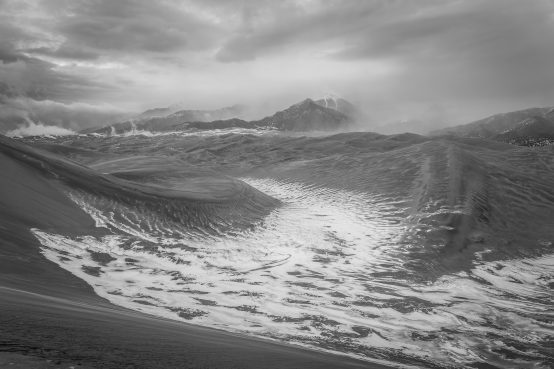
Desert Landscapes, Winner
Louis Ouimet, CA
You usually don't go to sand dunes to get snow photos, but after heavy dump of snow at the Great Sand Dunes National Park that was unexpectedly what I was gifted!
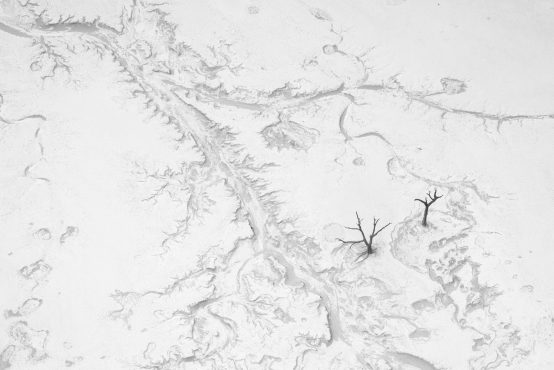
Desert Landscapes, Runner Up
John Meragias, CA
Taken from an open door helicopter, this photo shows two trees alone in a dry and desolate landscape. These trees have actually been dead for hundreds of years and have been permanently frozen in time together.
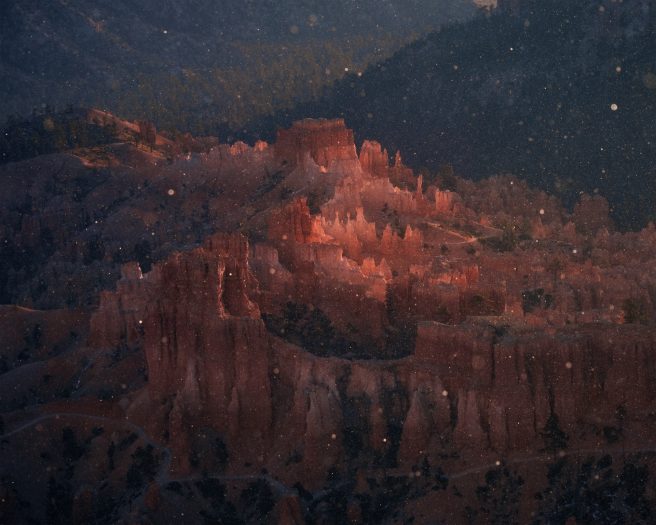
Desert Landscapes, Third Place
Prajit Ravindran, US
In January of this year, I had planned a trip to Bryce Canyon. There was no forecast of snow, but I hoped for fog instead and went anyway. On this freezing morning, I was greeted with snow flurries instead. As I was photographing this magical scene, I heard the words - "I guess we are the only crazy ones to be around here this morning" from the only other person I saw that morning, who happened to be a landscape photographer too.
Frozen Worlds
There are few things that sprinkle the landscape with magic to compare with the simple effects of sub-zero temperatures. From snow and ice to frost and atmospheric halos, the freezing cold transforms our world. Our winning image shows sundogs above a wonderful, flowing snowy landscape. Makes me eager to see what winter will do this year!
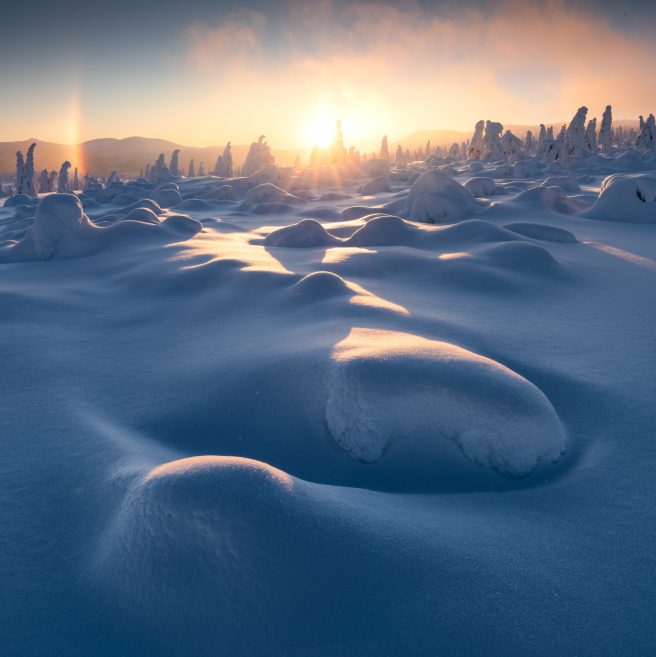
Frozen Worlds, Winner
Vojtech Schmidt, CZ
At first, this didn’t feel like an obvious scene. But when the sun rose and golden light began to spill across the fresh snow, the whole scene came together. The halo effect caused by drifting snow was the cherry on top – a reward after a long, frigid night.
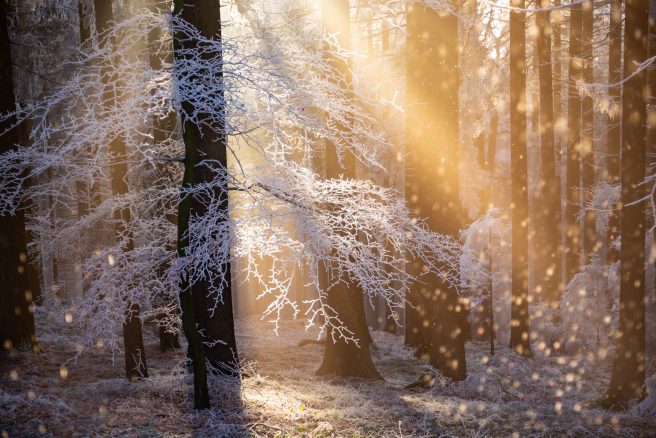
Frozen Worlds, Runner Up
Rupert Kogler, AT
Areas where sun and fog merge are always worth a closer look, especially in the woods. This particular day I just went out to a forest close to my hometown and I was lucky enough to experience these conditions, but not enough of that, the sun was already very low and the light was warm. But the most mesmerizing thing actually was, that the sun melted the hoar frost in the tree tops and these particles of ice finally fell down as a glittering curtain from time to time.
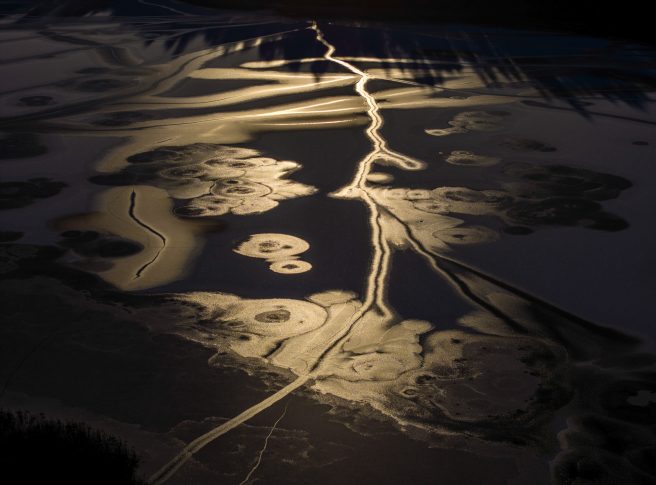
Frozen Worlds, Third Place
Pal Hermansen, NO
The low winter light plays over the ice surface, revealing an otherwise unseen world.
In Your Backyard
We've had a similar category called 'common places' before as we figured that people might live in Yosemite (or Glencoe for that matter) and in your backyard doesn't mean much beyond luck/good planning. However, I think people understood the task and we received some really nice entries that we think represent the skills of the photographer in finding gems in the mundane and using their skills to make the most of them.
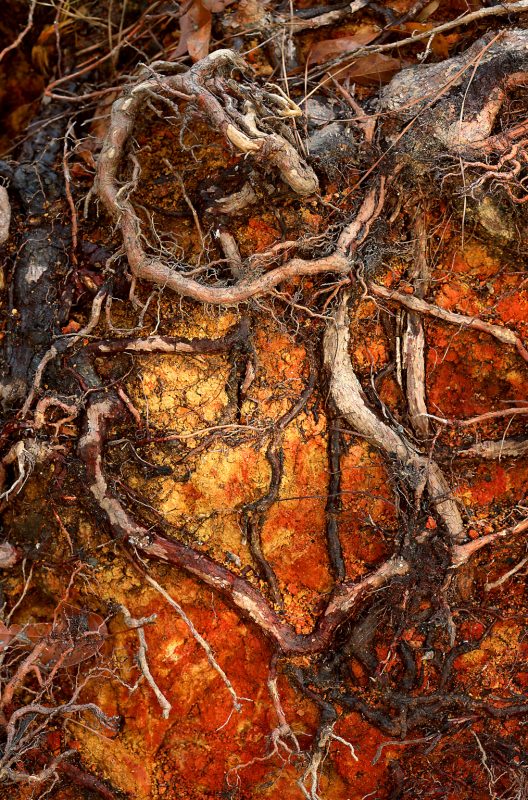
In Your Backyard, Winner
Patrick Krohn, US
The roots of this pine tree were exposed after it was toppled when Hurricane Helene hit South Carolina with wind gusts over 70 mph in late September 2024. Thousands of healthy trees were delimbed or uprooted, and cleanup efforts of the wreckage took months. Evident that this image was taken in January 2025, and this tree was finally removed in February – five months after the storm.
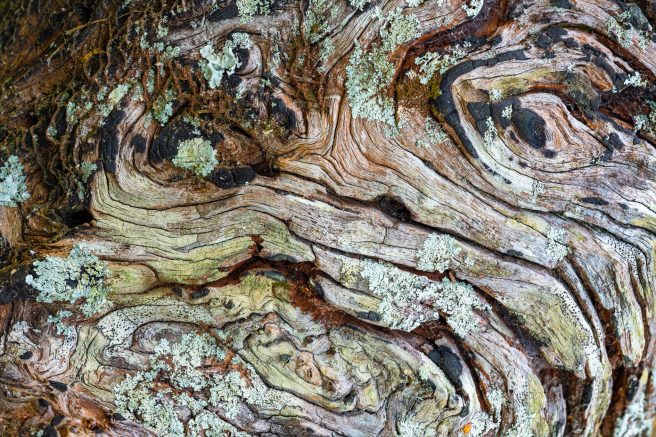
In Your Backyard, Runner Up
Anton Gorlin, AU
I like finding the unusual in the mundane, whether it’s pareidolia or a sudden metaphor. In this case, it wasn’t just an old tree. The moment I saw it, I saw Jabba, slouching into the landscape like he'd always been there.
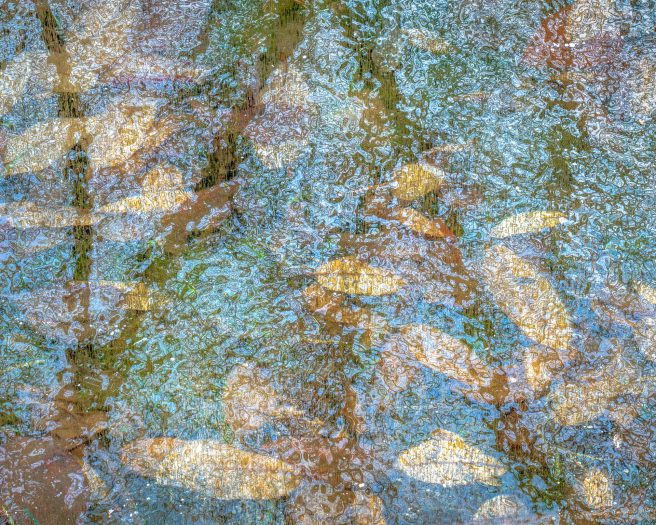
In Your Backyard, Third Place
Jack Krohn, US
This image is from a memorable outing to a local park, where I often take our dog for exercise and enjoy exploring as the seasons change. During a cold snap in January, the shallow pond that forms during winter rains froze over, creating irresistible conditions we don't often see in the lowlands of Puget Sound, including this scene of leaves encased in ice. I felt that the reflections of the surrounding bushes and sky added interesting structure and an unexpected color palette, while the complex ice textures contributed a sense of impressionism to the image.
Mountains
With myself, Matt Payne and Alex Nail on as organisers, we felt we had to have good representation for mountain photography. Even though it often does well in the grand scenic category, I think our opportunity to recognise a few extra images doesn't go amiss. Especially when we have a winner like Ross' image!
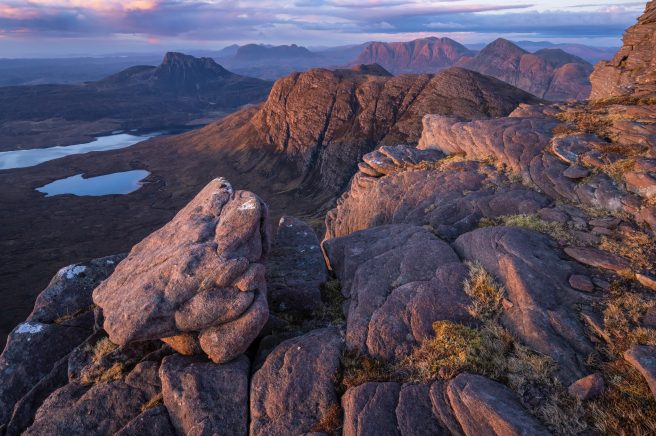
Mountains, Winner
Ross Davidson, GB
The view from 'The Fiddler' is arguably one of the greatest in Scotland, with the excellent vantage point of the spectacular, monolithic peaks that rise abruptly from the expansive landscape of Assynt and Coigach. The image was my attempt at creating an intricate, detailed and unique composition at what is a relative 'classic' - as far as mountain photography in Scotland is concerned, at least! Hopefully, you agree that I have achieved that.
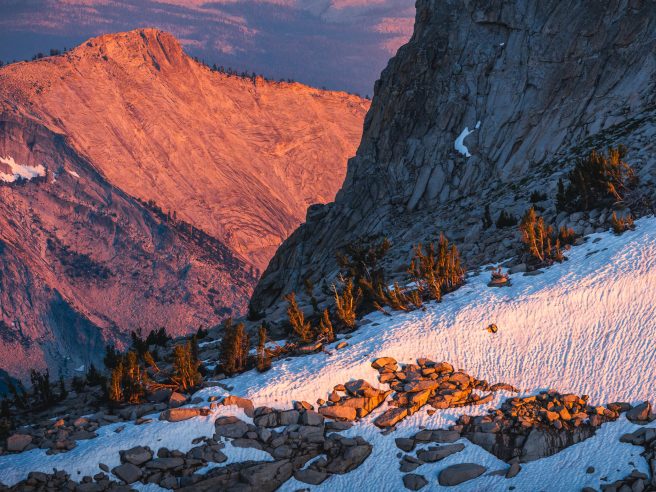
Mountains, Runner Up
Scott Oller, US
I love the thrill of watching the sunset from high on a remote mountain, knowing that a long descent in the dark awaits. This distant view of Cloud’s Rest, framed by a glowing ridgeline, caught my eye with its vibrant colors and angular lines.
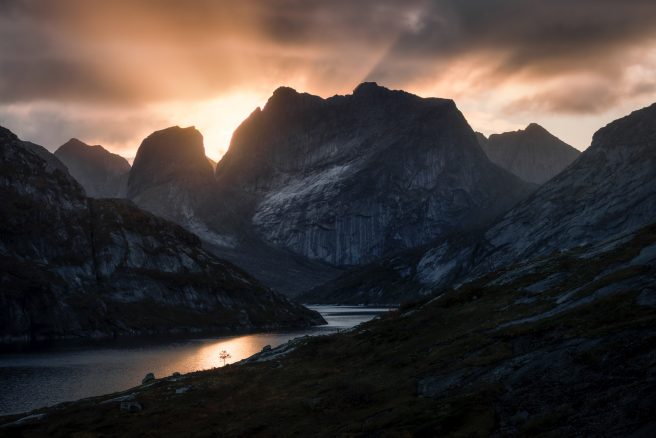
Mountains, Third Place
Lukáš Veselý, CZ
This is the most majestic places in Lofoten, Norway but it is not right by the road so hardly anyone knows it.
Rocks and Geology
The quarries loss was our win for our first place image. In South America, a marble seam was found that eventually was recognised as too poor for mining. Instead, you can kayak around the edges of the formation and find views like our winners. It's also great to see some excellent black and white photography represented (in our woodland category too!)
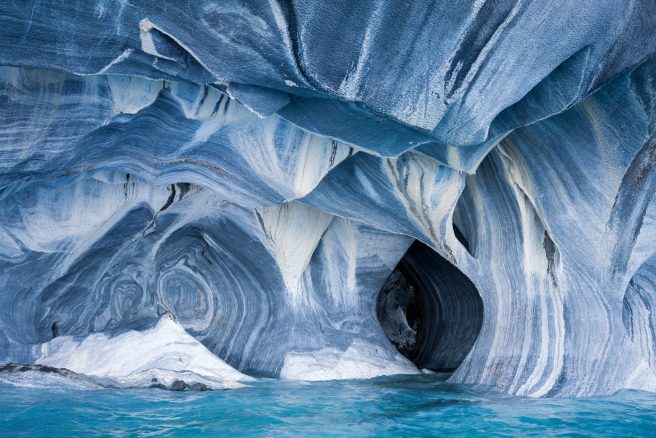
Rocks and Geology, Winner
Spencer Cox, US
The enigmatic patterns of these marble caves struck me as telling a story of creation: growing trees, ancient mountains, swirling galaxies. After taking this photo, I learned that that the marble in this scene was only saved from mining because it is considered "low quality." I wonder, then, how many other remarkable scenes have vanished in service of our countertops?
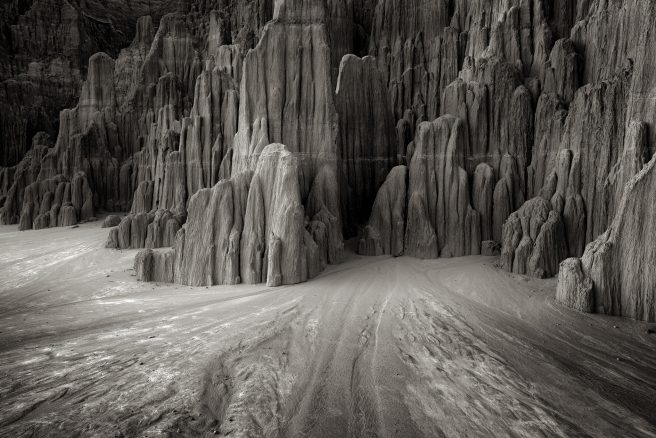
Rocks and Geology, Runner Up
Doug Hammer, US
Exploring the reflected light and shadow on the unique patterns of the soft clay walls, Doug beautifully displays the wonder of this gorge. Sadly, he passed away in July 2025 before learning of the contest results. He would have been incredibly honored to know his work was included with this year's winners.
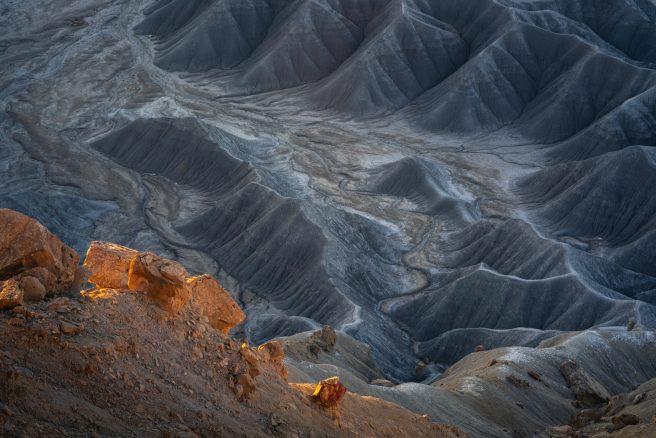
Rocks and Geology, Third Place
Torsten Pull, UK
The image was taken on a Mesa in Utah on a freezing December morning (-10C/14F). Hiking up in the dark to this amazing place was an interested experience. The scene that unfolded before me was definetely worth the effort.
Seascapes
There is a particular skill in capturing engaging seascapes. Often we end up with awkward, extreme wide sunset images that don't do the experience of exploring our coast line justice. Lizzie's image as a great example of an image that evokes the softness of a Hebridean slack tide. Allowing the Lewissian gneiss to blend into the soft breakers and on toward a bubbling sky.
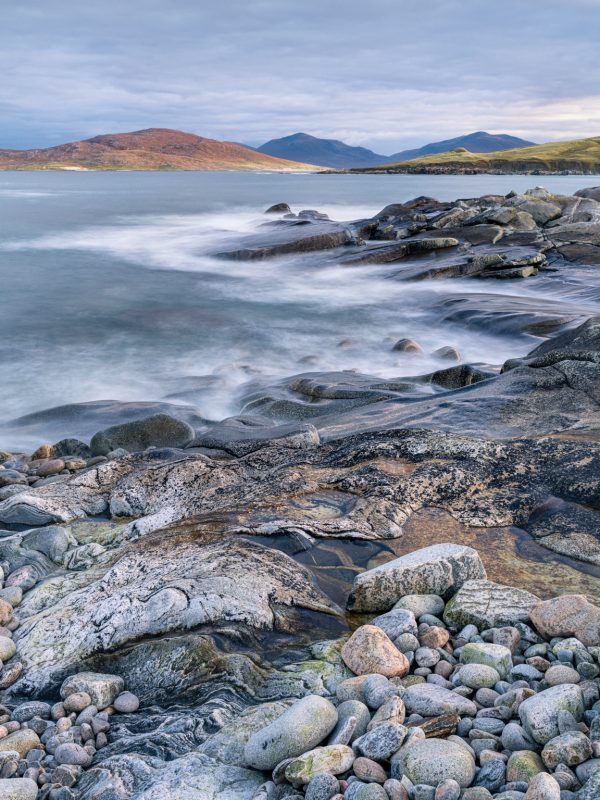
Seascapes, Winner
Lizzie Shepherd, GB
Harris is perhaps best known for its pristine, sandy beaches, but I am always drawn to its extraordinary rocky shoreline, made up of Lewisian gneiss formed millions of years ago. The challenge is to marry that complex and beautiful foreground with the wonderful backdrop of the Harris Hills in the distance. This is the closest I've come yet, but it's work in progress!
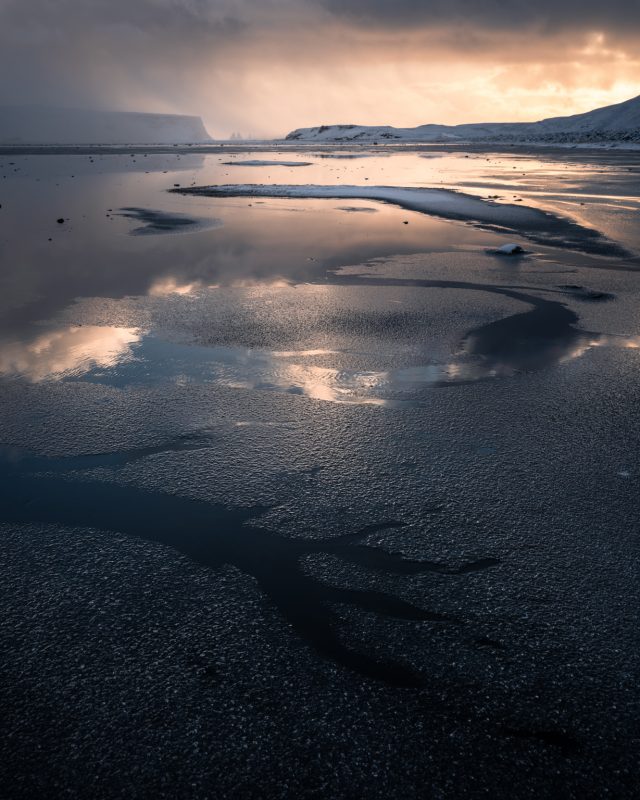
Seascapes, Runner Up
Philipp Jakesch, AT
I had to stop the car—the landscape was just too incredible to pass up. The soft, wet snow in the foreground made for a challenging shot, but I loved carefully lining up the beautiful, branching puddle with the famous Icelandic landmark far in the distance.
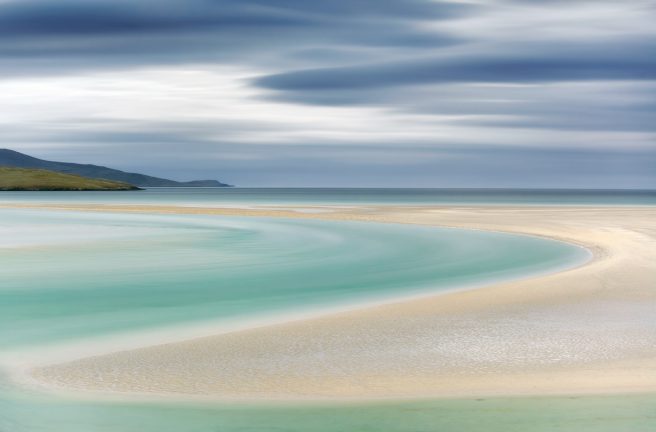
Seascapes, Third Place
Robert Birkby, GB
A photograph captured at the end of a summer's day on the Isle of Harris, Scotland. The light was fading and a long exposure time of two minutes was used to smooth the ocean and clouds, which seemed to complement each other perfectly.
Tropical Landscapes
The tropical landscape category was a little undersubscribed but we had a few really interesting images. Matthia Libor's excellent palm tree image is a classic and Grégoire's Canary Island view handles that harsh equator light so well.
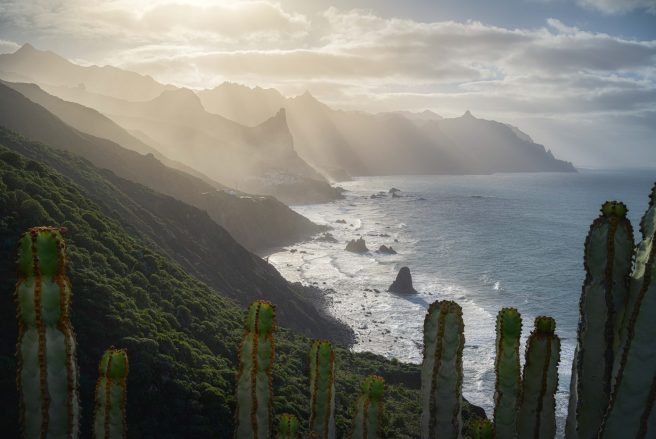
Tropical Landscapes, Winner
Grégoire Pansu, FR
I captured this image in northern Tenerife, at a location I had long hoped to revisit after a first attempt years before, when conditions weren’t ideal. This time, the clouds parted at just the right moment—only for a few fleeting minutes—allowing me to frame the sharp cliffs through the stems of a solitary cardón cactus.
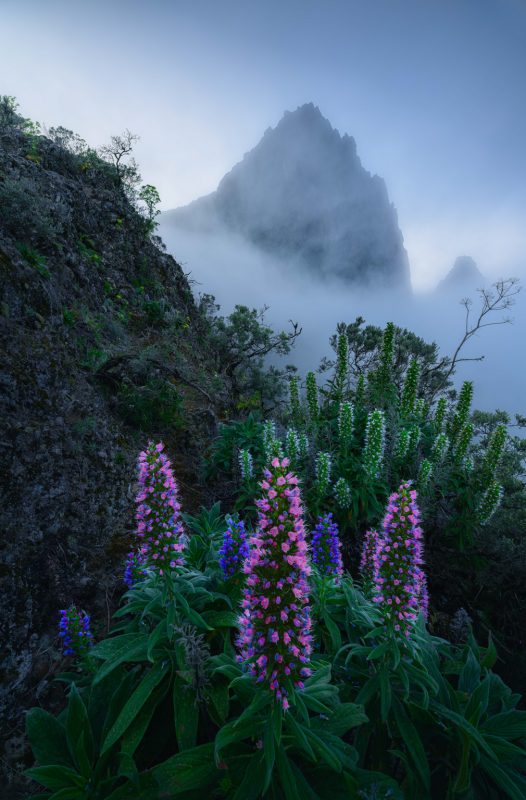
Tropical Landscapes, Third Place
Grégoire Pansu, FR
The small corollas clinging to the flower stems reminded me of jewels, so delicate and colorful, displaying shades ranging from pure white to deep purple. I particularly loved the composition as these well aligned floral stems echo the pointed peaks in the background, creating harmony between the foreground and the horizon.
Woodlands
Kenny Muir's frost limned Scot's Pine is a classic. The contrast of shadow and bright white outline is uncanny and the background, with it's hanging sunlit mist provides a great scene by itself. Franka's split Yosemite black and white is another captivating image, so well seen and Andrea's frosty willow has a uncanny glassy quality.
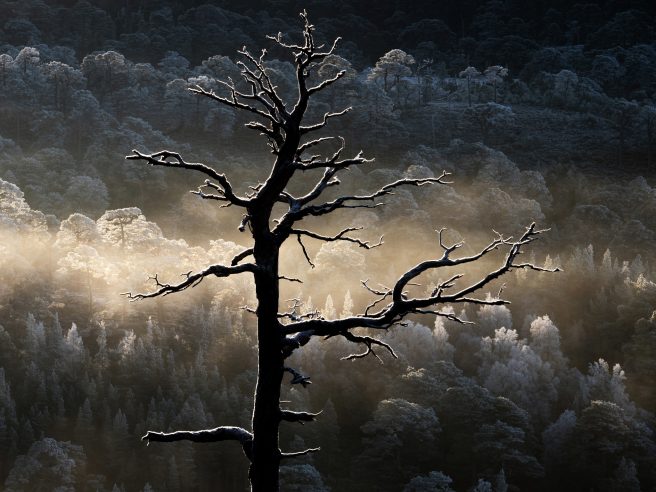
Woodland, Winner
Kenny Muir, GB
A dead Scots pine tree can remain upright for many decades as its high resin content and dense heartwood provide resistance to decay. This photograph was captured in Scotland's ancient Caledonian Forest during an exceptionally cold start to winter. The backlit frost on the pine snag made it a striking presence against the frozen woodland beyond.
Issue 338
End frame: Old Coastguard House, Ynys Llanddwyn, Anglesey by Porl Medlock
In 1978, I started at an art college in Yorkshire. After one year of foundation, I chose photography, knowing already that this was going to be my life’s passion.
With my fellow photography students, we as second years were in a kind of common room/studio space with the third years, and once there, I immediately met and became best friends with Porl Medlock. Porl was younger than me, but in the year above because he started there after school, whereas I had worked for a few years.
Porl’s photography was a big influence on me from the start; he showed me how to appreciate good printing and told me about great photographers of the past, such as Bill Brandt, Edward Steichen, and Edward Weston. He also showed me photographers who were doing interesting work at the time; Sarah Moon, Bob Carlos Clarke, and Raymond Moore. We stayed in touch after college finished and have seen each other regularly for about 45 years. Porl does a lot of landscape photography, though he does other stuff too, like portraiture and press work. He mainly shoots 35mm, though he has been shooting 5x4 and 5x7 for the last few years. This picture is quite typical of him, but also has echoes of Cartier Bresson, not that he copies that style; this one just reminds me of CB’s work because of the running boy.
4×4 Landscape Portfolios
Welcome to our 4x4 feature, which is a set of four mini landscape photography portfolios which has been submitted for publishing. Each portfolio consists of four images related in some way. Whether that's location, a project, a theme or a story. See our previous submissions here.
Submit Your 4x4 Portfolio
Interested in submitting your work? We are always keen to get submissions, so please do get in touch!
Do you have a project or article idea that you'd like to get published? Then drop us a line. We are always looking for articles.
Franz Gisin
California's Auburn SRA
Goran Prvulovic
Watershed
Kenny Muir
Ancient birch woodland - a seasonal study
Tom Zimberoff
The Giant Camera at Land's End, San Francisco
The Giant Camera at Land’s End, San Francisco
The liminal interface of seawater, sand, and sky inspires a construct of consciousness, the space in which everything appears, the light by which everything is seen. It beckons my camera.
Throughout my career, I focused primarily on portraits. Once in a while, I’d point my lens at a landscape, seldom before at the sea.
I used to think of the beach as a background. Now, it’s a theme. With a fresh eye, the upshot of my long hiatus from photography, and given the proximity of my Outer Sunset neighborhood to Ocean Beach in San Francisco, I’ve discovered a rhythmic confluence of color and time that pulls me in like a riptide. As evanescent as it is powerful, this phenomenon can only be depicted with the unblinking eye of a camera adjusted to thwart its mechanical intent to stop time.
As paradoxical as it might seem, the most visually appealing characteristics of movement for me, notwithstanding dance, can only be seen when arrested and confined within the two-dimensional frame of a photograph. With that in mind, I can combine two techniques to achieve a singular illusion. One freezes time; the other melts it.
Photographers share their artistic vision by creating windows. A photograph is a window left open, an invitation for viewers to sustain a lucid dream. Its reality transcends language. For instance, a mirage exists by definition; the dictionary assures us it is real. But can you measure the depth of the water it pretends to be?
This particular series, from a larger set of Ocean Beach seascapes, depicts the Giant Camera, perched high atop Point Lobos at Land's End, San Francisco. Adjacent to my Outer Sunset neighborhood, this scene is walking distance from my house, where I have depicted many sunrises and sunsets—and in between.
The Giant Camera is a human scale, walk-in camera obscura perched on the cliffs behind the historic Cliff House. Built in 1946 by a local entrepreneur, it was inspired by a 15th-century design attributed to Leonardo da Vinci. Inside, it projects a live, 360-degree view of the Pacific Ocean, Seal Rocks, and Ocean Beach onto a parabolic viewing table. The rotating mirror system atop the structure completes a full revolution every six minutes, offering a dynamic and immersive perspective of the surroundings. It is like literally walking inside a camera—you are the film (or digital sensor). The Giant Camera was added to the National Register of Historic Places in 2001.
Ancient Birch Woodland – a seasonal study
I'm not really a bucket list person. I often find myself at the same locations, where every visit reveals something new. This is a short series of 4 images taken in a local ancient birch woodland across the seasons.
The first photograph is in mid spring when the birch leaves are luminous and delicate. The greens deepen, and by the end of summer, the heather (Calluna vulgaris) is in full bloom. In autumn, the colour from the heather subsides, and the blaeberry (Vaccinium myrtillus) injects a vibrant red, as the birch leaves turn to gold. Snowfall, which is becoming increasingly rare in winter, leaves an almost monochromatic scene, except for the abundant green lichen (Usnea filipendula).
Watershed
I am fortunate to live in a city founded and developed on the banks of the two rivers. Besides supplying fresh water for the city, rivers host many bridges, parks, viewpoints, bicycle and hiking paths, beaches, and watersheds. Too small for sailing and large boats, these mountain rivers are perfect for rafting and fishing. There is no question that the city’s social life happens at the riverbanks.
One of my favourite spots is just 30 minutes from my house. A small bend in the river, where ducks swim, trails through the shallows and all manner of birds can be heard, especially at sunset. Here, the hectic noise of the city falls away, replaced by the stillness of dusk and the soft lullaby of the gentle river and its animals, who call it their home.
While just a small part, this river is part of a bigger watershed I’ve explored many times. Constantly changing with the seasons, this spot is never the same yearly. The subtly changing ecosystem here, in some ways, is a mirror of my own life and how my photography has evolved. I still look for beauty, but instead of chasing it across the Albertan landscape, I now let Mother Nature's beauty come to me.
These pictures represent not a small bend in a river but a momentary bookmark of a living journal of nature. Sometimes, people ask why I keep returning to the same place repeatedly. I tell them it is never the same. I want to witness its story. Every image I take here is not just a photo—it is part of a promise to pay attention, speak up through pictures, and protect what still flows.
California’s Auburn SRA (State Recreational Area)
Over the years, I've accumulated a fairly long list of favorite day-trip-sized go-to locations. A large majority of them are in places firmly anchored in geologic time. But at the same time, it was filled with vibrant energy that ebbs and flows in harmony with the seasons, the weather, and the position of the sun. In this case, California's Auburn SRA (State Recreational Area), where the intersection of two Sierra Nevada mountain canyons allows the north and middle forks of the American River to merge.
Curiosity has always been one of my favorite collections of positive emotions. I'll be strolling through life, absorbed in deep thought, when my eyes will see something interesting. And in a split second, faster than I can consciously comprehend, my curiosity will take command and start detouring in for a closer inspection. It’s the reason why I find small scenes of nature's intricate patterns and textures more interesting than epic, eye-popping, large-scale vistas. And why my 100 - 400 mm telephoto lens is my favorite lens because it allows me to zoom in on subjects that are not accessible by any other means. As you can see from these four images, this location perfectly fits my preferred compositional style "to a T".
As Long as I Can
Meersburg is just a name on a list. Just a name on another list I wrote, approved by someone else, and photographed in my own way.
This list took me here, and so here I am, feeling the chilling wind from the old window nearby, blowing on my right arm as rain hits the outside pavement. That outside pavement I should walk on to get to the viewpoints I intend to photograph under glowing sunlight.
It is the third time I wrote Meersburg on the list, but the weather keeps defying me.
Print Your Legacy
A Study of the California Desert
It's Tim Parkin writing, I just wanted to take a moment to give some background to my experiences with digital book printing. I have looked at this process in the past (over a decade ago) and was fairly quick to eliminate it for anything serious, and the thought of using it to print fine art black and white photographs was laughable. At the time, the only offer in town was Blurb, and it was fair to say that the results were poor. The screen (dot pattern) was coarse, the inks were not particularly vibrant, and the accuracy of registration meant that colour shifts were common. At the time, it was CMYK offset litho or the highway! Since then, I’ve seen a couple of pretty decent catalogs and one book pass by my desk, but it was when I was at Johnson’s of Nantwich that I discovered how much this printing methodology had improved. John Macmillan made a proof printing of our Natural Landscape book, and I was very impressed at both the colour accuracy and the fine detail.
I was equally surprised and pleased when I received my copy of Michael Gordon’s book, and initially thought it was actually litho as the telltale magentas and greens of the previous black and white prints I’d seen on digital were totally absent. I spent a few minutes with a loupe going from page to page until I finally said “that’s good enough”.
I’m obviously not saying it’s good enough to replace platinum printing, tritone litho or toned FB prints. What I’m saying is that it’s good enough to portray acceptable reproductions of good photography that I’m willing to spend some of my own money on it. It’s good enough to communicate your photographic ideas to your audience. It’s good enough to forget about and enjoy the quality of the photographs.
So that’s what I did for the next hour or two. I spent a while with Michael’s black and white photographs of the California desert’s less mobile occupants. And there are some sublime images in here, from pictorial swirls of my favourite Juniper photograph taken with Michael’s Wollensack Verito lens (whose ownership and use I’m a little envious off) to more contemporary portrayals. I particularly enjoyed the narrative throughout, opening a window into those desert Denizens that Michael obviously loves so much (apart from maybe the cholla cactus - devious little things!).
The fact that the work is up to Michael’s high standards is a testament to how much digital printing has improved in the last decade or so, and it’s well worth a purchase (if postage to your location isn’t too onerous!).
Tim Parkin
An affordable, low-risk alternative to traditional book printing.
A photography book, or monograph, has always been the most affordable and uniquely personal way to own and to study photographs. For photographers, monographs allow more of our images to reach more people than any exhibition ever could. And for the cost of a single print, a number of monographs could be added to a book collection, potentially containing hundreds of photographs. Many photographers enjoy robust book collections and libraries whose inspiration we can return to again and again. Is there a photographer out there who hasn’t dreamed of making their own?
One of the first things the fine art coffee table photography book aspirant learns about self-publishing is that the cost of producing your dream book can run into the tens of thousands of dollars, depending upon your book’s specifications (physical size; page count; dustjacket or linen cover; etc.) and your threshold for quality. Self-publishing is neither easy nor simple: You might spend upward of a year or more at your computer constructing your book, and you may believe your toil is finally over when you submit your final PDF to the print house. But palettes of books will soon arrive, and they will not sell themselves.
In early 2009, Brooks Jensen of LensWork published an essay titled “Some Unvarnished Truths About Book Publishing” that directed me toward a course of prudence. My data awareness and fiscal conservatism are far larger than my ego, so I took Jensen’s numbers and words with great caution and shelved any ideas about producing a large, high-end coffee table book until some unknown time in the future. For this article, I adjusted Jensen’s 2009 numbers to today: as of 2024, 80% of books published do not earn back their advance, and 90% of books published do not make a profit (all books; and photography books don’t do as well as other categories). The destabilizing hit my ego would take would be far greater than any reward I could imagine if I were to produce a “remaindered” book (those $5 undersold blowout specials found at brick-and-mortar bookstores) or one that I would be left with unsold cartons of in my garage. These numbers should be an even more critical consideration to you if your book and content are more niche-oriented than of universal appeal, as is the case with my latest book, Denizens.
Michael Kenna’s Darkroom Diaries
These words and thoughts from Michael Kenna about the traditional analogue printing process are the result of his personal experiences of working in darkrooms for over half a century. They have provided me with extremely useful insights and background information that has greatly enhanced my appreciation of his exceptionally fine silver gelatin prints which I have been very pleased to exhibit at the Bosham Gallery. Today, in the third of five chapters from his Darkroom Diaries, Michael focuses on grain, cropping and toning.
“A few thoughts on ‘grain’ which is the optical texture of the negative as shown on the print. Grain has become a thing of the past in digital photography but is still prevalent in silver photography. In my experience of seeing particular films come and go, there seems to have been a quest over the years for faster films, lower grain, better resolution and higher acutance. I suppose these are predictable goals for film manufacturers who have tried to eliminate grain as much as possible. Technically, grain increases with smaller and faster films, and with certain developers. Grain appears more pronounced with larger prints and with higher contrast. Grain also appears stronger on large flat areas of grey tonality, rather than in detailed spaces. A 35mm film printed on 8x10 inch paper will go through an enlargement factor of 58. The same film printed on 16x20 inch paper will be enlarged by a factor of 232. The higher the factor, the stronger the grain.
Personally, I have always liked grain in my prints. I regard it as part of the language of photography, almost like a brushstroke. In my early work, I purposely tried to emphasize grain through overexposed and/or over developed negatives. Sunset, Middleton Cheney, Northamptonshire, England 1974 is a good example of this. Certainly, grain obscures detail, but I don’t use photography to be a mirror of the world, and have little interest to be a recording machine, faithfully trying to duplicate everything that I see. Suggestion, interpretation, and evocation are more important to me than accurate description, and I have tried to use grain as an ingredient of that equation. Using the analogy of writing, I aim for haiku rather than an encyclopaedic description. Neither is better or worse, both are valid, they are personal choices in communication.
A quick word about cropping. Perhaps one of the most important and underrated tools in the studio is a set of L-frames. Of course, there is no need to crop if an image fits perfectly into the frame. This avoids over-enlargement, excessive grain, loss of acutance and resolution. However, I believe that photography is a subtractive process, where intelligent cropping, all the way from the initial photographing to making the final print, is very important. Cropping is a valuable continuation of the creative editing process begun when we first cropped, or edited part of the world, for our negative. What we leave out is sometimes as important as what we leave in.
For interest and as a reference: the 35mm format (36x24mm) was originally created by Leica because it doubled the size of existing motion picture film (18x24mm). It was essentially a business and financial decision to use the existing sprocket holes for their first small format cameras. 8x10 inch was the existing American standard plate glass size. A 4x5 inch negative was a convenient quarter. The standard sizes of printing papers are: 8x10, 11x14 and 16x20 inches. The bottom line is that the world does not always fit into these convenient formats. As creative individuals there is no reason to conform to somebody else’s prescribed format. We can, if we so choose, compose to the subject matter, both when photographing and printing.
The photographer David Vestal talks about Procrustes, the ancient Greek, who would have guests over for the weekend. He had one guest bed which his guests had to fit into - exactly. The bed was not adjustable, so he adjusted his guests. Those too short were stretched out, and those too long had their feet chopped off! I sometimes feel that we photographers often do the same in order to fit our images into a specific format. Then again, it is well worth acknowledging that many master photographers have printed their work full frame, often with the black lines marking the edge of the image. I immediately think of Henri Cartier Bresson, Olivia Parker, Richard Avedon, and there are so many others. I cannot say it enough, we each make our own personal choices.
Back to the darkroom… after the development, stop bath, fixing and washing of the prints, I always tone my prints slightly with either selenium or sepia toners, or both. For the most part, I now use only sepia which is a two-bath process. The first bath contains Potassium Ferricyanide (bleach) and the second Sodium Sulphide. I try to tone the highlights of a print and leave the shadows quite cold. I have found it makes the print more three dimensional. There follows a final wash before a print is ready to be squeegeed and air dried on screens, before being flattened, usually the next day, in a heat press.
I have printed consistently for 50+ years now and should expect to be reasonably competent. I have printed commercially, in both black and white and in colour, and I have printed for other photographers in their respective styles of printing. However, even now, with all this experience, it sometimes takes me two or three sessions with a new negative to get a print that I am fully satisfied with. Fortunately, on more productive days, I can also often print a negative in 3-5 hours. Normally, no matter how confident I am, I make a few extra prints, some of which I consider a bit too light, and others a little dark. Dry down is an important consideration. A wet print is different than a finished dry print. Ansel Adams, for example, used a microwave oven to dry his test prints. The final decision on a print will be made in the cold hard light of the next day, or next week, or the following year after the print has been toned, washed, dried, flattened retouched, mounted, matted and perhaps even exhibited. There is always the possibility of a change of mind. I suspect that time will always be the best judge of a print.
Michael Kenna, 2025
Retired Negatives by Michael Kenna
Retired Negatives by Michael Kenna is an online exhibition of his most collected work over the past 50 years, featuring the remaining Artist Proof editions of photographs whose numbered limited editions have now sold out.
The collection is a chance to acquire a print from editions in which the negative has been formally retired within Michael’s archive. All of his silver gelatin prints are still made by him personally in his darkroom at his home in Seattle. The online exhibition is hosted by Bosham Gallery and can be seen at boshamgallery.com until 17th December 2025.
‘Machine-made pigment prints are of excellent quality, but, at least for me, silver prints remain the gold standard in photography,’ says Michael. ‘It is also comforting to know that these prints are made to archival standards, which means they should well outlast myself and collectors. I keep records of every print I have signed and editioned and have prints in my own collection which I made 50 years ago. They are as good today as when I first made them.’
To accompany Retired Negatives, and to celebrate 50 years of darkroom printing, Bosham Gallery’s Luke Whitaker is presenting a five-part series of chapters from Michael Kenna’s Darkroom Diaries.
Please visit boshamgallery.com to see the online exhibition.
Author image: Michael Kenna Photographed in 2011 by Song Xiangyang © All Rights Reserved
Any Questions, with special guest Jon Gibbs
The premise of our podcast is loosely based on Radio Four's “Any Questions.” Joe Cornish (or Mark Littlejohn) and I (Tim Parkin) invite a special guest to each show and solicit questions from our subscribers.
Tim Smith
We often get so caught up in our passion for photography that we assume others’ inspiration comes solely from being outdoors or viewing photographs of landscapes. However, speaking to Tim Smith, it’s particularly interesting to learn that his vision and style of images are greatly influenced by his own long-term enjoyment of sketching and painting, and from landscape painters. In our interview, we learn how creativity has never been far away, and how his practice is continuing to evolve.
Would you like to start by telling readers a little about yourself – where you grew up, what your early interests were, and what you went on to do?
Hello, my name is Tim Smith, popular by name, common by nature. A born and bred Derbyshire lad from a village not too far from the market town of Chesterfield, England. I’ve lived here ever since with my wife, my now-grown-up son and daughter, my mother, and, of course, Jake, our ever-so-energetic Border Collie.
With the countryside literally at the front door, and the eastern edge of the Peak District National Park just a couple of miles down the road, cycling and hiking played a large part in my time growing up. Music and the movies, especially an affection for film music, played a large part too, which I now tend to listen to while editing photos.
An interest in science and technology took hold of me from an early age, remembering back to the days when I so keenly wanted to become a cameraman for the BBC or a sound engineer. Eventually, however, I ended up attending my local technical college to study electrical engineering, which ultimately led me into the construction industry, running my own business.
Issue 337
End frame: Arran Light by Dylan Nardini
Being asked to write about a favourite photograph is really difficult. For a start, I’ve come to realise that I simply don’t have one. Part of that is because I came to photography late and whilst many people will revert back to historic stalwarts such as Ansel Adams as their influences, when I started out I had very little idea of his work and others of that ilk. I’d heard people talk of people from our own generation whose names now trip off the tongue - Bruce Percy, William Neil, Guy Tal, Charlie Waite, Joe Cornish, Mark Littlejohn - all incredibly influential published artists who regularly fill these pages and from whose portfolios I could easily have chosen a photograph. But to tell the truth, when I first started down this path, I really had no idea who they were. I probably knew more Instagrammers than serious photographers, although to be fair to one or two of them, they still taught me a few tricks along the way.
So, flicking through some books and social media, I looked back at some of the images that had jumped out at me over the last few years and as much as I remembered recent photographs, such as Stuart McGlennon’s hoar frost image from a winter or two back, I decided to go with something much closer to home.
Dylan Nardini is a friend and someone I’ve been on photo trips with, so I know a few of his images. However, one in particular resonates with me, perhaps because it’s the type of landscape photograph that I wished I was taking on a regular basis. “Arran Light” was one which helped win Dylan the title of Scottish Landscape Photographer of the Year in 2021. Although Dylan is very creative in his work, often experimenting with different techniques such as Polaroid lifts and multiple exposures, this image stands out for me because it is pure landscape. Everything you want in a Scottish landscape photograph is there in one click of the shutter. The windswept tree, a barren hillside, stormy rain clouds enveloping the mountains beyond and of course the colour and drama provided by the double rainbow, which balances the tree perfectly. It is so simple yet it draws the eye in every time.
Sea
For years, John Ash and Paul Gotts would ask me, “When are you going to publish a book?”
And for just as many years, I’d shrug it off with a casual, “Maybe one day.” The truth? I was battling imposter syndrome. Like many photographers, I often see my work through a harsher lens than others do. Nothing ever felt quite good enough. But over time, I’ve come to understand that this relentless self-critique isn’t entirely a flaw—it’s part of what drives growth.
Last year, I helped John and Paul bring their book Home to life. (John and Paul have collaborated on other books: New Beginnings, 2021, and LITTORAL, 2023) I managed the printing for the handmade editions and curated the accompanying prints. Somewhere along the way, the question shifted:
“When are you doing yours?”
In a moment of quiet courage, or maybe just a lapse in hesitation, I said yes. The deal was simple: I’d provide a body of work, and they would handle the editing. I pulled together a large collection of black-and-white images, my true passion and the medium I’m most known for.
So, what changed my mind?
In short: a desire to give back. In 2021, my mum was diagnosed with dementia. Looking back, we missed the early signs; she’d likely been living with it for longer than we knew. Eventually, we moved closer to support her until she could no longer live independently. Around that time, I began selling prints to raise money for Dementia UK and managed to raise over £500. When the idea of a book came up, it felt like the perfect way to do more.
My photography isn’t meticulously planned. I tend to head out, explore, and see what I find. I didn’t set out to create a book, but Sea emerged naturally. Most of my work is coastal and monochrome, and the sea has always drawn me in. I think it’s the simplicity. The coast allows me to forget the noise of everyday life. I focus on light, shapes, and patterns, all while listening to the soothing rhythm of the waves.
I was fortunate to have John and Paul guide the initial editing and sequencing. Their experience was invaluable, especially since sequencing was new territory for me. In the end, only a few changes were made, mainly to smooth the transition from natural seascapes to images featuring manmade structures.
One of my favourite images in the book is of Roker Pier. Not because it’s technically my best, or because it’s sold well, but because of the memory it holds. After Mum’s diagnosis, when she could still walk, I took her to places she’d never been.
Photographs that evoke memories are special. Whether they’re from years ago or just last week, they remind us of moments we might otherwise forget. Like the image I took at St Andrews beach. It was a calm morning, barely anyone around, just a few dog walkers. For a few minutes, I felt completely at peace, as if the world had paused.
My biggest hurdle was myself: was I good enough? Would anyone even want this book?
The support from John and Paul made all the difference. One day, a surprise package arrived: the first draft of Sea. It stopped me in my tracks. My work beautifully edited, thoughtfully sequenced. For the first time, I felt proud.
The foreword, written by my friend and incredibly talented photographer Andrew Gray, was the perfect finishing touch.
Then came the hardest part: promotion. I’m not a marketer. I don’t have a massive social media following. I had no roadmap. So, I just started sharing daily posts, relying on word of mouth, and asking friends and family to help spread the word. I got featured on internal company channels, and slowly, opportunities followed. Euan from Biblioscape invited me on his podcast. Andrew Banner created a vlog about the book.
The support from the photography community has been overwhelming. People like Mark Littlejohn, Doug Chinnery, and so many others helped amplify the project. I’m endlessly grateful. I wish I could name everyone.
The book is now available in four purchasing options:
- Standard edition at £25.00
- Signed standard edition at £35.00
- Signed standard edition + 1 print at £60.00
- Signed standard edition + all 4 prints at £120.00
Postage and packing is £5.00 (UK), £10.00 (EU) and £20.00 (USA/Canada)
As a very special bonus, anyone buying a book and at least one A4 print will be entered into a draw. The winner of the draw will be able to choose their favourite print from the entire book and have Andrew print it out onto A3 paper together with his signature. The chosen image will never be printed again at this size, so it will, in effect, be an edition of 1.
Flowerscapes
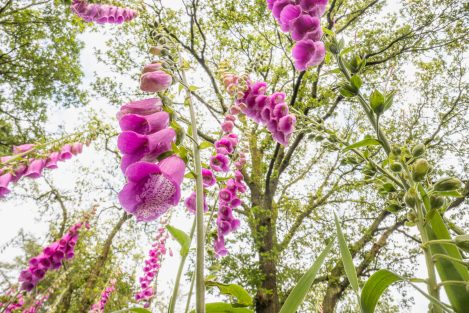
Foxglove (digitalis), photographed along the road near Garderen, the Netherlands. Thanks to the spots on the inside of the flower, bumblebees and bees are lured into the flowers to snack on the nectar.
A couple of months ago, my new photo book, Flowerscapes. A Bug’s Eye View was published. A book that - as the title reveals - is entirely dedicated to our wildflowers, photographed from ground level. It is clearly different from my previous photo books in several ways, but nonetheless, I believe it fits very well within my style and my vision of photography.
I had been wondering before what an ant sees when it looks up while walking through a field of flowers? Or a ladybug that has just landed on a flower stalk? And I had been thinking how wonderful it would be to photograph wildflowers from such a bug's eye view! But until recently, this remained only a dream. Cameras and lenses — especially professional ones — were simply too large and bulky, and the minimum focusing distance was often at least several dozen centimetres. But when a long, narrow wide-angle macro lens (the Laowa Periprobe) that can be rotated 360 degrees appeared on the market, I suddenly saw a chance to make the dream a reality. The first results were promising, so I decided to put my other photography projects on hold for a while and devote myself entirely to capturing flowerscapes: flowers in their natural habitat, seen from ground level.
It marked the beginning of a personal journey of discovery through countless flower fields and other places where flowers grow, such as roadside verges, forests, dunes, and parks — mostly in my home country, the Netherlands and sometimes just across the border in Germany or Belgium. This also matched my desire as a photographer to work more locally and to reduce my environmental impact. Most destinations were within an hour’s reach, and in some cases, I could even get there on foot or by bike.
Natural Landscape Photography Awards 2025
It's the Natural Landscape Photography Awards time of year again, and we've spent the last few weeks making final decisions on winners during a long seven-hour judging session on Zoom. A big thank you to Matt Palmer from Australia, who had to stay up from midnight until the next morning in order to synchronise with the Europeans and Americans on our panel. The rest of our judging panel consisted of Jennifer Renwick from the US, Jack Lodge from the UK, Anna Morgan from Canada and Hougaard Malan from South Africa.
For those unaware of the competition, it's a business that myself, Matt Payne, Alex Nail and Rajesh Jyothiswaran set up in order to address the problems we saw with existing competitions, particularly those around rigorous checking of raw files to ensure that you can trust that a photograph actually represents what was in front of the photographer.
This year we were met with one of the best collection of images we've received since the start of the competition. 11,023 photographs from 1,134 photographers spread across 64 countries went through six stages of competition judging, all leading to that final seven-hour live round where we discussed 40 photographs, 10 projects and 10 nominees for Photographer of the Year.
It was a really good showing for female photographers with the top three awards, Photographer of the Year, Photograph of the Year and Project all represented.
We also awarded photographs in the Special Categories, which vary from year to year. This year's categories were Tropical Landscapes, Woodlands, Rocks and Geology, Mountains, Frozen Worlds, Desert Landscapes, Seascapes and the locally oriented "In your Backyard". We'll look at these awards in the next issue.
The awards have been talked about in some previous articles which you can find listed on this tag collection.
Photograph of the Year - Margrit Schwarz
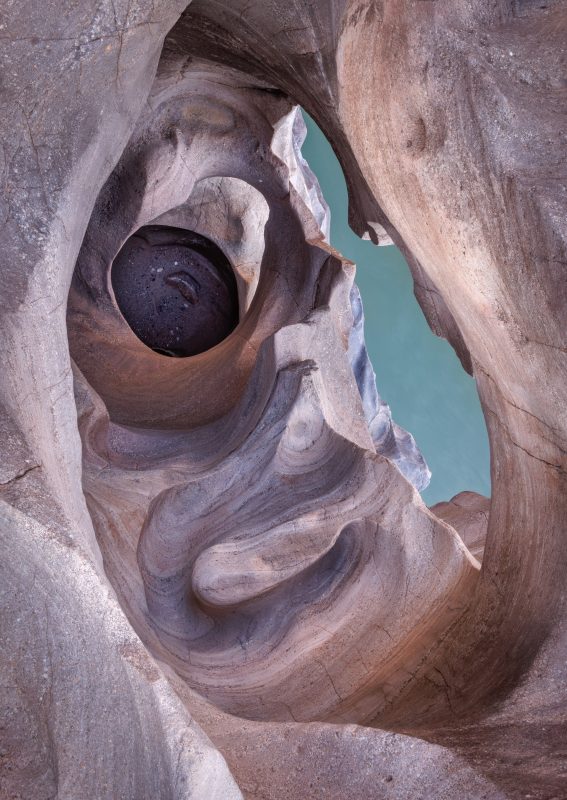
Photograph of the Year, Winner
Margrit Schwarz, CH
I made this photograph on the final morning of a twelve-day raft trip on the Colorado River. The Grand Canyon’s immensity was overwhelming, yet what captivated me most were the ancient layers of stone, shaped by time and water into abstract forms alive with mystery. For me, "Eye of the Canyon" remains an open invitation to explore, and to return - again and again.
Photographer of the Year - Joy Kachina, Tasmania
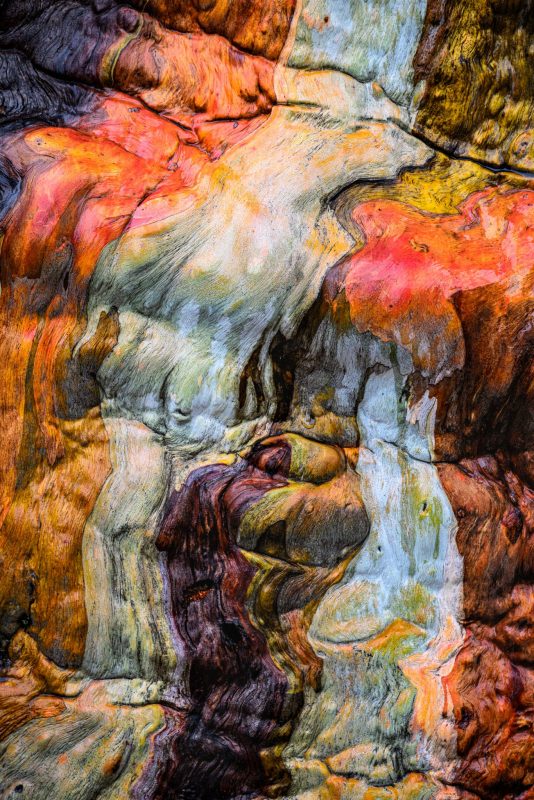
On Tasmania’s central plateau, the bark of the snowgum becomes a canvas alive with colour. Layers of ochre, green, blue, and crimson flow across the trunk in patterns reminiscent of cascading water or brushstrokes on a painting. This tree, affectionately called The Artist’s Palette, feels like nature’s own masterpiece, an abstract composition shaped not by hand, but by season, weather, and time.
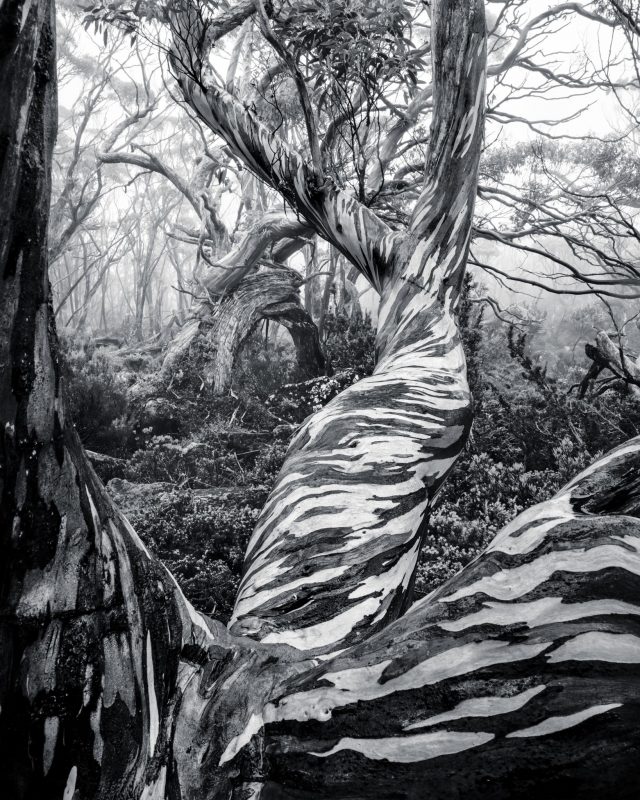
In Tasmania’s alpine highlands, the snowgums twist and turn in sculptural forms shaped by weather and time. To stand among them is to feel both endurance and grace. This photograph was created during a deeply personal journey, undertaken through physical challenge and resilience. Despite long hours of travel, harsh weather, and personal struggle, the moment of arrival brought profound peace. Here, in the presence of these ancient trees, the forest felt like home.
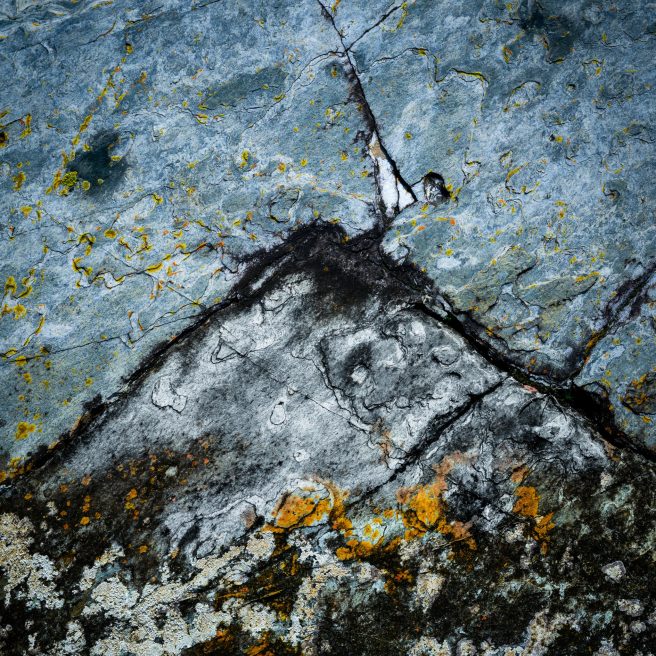
Along Tasmania’s rugged north-west coastline, the cliffs hold stories older than memory. In the etched surfaces of Devonian granite, one can see patterns that seem alive with the spirit of the Palawa people, whose connection to this land stretches back thousands of years. This abstract form felt like a vision from the elders, a spirit taking flight, carried on the wind, carved into stone. Standing before it, the landscape became more than rock and sea. For me it became a story of presence and a feeling of belonging to the landscape itself.
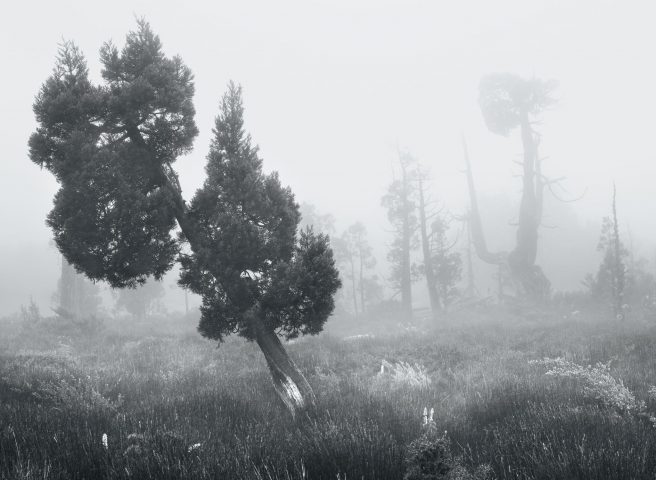
In Tasmania’s Central Plateau Conservation Area, the ancient Pencil Pines endure centuries of wind and weather, their twisted forms shaped by time. Some live for more than a thousand years, standing as guardians along tarns and waterways. This leaning tree, resilient yet graceful, reflects the quiet acceptance of difference, its tilt a reminder that there is beauty in standing apart, and being authentically, you.
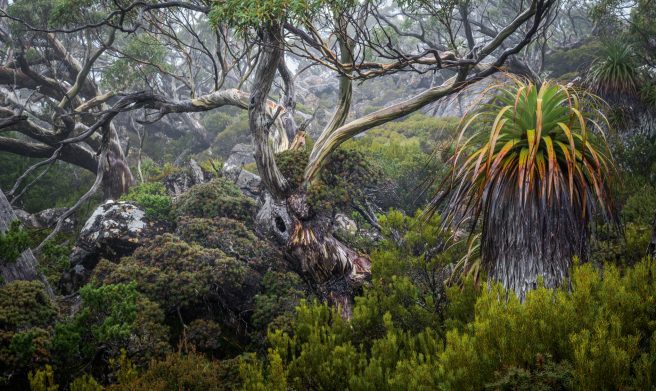
In Tasmania’s alpine regions, snowgums and pandani stand side by side in striking contrast, their forms shaped by the elements yet harmonious in their coexistence. Together they create a natural gallery, where diverse plant communities thrive in balance. This moment, discovered on a mountain hike, captures the quiet beauty of resilience and interconnection in the wild. It is a reminder that life’s richest experiences are often found in the unassuming harmony of nature.
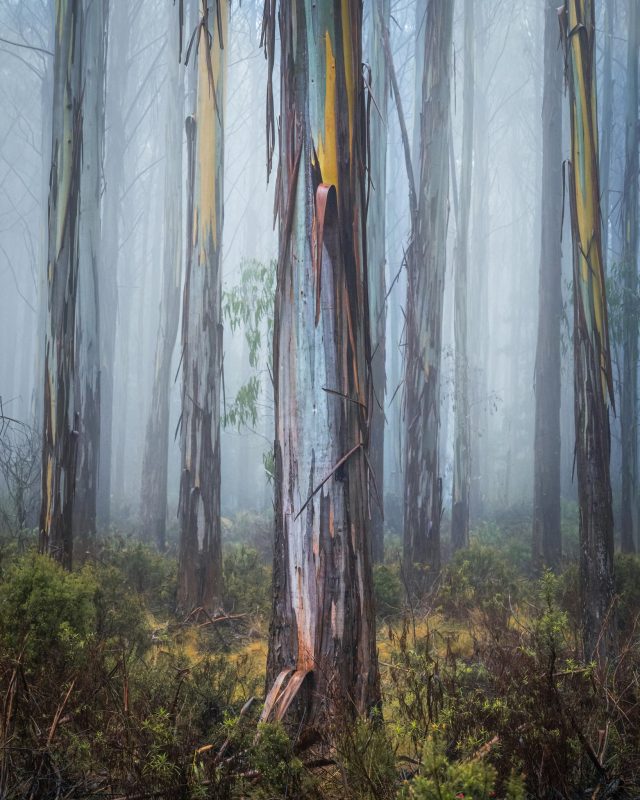
In Tasmania’s subalpine forests, autumn strips away old bark to reveal new layers, alive with shifting colours and textures. This seasonal renewal captures both the fragility and resilience of the eucalypt, offering a quiet reminder of belonging and the deep sense of home I find in these woods.
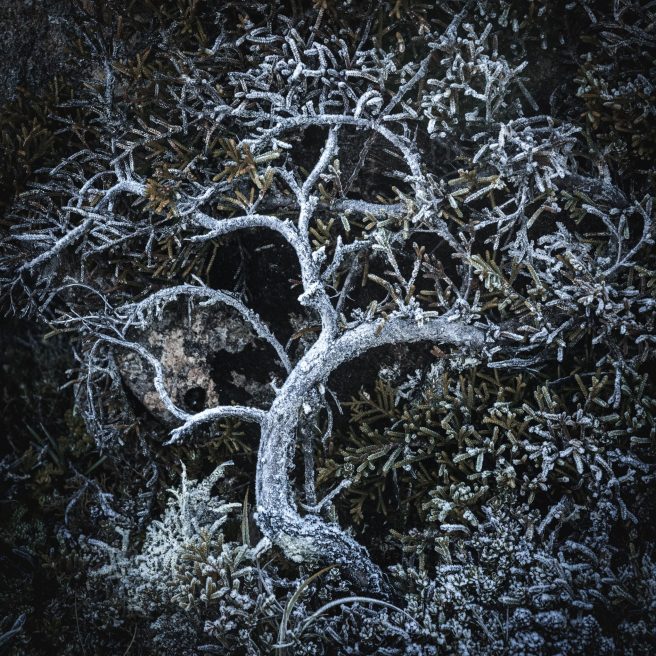
On a frosty morning in Tasmania’s alpine wilderness, the Tarn Shelf reveals quiet details often overlooked. Here, a small shrub, encased in ice, takes on the form of an abstract sculpture. The branches, bent and silvered with frost, stand suspended in time before the rising sun melts them back into motion. This fleeting moment of stillness is both fragile and enduring, a reminder that beauty often lies in the smallest, most transient details of the landscape.
Alex Noriega
Few photographers approach nature with the same mix of patience, curiosity, and creative intent as Alex Noriega. Over the past decade and a half, he’s built a reputation for images that are both simple and deeply evocative . The kind that make you pause and look closer. In this interview, Alex talks about his journey from a career in tech to life as a full-time photographer, the slow and deliberate process behind his work, and why embracing mystery and serendipity is at the heart of his approach to the landscape.
We’d love to hear a bit about your background - what you studied or chose to study at school/college, and your path to what kind of work you do now.
I studied Computer Science, if you could even call what I did studying. I mostly skipped university classes and stayed up all night learning guitar; I was a terrible student when I was required to do more than ace the occasional test. This predictably led to dropping out of college after a couple of years of faffing about on campus.
However, I was genuinely interested in computers, as had been the case ever since my mother bought me one for Christmas at the age of 12. So I quickly got a job at a retail electronics store. When that chain went out of business, I took the client relationships I had built and started my own business, building and fixing computers. That was the last time I had a boss—over 17 years ago now.
After a couple of years of running this business, I had lots of spare computer parts to get rid of. Cell phones at the time had terrible cameras, and I needed decent photos of these products to sell them online. So I bought myself an early point-and-shoot digital camera with manual control, and immediately became enthralled with the process of photography. Little did I know I had just begun a lifelong journey!
Subscribers Gallery
Following on from Tim’s article about Aspen (Populus tremuloides) in Issue 335, we’ve received a wide range of responses. The images explore the species from different perspectives — from detailed studies of bark and leaf to wider views showing aspen in its landscape.
Thank you to everyone who contributed; here’s a selection from the submissions. These submissions are ordered by date received, rather than alphabetically.
"I'm blown away by the responses from our call for Aspen photos. I've since heard from a few people who are working on projects about Aspen but also people who work in conservation who have told me some more about how they behave. Over the last week I've been outdoors in Glencoe looking for our own Aspen stands. They're only just starting to change colour but I thought I'd pop a couple of photographs at the end of this article to show some of what we have locally!" - Tim Parkin
Mike Jones
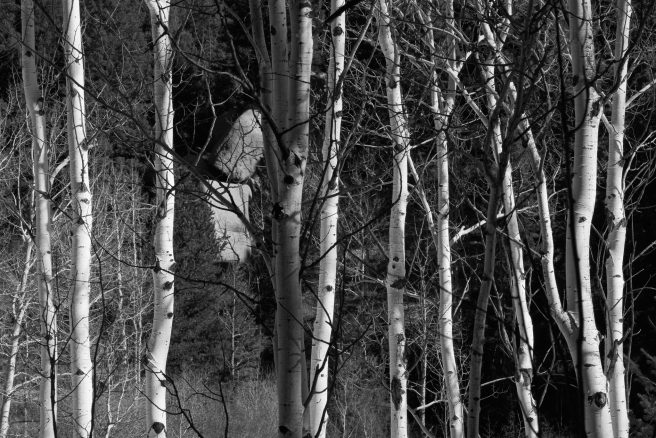
Waiting Out Winter,
Palmer Lake, Pike National Forest, Colorado, USA, March 25, after the leaves drop.
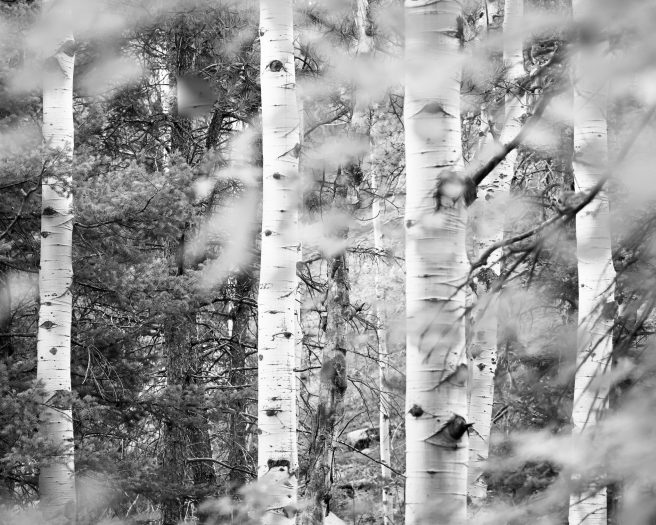
Enjoying Summer,
From Limbaugh Canyon, Pike National Forest, Colorado, USA, August 2023, before the leaves turn color.
Sigfrido Zimmermann
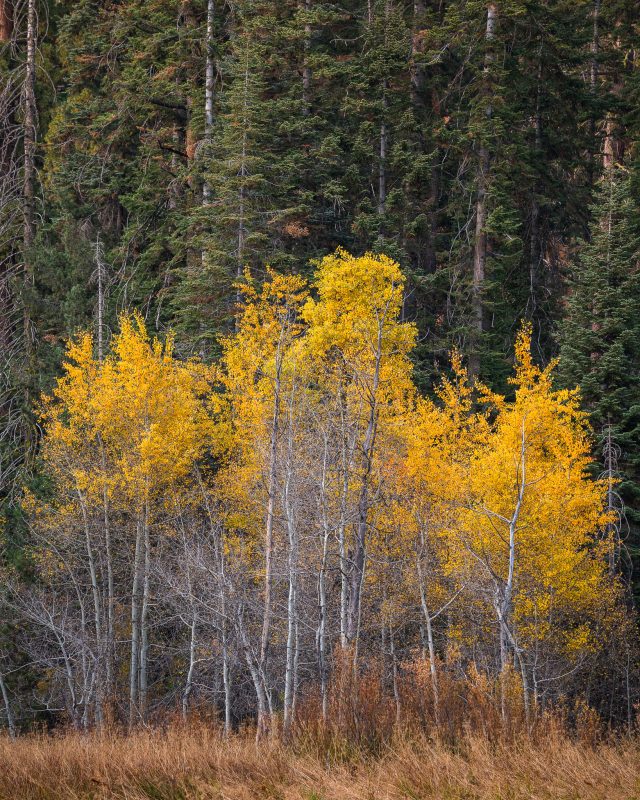
Aspen Clonal Group,
Sequoia National Park, California, USA, 2020. This stand of aspens is found within a mixed conifer forest that includes Giant Sequoias (Sequoiadendron giganteum) in the Sierra Nevada Mountains.
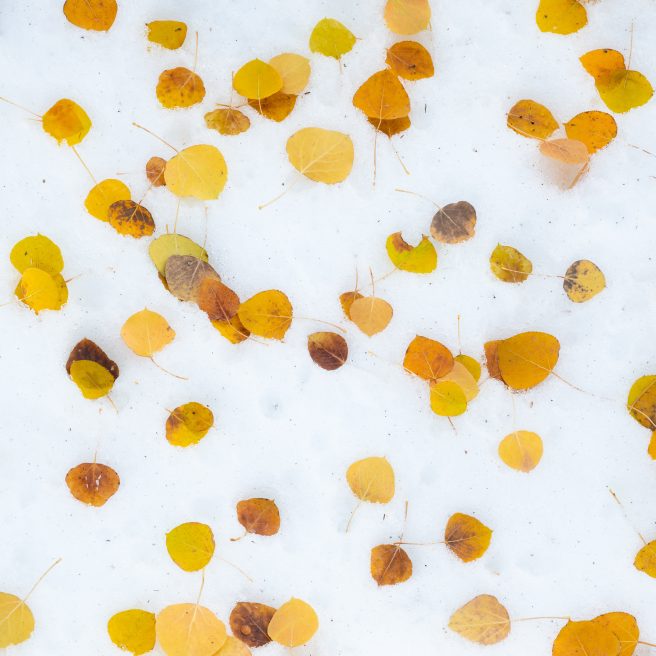
Aspen Leaves on Snow,
Sequoia National Park, California, USA, 2022. A mixture of seasons, with an early snowfall in the Sierra Nevada Mountains, made this scene possible.
Uwe Beutnagel
Christopher Palmer
Ian Meades
Adam Pierzchala
Paul Hetzel
Jan Glover
David Muiry
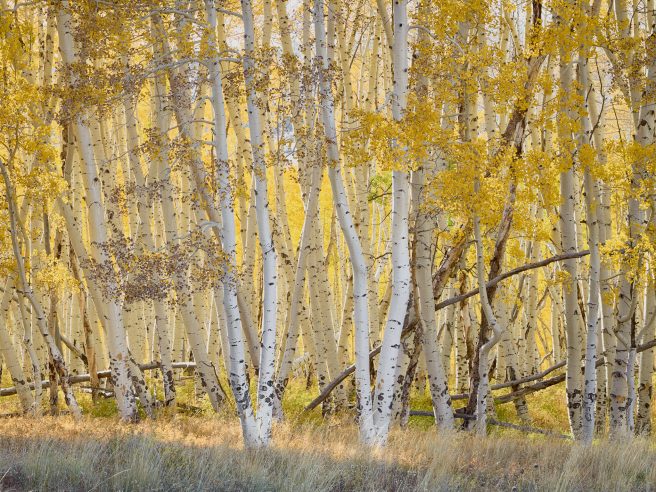
Bird’s Nest, Last Dollar Road,
San Juan
Mountains, near Ridgway, Colorado, USA
Title note: Inspired by the architecture of
The National Stadium in Beijing, built for the 2008 Olympics
Charlie Judson
Beth Young
Martha Montiel
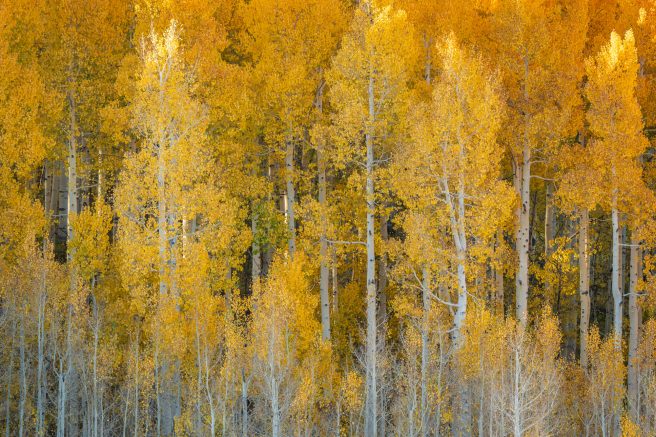
Formation,
Driving home from a trip to Wyoming, I saw these roadside aspens. All perfectly straight and several layers deep. The formation and different sizes created depth. The youngest aspens in front are barely tall enough to make it.
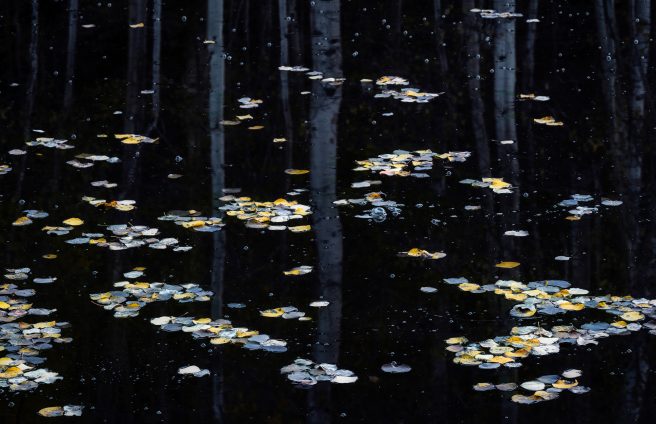
Golden Echoes,
Dead aspen leaves floating on water with aspen trunks reflected as ghosts in the background.This image is inspired by Monet's Water Lilies. I loved the little water bubbles, too.
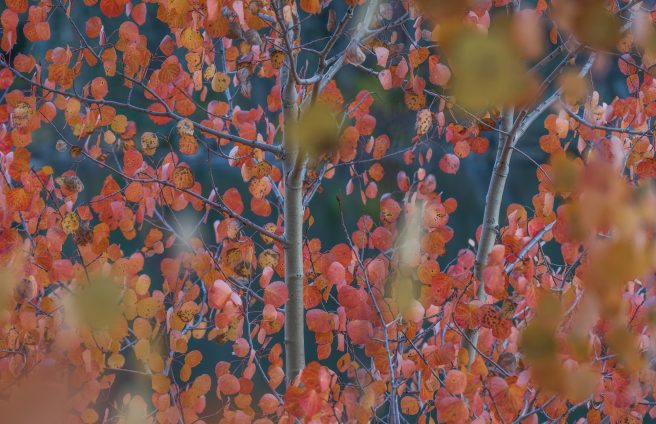
Peeking Through, This image was captured during a small hike after I had been photographing water reflections. Nothing I loved. On my way back and as the sun was going down, I walked through a section of the trail where the aspens were red and orange. I loved the color of the leaves at this time of day. I love capturing images where I feel like I am peeking through and invading some sort of privacy. Martha Montiel
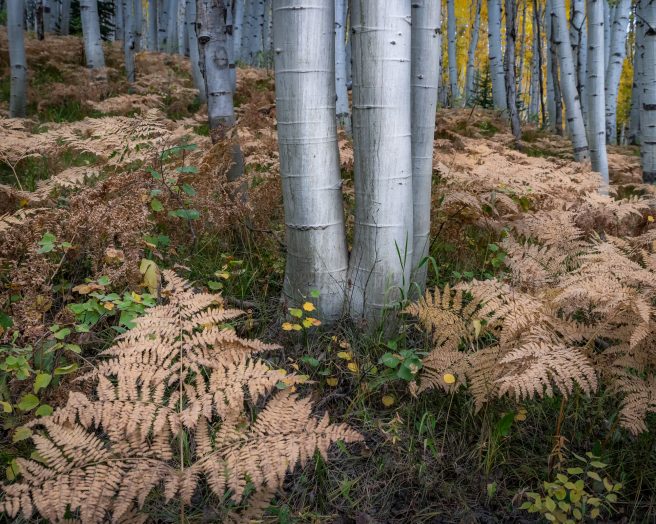
Reverence,
I had never seen a fern turn shades of yellow during fall before. This image caught my attention as it seemed in my mind that the fern was paying reverence to the aspen trunks it was surrounding.
Adriana Benetti Longhini
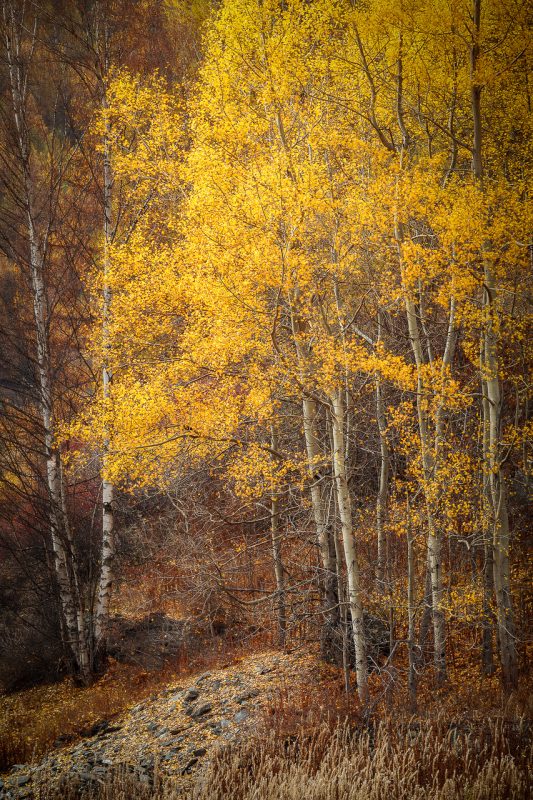
Aosta Aspens, Aosta, Italy,
These golden aspens were like a golden flame on a somewhat miserable day in northern Italy. I was visiting a waterfall in the area, and on my way down from the hike, I spotted a small group visible from a distance.
Kenneth Muir
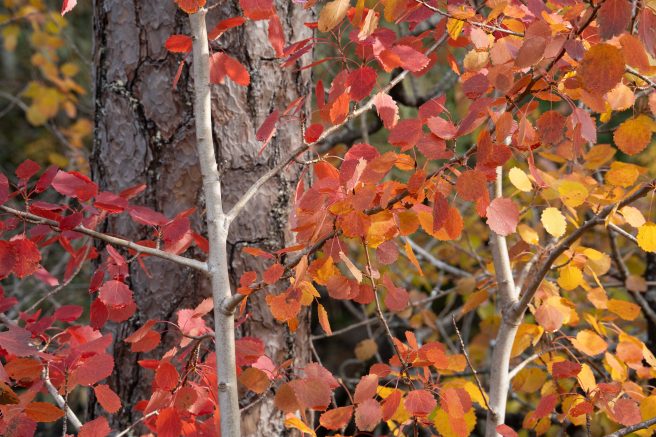
Populus Tremula in late summer at the riverside, Glen Affric.
The leaves typically turn a rich yellow in Autumn, but occasionally they can turn red due to the presence of anthocyanins.
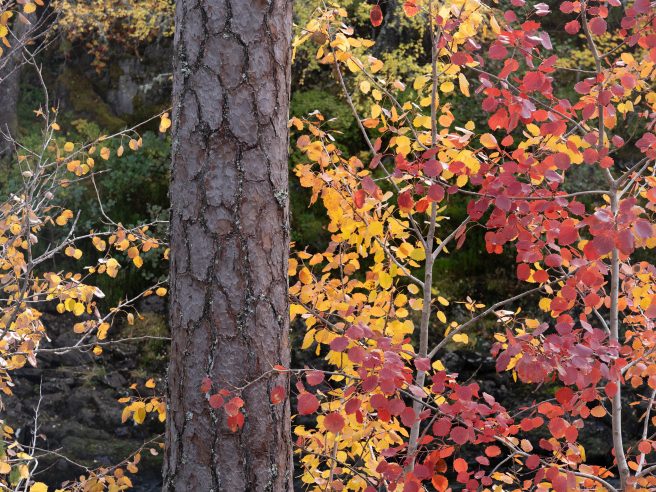
Populus Tremula in late summer at the riverside, Glen Affric.
The leaves typically turn a rich yellow in Autumn, but occasionally they can turn red due to the presence of anthocyanins
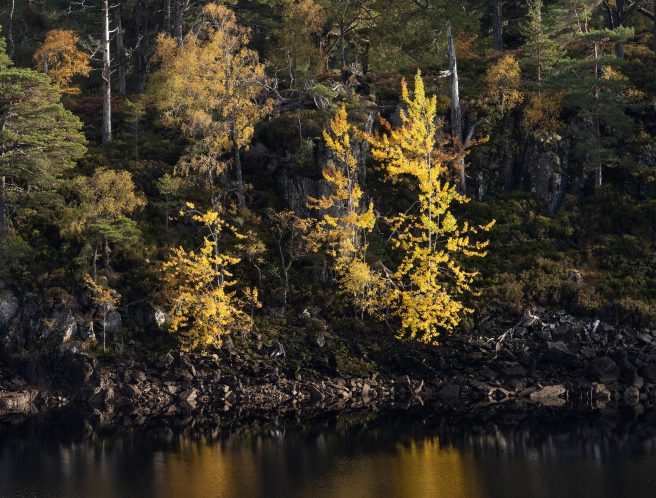
Aspen in Autumn, Populus tremula at the edge of Loch Beinn a' Mheadhoin in Glen Affric.
Aspen trees are a favourite with beavers, and a licence has recently been granted for their reintroduction to the glen.
Tim Parkin
Walking in the Shadow of Middle Earth
Since writing my first piece on Tolkien for On Landscape magazine (Tolkien’s Shire in Lord Of The Rings, April 23), I have embarked on many journeys abroad in pursuit of the landscapes that may have inspired the world of Middle-earth. What has become increasingly apparent over the years is the complex web of interpretations and perceptions that surround Tolkien's imagined geographies. As with many aspects of myth and history, there are contrasting beliefs and political nuances that often clash when attempting to anchor Tolkien's world to specific real-world locations.
Yet through it all, one truth remains clear to me: Tolkien's landscapes are a composite of imagination, memory, and genuine inspiration drawn from places he visited. This understanding continues to shape my approach as a photographer and storyteller.
One such example is my dear friend, who wrote a thoughtful and evocative piece on the Shire. The article, which even received recognition from Mensa, was criticised by some for not being sufficiently "factual." This amused me. As in so many areas of life, if one person’s interpretation differs from another’s, it is all too quickly dismissed.
I remain convinced that Tolkien spent time in South Wales. As I noted in my earlier article, he holidayed in Brecon with a priest who took him and his brother away from Birmingham. His fascination with the Welsh language and the poetic resonance of town names like Ebbw Vale and Crickhowell reflects a deep connection to this part of the world. Nestled along the banks of the River Usk, Crickhowell is a sleepy, verdant town that could easily pass as a gateway to the Shire.
My long-standing goal has been to produce a book chronicling my decade-long journey following Tolkien's footsteps. And yet, even after ten years, I feel no closer to the end. Apart from Switzerland, there is little concrete proof that the places I visit truly inspired Tolkien's writings. But perhaps proof is beside the point. The journey itself, and the search for inspiration in landscapes both wild and tamed, is the heart of the story.
Seeking Mordor: Arrival in Misurina
When I decided to explore the Alps, I deliberately avoided the often-cited Lauterbrunnen Valley, widely accepted as the inspiration for Rivendell. Instead, I sought out something more elusive. My research led me toward Mordor—not the literal fiery wasteland, but the symbolic source of its desolation. There are strong arguments suggesting that the Battle of the Somme, where Tolkien served during World War I, shaped his vision of Mordor. The blackened skies and smokestacks of England's industrial Black Country may also have left their mark.
Issue 336
End Frame: lo non ho mani che mi Accarezzino il Volto by Mario Giacomelli
Mario Giacomelli is considered one of Italy's greatest photographers, as well as a figure who made the expression of inner feelings his focus.
Giacomelli is unable to define what photography is, nor explain why he practises it, but he feels the need to express himself through this medium in order to externalise his inner world. His images, so powerful, raw and “poetic”, force the observer to look at the world from a new perspective, to the extent that he considers the presence of the viewer essential to keeping his works alive, preserving that collective dream we call “reality”.
The subjects of his photographs are varied, from elderly people to stuffed animals, from landscapes to still lifes, showing how the inner world of human beings can be vaster than the universe in which we live. Giacomelli sees himself as a small man facing the greatness of the world, expressing the meaning of his life through what he loves most and which becomes his art, his only point of reference.
His images appear imperfect and grainy, but at the same time, they are surreal and melancholic. Through strong contrasts, the intentional movement of the camera, a depth of field extended to infinity, and a black and white that leaves no room for half-tones, he transforms his subjects into ghosts, statues and characters that we find in our dreams.
Mons Graupius, Allegoria Exhibition
An exhibition of historically themed landscape photography at the Trimontium Museum, Melrose, Scotland.
From 11th September 2025 until 11th November 2025.
Through fine art photography, Andy’s first solo exhibition explores upwards of 25 Scottish landscapes historically associated with a legendary battle between Rome’s legions and massed Caledonian warriors – Mons Graupius. For over 1,900 years, the battlefield’s hillside location (as described by the Roman historian Tacitus) has remained a mystery: Andy traces its ancient ghost through the remains of Rome’s vaulting ambition from Stirling nearly to Inverness. To his knowledge, such a body of work is unique.
Not a one-sided tale about “the glory that was Rome” and the achievements of the Roman general Agricola – he also reflects on the impacts upon Caledonian society of Roman imperialism, employing visual metaphors, utilising modern infrastructure allegorically.
Andy employs a decades-old medium format camera system of the 6x6 square format, and black & white film, digitising and processing the results analogous to darkroom methods.
Recently gaining an MA in Photography from the Arts University Bournemouth clarified my methods and motivation for production. Renewing my love for the analogue process of photography and its relative simplicity, I choose to combine it with the fine control offered by the digital darkroom.
Inspired by the storytelling and stylistic aspects of the landscape photography of such as Fay Godwin, Sally Mann, Don McCullin and Bill Brandt, I made the photographs with a decades-old Bronica SQ camera system of the 6x6cm square format, and Ilford HP5+ black & white film, scanning the negatives myself and processing the results in Lightroom.
The exhibition prints have been produced by Loxley Colour of Cumbernauld as UV prints on panels of FSC plywood, a process I chose for its durability, faithful rendition of detail, and the material connection with the temporary structures put in place by the Romans in this part of Scotland, and those that they destroyed. I felt that it was imperative that my project, focussing as it does on the history of Scotland (and myself having Scots ancestry) should be produced in Scotland. This has, in turn, helped me in obtaining part funding from the Hope Scott Trust, who support the visual arts in Scotland, for which I am most grateful.
The exhibition venue – the Trimontium Museum - tells of “the interaction between the invading Romans and the native Iron Age tribes they encountered”, and the museum Trust has kindly allowed me to mount my exhibition in their multipurpose HALO space.
I plan to tour the exhibition further throughout Scotland at other museums, and already have enough work to fill a book, which is something that I aspire to for the future
Patrick Krohn – Portrait of a Photographer
When the results of the 2025 Natural Landscape Photography Awards were announced, one image stood out for its bold simplicity: a tangle of roots, exposed and contorted after a hurricane, rendered in earthy tones of red, yellow, and brown. It was not a scene from a distant wilderness, nor a mountain bathed in golden light. Instead, it was an intimate fragment of a familiar Southern landscape, transformed by attentive vision into something extraordinary. The photographer was Patrick Krohn, known online as One-eyed Dog Studios. His work won first place in our “In Your Backyard” category, an award designed to celebrate the power of seeing beauty in the places closest to home.
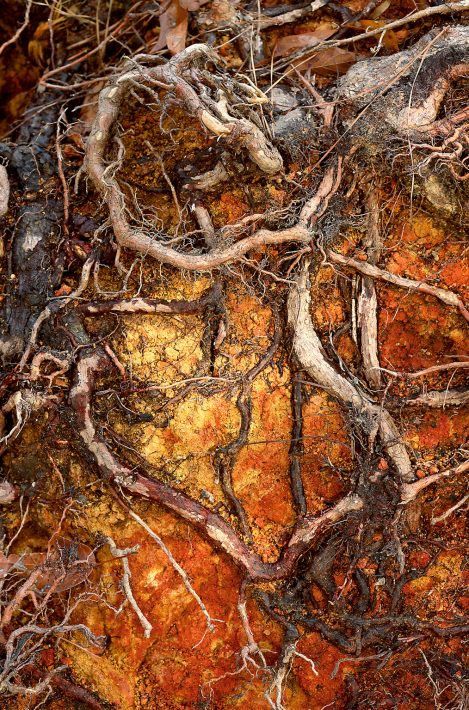
Roots exposed after a tree we knocked over from Hurricane Helene.
Winner of 'In Your Backyard' Category 2025, Natural Landscape Awards.
Patrick’s relationship with photography stretches back to his youth. Born in New Jersey, his family moved often, and he spent eighteen formative months living in New Zealand. It was there, in high school, that he picked up a 35mm camera for the first time and fell in love with the medium. He studied art in California before transferring to the University of Missouri – Columbia, where he earned a Bachelor of Journalism with the help of a Kodak scholarship. His first career was in photojournalism, working for newspapers in Utah and Montana before taking the role of photo editor at The Augusta Chronicle in Georgia.
Preservation: A Tribute to the Beauty We Might Lose
Introduction: Holding the Landscape Still
Around the globe, landscapes are changing at unprecedented speed—reshaped by the accelerating forces of climate change, human intervention, and shifting ecological balances. Coastlines retreat, forests fragment, glaciers shrink. The pace of transformation often outruns our capacity to record, much less protect, what is lost. Against this backdrop, British abstract painter Caroline Evans and landscape photographer Ruth Grindrod present Preservation—a collaborative exhibition that is as much a call to observe as it is a celebration of place.
For one week in October, The Quay Gallery at Snape Maltings, situated on the edge of the internationally important and beautiful Suffolk Coast and Heaths National Landscape, a landscape that is subject at present to huge upheaval and destruction, will host works that traverse continents and habitats: from Iceland’s stark, ice-fed river systems to the subtle beauty of Britain’s reedbeds, woodlands, and coastal margins.
Caroline Evans: Texture, Memory, and the Art of Attention
Caroline Evans is recognised for a richly textured Abstract Expressionist style grounded in close observational drawing. Her process begins in the field—sketchbook in hand—before translating moments into layered paintings and collages that blend natural pigments, archival references, and delicate materials.
A focal point of Preservation is her Reeds series, born from botanical research at the John Innes Library in Norwich and fieldwork in the reedbeds of Northumberland, Suffolk, and Norfolk. Using tissue papers and Japanese design principles, particularly wabi-sabi, she captures not only the structure of reeds but their impermanence—an echo of how these wetland habitats are themselves vulnerable to changing hydrology and management practices.
Caroline’s Tenacity series shifts attention to the unassuming dandelion, encountered carpeting the Baltic States during spring. Often vilified as a weed, the dandelion (Taraxacum officinale) is a vital early-season nectar source for pollinators. Caroline renders it with luminous colour and layered textures, reframing it as a subject worthy of celebration rather than eradication.
It’s by looking closely at what’s happening to and within our countryside that we begin to understand its value. We preserve it by paying attention. ~Caroline Evans
Ruth Grindrod: Aerial Geometries and Coastal Truths
Where Caroline abstracts, Ruth observes with precision. Her photographic practice encompasses both aerial and ground-based work, united by a focus on form, light, and ecological change.
In Iceland, Ruth has taken to the skies in a small aircraft to photograph braided glacial rivers—spectacular networks of sediment and meltwater in constant flux. These patterns are both geological and ephemeral; the rapid retreat of Iceland’s glaciers means that some of these landscapes may be unrecognisable or inaccessible within decades.
Back in the UK, Ruth turns her lens to the Woodland series, where a solitary birch in Cumbria becomes a quiet metaphor for the fragmentation of native woodland cover—a global issue mirrored in many countries facing biodiversity decline. In Suffolk’s Herringfleet woods, she captures the subtle interplay of dappled light filtering through canopy and understory, evoking the layered microclimates of mature woodland.
Her coastal work, a long-term passion, is both aesthetic and documentary. Locations such as Waxham on the Norfolk coast —prone to erosion, flooding, and development pressure—are rendered with a keen awareness of their shifting morphology. For international viewers, the challenge is familiar: whether in the mangrove-lined coasts of Southeast Asia, the barrier islands of the US Atlantic, or the tidal flats of Northern Europe, coastal edges are at once dynamic and increasingly imperilled.
Iceland’s glaciers are vanishing. It’s probable that images like these may not be possible to capture in the future. ~Ruth Grindrod
Shared Vision: Observation as Conservation
Although their mediums diverge, Caroline’s painterly abstraction and Ruth’s photographic exactitude—the two artists share a core philosophy: that sustained observation fosters care, and care can inspire protection. In this, Preservation sits firmly within a lineage of landscape art that spans both geography and centuries. Just as John Constable’s Hay Wain fixed a pastoral moment in the English countryside for cultural memory, Caroline Evans and Ruth Grindrod aim to create visual records that future generations may look to as evidence of what once was.
For an international readership, the underlying principle is universal. Every landscape—be it Icelandic tundra, Suffolk reedbed, North American prairie, or Himalayan Forest—exists in a state of flux. Artists have the capacity not only to interpret that change, but also to bear witness to the precise moment before transformation.
Exhibition Details
- Dates: 9–15 October 2025
- Opening Hours: 10:00–16:00 (opens 13:00 on the 9th)
- Location: The Quay Gallery, Snape Maltings, Suffolk, UK
- Artists in Attendance: Selected days during the exhibition week
- Acquisition: All works available for purchase, framed and ready to hang
- Contact: +44 (0)7710 420221
Michael Kenna’s Darkroom Diaries
In the second of five chapters serialising Michael Kenna’s darkroom diaries, we hear Michael discuss the work that he does to interpret each negative, and we see photographs of Michael at work in his darkroom in Seattle, USA. (Chapter 1: Working With Film For Over 50 Years)
Unless you have grown up making wet chemistry prints or have actually been into a darkroom and witnessed the process, it can be very difficult to understand exactly what goes into the making of a silver gelatin print. During my own private discussions with Michael, I have jokingly likened it to the dark art of a scrum in rugby union, because unless you’ve been on the inside, you don’t really know what goes on!
In this article, I share some behind the scenes photographs of Michael making his silver gelatin prints in his darkroom in Seattle, alongside extracts from his diary to help explain the arduous and patient print process, which can take a whole day to make a single print.
As you will read, there are many different stages to the process of making a print after the film has initially been developed to produce a negative. First, the negative is put into an enlarger for Michael to interpret. From this point he will have a lot of creative control and can make fine adjustments. For example, he will dodge and burn (lighten or darken) specific areas of the photograph. The latent image contained in the photographic paper is then developed in a multi-stage wet chemistry process – a series of chemical baths. This is where the magic really happens! In the first tray the image is immersed for two to three minutes and ‘developed’ onto the paper. Next, it is transferred into a ‘stop bath’ solution, which literally does that – it stops the print developing. In the third tray it is ‘fixed’. The print is then placed in a print washer to eliminate any chemical residue before the next process of toning takes place.
After toning, the print will be washed again before it is air-dried flat on a screen. Much later, after it is completely dry, the print will be heat pressed, retouched, dry-mounted, matted, titled, signed and numbered. It is a lengthy process and surprising to learn just how long it can take. Michael will often make many prints before he produces a result he is happy with. He has said that the sign of a good printer is a wastepaper basket full of discarded prints. In the example below, you will see how Michael made 12 working prints of ‘School Yard, Heptonstall, Yorkshire, England 1983’ before he produced a print he was happy to exhibit, a process which took a whole day’s work in the darkroom.
I think what is fascinating about the darkroom printing process is the amount of creative control that Michael has to perform in a series of intricate edits to the photographs. Some negatives are particularly difficult to print, and might take Michael several attempts to get it ‘just right’. For example, ‘Tree Portrait, Study 1, Wakoto, Hokkaido, Japan 2002’, which has both a strong overall contrast and a gradient in the sky. As he states, the very lengthy and unpredictable nature of this traditional process is perhaps what makes it so rewarding when the final print is achieved.
Below are a series of photographs showing Michael working in his darkroom to produce a print titled ‘School Yard, Heptonstall, Yorkshire, England 1983’ for an exhibition of Northern England prints that we hosted in 2022. Once the prints are dried, they are then flattened in a heat press in preparation to be retouched. And it is interesting to note that even after so much work has been completed to get to this stage, Michael is still only a little over halfway through his printing process. In the articles and extracts from Michael’s print diaries that follow, we will explain how the prints are retouched by hand before being mounted, signed and prepared for framing.
The captions and quotes by Michael below each photograph explain each part of the process. They were sent to me by Michael whilst working in his darkroom, and listening to the BBC’s Test Match Special.
Luke Whitaker
“Having chosen a negative to print, I use an enlarger to expose that negative image onto pre-coated photographic paper. The negative must first be placed into a negative carrier and dusted before being inserted into the enlarger. The image is then focused onto the easel with the grain focuser. We are almost ready to start printing. Normally, the first exposure would be a test strip - a series of increasingly longer exposures on one sheet of paper, which gives us important information regarding the appropriate exposure time. At one extreme, we are able to see the exposure it takes for the shadows to go black, and at the other extreme, we can see when the highlights lose detail and become white. A good test strip will be both too dark and too light at either extreme. Having printed for so many years, I must admit that I tend to dispense with this stage, and I usually estimate a starting exposure.
During an exposure, light is emitted for a certain period of time. It travels through the negative and aperture of the lens onto a sheet of photographic paper. Accessories required on the dry side of the darkroom include dodging and burning tools. Dodging is when we hold back light in certain areas of the prints during the basic exposure. This is usually done with various shapes of card attached to the ends of wires. Burning is when we give additional light to certain areas of the print after the basic exposure. This can be done by making shapes with our hands, or with boards (black on the side facing the paper emulsion, white on the top), some with various size holes cut out.
Each print has extensive interpretive burning and dodging, which is not exactly reproducible from print to print. I cannot press a button to print an edition, and consequently there will always be slight variations. Every print is unique. I fell in love with this traditional darkroom silver gelatin process even before my photography career began. My first prints were made in a makeshift darkroom in my boarding school bathroom when I was only eleven years old.
Pre-coated photographic paper comes in different sizes, surface textures, tonal ranges and silver content. I use Ilford Multigrade fibre-based paper and have done since the paper was first introduced in the 1980s. It is a cold tone paper which I warm up slightly with sepia toner. This photograph below shows a series of chemical baths through which the print will move. The time spent in each chemical is carefully calibrated to achieve desired creative effects. I stock various necessary chemicals: Ilford Multigrade print developer, Acetic acid stop bath, Kodafix hardening fixer, Permawash and Kodak sepia toner are included in the basics. I keep the darkroom well-ventilated so that any fumes from chemicals are directed outside.
The traditional advice when judging the exposure required for a print is to expose for the highlights and develop for the shadows. This is the opposite of when developing negatives, where we expose for the shadows and develop for the highlights.
Generally, when I print, I try to see the image as an abstract arrangement of lines, surfaces, shapes and tonalities. My aim is to balance and order these elements, thereby focusing attention on and directing viewers to areas that I consider significant. Perhaps it is useful to have a basic understanding of composition, and how light and dark work together in transforming a 2-dimensional print to create the illusion of 3D. Working from an assumption that our eyes are attracted to light - we can use this to our advantage. Our eyes will move through a progression of dark to light, and so we can begin to use light as a sculptural tool. When we darken an area in the print, we pull it forwards in space. When we lighten an area we push it back into the emulsion. This is similar to aerial perspective in Impressionist painting. Warm colours advance, cold colours retreat.
When printing I try to forget the subject matter of the print and instead concentrate on the abstract arrangement of the rectangle. In order to do that, there are some simple methods to help. Often I squint my eyes to take them out of focus. The image becomes more abstract and I can better understand the flow and direction of tonalities. Where does the eye go to, and where does it stop? Often I turn the print upside down, both in the developer bath and later after it is fixed when observing and analysing it. We are used to reading from left to right, top to bottom and it is good to challenge what is taken for granted. I also look at the print both from close up and then at a distance, across the darkroom. Sometimes I purposely go out of the darkroom and creep up on the print to catch it unawares.
My purpose is to see it as if for the first time. I often view the print back to front when wet, by placing a strong light behind it. When dry I sometimes observe it in a mirror. All of these ‘tricks’ or techniques help me to become more objective and analytical. I look at the edges of the prints - if there are distractions on an edge the eye can be drawn away from the centre. Distracting elements can be cropped or balanced and neutralised by an equally distracting element on another edge. They can be lightened or darkened (dodged or burned in). Dark edges move the eye to the centre of the print so corners are often subtly or more obviously darkened.
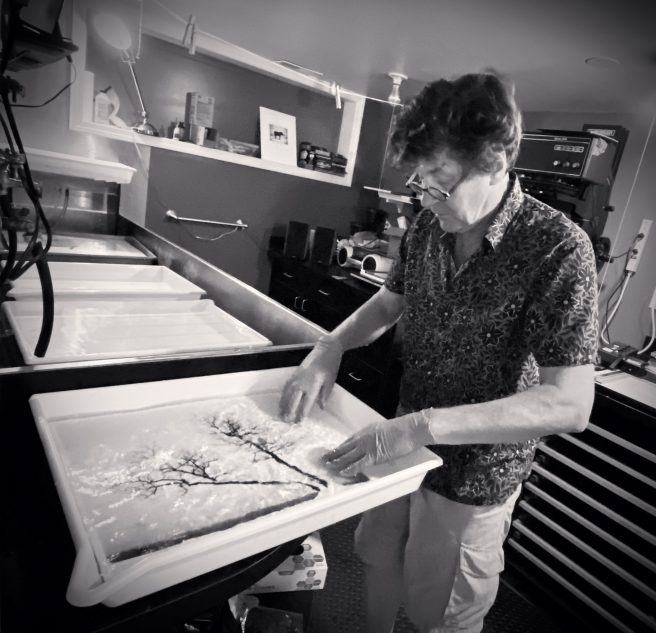
Michael Kenna Working on A 15x15” Print of Two Leaning Trees, Study 3, Kussharo Lake, Hokkaido, Japan. 2020 © Mamta Kenna 2021
I search for the equilibrium of a print - as in mechanical physics. There is always a centre of gravity in a balanced print - preferably in the areas that I consider to be the most important or significant. Whenever one area is changed, it affects the whole composition and the centre of gravity shifts. The possible interpretations are endless, and it is always an exciting adventure to find personal pathways.
I have printed this image School Yard, Heptonstall, Yorkshire, England, 1983 perhaps three or four times. It takes me several hours and involves many reject prints to reach an acceptable interpretation as there is so much burning and dodging involved. Even when the print is dry – it will take several more hours of retouching by hand to complete. It is survival of the fittest with this negative. Many prints are discarded along the way.
Below are the prints in progress of School Yard, Heptonstall, Yorkshire, England, 1983:
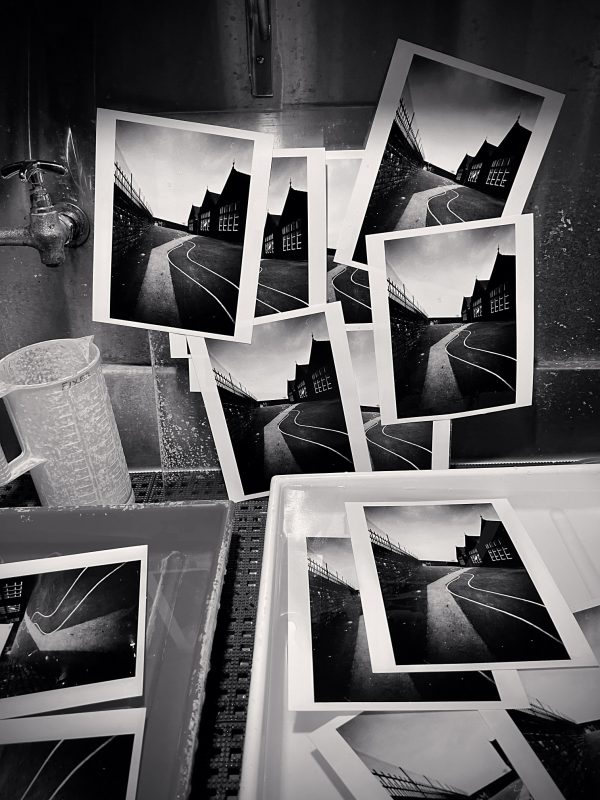
‘Getting There’ 12 Working Prints of School Yard, Heptonstall, Yorkshire, England. 1983 © Michael Kenna
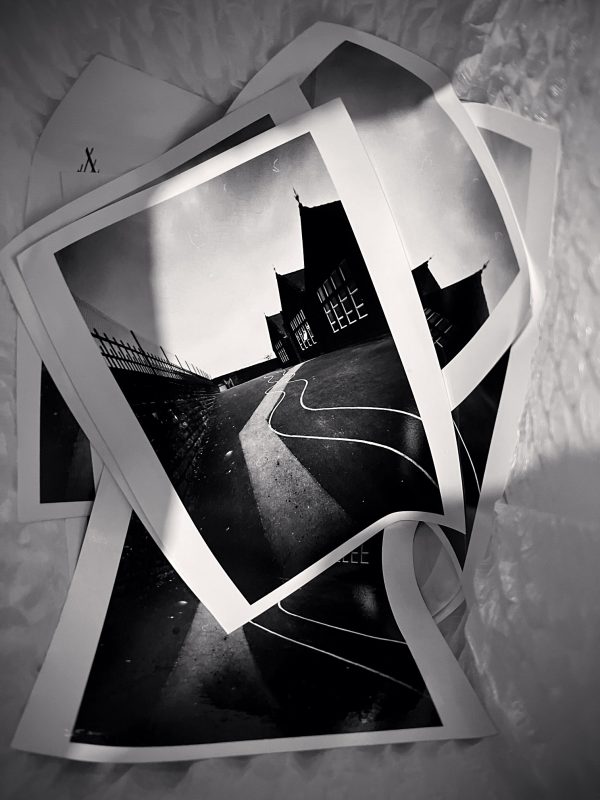
‘Survival of The Fittest’ Rejected Prints of School Yard, Heptonstall, Yorkshire, England. 1983 © Michael Kenna
I have heard it said and seen it written that a fine print should have a full, balanced tonal range from white to black. Of course, it could have this range, but this is only part of the story as we can see by looking at the work of different master photographers. Ultimately, it is the photographer’s personal palette that dictates the characteristics of any individual print. There is no fixed quality standard of a print - just personal preference. A mature artist’s printing style is as individual as a signature. When we view prints made by such masters as, for example, Bill Brandt, Josef Sudek, Mario Giacomelli, Edward Weston, and Ansel Adams, to mention just a few, we can immediately identity the photographer just from their personal printing styles. Give twenty photographers the same negative to print, I would anticipate and hope for twenty different interpretations.
Below are four examples of uninterpreted prints and interpreted prints after burning and dodging:
Retired Negatives by Michael Kenna
Retired Negatives by Michael Kenna is an online exhibition of his most collected work over the past 50 years, featuring the remaining Artist Proof editions of photographs whose numbered limited editions have now sold out.
The collection is a chance to acquire a print from editions in which the negative has been formally retired within Michael’s archive. All of his silver gelatin prints are still made by him personally in his darkroom at his home in Seattle. The online exhibition is hosted by Bosham Gallery and can be seen at boshamgallery.com until 17th December 2025.
‘Machine-made pigment prints are of excellent quality, but, at least for me, silver prints remain the gold standard in photography,’ says Michael. ‘It is also comforting to know that these prints are made to archival standards, which means they should well outlast myself and collectors. I keep records of every print I have signed and editioned and have prints in my own collection which I made 50 years ago. They are as good today as when I first made them.’
To accompany Retired Negatives, and to celebrate 50 years of darkroom printing, Bosham Gallery’s Luke Whitaker is presenting a five-part series of chapters from Michael Kenna’s Darkroom Diaries.
Please visit boshamgallery.com to see the online exhibition.
Author image: Michael Kenna Photographed in 2011 by Song Xiangyang © All Rights Reserved
- Tree Portrait, Study 1, Wakoto, Hokkaido, Japan. 2002 © Michael Kenna
- Working Prints of Storm Warning, Bardsey Island, Wales. 1996 © Michael Kenna
- Working Prints of Bruton Dovecote, Somerset, England. 1990 © Michael Kenna
- Working Prints of Seafront, Hastings, Sussex, England. 1982 © Michael Kenna
- Working Prints of River Thames, Homage to Brassai, London, England. 1983 © Michael Kenna
- ‘Survival Of The Fittest’ Rejected Prints of School Yard Heptonstall Yorkshire England. 1983 © Michael Kenna
- ‘Getting There’ 12 Working Prints of School Yard Heptonstall Yorkshire England. 1983 © Michael Kenna
- 5 Rejected Prints of School Yard Heptonstall Yorkshire England. 1983 © Michael Kenna
- Michael Kenna Working on A 15×15” Print of Two Leaning Trees, Study 3, Kussharo Lake, Hokkaido, Japan. 2020 © Mamta Kenna 2021
- The Wet Side Of Michael Kenna’s Darkroom © Mamta Kenna 2021
- The Dry Side of Michael Kenna’s Darkroom © Mamta Kenna 2021
Larry Monczka and Kathleen Pickard
When we first spoke to Kathleen Pickard and Larry Monczka, their quietly contemplative photography quickly found new fans. I can’t help but wonder if they have been interested observers as intimate, abstract landscapes have grown in popularity. We wanted to find out what they have been up to in the intervening period, and as it happens, the timing of our request for a Revisited interview coincided with their own review of practice and images.
I pinched myself to find that it has been 10 years since we interviewed you both. Bring us up to speed - what have you been up to?
The timing of your invitation could not have been more fortuitous. In 2014, we had a hand in initiating a regional photographic discussion group, "Four Corners", in which we've participated since that time. The group, presently comprised of nine photographers, meets monthly (since Covid via Zoom) to discuss, i.e. dissect, five images from each of us. The free-wheeling critique, conversations, and laughter have kept us grounded and at the same time provided a constant source of inspiration.
In 2024, the group decided that a decade of viewing and commenting upon each others' work deserved to be celebrated in the form of a book. We were individually tasked with selecting a single image from each of those ten years that we felt best represented our approach at that particular moment in time. The choices weren't to be a string of 'greatest hits', but rather, images that held some significance in our personal photographic history.
That assignment required us to take the time to survey and consider a decade's worth of images. Though this consumed hours of time, it was an exercise well worth doing. It was essentially a visual diary, making each of us aware of how much our lives have been consumed and enriched by our mutual avocation. As it happens, it couldn't have been a more serendipitous preparation for writing this piece.
Larry's and my photographic life over the last ten years, which essentially has gone hand in hand with our personal life, can be characterised as being in two chapters: pre-Covid, with travel to cultural and photographic locations world-wide, and post-Covid, with health challenges keeping us close to home.
You spoke passionately about the "bountiful range of subject matter" in Norfolk County, and mentioned that "the quiet lay of the land encourages us to look closer and photograph on a smaller, more intimate scale." What new treasures have you found as you continue to dig into the smallness of home and the local?
We continue to be most inspired visually by two locations close to our hearts.
The geography of home continues to be rural Norfolk County in the deep south of Ontario, Canada. Though it can't claim dramatic landscapes, it is rich in woodland, wetland and sand dunes. Its crown jewel is Long Point, a sand spit extending 40 kilometres into Lake Erie. Long Point is designated as a Globally Significant Important Bird Area (IBA) due to its critical role in supporting bird populations during migration, breeding, and wintering periods. It is also recognized as a Ramsar site, a World Biosphere site, and an International Monarch Butterfly Reserve, highlighting its broader ecological significance.
Regular visits to favourite photographic locations in Norfolk County have made us more sensitive than most to changes in the landscape that are both seasonal and longer-term. For example, managed prairie restorations full of native wildflowers become overgrown over time, only to regenerate via controlled burns. Wetland sites may be battered by storms to the point of losing their immediate visual appeal. Photographically speaking, this may be best exemplified by a small stretch of beach at Long Point, perhaps 150 metres in length. Over the years, the lake levels cycle through highs and lows. At times, the water is lapping at the margins of the access road, obliterating the beach. In other years, we can walk the length of a now wide beach blanketed in colourful oxide-rich sand. It is no surprise then that the beach is classified as dynamic.
In 2015, you noted that photography wasn't really considered an art form locally. How do you feel that the perception and acceptance of the medium have evolved over the past decade?
Over the last ten years, we have participated in numerous joint and solo exhibitions in community museums and galleries. On two occasions, we have collaborated on projects with well-regarded artists, signalling, we think, more acceptance of photography within the local art community.
Have your tastes in photography changed at all, or what you find inspiration in? Your interview highlighted your shared admiration for a number of artists, from Eliot Porter to Henri Matisse. Beyond those that you mentioned, have any new individuals, media, or technologies significantly influenced your work in the last decade, individually or as a couple? You both look to have been experimenting with other media.
In the realm of landscape photography, we very much admire the work of Andrew Mielzynski,
Jason Pettit, a fellow Ontarian, is a photographer whose work is very much in harmony with ours.
A great influence upon us both can also be found in our own photo discussion group. Barbara Bender can't be classified as a traditional landscape photographer, though she is, in fact, a very accomplished one. We consider her an artist who uses her photographs as a jumping-off point to further visual creativity (think Bailey/Chinnery). Of late, she's been using her archive of straight photography as raw material to construct deceptively naive "virtual landscapes" that suggest mysterious alternative worlds.
We have also ventured into new creative outlets--cyanotypes, monoprints, collage, painting and mixed media, greatly assisted by online learning opportunities. We've been gratified to find that the many years of experience we've accumulated in visual design, composition and colour as applied to our photography, transfers well to other mediums. Interestingly, our preferred subject matter hasn't substantially strayed from our photographic areas of interest.
Have there been any significant changes in kit for you, or in your workflow in making and processing images?
We remain very happy with our micro 4/3 systems, now OM-1s with a full complement of Olympus pro lenses. We do not trespass into each other's camera bags and, in fact, are unable to interchange camera bodies due to our stubborn individual set-up menu preferences.
Our tripod use has diminished to a minimum due to the excellent internal stabilization of the OM system. Larry's most recent addition to his photo gear is a kayak that is equipped (by Kathleen) with a waterproof point-and-shoot, an OM Tough. He has found the change of viewpoint, being able to shoot from water rather than land, has expanded his photographic possibilities.
An unintended consequence of the pandemic and various ongoing health issues that have confined us, singly and together, to home for weeks and sometimes months in the last few years has been the collaborative production of numerous self-published photo books. Virtually every one of the projects and exhibitions mentioned above has had a collection of images harvested from dusty hard drives that are subsequently edited, sequenced, and designed into a publication; a process we both find extraordinarily satisfying.
Have your respective styles or routines evolved more closely together or diverged?
The question of our styles is an interesting one. As each of us was becoming serious about photography, and well before we had met one another, we had taken a series of week-long workshops with the eminent Canadian educator and author Freeman Patterson. His emphasis on visual design and personal expression influenced us then and has continued to guide our approach.
When we compiled our 10 year collections of images as part of our “Four Corners” critique group, we were fascinated to observe that our style of seeing matured early on and has stayed similar over the years; not surprising considering our shared photographic DNA. Good field craft back in the analogue days put our technique on solid ground and made the transition to digital easier.
Our subject matter has evolved somewhat.
Kathleen, you wrote a piece for On Landscape in 2021 titled ‘Photographing the Un-Grand Landscape’. Re-reading this, I was interested in you saying “In an intimate landscape, more ambiguity exists. …the viewer is led through and around the picture space by means of visual design.”
I usually extend an invitation to offer some words of advice to readers relevant to the interviewee’s specialism or particular experience. I wondered if you might like to talk about how you use visual design in your photographs.
I describe myself as an expressive photographer. In other words, at the heart of my photography is a desire to communicate something about my subject that goes beyond seeing and into feeling, whether for myself or for others.
The first step in the process is to “see” whatever it is that stops me in my tracks. If what I notice motivates me to make a photograph, I then have a multitude of decisions to make: angle of view, depth of field, shutter speed, to name just a few.
When in the field, most of those decisions are made intuitively. Later, when processing the image at the computer, those intuitive decisions are then refined by applying the principles of visual design. Often that can mean paring away information that is extraneous to what I want to say. At its heart, photography is a subtractive process.
A major part of my photography is understanding how to assess visual weight and then managing the visual elements to create what Valda Bailey calls “aesthetic balance”; that is to say, composing the image.
In this example, for instance, I used a somewhat more panoramic format than I originally made in camera. That was done to eliminate a distracting strip of brighter sky at the top of the frame that drew excessive attention to itself, and to emphasize the density of the spring vegetation.
An excellent introduction to understanding the principles of visual design is “Picture This: How Pictures Work” by Molly Bangs. It may look like a children’s book, but that’s deceiving; it’s packed with information.
The best book I can recommend specifically for photographers is Freeman Patterson’s “Photography & the Art of Seeing”. Not only does the book examine the elements of design in detail, but it also proposes exercises to help you in your ability to apply them.
The best book I can recommend specifically for photographers is Freeman Patterson’s “Photography & the Art of Seeing”. Not only does the book examine the elements of design in detail, but it also proposes exercises to help you in your ability to apply them. Like learning to drive a car, by practising them often enough, they become intuitive.
And Larry… you seem to have been especially busy curating books and exhibitions of your work. In the light of your experience, is there any advice that you would give to readers who would like to exhibit, or make a book of, their own photography?
I find great satisfaction in cobbling together photo books. Since I tend to photograph in projects over months and years, coming up with a concept for each book is relatively easy. I have used Blurb.com “Bookwright” software for over a decade and find that it is user-friendly (online video tutorials are available) with good quality reproduction for the price.
Being a print-on-demand service is convenient for me–I keep a few copies on hand for sales in local retail venues and gifts, then order more as needed. Discounts offered by Blurb periodically throughout the year keep my average costs down, but in truth, self-publishing using on-demand services is expensive. Even so, harvesting images from hard drives and holding the resulting book in hand is extremely gratifying.
I make both hard and soft cover photo books (50 pages plus) and zines (20 or so pages), depending on the size of my projects. Once I decide on a theme, I gather together a long list of image files from my many external hard drives, then drill that group down into a more focused short list. I print out each image from the short list on 5"x 7" cards. This allows me to evaluate which images need tweaking or wholesale re-processing.
Laying out the cards for sequencing is great fun. Many days and weeks go into this phase as story flow, page pairing, colour harmony, and intuition come into play. The cards are shuffled and shifted, and images come and go with invaluable editorial input from Kathy until we are both happy with the result.
The images are then sized for the software, dragged and dropped into the chosen template; then the text and font decisions are made, and the front and back cover designed. When the proof copy arrives, the inevitable spelling mistakes are corrected, as are the odd exposure adjustments. Then it's voilà! and on to the next book project.
With each new book project, design and sequencing decisions evolve, as does confidence and the freedom to take creative risks. I’ve discovered that my books, presented to galleries and local museums, often lead to exhibitions and sponsorships. Curators can see immediately the concept and quality of the work and decide if it suits their needs. Free previews of the finished books on the Blurb website can lead to sales and print orders.
To end, have either of you acquired any new hobbies or passions? Do you have any plans or ambitions for the future that you can share with us?
Over the years, we have learned to have both patience and confidence that new subjects will develop and be discovered, even as old ones go missing. The key thing we have found is to be flexible and open to surprises. Fixed expectations in the field inevitably lead to missed or overlooked opportunities.
While it is our continuing pleasure to delve into the natural landscape surrounding us, Larry has also taken on personal projects documenting tobacco kilns (remnants of this area's tobacco farming culture), the graphic appeal of sand fences that are annually erected on Long Point beach to thwart dangerous winter gale destruction,
Kathy has become especially appreciative of subject matter that fluctuates, even as occasional compromised mobility keeps her stationary. Water, combined with sand, stones and light, is infinitely variable. They are the basis of her LensWork portfolio "Seeing Through" and have been published widely.
Together, we both have ongoing photographic projects. They include documenting the evolution of a re-wilded prairie on former depleted tobacco land, exploring the "Seldom Seen" natural landscape of Long Point in winter and, when our fluctuating climate allows, photographing the colourful colony of ice fishing huts that populate the shallow inner bay of Long Point.
Thank you, Larry and Kathleen. As always, we look forward to seeing more of your work.
Larry and Kathleen’s photos can be found on their website.
Matt Payne’s short ‘Portrait of a Photographer’ article, featuring Jason Petit, can be found here.
Larry Monczka
Kathleen Pickard
- Kathleen Pickard
All the Wood’s a Stage
On September 20th, All the Wood’s a stage opens at Nunnington Hall, North Yorkshire. A collaboration between photographers Simon Baxter and Joe Cornish, this follows on from their 2022 exhibition, Woodland Sanctuary.
The words below are adapted from the introductory writings for the exhibition.
All the world's a stage ~ As you like it, Act II, Scene VII. William Shakespeare
If all the world’s a stage, then the wood is a stage for trees, critical actors in nature whose time on our planet far exceeds our own. Trees can be dated back at least three hundred and sixty million years (depending on the exact definition of trees). And individual trees can exceed four thousand years old in the case of (Californian) bristlecone pines. Even in the UK, yew trees and some oak and sweet chestnut can approach or surpass two thousand years in age.
…And all the men and women merely players.
Yet what if we extended this stage beyond human beings to include all the dramatis personae of the living world? What if we saw ourselves as intrinsic to and part of the habitats of nature, and not separate from all that surrounds us? What if we recognised that the health of nature and the health of society were intimately linked? Trees and woodland are, for many, a great place to develop such an understanding.
Anthropologists tell us that, like our primate cousins, our (very) distant ancestors were tree dwellers. Human relationship with trees is the work of many volumes, and might not seem relevant to this project. Nevertheless, acknowledging our deep time history with trees helps to put our creative responses into a context.
As landscape photographers, we aim to present a faithful record of what we saw. These pictures can be considered a form of reliable evidence of a particular viewpoint at a moment in time. But the photographs are still made for artistic reasons. These are often, although not always, guided by a search for beauty. For that reason, the light, weather and seasonal conditions always play a part.
Trees may be the principal actors, but really it is the interactions, the relationships and the life of the wood that is the primary consideration. Single trees are inherently vulnerable, and on the whole, trees thrive together as part of a community. Perhaps not of equals but certainly as neighbours and family. Current scientific research has shown how trees share nutrients and information through the invisible mycorrhizal networks below ground as well as through the air, helping them flourish and defend themselves against infection and disease. In this way, they ‘do better together’.
All of the images in the exhibition were made in the UK, in the south and north, east and west. British woodlands are home to a huge variety of tree types, which, while competitive and in spite of their differences, thrive and grow in close proximity. The dominant species differ depending on the region, and how much management may have happened in the historic past.
While this variety may seem chaotic, nature still determines the ordering of elements in each specific situation and to an extent, the photographer’s task is to find the order in that complexity.
To quote Shakespeare again, “The purpose of Art is to give Life a shape.” Exactly!
Geography. Locations include Cornwall, Dorset, Kent, Shropshire, North Wales, the English Lake District, Scotland and our home county of North Yorkshire.
Titles. Exploration and discovery are vital aspects of creativity, and that’s why we opted for non-geographical titles. It would be a shame to discourage others from the joys of discovery by providing location details. In any case, woodland is so inherently dynamic and dependent on the ambient conditions that it is futile to seek out the viewpoint of another.
Our titles are personal. They vary from the frankly descriptive to the lyrical, or even whimsical and lighthearted. Often, they reference popular culture or a memory from childhood. They may indicate the photographer’s thoughts at the time, or, on reflection, are an imaginative response to a picture, and a clue to the photographer’s inner world. The titles recognise that trees have character and their presence defines a place; we have observed these places and found inspiration in them. But the interpretation of every picture is entirely a matter for the viewer, and the titles need not be taken literally or seriously.
Using the ‘conceit’ of the theatre, implied in All the Wood’s a stage, we divided the exhibition into four Acts, each of which corresponds to the four spaces in Nunnington Hall’s exhibition gallery. Although individual pictures are usually made in isolation and to their own agenda, showing work in groups and sequences gives an opportunity to curate with emphasis and with stories in mind. This proved to be a very enjoyable and worthwhile part of the process.
Act 1. Emergence
As rivers sometimes rise in woods, and woods frequently rise out of river valleys, so trees emerge into the light. In spring, this also brings bluebells, wild garlic and a varied under-storey that flourishes through the summer months, along with a burgeoning green to the leaf canopy. In autumn, their distinctive character often becomes more apparent as their leaves turn colour and fall, leaving the stark yet beautiful skeletal branches of winter. Britain’s woods and forests are usually a mix of different tree species, a tolerant (although sometimes competitive), convivial, cosmopolitan congregation of characters.
Act 2. Interference
Humans have used wood for countless centuries and innumerable tasks and functions: boats, weapons, housing, tools, fuel, food, furniture, sculpture, musical instruments, paper…to name just a few. As a result we have planted, exploited, managed and felled forests almost from the beginning of recorded history.
To pay attention to this apparently exploitative relationship can provoke sorrow, but also joy, for the ability of trees to return and repopulate once-degraded land is endlessly inspiring. And besides, to grow and use trees is also to ensure that wood is with us constantly. Such utility also helps balance the global carbon cycle. Planted trees and managed woodland can also be beautiful, especially when transformed by the snows of winter.
Act 3. Transience
In this act, we focus on the transitions all trees and woods undergo, including the transition from woodland fringe to mountain slope. Of all the seasonal transitions, autumn provides artists and photographers with the most spectacular expression of woodland colour. Seeing trees survive the harshness of a winter storm is a reminder of their extraordinary resilience.
But they do not live forever, and when they die, trees offer themselves back to nature through the final act of decomposition. Notably, the National Trust and other conservation organisations recognise and support this process in woodland management by avoiding the excessive tidiness of the past, and instead encouraging deadwood to rot slowly in situ. In this way, billions of tiny creatures, insects, mosses, fungi, and microbial lifeforms are encouraged, and the mycorrhizal networks of the soil are enriched. Dead and dying trees, and their fallen branches, can also present fantastically evocative shapes and textures, and in the right lighting conditions can appear as living works of art or sculpture in the landscape.
Act 4. Performance
Compared with some of the flamboyant spectacles of the animal kingdom familiar to us from our TV screens, trees and woodland may appear somewhat…sedate. Their action plays out over the seasonal stage, in years, decades and even centuries. For landscape photographers, their slow-motion choreography is the ultimate gift, granting us time to seek out shape and infer meaning and wonder from their gestures, their dress code, and their inter-relationships. In this act we look at trees as the leisurely performing artists of nature. Even so, wind can move trees powerfully through the course of a single photographic exposure, and so convey a remarkable sense of energy.
Epilogue
Although photography is so strongly identified as the convenient instrument of record, especially now that the majority of humans always have a camera (phone) with them, the committed photographer sees their work as an artistic calling. For the landscape photographer drawn to nature as their abiding passion, it is the wild world, untamed and unmanaged by human influence, that inspires.
If wilderness is a ‘gold standard’, that is to say a landscape scale habitat free of all human influence, we have to concede that wilderness is retreating globally, and arguably totally absent in the UK. Yet in spite of our living on “an overcrowded island”, large stretches of wild land survive, including coastal cliffs, beaches, moors, mountain ridges and summits.
For someone searching to translate and share the wonders of nature, wildwood is a keystone habitat for the committed photographer.
Interpreting the evidence of the world around us means that photographers are always involved in the politics of the present. The most celebrated landscape photographers of our time, the ones whose work appears in the big galleries in the capital cities of the world, are the disaster artists, including, for example, Edward Burtynsky, whose work Abstraction/Extraction is a seminal declaration of concern for human exploitation of nature. The work is powerful, compelling, and needed to draw attention to what is happening in our name. But in isolation, there is a danger that such negative messages lead to despair, and we turn away.
If, on the other hand, we concentrate totally on the bucolic and beautiful, this might appear complacent and escapist. In the second Act of All the Wood’s a stage, Interference, we encounter the industrialisation of woodland and its aftermath. It’s important not to shy away from that. But above all we want to articulate a message of hope for the future. Woodland moderates extremes of temperature, mitigates the effects of heavy rainfall, sequesters carbon, is a haven for wildlife, and has an unrivalled capacity to encourage a sense of well being and connection. Woodland deserves to be conserved, cherished and expanded.
A way to help is to translate its inherent beauty and wonder. If the fate of the living world is THE issue of our time, then surely photography that conveys hope and inspiration is also a political act? The work of the photographer, to act as observer, means that encounters with our cameras reflect the places we want to be and spend time. Sometimes those experiences can be shocking or disappointing. But more often than not wildwood reminds us of its patterns of birth, life, death and decomposition, patterns repeated through the seasons for hundreds of thousands of generations of trees. And through ice ages and warmer periods in the past, trees have flowed and migrated across the world in response to opportunities and pressures. They have survived drought and flood, extreme heat and bitter cold, disease and disaster, and human interference. In geological time trees have even survived the majority of Mass Extinction Events. They have shown themselves adaptable and resilient, enduring and inspiring. If that isn’t a cause for hope, then I don’t know what is.
Exhibition Details
- Launch on Saturday, 20th September 2025
- Nunnington Hall is located between York and Helmsley, North Yorkshire
- More details at https://baxter.photos/all-the-woods-a-stage-exhibition/
Joe Cornish
Simon Baxter
Any Questions, with special guest Jan Töve
The premise of our podcast is loosely based on Radio Four's “Any Questions.” Joe Cornish (or Mark Littlejohn) and I (Tim Parkin) invite a special guest to each show and solicit questions from our subscribers.
The Wyre Forest
The Wyre Forest sits on the border of Worcestershire and Shropshire. Once a source of fuel for local industry, it is now the largest woodland nature reserve in England. Today, the forest is a place of dog walkers, mountain bikers and horse riders, of children playing, and remote, almost wild, outreaches. My relationship with the forest started as somewhere to go for a walk at the weekend — somewhere my son could safely ride his bike.
We live a couple of miles from the centre of Birmingham, which is itself about 20 miles from the forest. While there are many good things about living in Birmingham, it can feel claustrophobic — the sprawl, the congestion, the industry. Sometimes — quite often, in fact — I just need to get out. And that’s where WYRE began: a need to escape the city, practise my photography, and hopefully improve it. Woodland work isn’t easy, but like anything, the only way to get better is to do it. So, about 18 months ago, I started making regular trips to the forest, often on a Friday afternoon after work.
At first, my goal was simple: go for a walk, take a few photos, and unwind after the week. In truth, I wasn’t really sure how much photographic potential there would be. But I quickly realised that photographic potential is all around us — we just have to be there to see it.
It amazes me how often I’ll walk and walk, seeing nothing, then stop to take a photo, and suddenly find one or two more in that immediate area. I’m sure part of it is that I’ve paused in a more interesting spot, but I think it’s also because I’ve stopped at all. Stopping creates a photographic opportunity — which, for me at least, is the opposite of what I’d expect.
There’s always the imagining — or maybe the fear — that you have to walk miles upon miles just to find one image worth making… and even then, the light probably won’t work. While that may sometimes be true, it’s just as true that, if you stop and let your brain absorb the world around you, images present themselves.
But even knowing that, I always face apathy beforehand. Most visits follow a familiar arc — I can’t be bothered today / I won’t take any good photos anyway → No — I’m going to go → the drive, slowly unwinding from a week at work while listening to a podcast → exploring a few miles of forest → finding something to photograph → driving home, convinced nothing I took was good — but knowing I felt better for having gone.
More often than not, I’d get home and find that one or two of the images were usable. Seldom did I come back with nothing — and even when I did, I’d learned something. The more I visited the forest, the more I realised just how much opportunity it holds. As my images improved, I began to tentatively look for themes and to understand whether I could create a project from the work.
I’m not sure why my brain thinks in projects, but it does. Whenever I find something interesting, it always forms in my mind as a sequence — something more than an individual photo. Earlier this year, I decided I had enough images for a short e-book. So, trying not to overthink it, I sequenced and released it for free on my website.
There is catharsis in that for me — taking the images I’d made and putting them out there, to have a life of their own. Whether that’s for five people to see or five thousand doesn’t really matter. I can consider them ‘done’.
Well… until I inevitably decide to re-edit some of them one day.
In doing that, I allow myself to move on to the next chapter. My vision for WYRE is for it to be roughly yearly — and while I’d love others to download it, ultimately it’s something I do for myself more than anyone else.
What the next iteration or chapter of WYRE will be remains to be seen. Recently, I’ve been drawn more to the areas around the forest — to the places it shelters — and I think the work may take a more documentary turn.
I’m working on other projects that may develop a stronger narrative, but WYRE will continue alongside — a quieter study in patience, escape, and a drive to do better work; a belief that if I look, I will find.
Between Angst and Beauty
I’ve seen a few photographers discuss mental health and the positive impact that photography has had on their well being. It’s not really something that I’ve discussed. There’s probably an artistic link between internal angst and being rescued in a way by the beauty that surrounds us.
When I was doing computer forensic work, we worked long hours examining pedophiles’ computers. Some quite harrowing jobs. Was I the best person for that sort of work? Probably not. I had two young children, and sometimes I’d be doing examinations and just couldn’t get my head around how some people did what they did to their own children. Despite 25 plus years in the CID I was a bit of a sentimental, soft hearted romantic. I still am. A rufty tufty exterior and a softly squidgy interior. Stress manifested itself mostly when I was at home, trying to sleep. I remember being hooked up to an ECG on a few occasions at Penrith Hospital in the wee small hours. Waking in a panic, resting heart rate of 120 plus. MrsLJ would wake in an empty bed and just think “aye, he’s away again”. At work, such things were never really discussed. Like I say, we were big, gruff northerners. Manly men.
My doctor suggested getting out and about, doing some walking. Exercising to try to keep the stress at bay. We were based five miles from Ullswater and five miles from the Eden Valley. It wasn’t like we had to travel far for a nice walk. So walk we did. Wandering over all the hills surrounding Ullswater with my old Boxer dog Harvey. And one morning in January 2010, we crested the rise of Brown Hills overlooking Ullswater and looked down on that beautiful lake. The rain was just clearing, and wisps of mist were rising in plumes from the woods. The surface of the lake was silvered and shiny. Light was catching the rocky flanks of St Sunday's Crag.
I had to find some way of recording what I was looking at. Recording the memory somewhere other than in the dusty recesses of my brain. Later that week a Pentax DSLR arrived. A lovely wee thing. From my first day with a camera, I was bewitched, besotted. The beauty of the landscape was magnified overnight. I saw the landscape through entirely different eyes. An artist's eyes. Light, colour, darkness. I marvelled at what lay in front of me. And I realised fairly quickly that I could put my own slant on that landscape if I wished. I dealt with the harsh realities of life every day. But with photography, I could create my own realities. Present my reality to you as I envisaged in my mind's eye. I was no longer required to be a faithful servant of the truth. When I was out with a camera, I could feel my blood pressure dropping. Time passed by differently. Clocks stopped. The hands of time stood still. I wandered free as a bird. I would point the camera at whatever took my fancy. See with the heart, shoot with the head. All thoughts of work vanquished.
I remember Tim Parkin from On Landscape contacting me for an interview. I was quite surprised as I’d only been taking pictures a couple of years. He said that he just wanted to ask me some questions about my thought processes when I was out with a camera. I told him that it would be a bloody short interview as I didn’t think about anything. Instinct, intuition, individuality. They were my only thought processes. And I guess that after 25 years in the CID I had the confidence in my instincts to follow my own path. Either that or I was too grumpily arrogant to listen to any other bugger.
Anyway. All that’s a different story about a different person in a way. I remember discussing the clouds one day when I was out with MrsLJ. They were incredible. Tendrils of cloud reaching downwards like a wizard’s fingers. I said as much to Mrs LJ, who turned to me and said “who are you and what the feck have you done with my husband”. It was photography that changed me and gave me what I call my second life. And congratulations if you’ve read all the way to the end. I’m not sure what brought that spiel on. Sitting listening to music while Mrs LJ was out playing with ponies. My mind wandering and reminiscing. The picture? One from this evening. Walking out from the house as the sun set over Harris. The islands viewed through a gap in the dunes.
Read Tim's interviews with Mark:
- A Change of Pace, 2013
- Video interview, Tim and Mark, 2014
- Landscape Photographer of the Year, 2014
Issue 335
End frame: Lido di Venezia, 1959 by Gianni Berengo Gardin
Sometimes in life, you set out with a certain idea, a narrative you want to follow, but then an unexpected event shifts your course entirely. That happened to me here. My original plan was to present as an “End Frame” a photograph by one of my favourite Italian photographers, since I am half-Italian myself. But then on the seventh of August, Gianni Berengo Gardin, one of the most prominent Italian photographers of the twentieth century and also one of my favourites, passed away. That news made my choice clear, this piece would become not just an introduction and discussion of a photograph, but also a small tribute to one of Italy’s most poetic and human storytellers who chronicled the life of a country for more than half a century.
Born in 1930 in Santa Margherita Ligure, Berengo Gardin always considered Venice his true birthplace. It was in Venice that he first picked up a camera in the early 1950s, photographing as an amateur before eventually turning professional. He never abandoned the city in spirit, even when travelling and being on assignment elsewhere. Indeed, it was there, late in life, that he fought tirelessly against the arrival of large cruise ships, seeking to protect Venice’s fragile beauty from mass tourism. His Venice photographs, both early and late, reflect a rare intimacy with the city, showing the everyday life of workers, children, and artisans, documenting the often hidden realism of this unique city.
From this Venetian period, I have chosen Lido di Venezia (1959), an image that resonates with my own photographic thinking. The composition is simple and minimalistic, two adults and a small child in a pram stand at the shoreline.
Aspen (Poplar Tremuloides)
The leaves of the aspen flutter,Traditional mountain verse
though the air be still as glass;
they speak in a voice of silver,
to the meadow and the pass.
The aspen leaves tremble delicately,John Muir (Our National Parks)
giving off a sound as of tiny bells.
The aspen is a real treasure of a tree species from North America. I should be more specific and say that quaking aspen (Populus tremuloides) is the real treasure, as although we have aspen across Europe, it is the European Aspen (Populus tremula) species and doesn't have the same visual impact. (There are also aspen in Asia, different species in Korea and China, which I will mention briefly later.)
For most of the article, I will be talking about the US version as that is the one with the paper-white bark marked by the characteristic black ‘staring eye’. I asked Matt Payne and Joe Cornish for aspen photos for this article, and they kindly provided a few that you will find throughout the article.
As the Latin name suggests, aspen is a form of poplar, of which there are many types around the world, from the chunky white poplar to the tall black poplar. The other famous poplar is the cottonwood, another landscape photographer's favourite.
Poplar tends to prefer waterways and floodplains at lower elevations and are characterised by grey or green bark. In contrast, the quaking aspen is very different and exhibits an unusual tolerance for diverse conditions. It also has a pure white bark that stands out against darker forest, and the flattened stems (petioles) of its waxy leaves allow them to clatter together in the wind. The sound is extraordinary, as if the whole tree were murmuring to itself.
4×4 Landscape Portfolios
Welcome to our 4x4 feature, which is a set of four mini landscape photography portfolios which has been submitted for publishing. Each portfolio consists of four images related in some way. Whether that's location, a project, a theme or a story. See our previous submissions here.
Submit Your 4x4 Portfolio
Interested in submitting your work? We are always keen to get submissions, so please do get in touch!
Do you have a project or article idea that you'd like to get published? Then drop us a line. We are always looking for articles.
Brian Uchiyama
Reflections of a Street Light
Nadav Knaan
First Touch of Snow in the Kyrgyz Mountains
Peter Berlinghof
Siebengebirge
Tom Townsend
Woodland Portraits
Woodland Portraits
Over the last few years, I've become intrigued with the uniqueness and character of trees in various settings and locales, including at times the same set of trees in differing times and weather conditions. I'm submitting for consideration 4 of these images, which, for me, exude a great deal of character.
Siebengebirge
After leaving the southern suburbs of Cologne and going further down south along the eastern bank of the Rhine you will see a hill range of about seven mountains appearing on the horizon. This may have been the reason why people named the mountains southeast of Bonn Siebengebirge (= seven mountains), although there are about 50 summits in the area, the present landscape is the result of volcanic activities, which started about 25 million years ago, and of the subsequent erosion of softer materials. The mountains are not particularly high: the highest one, Großer Ölberg, reaches 460 m and the most famous one, Drachenfels, stops at 321 m. The name Drachenfels (= Dragon’s Rock) hints at the local wealth of legends and myths which have inspired a lot of authors.
My interest in the place was not inspired by those legends and myths. It was the geology of the place which provoked me to explore it by focusing on geologically interesting routes and landmarks. After some research I had found a corresponding guide book by a local author which described in detail the geological phenomena and the routes to get there (Sven von Loga, ISBN 978-3-946328-26-1). The images were all taken alongside the routes presented in this book. Another common feature is that they were all taken using the same technique (infrared black and white).
First Touch of Snow in the Kyrgyz Mountains
Reflections of a Street Light
Escaping the Algorithm, Missing the Buzz
I think we have all become tired of it. The algorithms, the endless tweaking of hashtags, and the feeling that our creativity was being filtered through a faceless server farm— the gatekeeper who decides if our work is worthy of being seen. We are tempted to pay to play, if not with currency, at least with a compromise in our art. This wasn’t how it was supposed to be. It’s certainly not what was sold to us in the beginning, when likes came easy, giving us the boost to carry on making.
So we went back to our blogs and newsletters. Slower, quieter platforms, where there was no barrier between our work and our audience. No tricks, or gamification of the system. We wrote from the heart, our true voice for the first time in months, perhaps years. We felt a renewed creative energy as we hit send and closed the lid on the laptop.
But then came the silence. Growth slowed. Likes and comments became rare. The small audience we had, while somewhat engaged, felt invisible in the wider world. And a new kind of doubt crept in;
Without the algorithm, was anyone ever really listening?
This is the quiet contradiction of modern creativity. Autonomy, but not obscurity. We hated the algorithm, but also missed its forward momentum, no matter how slow of late. Now, we're caught in a strange middle ground, lost somewhere between the cracks. We asked ourselves a question.
Are we true creatives or simply churners of content and number counters?
Stéphane Jean
Creativity is often accompanied by restlessness. It has taken a while for Stéphane Jean to find the right outlet—nature and landscape photography. Nothing along the way is wasted; all of our career choices and explorations ultimately enrich our experience and interpretation of place and nature.
Stéphane enjoys searching for images close to his home in the Swedish province of Dalsland. His favourite photographs are often of the small things that we might easily pass by, or the moments we experience as a result of slowing down and tuning in to our surroundings. This ultimately deepens our connection with place, and leads us to discover more.
Would you like to start by telling readers a little about yourself – where you grew up, what your early interests were, and what you went on to do?
I was born in Paris, France, but grew up in the south of Sweden as we moved back to my mother’s roots there when I was about 3. With my father working as a drummer, freelance graphic designer, and illustrator, and my mother having a background as a dancer and being raised around music, I was regularly exposed to music and art at home. These influences had me spend many hours drawing as a kid and later diving into music. But while my father supported my interest in music, he also consistently dissuaded me from following his path as a professional musician. This led me to not truly commit, instead choosing a compromise and the sidelines of the music world, working towards being a Recording Engineer.
After a few years in the recording studio business, I realized the downsides were too costly. So, after about a year together, my partner – now wife – persuaded me to try something new, leaving the city behind and moving to a much more rural part of the country. Here, after trying a couple of new things, having previously learned the basics in desktop publishing and Photoshop, I started working in print and newspapers.
Creativity has been an important driver for you, and has taken you through a number of media and expressions?
Yes, that’s true. Looking back, it’s clear that I’ve always had a need for a creative outlet of some sort, like a constant unconscious pull, even when I haven’t indulged. As having this need isn’t always convenient, I’ve slowly learned how to let it rest for longer periods of time, but as the months pile up, I just start to get a little depressed without it. It’s like I slowly dry out of life energy and purpose.
As I mentioned before, music was a huge outlet for me, especially in my late teens, spending many hours on my own, exploring and trying to learn how to play the keyboard, then composing and recording clumsy compositions. It was really nothing spectacular yet it gave me so very much. Playing with others, percussion rather than keyboard, music also found its way back into my life for a couple of years in my 40s. Then, in the early 2000s I embarked on a 3D modeling and rendering journey. What drew me in was the realistic light simulations that had then become more affordable. As animation didn’t interest me much, I focused on stills, eventually printing, exhibiting and selling my work. This adventure and the insights they offered would later turn out to be essential to my photography switch.
When did photography come into it? What was the prompt, and when did you sense that this offered you the balance you were looking for?
While photography has always been present, it wasn’t until in my late 30s that I really started to see its true potential and purpose in my life. I had a couple of periods where it was a bit more central, but I was really quite clueless until about 15 years ago, so it’s been quite a slow awakening.
I remember being very drawn to my father’s Yashica camera, but my first truly vivid photography memory – and probably the spark that truly lit my lifelong fascination with photography – is from when I was about 10 years old, photographing four horse family tree illustrations that my father had made on commission. The camera I used (and still have) was a late 1950s medium format Agfa Isolette I.
Then, in the late 90s, working in print, I got to play around with the first consumer digital cameras, eventually getting a compact digital camera for the family. While it saw some pretty extensive but casual use, my own snapshots never felt very good, and I remember thinking that my wife took much better photos.
After about a decade dabbling with 3D, the frustration of my slow progress and the disproportionate numbers of hours in front of a computer screen had me look for something else, so as I switched to a new livelihood in education in 2010, I also bought my first digital mirrorless camera.
Empowered by what I had learned about light and (virtual) cameras from my years with 3D, I rapidly threw myself into photography. Buying and adapting old lenses, I started experimenting, devoting practically every spare minute of my time to photography, feeling that I had finally found something that offered a perfect balance between my technical and creative affinities and interests. Slowly adding the exploration of the countryside that I had moved to more than a decade earlier, yet still hadn’t learned to fully appreciate, was the final ingredient that turned photography into the thing I had looked for all my life. While I’m probably romanticizing this a little, it really felt like magic.
Then, a few years later, bolstered by a local photography course, I came across and applied to The Arcanum, an online mentor/apprenticeship based photography and arts school co-founded by photographer Trey Ratcliff, that was just about to open. To my great shock, I was among the first to be accepted and invited into a group mentored by Varina Patel. The time I had with Varina and my fellow apprentices, and in a following group studying minimalism, was such an incredible creative boost and learning experience.
Who (photographers, artists or individuals) or what has most inspired you, or driven you forward in your own development as a photographer?
I’ve always instinctively strived to do my own thing and follow my own vision and interpretations, finding that while looking at the work of other photographers can be very inspiring, it does come with risks – losing track of one’s own path being number one.
Other common sources of inspiration of either kind are unexpected life observations and conversations, music, literature, art and movies. I’ve also always been drawn to natural sciences like astronomy, astrophysics and the origins of life and have lately found a lot of inspiration from them.
All that said, the time I had in The Arcanum and the incredible mentors, especially Varina, with her ability to see where I was going before I even knew myself, were definitely key in shaping me into the photographer I am today. Beyond that, there are a great number of photographers that have given me important bits of practical, philosophical and/or sometimes even visual inspiration over the years, with names like David du Chemin, Jean-Michel Berts, Mikko Lagerstedt, Vivian Maier, Bruce Percy, Hengki Koentjoro, Karen Waller, Mark Cornick and Sarah Marino popping up.
What is, for you, the appeal of landscape photography? How much is down to the outcome (the image) and how much to the experience or the connection with place that can develop out of it?
The appeal, I’d say, is about things like the opportunity to reconnect with nature and trying to capture the essence of it. Then there’s the mental calibration and stress relief that spending time in nature offers alongside some physical exercise.
I think that both these components are about equal in importance to me. While the outcome used to be my main focus, the time I’ve spent in the landscape has opened up so much more. Nature and the landscape offer much-needed stress relief, while photography satisfies my creative urge. Together, they magically provide something greater than the sum of their parts.
In the beginning, the outcome was definitely my main focus at all times, but being more seasoned and confident now, allowing myself to relax and better tune in with my surroundings, I’d say that it has become about equal in importance to the experience. In the landscape, the experience of the moment and nature is definitely prioritized, while the processing phase is about the outcome and conveying the emotional response I experienced in the field. Having both these aspects present in the workflow has definitely improved my images and the overall value I get out of photography. But, while I strongly feel that my own connection with nature and the scene is absolutely essential, and even though knowing that recognizable locations sell images, I rarely try to ”photograph places”, but rather manifestations of life and nature, if that makes sense.
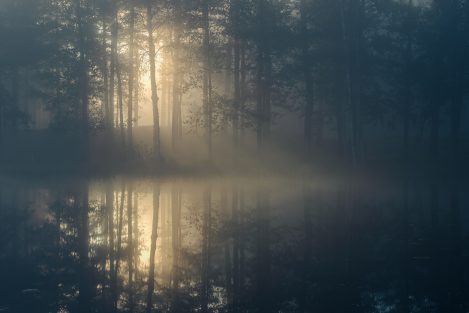
How do you feel that your photography has evolved? I can relate to your progression from classic view to small detail, learning by experimentation, and working close to home – they all resonate and ultimately help us to find our individual style, and better express this.
After the first years of experimenting with many genres of photography, I started focusing more on ”traditional landscape photography”, travelling a bit in Sweden and Norway, looking to capture those grand scenes often seen on social media. With time, though, I realized that the way I saw and instinctively wanted to convey the magic of nature didn’t fit that format. While this insight was a slow-coming one, I clearly remember what finally cemented it. It came to me like a sledge hammer, standing on a mountain in Norway, completely blown away by the vast scenery with surrounding mountain tops and the beautiful valley stretching out into the distance below me, realizing that conveying the entirety of that experience just couldn’t be done with photography.
I still sometimes enjoy the beautiful grand mountain views captured by others in far away exotic places, but find learning to see, appreciate and capture the myriad of nature’s smaller miracles available in my everyday life to be much more rewarding.
Also, having a strong need for diversity, I really can’t stand doing the same thing over and over for too long without changes or challenges, pushing myself and my work to evolve. This is also why I don’t stick to only traditional landscape photography, regularly turning to macro, ICM and other abstract forms.
Occasionally, making an exception to my ”rule” of not travelling for photography, I leverage Norway's proximity for a photo trip with a friend every five years or so, which helps me avoid stagnation and refreshes my creative mind.
My increasingly more relaxed approach has also made photography more enjoyable and beneficial in many ways, increasing the quality of my photos with fewer exposures. I’ve also learned how expectations make me miss unexpected opportunities and stifle inspiration and creativity, so unless I have a specific new idea to try out, the only plan I make these days is where to bring the camera.
Sticking to a smaller, familiar area, not only maximizes the likelihood of collecting unique photos and enabling more frequent photo opportunities. It also allows me to form a deeper connection with the local landscape and offers a greater chance at revealing the gems and surprises hiding beneath the surface.
Other benefits of the close access that have become important to me are a lower carbon footprint, less wear and tear on popular locations, and the mental health benefits of spending frequent time in nature.
The one thing that I’m currently most focused on is evolving my work into series of photos. I think that this approach is especially well suited for the more minimalist style that I subscribe to as it allows a photographer to weave individual photos into larger, more involving stories. As I tend to go ”blind” and lose my perspective when spending to much time with a single photo or series, I switch between projects all the time, so none are yet released in their entirety. Several series are either very close or just a single decision away though and should soon see a release, though.
Would you like to choose 2 or 3 favourite photographs from your own portfolio and tell us a little about why they are special to you, or your experience of making them?
Green Fire
This is the first in a series with the working title ”Green Fire”, representing my first successful close-up ICM set of images. I had been using basic ICM techniques every now and then for many years but then had one of the rare occurrences where I allowed myself to be visually, rather than only emotionally inspired by someone else’s work, more exactly the close-up Agave ICM photography of Mark Cornick and Karen Waller.
After having utterly failed over and over again, I gave up for a while, but then mustered some courage and nervously contacted and asked Karen if she might offer some tips. She was very nice, but in order to not distort my own discovery of this particular technique, she told me that the best thing I could do was to accept that it was indeed very hard and that I shouldn’t give up. Interestingly enough, the next time I attacked my mother in law’s Hosta flower bed, I nailed it (thank you Karen)!
Jǫrmungandr
The second image is from my Coriolis series. I started working on this series from a local bridge in 2019, when we had a particularly wet autumn and winter, but this photo is from a few years later. With high water levels, the floodgates are opened on the small power station just downstream, which produces a plethora of swirls moving down the stream, starting right below the bridge. They are very short lived and hard to anticipate, though, making them frustratingly tricky to catch in a decent composition. As I shoot them hand held, panning and zooming as they move away from me, stellar stabilization is essential to get fine hand shake free details mixed with a sense of motion in the water at shutter speeds ranging between 1/10-1/2 seconds at upwards of 200mm full frame equivalent. In these swirls, the most intriguing little things, like this Midgard Serpent, and other mythical characters like Fenrir and Nimue may be found.
Resting
My last pick is the oldest of the lot and from the time I was first trying to get a handle on long exposures, almost 10 years ago. It is from one of my absolute favourite spots on the Swedish west coast, about an hour and a half from home. This is also an early example of me gravitating towards tighter, more intimate framing over the full sunset view. While it may have its flaws, the emotional response it triggers in me still makes this one of my all time favourites.
Tell us a little more about where you live, and the places that you are drawn back to?
The province of Dalsland, the home I left the city for almost 30 years ago, is a bit of a forgotten part of Sweden. Often nicknamed “a Sweden in miniature”, this area is somewhat wedged between Vänern, Europe’s largest third-largest lake, Norway, and the beautiful Bohuslän west coast. Together, they offer a diverse range of nature experiences and landscapes. The landscape closest to me is riddled with forests and boasts over 2000 lakes. It’s a bit ”compact”, offering more intimate views than grand scenery with high peaks and deep valleys, but that’s where one would instead rely on Norway.
I still feel like I’ve barely scratched the surface, but it has just about everything I need to fulfil my nature photography needs. I rarely need to drive or walk for more than 5 to 30 minutes to reach most of my favourite spots, and often take a camera bag with me in the morning for a quick after work session.
Besides my own garden, which features both wild and domesticated flora, my closest favourite locations are all centered around water—lakes, streams and waterfalls—and with access to the famous 254 km long Dalsland Canal, of which only 12 kms are man made.
Can you give readers a brief insight into your set up – from photographic equipment through processing to printing? Which parts of the workflow especially interest you, and where do you feel you can make the most difference to the end result?
My everyday landscape setup consists of an OM System OM-1 MkI, with an Olympus E-M1 MkII as a backup body and for my son, when we occasionally do photography together. My main lens is the Olympus 12-100mm f/4 Pro lens, usually accompanied by a Panasonic Leica 8-18mm f/2.8-4 and an Olympus 60mm f/2.8 macro lens. When I don’t feel the need for my beloved Shimoda X30 backpack, this 16-200mm FF equivalent trio fits nicely in a sling bag. Also, shooting a lot of verticals, I always either keep a battery grip or an L-bracket attached.
Doing a lot of long exposures, I’ve long carried CPL and ND-filters but but have gone back to circular (magnetic) filters from the bulk of rectangular ones. Most days I employ the excellent 1-6 stops ND simulation of my OM-1, though.
The reasons for sticking with micro four-thirds are size and weight benefits, alongside its flexibility and incredible stabilization (the smaller and lighter the sensor, the easier it is to stabilize), which enables me to do things probably impossible with other systems.
In 2017, I added a DJI Phantom 4 Pro drone, which greatly expanded not only my perspectives but also my photographic agility and flexibility. Photographing with a drone is quite a different and wonderfully liberating experience. The Phantom mysteriously dying on me in 2019 led me to replace it with a Mavic 3 Classic for a renewed creativity boost in late 2021.
My editing workflow consists of 95% Lightroom Classic, with a rare occasional touch of Photoshop. For the focus stacking, I use Helicon Focus for its excellent results and optional 100% non-destructive RAW workflow.
Contrary to the common view on resolution needs for larger prints, I want mine to be enjoyable really close up too, allowing them to reveal other aspects and perspectives than only the normal viewing distance would. This is why I use Topaz Gigapixel AI for prints where I couldn’t use the 50 and 80MP pixel shift modes of my cameras. Used carefully, combined with AI based denoising in Lightroom, or sometimes DxO Photolab, it allows me to print even older 16MP mFT files at up to 2 meters with truly amazing and natural looking detail that hold up to close scrutiny.
Regarding prints, my choice of paper is usually Hahnemühle Photorag, and while I’d love to do the printing myself, the larger sizes I gravitate towards just make it financially unreasonable for now. So while I do much of the framing myself, I let Grand Image Print studio in Gothenburg handle this (blowing my mind every single time!).
You mention that your process can be a slow one, but that you’ve come to accept this and recognize its benefits?
Yes, although it used to affect all aspects of photography, I find that I’ve become more efficient in the past few years. Realizing that I can do much of my long exposure work hand held has helped free me from the ”tripod dogma” (you know, the one that dictates that landscape photography must be made with a tripod?). This, alongside a couple of other changes, has opened up and made my shooting a lot more flexible and efficient, allowing me to relax and enjoy the moment and nature much more.
The truly slow part of the process happens at home, where I sometimes wait weeks before even importing and looking through ”a catch”, and can edit a photo over several years.
Shooting more abstract images has slowed this part down even more. I find both the blessing and the curse of abstract photography to be that it opens up so many opportunities in post processing. Leaving the figurative behind, it can be very hard to set a limit, often having me work on 2-4 versions in parallel.
While my indecisiveness can be a difficult issue in certain areas of life, I’ve concluded that with patience and in reality, it rarely is in the end when it comes to my photography. I really don’t need to be in a hurry. My photography is primarily for my own well-being, and for those that enjoy more time-less images. Besides, the slower pace and long breaks often make it a little easier to keep some sort of objectivity around my work.
But of course it feels good when a photo or a series is done and released, which in part is why printing and selling prints has become so useful to me. Once a final, limited edition print is made, exhibited and hopefully sold, there’s no turning back, no tweaking allowed.
Exhibitions suggest that it is important to you that other people see your photographs in print. How do you choose to present your work, and what have you gained through showing it?
Well, while I do enjoy meeting people in a gallery, learning what my images make them feel and see, I’ve found the main benefit to be something else. An exhibition can be a closure of sorts. Apart from the creative closure it also makes me feel like I actually accomplished something worthwhile through my efforts. Sure, people can see and enjoy my work online, but that’s rarely anything but a very casual and shallow experience compared to viewing a print, whether it be large and impactful or small and intimate. We can view thousands of fleeting images on our phones and screens a day if we wish but how many of them do we really look at, perhaps even having them tell us something about the world and ourselves?
Also, while the light emitting property of screens can make an image feel closer to reality, it also comes to life in a different way when printed. A print is always present and alive in a way that a screen, reliant on power and scarcity won’t be.
The most important aspect of working with exhibitions, although stressful, is that offers me a focus and clarity that takes me and my work further than it would otherwise reach, and makes me see a much broader image and idea of what I do.
You’ve had a frustrating year, which has undoubtedly knocked back any plans or ambitions that you had for your photography. What do you hope for, going forward?
That’s true. After more than 50 years of near perfect health, too much stress and apparently bad genes handed me a heart attack in February. It was the sneaky silent kind which almost ended my life about a week later. Some additional, unrelated medical complications means that I’m still not fully back to normal.
It’s quite clear to me that I burned that candle a bit too hard, trying to juggle too much for too long. A demanding job, a father with health issues, a son with special needs, the list grows long. Realizing that I had pushed my time and energy resources too thin, my devotion to photography demanded some scrutiny.
While spending time in nature and entertaining my creativity has been a great stress relief and energy source, with building a new website, preparing for exhibitions and a plethora of other related little things, balance was lost, even having me ponder whether I should perhaps quit photography altogether.
Of course I could just go back to ”casual shooting” but I’m pretty sure that I’d lose most of the creative incentive. My nature is to always keep developing and I find challenges to be a big part of that; trying to stop that would only lead to my losing interest. For one, only keeping my work on a hard drive just feels pointless to me.
I still don’t have the final answer to this new challenge but will be moving forward at a more considerate pace from now on, working to have my more relaxed attitude in the field reflected in more parts of the process, while keeping a more vigilant eye on my health.
I’ll also be putting in an effort to enjoy life more, with or without a camera in my hand, probably working less in periods. I’m also taking a break from exhibitions and once I get back to them, I will make sure that I have ample margins for life’s curve balls.
We usually ask our interviewees what they would end up doing if they had to take a break from all things photographic for a week, but I realize that you have found yourself constrained for an extended period. When in good health, what other hobbies or interests do you have?
Well, to be honest, a week without photography is nothing for me. Family and work requirements can sometimes have me ”going dry” for months. But, if I would have to pick something else, it would be playing music (percussion) or perhaps doing some more creative cooking. I do however tend to use those creative breaks to instead fill up on inspiration through listening to audiobooks, the occasional podcast, watching interesting movies and quiet ”meditative walks” in nature.
And finally, is there someone whose photography you enjoy – perhaps someone that we may not have come across - and whose work you think we should feature in a future issue? They can be amateur or professional.
I think that Lesley MacGregor, a dear friend from The Arcanum, would be an excellent choice. She is a brilliant photographer with tons of interesting insight to share. And Adelaide based Karen Waller, another friend that I’ve made through photography, offers what I find to be an amazing portfolio of landscape, drone work and truly spectacular ICM close-ups, among other things.
Another master of ICM – Mark Cornick, who does some truly breathtaking coastal and close-up ICM work, would also be very interesting.
Thank you, Stéphane. We wish you continued good health and enjoyment of what sounds like a rich and rewarding environment.
You can see more of Stéphane’s photography on his website. https://photo.stephanejean.com/
Past Masters: Hudson River School, the detail and the whole
Premises
The Hudson River School’s artists viewed nature as a manifestation of the divine and strove to represent it as faithfully as possible, until different painters brought their own artistic vision and influences, which at times created interesting contrasting philosophies.
Frederic Edwin Church - The master of details
“Why do precisely these objects which we behold make a world?” Henry David Thoreau asks this question in Walden while observing the landscape around his cabin in the woods. The attempt to reconcile the parts of the landscape and its whole vastness is also an issue for Thoreau’s contemporary, the landscape painter Frederic Edwin Church (1826-1900)
Nineteenth-century viewers expected landscape paintings to balance precision and generality, detail and effect, but Frederic Church’s work often seemed to upset this balance, especially as his career progressed.
Church was celebrated but received conflicted responses in the mid-century. One might wonder if his scientific interests disrupted his ability to offer a broader, allegorical message. “Study the foreground of a Church”, one critic wrote, reflecting on the artist’s career shortly after his death in 1900, “and you will find a constant struggle between the desire to say everything and to say also the large and appealing thing ” - the general atmosphere. Such a “struggle”, in Church’s paintings raises questions about the role of detail in a work of art, not only during the nineteenth century, but also for the contemporary state of landscape photography.
Church’s paintings visualize and historicize a fundamental shift in visual representation.
For the nineteenth-century American viewer, details in a landscape painting had to be small in scale and visually compelling, leading the eye into the foreground and becoming the first points of contact with the spectator. These small details were juxtaposed against a notion often described as “effect”, which was equated with generality, union or harmony. “Effect”, in that period, was not simply a noun to use with an adjective, but rather an idea. An idea to indicate the eventual unification of those foreground details and the suppression of their difference. The aim in landscape paintings was, in fact, to avoid a “detailed effect” while providing an “effect” in which details were forgotten or even repressed, and only a singular impression of harmony remained.
A Brief Rant About Film
Everybody’s got a camera.
A generation raised on the internet and the iPhone experience photography as a seamlessly integrated and effortless part of their lives; just one more quotidian activity automated by technology to subordinate human decision-making. Pro photographers notwithstanding, legions of people compulsively take picture after picture, hoarding them in profusion, never to be looked at again after a fleeting debut on a tiny screen.
Once, as a society, we cherished the “Kodak Moment,” a marketing masterstroke that now feels quaint, a victim of what I’ll call photobesity: a deluge of snapshots made so mindlessly and frequently that they’ve devolved into pullulating yottabytes of digital dross. Visually preserved memories, once curated to be physically shared and displayed with pride, now languish in a virtual vault less visited than that proverbial shoebox full of family vacation photos, forgotten in a dark closet. That closet is now called “the cloud.” And we are continually nickel-and-dimed by Apple, Google, and Dropbox, dunning us, or surreptitiously renewing our subscriptions, to pay for ever-increasing gigabytes of ephemeral storage space for our abandoned pictures.
Forget, for a moment, the environmental cost of this ever-billowing cloud—the power plants needed to support an ever-increasing number of gargantuan server farms. This phenomenon comes at the cost of our eidetic memories, the deeply embedded kind that linger in our mind’s eye and would otherwise resurface vividly and unexpectedly throughout our lives. Instead, the very act of snapping a picture distances us from the moment we seek to preserve, trivialising it. The camera captured it, so I don’t have to.
Exposing film, from sprocketed rolls to sheets the size of an iPad, then developing it and enlarging prints in a darkroom filled with secret sauces, may give some photographers a greater sense of accomplishment. Or maybe they only want their audience to believe that narrative to cultivate an illusion of rigor, so their work is taken more seriously. Maybe they’re trying to mitigate a sense of guilt: If it’s too easy, anyone could do it. Or maybe it’s just a combination of nostalgia and curiosity that drives them.
Whatever their motivation, a fallacious contention has circulated that shooting film, which is far more expensive than it was in pre-digital days, makes photographers more discerning about when to press the shutter than sloppy digital shooters who machine-gun dozens and dozens of pictures, hoping to nail one good shot out of the whole nine yards. That’s just nuts.
George Bernard Shaw, himself an avid amateur shooter, famously wrote, “The photographer is like the cod which produces a million eggs in order that one may reach maturity.” Wry joke or literal critique, critics today still say digital shooters rely on algorithms to correct poorly-exposed pictures—a crutch. But younger photographers may be surprised to learn that during the heyday of magazine photojournalism, the amount of film I’d shoot for a single assignment might rival their annual output. They don’t ration film because they’re more discerning but out of necessity — because it is ten times more expensive now than it used to be. Let’s see. Should I start my next project on this same roll of film? I’d hate to rewind it and waste those last nine frames.
I once worked with a photo editor—my client was a TV network—who admonished his minions, “Film is cheap; shoot by the pound!” It was the fastest and cheapest way to create colour “dupes” (i.e., copy 35mm slides) for distribution to, and publication by, affiliate TV stations and advertising outlets across the country. A Nikon with a motor-drive did the trick.
That’ll never happen again. But pros today—film and digital—remain as conservative as ever about how many frames we shoot. No serious shooter sprays and prays. Who wants to sift through garbage for endless hours in post-production? “Post”: what we used to call editing.
Critics of digital photography often forget that darkroom techniques were manipulation. Pushing and pulling chemical development times, dodging and burning prints, layering and sandwiching negatives for HDR effects—these were pre-Photoshop tools. They worked. Just more cumbersome. Film has always been open to skilful manipulation.
Consider Kodak’s ubiquitous Brownie camera (1900–1967) and its slogan: You Press the Button, We Do the Rest. That was as close as we once got to instant gratification with photography. Aside from keeping my fingernails from turning brown by immersing my hands in sloshing trays of selenium toner and Dektol, the instant gratification of an LCD screen is the only thing that’s new today — the erstwhile original Polaroid notwithstanding. But even an LCD can be a curse. Staring at each shot the instant it’s taken is just a new form of impatience. Ask yourself: how do you feel waiting three minutes in front of a microwave vs. two hours for an oven-baked meal? What could you accomplish—and how much more satisfied would you feel—in the meantime?
It used to be that no one had a choice about shooting film; only about which kind to use for which application. I loved processing film and making prints, and fondly remember the smell of gelatin film emulsion. Potassium ferricyanide and sodium thiosulfate not so much. Today, when film is resuscitated after its last agonal gasp, the arcana of working in the dark with noxious and environmentally unfriendly fumes, it may be novel for some, but it represents a regressive response to the criticism that photography is too easy: My kid could do that! Who are you with your 11x14 Deardorff, to tell me I can’t do the same thing with my iPhone?
To be clear: artists who shoot only film often claim to see subtle differences that justify their fuss. I think that’s silly. Been there. Done that. Got the T-shirt. I dare anyone to eyeball any difference between one of my digitally printed photographs and an older, silver-gelatin one. That wasn’t true ten years ago. It is now. Even large-format sheet film can no longer claim qualitative superiority.
However, film does win on one front: archival conservation. It’s easier to keep for posterity than JPEG, RAW, TIFF, or DNG files stored inside that fugacious shoebox in the sky or even on a personal hard drive array. Then again, I won’t be around six hundred years from now to care. But much sooner than that, if a not-too-farfetched and foreboding sunspot flares up and fries Amazon’s Web Servers, or the Russians reduce Google to gobbledygook with a malware attack, you’re out of luck. Or what if you haven’t had the discipline to back up your photos regularly enough to keep up with the tick-tock of technology, let alone the physics of entropy? The CD-ROMs you might have socked away will eventually succumb to “disc rot.” (Do I need to burst your bubble by citing oxidation of the shiny reflective layer and a breakdown of the polycarbonate substrate, delaminating the whole schmear?) Or what if no computer, say, thirty years from now, can still “read” those ones and zeros you assiduously backed up? On a more optimistic, techno-utopian note, maybe we’ll learn how to store infinitely contiguous quantafloods of data inside strands of DNA—liquid drops of double helix repositories lasting millions of years1?
Practically speaking, I used to put my film in an envelope and stick it in a drawer, relying on the likelihood that my photographs will be seen by my descendants living on Mars (notwithstanding fires and floods on Earth in the meantime). Want your photos to last long enough to be read by Jean-Luc Picard? Make prints. Especially pigment prints on rag paper—they’ll last as long as silver prints, whether colour or black-and-white.
As for film evangelists, their message is clear. Their ritualistic return to darkroom alchemy, economically moribund though it is, seems to me like a bid to bestow themselves with special powers that produce superior results and an aura of exclusivity, whether by divine favour or the favour of similarly sorcerous academics, critics, curators, and gallerists. Their anachronistic zeal for antediluvian technology reminds my cynical side how ancient priests shrouded their religious rites in mystery and complexity to awe an uninitiated populace and reinforce their own elevated status.
Let’s be clear: Taking photographs is and always has been easy. Making them never was. That’s the story—for me, for all working artists and photojournalists, whether we prefer digital or analogue tools in our camera bags, is that we do indeed make photographs. Let the dilettantes keep taking them.
References
- Could We Store Our Data in DNA?, Matthew Hutson, The New Yorker
Issue 334
End frame: The Pond Moonrise by Edward Steichen
Edward Steichen (1879-1973) had a hugely varied and influential life as a painter, photographer and later, curator. His early career straddled an era when serious photography was trying to work out its own identity, still deeply influenced by art yet simultaneously trying to break free. It could be argued that The Pond – Moonlight (1904), taken in Mamaroneck, New York, near the home of his friend Charles Caffin, still stands as his most important early work. I would argue that this is not because of how it is valued in modern society – in 2006, one of three known prints sold for $2.9 million at Sotheby’s, at the time, the record for the most expensive photograph ever sold at auction. However, for me personally, as a wildlife and occasional landscape photographer, there is something much more interesting going on.
At first glance, when we look closely, we have a woodland scene reflected in a pond, a washed out blue sky as backdrop and the moon just rising beyond the trees. There is colour here, but muted and the near foreground appears indistinct as if Edward had taken a paintbrush to the reflection and swished them to a blur. Above all, there is the feeling that if this is a photograph, it is going through an identity crisis – am I a reflection of reality or am I reaching towards art?
This is, in essence, a great work of the Pictorialist movement, which desired above all else to move away from realistic depiction, from recording an image, to creating something out of that image. Generally, Pictorialist images are slightly unfocused, dreamy, printed in more than one colour and may even involve brush strokes or other interventions.
Jeannet van der Knijff
Landscape is a human construct, a surface on which we impose our own view of what is worthy of photographing, what is natural or not, and what belongs to other genres (nature/wildlife, etc). If you look long and closely enough, the lines blur. Welcome to the world of the small, which turns out to be very big.
It’s not often when researching these interviews that I can select 16 images from the last twelve months, but in Jeannet’s case, we could have done exactly that. Intimate, at times abstract, they demonstrate a watchful noticing and a keen eye for serendipitous juxtapositions. She delights in the ephemeral, in rain, in the ordinary, which, if you look closely enough, is anything but.
Would you like to start by telling readers a little about yourself – where you grew up, what your early interests were, and what you went on to do?
I was born and raised in Hoek van Holland, a small coastal town near Rotterdam in the southwest of the Netherlands. I lived - very typically Dutch - in the polder, surrounded by meadows and next to a windmill. My father was a miller, and as such, he was responsible for regulating the water levels in the polder.
Any Questions, with special guest Paul Kenny
The premise of our podcast is loosely based on Radio Four's “Any Questions.” Mark Littlehjohn (or Joe Cornish) and I (Tim Parkin) invite a special guest to each show and solicit questions from our subscribers.
Michael Kenna’s Darkroom Diaries: Part 1
Michael Kenna has been photographing on film and making silver gelatin prints in his own darkroom for over 50 years. In the first of a series of five chapters sharing extracts from Kenna’s Darkroom Diaries, we are reminded why prints made in the traditional analogue process, printed from original film negatives by hand in the darkroom, are so special.
Michael will discuss his process of photographing on film and will explain the patient and painstaking work of making prints by hand in his darkroom which has allowed him to produce the distinct images that are celebrated for their rich blacks, luminous highlights and a grainy aesthetic that compliments the ethereal lighting his work is best known for.
Luke Whitaker
I have been photographing on film since I started photography in the 1970s. For the first fifteen or so years I photographed with 35mm film, for the most part. Now, for over thirty-five years I have been using 120mm medium format film using Hasselblad cameras with various focal length lenses. Each film stock, with the various different darkroom chemistry combinations available, has the potential to give quite different possibilities. It is a hands-on affair to achieve a unique silver print, and I believe that making a print from film is different from printing a digital image from the computer. In my humble opinion, silver prints stand out for their unique and exquisite beauty. I love them.
After a typical two-week photographic trip, I will usually have over a hundred rolls of film to process. Each roll contains up to twelve exposures. Maybe I will go through five hundred to a thousand rolls in a single year. Multiply that by the years I have been photographing and the result is a potential storage nightmare! Fortunately, I have used a consistent method of filing since the beginning.
A contact sheet of every developed film is immediately made and filed with their respective negatives in binders. The year is marked on every binder with a list of countries photographed in. At this point, I have countless thousands of negatives filed by this system and can rapidly access them when needed.
I have always been enamored by the silver gelatin printing process, ever since I first started on my photography journey. Along the way, I have printed for several other photographers and learned various different techniques from their experience. However, it was not until I worked for Ruth Bernhard in the late seventies that I began to have the confidence to print some of my own more difficult negatives.
I think there is something very special about staying faithful to the original analogue process of capturing an image on film and making silver prints with wet chemistry. It can certainly be a time consuming and complicated process, but ultimately very rewarding as the photographer is involved in the process from beginning to end, and able to retain so much creative control and freedom.
Unlike many photographers, who use large format cameras, it is important to me that there is some grain in the image, which I regard as part of the language of photography, almost like brushstrokes on a painting. The 120mm format seems to me to be ideal.
In the past, certainly into the 1980s, when I was still working with 35mm film, I would make work prints (soft, dark and full frame) of any images that I considered interesting. I had many boxes of these, which I eventually donated as part of my archive to the Médiathèque du Patrimoine et de la Photographie, (MPP) in France. The work prints were my first stage of editing. I think objectivity happens over time. The longer I wait between photographing and printing, the more objective I can become. Over time, many of the subjective feelings and memories associated with what I was photographing begin to dissolve and dissipate. There are pros and cons to this. However, I think time is the true test of quality, and stronger images retain their fascination, whereas weaker ones fall away. I have found this method of image selection to be an economical and expedient way of editing in order to get to the few more interesting images that will eventually be printed. I must point out the personal nature of this method. A photographer such as Brett Weston might photograph, develop and print all in one day. A very different approach, and certainly equally relevant.
The 120mm format is bigger than 35mm, and since switching to that format in the mid-eighties, rather than make work prints I have found it more efficient to make two contact sheets of each developed film. The first is filed with the negatives, the second is cut up. Any of the contact size images that I think have potential for future printing have been put into albums. As with the work prints, I go over the albums from time to time and choose the images, which I will later print. As a point of reference, I would estimate that the ratio of photographs made to negatives being printed is approximately a hundred to one. Given the number of photographs I have made over the years, I think that if I gave up photographing today, I would have enough interesting negatives to print for the rest of my life!
I am often asked how and why I choose particular negatives to print, and I do not have a concise answer. Often, I work on particular projects over many years. There usually comes a time when the project reaches fruition in the form of a book or exhibition. I will then choose the strongest images to print. Why does one image appeal to me more than another? It could be something in the composition, light, or subject matter. There has to be an appeal, a resonance, a connection but I have never found it possible to articulate the exact ingredients of what is in the equation. In retrospect I think that is a good thing, as consciously or unconsciously I would begin to look for that ‘winning’ formula when photographing. The result might be repetition and inevitable diminishment of creativity. When photographing I try to do the opposite, I attempt to forget what I have just photographed. The silver process greatly assists me in this regard as there is no instant gratification. I never know what is on the negative until it is developed, and this encourages me to keep exploring and photographing. This important element of unpredictability is one of many aspects of the silver analogue process which I appreciate greatly.
Photography has often been considered one of the more accessible art forms. Like haiku poetry, it is relatively easy to do, but not necessarily easy to do well. These days, photography is readily available and accessible with little or no training needed. Most of us have digital cameras, often located conveniently in our phones, and there are countless apps for editing them. Thousands of images can be, and are, viewed online, often for seconds at a time. So, before we spend hours in the darkroom, perhaps we might take a moment to consider why we would even consider attempting such a time-consuming pastime.
Our five-sense physical reality involves faculties of sight, smell, hearing, taste, and touch. I am very well aware that in the darkroom I reduce this highly complex and colourful world to a frozen, silent, two-dimensional rectangle with lines, shapes and monochromatic tonalities. I then have the temerity and presumption to expect viewers to respond with interest. I even consider that they might even collect my prints! I have asked myself why, and as in many aspects of life, I don’t have the answer. But, I will say that from the first time I made silver prints, in a school bathroom sink, the magic and power of this process astonished me and continues to do so. I may not fully understand why a silver print can be so beautiful and inspiring, but my experience tells me that it is true. Hence, I have my own precious collection of silver prints made by other photographers that I admire and respect.”
Retired Negatives by Michael Kenna
Retired Negatives by Michael Kenna is an online exhibition of his most collected work over the past 50 years, featuring the remaining Artist Proof editions of photographs whose numbered limited editions have now sold out.
The collection is a chance to acquire a print from editions in which the negative has been formally retired within Michael’s archive. All of his silver gelatin prints are still made by him personally in his darkroom at his home in Seattle. The online exhibition is hosted by Bosham Gallery and can be seen at boshamgallery.com until 17th December 2025.
‘Machine-made pigment prints are of excellent quality, but, at least for me, silver prints remain the gold standard in photography,’ says Michael. ‘It is also comforting to know that these prints are made to archival standards, which means they should well outlast myself and collectors. I keep records of every print I have signed and editioned and have prints in my own collection which I made 50 years ago. They are as good today as when I first made them.’
To accompany Retired Negatives, and to celebrate 50 years of darkroom printing, Bosham Gallery’s Luke Whitaker is presenting a five-part series of chapters from Michael Kenna’s Darkroom Diaries.
Please visit boshamgallery.com to see the online exhibition.
Author image: Michael Kenna Photographed in 2011 by Song Xiangyang © All Rights Reserved
Personal Photography
There is the heart and the mind, the Puritan idea is that the mind must be master. I think the heart should be master and the mind should be the tool and servant of the heart. The man who wants to produce art must have the emotional side first, and this must be reinforced by the practical. ~Robert Henri
Photography is a technology based medium produced by a technological society with a reason-focused worldview. It contains two temptations: decoration and propaganda. However, I propose an attitude that promotes expression. You may or may not agree with me in the end, but if you consider the relationship between your thoughts, values, and attitudes toward photography you may gain something.
What is your relationship with your photographic material?
The Scottish Philosopher John Macmurry struggled with a similar question: what is our relationship with life? As a consequence, he offered a Philosophy of the Personal that I believe offers insights for photographers.
His most fundamental claim is that we should reject “I think” and substitute “I do.” If the “Self” is the “Mind” then it must be a substance or organism. If instead the “Self” is an “Agent” then it is personal and only exists in dynamic relation with the “Other.”.
This is radical when compared to typical Western philosophical tradition and the modern emphasis on rational choice, process oriented business, and law based society; all which operate like machines.
Agency and relationship are the basis of the “Personal,” including our relationship with nature. “I think” is a special case of action where the “Action” is only mental. Most of the time, we are acting with the support of thinking.
The neuroscientist Iain McGilchrist researches the role that the left and right brain hemispheres play, and demonstrates a more complicated relationship between an intuitive function and an analytical function that are highly integrated.
The artist, the philosopher, and the scientist all reach similar conclusions: the modern dualism of the Cogito misrepresents the complexity of humans.
Of course, the poet also has an opinion:
The Waking
I wake to sleep, and take my waking slow.
I feel my fate in what I cannot fear.
I learn by going where I have to go.
We think by feeling. What is there to know?
I hear my being dance from ear to ear.
I wake to sleep, and take my waking slow.
Of those so close beside me, which are you?
God bless the Ground! I shall walk softly there,
And learn by going where I have to go.
Light takes the Tree; but who can tell us how?
The lowly worm climbs up a winding stair;
I wake to sleep, and take my waking slow.
Great Nature has another thing to do
To you and me; so take the lively air,
And, lovely, learn by going where to go.
This shaking keeps me steady. I should know.
What falls away is always. And is near.
I wake to sleep, and take my waking slow.
I learn by going where I have to go.
Theodore Roethke
We think by feeling and doing. The lowly worm climbs because nature has a thing to do. All these speak to action, feeling, and intuition. The certainty of the thinking mind is nowhere present in the paradox of living.
What the philosophy of Macmurry brings to the table is a framework with three types of the “Personal:” Science, Art, and Religion, clarifying the nature of Art and the relationship it implies.
Science considers relationships between “things:” abstraction, the world of cause and effect, prediction, and control. Science produces “knowledge about.”
Art is a relation between an “I” and an “Other:” a concrete other; imagine standing before a specific tree in friendship, with a giving and receiving. Art produces “knowledge of.”
Religion is a relation between people, which I will neglect. My interest is Art and how it is different from Science and what a personal relationship based art means for photography.
Personal Photography finds The Waking by rejecting the modern focus on thinking, analysing, knowing about, and instead focusing on doing, feeling, intuiting: a deep, intimate knowing of, a closeness.
(Pre)-Visualization
For me this is the elephant in the room because it is highly promoted in some photographic circles, but it does not work for me. I don’t mean it can’t produce a good image, I mean I hate doing it and it led me to a search for an art philosophy that could explain what I actually enjoy doing.
My relationship with the landscape and nature was well established long before I had a camera. I grew up outdoors: cycling, hiking, fishing, and backpacking. Sitting still and just looking was something one did when taking a break, eating lunch, or waiting for the sun to go down so you can sleep.
Once I took a camera into the woods, I had a dilemma: how am I going to spend so much time looking and imagining some phantom image that will appear on a computer screen indoors next week, when all I want to do is move and explore?
Relationship First
My way out of this closet was to decide: I must ignore all the current advice about how to make good landscape images and put my relationship with the landscape first. I needed to be myself. Macmurry provided the assurance that I was not crazy and granted permission to ignore the gurus. Even though it might seem silly for a grown man to need these crutches, rejecting advice of well known peers is not always easy.
But now what? How do I take this longing for relationship and turn it into a photograph?
The Impersonal and Antipersonal
Before diving deeper into what a relationship oriented (personal) photography (art) implies, I want to put the “Personal” into a larger context than Macmurray.
Macmurry made a distinction between society and community, which gave me a clue for describing this larger context. Society is the mass version of community, impersonal and based on rules rather than community based on love. Community is the purest form of Religion, but it cannot scale to the size of nations. Art and Science also have Impersonal forms. The Antipersonal form completes the map.
My conceptional model is as follows: Economy (Science), Decoration (Art), Society (Religion) are the impersonal forms; Knowledge (Science), Expression (Art), Community (Religion) are the personal forms; Exploitation (Science), Propaganda (Art), Tribalism (Religion) are the antipersonal, parasitic, or maladaptive forms.
Personal Art, or photography in the present case, sits between decoration/propaganda and knowledge/community. If photography avoids the impersonal and antipersonal it must avoid decoration and propaganda as well as avoid economy, society, exploitation, and tribalism. However, it may rely on knowledge and community for help.
This is an idealized model, so I don’t want to imply it is the only valid approach to photography nor that the box contents contain perfect words. My only claim is that I find this a useful model for understanding and guiding my approach, which aims for Expression.
The model puts Expression into a context for you to explore what it entails by exclusion. For Expression itself, I turn to phenomenology and surrealism for insight.
Phenomenology
We need to address another elephant in the room, that is our worldview, our culture, our knowledge, that baggage we carry around in our heads that affects how we see and pulls us away from Expression.
From the perspective of the Personal Art relationship, the relation between you and nature, baggage is a barrier to Expression. Who has not been in a love relationship with another person and found their family beliefs about roles, or their church’s teaching about authority, or their culture’s current beliefs about how to be together, have gotten in the way? Do we not carry a whole suitcase of cultural into the woods?
No ideas but in things. ~William Carlos Williams
Phenomenology suggests we can give all this stuff the boot and see what is really there. By extension, we can act on what is “actually there” and we can personally relate to what is ‘actually there.” This implies our personal relationship with the landscape and nature is not a threesome. (For “actual,” think Critical Realism)
Henri Bortoft’s “The Wholeness of Nature” is an entry point to a major promoter of phenomenology.
Goethe did not examine the phenomenon intellectually, but rather tried to visualize the phenomenon in his mind in a sensory way—by the process which he called “exact sensorial imagination” (exakte sinnliche Phantasie). Goethe’s way of thinking is concrete, not abstract, and can be described as one of dwelling in the phenomenon
Macmurry describes the art relation as “I” and “Other,” where the “Other” is concrete: that rock, not all rocks, this tree, not trees in general. This sounds similar to Bortoft and Goethe. Theory, language, the analytical, are all made secondary or deemphasized. Bortoft says:
Working with mental images activates a different mode of consciousness which is holistic and intuitive.
He states that our mode of consciousness is either analytical or intuitive. (This sounds a lot like left/right hemispheres described by McGilchrist.) He continues:
The purpose is to develop an organ of perception which can deepen our contact with the phenomenon in a way that is impossible by simply having thoughts about it and working over it with the intellectual mind.
This intuitive mode of consciousness is not scientific and is the essence of art and photography. However, we live in a society that on a good day glorifies science and economy, and on a bad day drifts into exploitation. We can also easily drift into decoration and other forms of commercial art or into propaganda and political art. These may be legitimate forms of photography, but I don’t consider them fully expressive because the artifact becomes an “end” in itself.
Surrealism
The intent of phenomenology goes beyond Macmurray in the sense that one is so engrossed in the other that not only does the analytical mode become inactive, the self might very well efface. What might surrealism contribute to understanding Expression?
André Breton wanted to neuter the “critical faculties:”
...a monologue spoken as rapidly as possible without any intervention on the part of the critical faculties, a monologue consequently unencumbered by the slightest inhibition and which was, as closely as possible, akin to spoken thought.
Breton was influenced by Freud and the trauma of WWI. He was promoting expression of the subconscious disconnected from external reality. However, Yvan Goll looked for grounding:
Reality is the basis of all great things. Without it no life, no substance. The reality is the ground under our feet and the sky on top of the head...Everything the artist creates has its starting point in nature...This transposition of reality into a higher (artistic) plane constitutes Surrealism.
Goll is grounded in experience but wants to transpose reality into something else. Breton focuses on the interior self and Goll focuses on the transcendent other. Breton releases hidden forces, Goll extends reality. Both suppress the critical facility, but neither focus on relationship as primary. These poles are found today in various ideas such as “abstract images representing emotion” or images with a “what else” it is.
What the “Personal” implies is an active relationship based on intuition, not the subconscious or unconscious, not dreams, not analytical thinking, not objective reality.
The photograph is a product of relationship, not the self alone, not the other alone, a relationship between a self and an other, rooted in the action of the photographer. constitutes Surrealism.
My Approach to Personal Photography
I don’t want propose a universal field approach; I will simply describe my practice and how I conceptualize my non-conceptual method. If you buy into the concepts and model I have presented, you will have to derive your own practice from them.
The key element of my process is walking, whether in a park or town, the woods, backpacking, etc. I do not drive somewhere and photograph from the road. I do not setup a tripod at a planned location and wait for sunrise or sunset. My planning goes no further than which canyon I chose to wander in and what kind of weather and season seems interesting.
Walking breaks down my analytical thinking mode, especially when hiking, when getting tired, especially in bad weather, and supremely out in nature. As I walk, because I have been a hiker for fifty years, I can allow my attention to drift off the trail and into the landscape in an intuitive mode without tripping and falling. I simply keep walking and keep looking until some feeling grabs my attention.
Then I stop and “actively” contemplate. Does the feeling persist? What if I move left/right, does the feeling increase? I call this feeling “resonance” because the feeling comes from the relationship I have with what is before me. Resonance occurs between me and other, it is not me alone, as if what I behold is remote.
If the resonance is strong, only then do I remove my pack and take out my camera. I might pack the camera up, walk 10 meters only to stop and take it out again. I do not walk with the camera in hand because it is a temptation to shoot too soon.
Once the camera is out, I start with a 70-200mm zoom most of the time. I zoom in/out, move the camera up/down/left/right, twiddle exposure and depth of field. Maybe make some test shots. I am sensing resonance as I move around seeking for the peak.
At peak I make the final capture.
If the resonance dissipates I pack up and continue walking. If I start analyzing, I put the camera away. When I don’t move on, I usually have frustration or poor results.
Note: I am not composing. I am not using rules. I only work by intuition and feeling.
My digital darkroom process follows the same principles of seeking resonance. I cannot walk and process, so I try to get into a flow state by removing all distractions. If I lose flow, I put the computer down and come back later. Working outside flow also produces frustration or poor results.
Pulling Personal Photography All Together
I will try to summarize with three points that are easy to remember:
- Intuition not Analysis
- Action not Visualization
- Resonance not Composition
Clearly, this is not a means to pleasing other people, it is not a means to win competitions, and certainly is not a means to profit. It is more like participation: an art life; a personal life in photography.
Expressions are a byproduct of personal relationships, not an end in themselves.
From Across the Ravine
This springtime in the Southeastern U.S., I felt a vivid sense of invigoration and motivation almost every time I visited the woods of a nearby mountain. Despite the constant distractions of a restless news cycle, I felt more attuned to nature's rhythms this year. In late April, I was very glad to receive a gentle reminder of a simple lesson nature had taught me years ago, when I tended to be more receptive to such things: that the beauty of life, in all its complex and varied forms, tends to show up in unexpectedly simple ways.
Our forests here in the Tennessee-Georgia mountains are chaotic and tricky to navigate, both physically and creatively, with a camera. Brambles, deadfall, saplings, vines and other havoc form the understory of the woodlands I enjoy, but every so often, standing above the mess, a new friend waves hello and asks for my attention. I have learned to heed these silent gestures—not just for the nice images they sometimes yield, but also for the relationships they can help build. Attention almost always develops into intention.
The quiet waves are a welcome sight, as modern life has a way of keeping my mind wrestling with itself over mundane things like politics, job stresses and (perhaps not so mundanely) the reconciliation of my personal values with the beliefs of some of the people I am close to. Contrasting strongly against the noise and tedium of the manufactured world, I’ve found the forest to be full of warm welcome, and I’ll gladly accept a humble “hello” from a stationary stranger on my dark days.
It was from a winding, apprehensive inner life, combined with the physically painful tangles of vines and thorns in these woodlands, that I found myself happy to rest in the shade of a newly grown light-green canopy, setting down my backpack and allowing my heart to slow after hiking up a steep hill. The reason I’d stopped wasn't to shed a layer or to take a pee; it was because someone, not a person, had waved at me and it would have felt rude to keep hiking.
On this partly cloudy day in Spring, a tree’s slender arms formed countless Vs and Ys as it stood out against the darkness of the forest. It drew my attention from across a steep, cluttered ravine, just as thin clouds passed overhead and my breath rose and fell loudly in my head. The shifting light revealed textures of cracked bark that had been concealed in shadow on previous visits. Relief caught my eye, and a different kind of relief washed over me. It was time to go make an introduction.
I crossed the dark gully through several thickets of blackberry, earning a few new holes in my old T-shirt. Tucked between the chest-high branches of briars, I found slippery footing among embedded boulders still plastered with brown, decomposed leaves from the winter, as well as saturated lichen. I pictured a video game character hopping between rounded platforms in a sea of lava, but the going wasn’t exactly fun or exciting. A few choice words crossed my lips, but I managed to slowly negotiate the cluster without dampening my enthusiasm.
Finally, having reached the beckoning giant, I set down my camera bag and stood still, finding it surprisingly easy to ignore my ruminations and mental chatter. A quiet gratitude began to warm inside me as my breathing settled. I silently thanked the new oak for sharing its space—away from the chaotic, nagging thorns that had slowed my approach, and for the emotional distance it offered from lingering motivational setbacks, negative self-talk, and ever-present imposter syndrome.
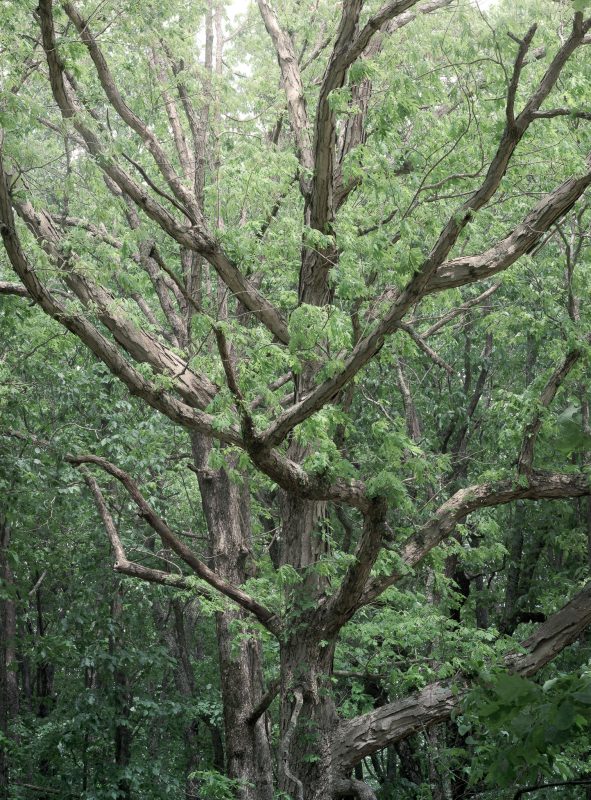
“Reawakening”, Late Spring 2025 - A newer friendship realized just a few weeks later, after three years exploring its mountainside home.
The tree had an impressive yet unassuming presence, quietly overtaking my sense of purpose. Not a giant, nor a dwarf—just somewhere in between, ordinary in most ways. Looking upward, I realized I stood too close to frame a worthy portrait, but I reached out to touch the old oak with my hand, red with new scratches, out of respect. It would have felt too rushed and transactional to photograph it right away, to force a superficial relationship, without proper introduction.
This was the first sweat I’d felt while visiting here since early Autumn, and the new humidity caused my clothes to stick to my skin. As the forest thickened with even more undergrowth in the coming weeks, sweat would become a real hindrance to my mood and motivation. This place would inevitably fill with ticks, snakes, and hornets—creatures best avoided until the cooler temperatures of Fall drive them into the forest floor. Today, thankfully, shade worked alongside a generous breeze to cool my thoughts and emotions. It would be good to make some photos with help from my new buddy—this oak, who I realized in fact had secretly watched me walk past a dozen times already. We had just met, at last, and our next encounter couldn’t be guaranteed here on the edge of approaching Summer.
Clouds couldn’t be seen through the canopy, but I knew many passed overhead because of their effect on the trunk and appendages. Sunlight transitioned noticeably from extremely bright and spotted to boring, dark, and flat. Somewhere in between, the curve of the trunk and angles of the branches were afforded some dimension by waves of diffused, directional light.
Eventually we got there, working together between the clouds, to make something where once there was nothing. Nothing, only in the sense that my time with this oak did not exist before that day, and we never had anything to share with each other. I decided on an aspect ratio that honored the balance I discovered among its many branches. I turned the focus ring on my lens to crispen the oak’s torso, while I allowed some of its branches, and the background plantlife, to slightly blur. This seemed to align with my experience of our first meeting, when I was catching my breath and could only see clearly a short distance ahead. Then, I gave my polarizing filter a last experimental twist to help decide how much shine, if any, the thousands of lime green leaves should impart to my camera’s sensor.
Perfect light came and went gently and, with the shutter finally released, I knew the relationship bridge between me and the one who waved had been crossed. My brief time with the oak might even yield an image we would both be proud of. Until I would eventually return to this patch, whether in two days or in a couple of months, I would remain grateful for our time together and the simple lessons I relearned throughout our visit. They say creativity is not a linear process, and I’ve realized that neither is a person’s openness to the things they consider beautiful.
I wouldn’t know for a couple of weeks how much I actually liked the photograph. At first, it felt almost too spare—too quiet in its simplicity—or a bit obvious at times. But over time, something began to shift. I kept returning to it, almost unconsciously, as if drawn by a calm presence. The composition, which at first seemed elementary and straight on, began to reveal a quiet elegance I hadn’t appreciated at first glance. The open-handed gesture of the branches, the balance of the scene, the way the light slipped gently across the frame—none of it demanded attention, yet all of it held its own kind of grace. It was like getting to know someone who doesn't speak loudly but whose words live on in memory. Within all four corners, I found something lasting—not in complexity, but in clarity.
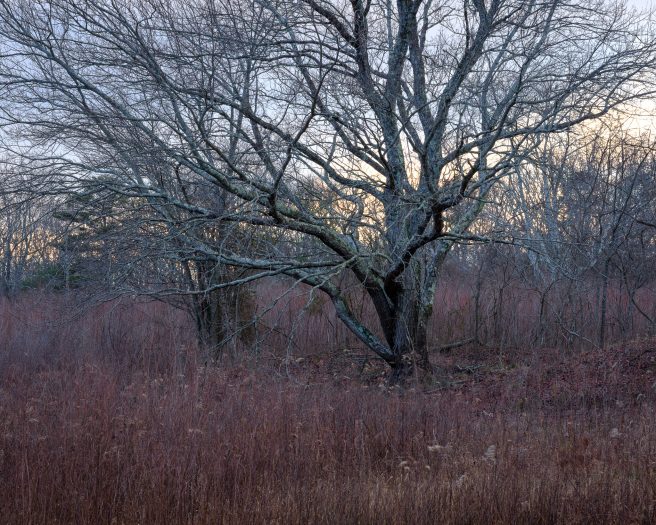
“Memory of the Present”, Winter 2024 - A few acquaintances I finally got to know better at the end of last year.
Most trees demand more than one meeting to make their best photograph, and, just as with people, sometimes the truest friends are not the ones who dazzle you at first but the ones who invite you to keep looking and listening.
These things don’t reveal themselves in a single snapshot moment. They ask for patience, and they reward it with depth. Like any meaningful relationship, the more time I gave it, the more beauty I found waiting to be seen. This friendly oak, which had long been a hidden, unseen presence, will be a trusty companion on all my future walks through the briars.
- “Briar Patch Companion”, Early Spring 2025
- “Reawakening”, Late Spring 2025 – A newer friendship realized just a few weeks later, after three years exploring its mountainside home.
- “Memory of the Present”, Winter 2024 – A few acquaintances I finally got to know better at the end of last year.
Issue 333
End frame: A Winter Coral by Trym Ivar Bergsmo
‘A winter coral’ is not exactly a landscape photograph. Yet, somehow, it evokes so much of what, to me, makes great landscape photography. Trym Ivar Bergsmo was, in his own words, of the North. He travelled all over the world making images, searching for his ‘inner landscape’, but ultimately found it at home. That home can be different things to different people; the connection is the key. Just like relationships, building those connections takes time, thought, effort, persistence, perseverance, and patience. Looking through Trym’s portfolio, that connection shines through, and it is fitting that the team at ‘On Landscape’ will be writing a tribute to him and his work.
So much of landscape photography is about light; the quality, direction and fall/differential. These aspects may seem outside our control a lot of the time, but the more of a connection we have with our subject, the more we are able to mould these elements to build a narrative. In a winter coral, we have ethereal soft light throughout the frame, but the warmth of the sunlight seems to pick out just a few of the faces and the landscape beyond. This effect is enhanced by the warm skin tones and the red accents in the clothing, yet these elements are not harsh due to the considered use of shutter speed and soft focus. The relatively slow shutter speed also causes the movement in the reindeer, rendering them almost like the flow of a river. There is an organic dynamism to the sense of movement through the frame; it feels alive.
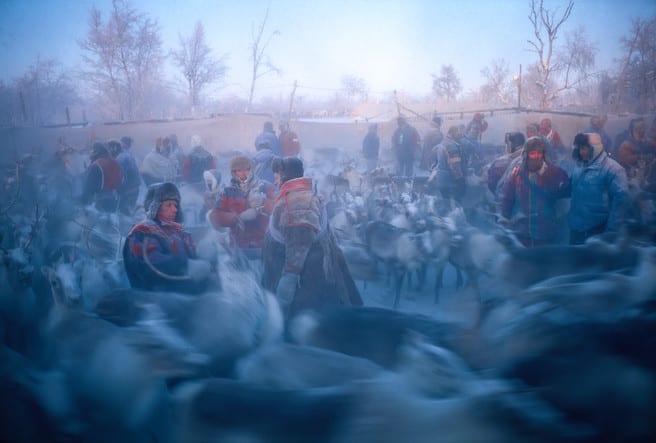
Almost nothing in the frame is pin sharp, yet it conveys so much. They say a picture can speak a thousand words, but a great picture leaves even the words behind. They convey feelings, glimpses, fleeting ideas and emotions; things we often can’t describe or put into words, but we can sense on some, almost metaphysical, level. When you come across images that do that, they make a lasting impression.
These days, our cameras surpass anything we could truly require in terms of technical excellence and the ability to capture almost any scene or subject. Our ability, as photographers, to truly convey emotion remains an elusive skill, though. Generative AI already has the capability to produce almost anything we ask of it, but I dare say it would fail to produce an image with the depth of soul that this one has.
Images like these are not about technical skill or processing power; they are about a human connection and response to a place, people, conditions and circumstances. These things require an open heart and open mind to allow the energy to flow through us, and Trym did his bit to show us the way.
Alex Jones – Portrait of a Photographer
Alex Jones photographs like a designer sifting through an antique store: patiently, curiously, and with a deep reverence for form. His work is not loud; it does not insist. Instead, it invites us to look closer, to notice the quiet details that most would overlook. Each image feels like a found object, carefully selected for its texture, its geometry, or its subtle interplay of light and shadow. This impulse - to collect, to notice, and to preserve is no accident. It traces back to Alex’s childhood, shaped by the dual influences of the natural world and the world of design.
Raised in Tampa, Florida, Alex grew up with architect parents and a mother who was both a connoisseur of good design and a relentless seeker of overlooked treasures. His mother's passion for architecture, furniture, and art museums found a natural extension in her love for thrift stores; she would spend hours searching for the right curve of a chair leg or the perfect vintage lamp.
This aesthetic foundation, rooted in shape, structure, and patient discovery, would later resurface in his photography; but not right away. As a teenager, Alex took a black and white film class that gave him his first real exposure to photography. It planted a seed, but one that lay dormant for years. Instead, he followed a different passion: snowboarding. A high school trip to Utah had introduced him to real mountains for the first time, and the thrill of carving through snow quickly became a lifelong pursuit. That passion pulled him west, where he spent two years as a self-described “ski bum” in Park City. Surrounded by mountains and immersed in the rhythm of outdoor life, his appreciation for nature deepened.
4×4 Landscape Portfolios
Welcome to our 4x4 feature, which is a set of four mini landscape photography portfolios which has been submitted for publishing. Each portfolio consists of four images related in some way. Whether that's location, a project, a theme or a story. See our previous submissions here.
Submit Your 4x4 Portfolio
Interested in submitting your work? We are always keen to get submissions, so please do get in touch!
Do you have a project or article idea that you'd like to get published? Then drop us a line. We are always looking for articles.
Graeme Darling
The River Bed
Leo Catana
Northern Scandinavia
Robert Hewitt
Humour in the landscape
Ronald Lake
Poplars in Morocco's Ounila Valley
Poplars in Morocco’s Ounila Valley
The Asif Ounila River in Morocco runs southward from the Atlas Mountains through a very narrow valley that once was a route for caravans traveling between the Sahara and Marrakech. The most prominent tourist destination along the river is Ait Benhaddou, a walled town of earthen buildings that is a UNESCO World Heritage site, and a film location that has been used in nearly two dozen movies and TV shows, from Lawrence of Arabia in 1962 to Game of Thrones and Outer Banks more recently.
Drive an hour north of Ait Benhaddou and you will see few if any tourists. Instead, there are small Berber (Amazigh) villages dotted along the river. The valley is a thin band of remarkably thick vegetation, a stark contrast to the steep, arid, ochre-colored mountain slopes that loom all along its length.
Stands of poplar trees fill the valley. It is still winter, so their leaves are gone. Instead, the filigreed patterns of their branches bask in the early morning light. My mind is no longer occupied by the history of the caravans, the movies, the tourists. Even the mountains recede from view. I simply gaze at the trees, and the colors that surround them.
For me, photography is a form of insight, which aims to reveal essential facets of the world around us and our experience within it. I prefer to make images that challenge our expectations, present a new perspective, and inspire a sense of fascination.
Largely self-taught, I took up photography as a result of visiting Madagascar in 2007. Because Madagascar was so different than the suburban Connecticut environment I lived in, I thought I had better bring a camera with me, and hastily learned the basics of how to use it. Madagascar made such a deep impression on me that I felt compelled to publish a book of my photos (Glimpses of Madagascar: Lemurs and Landscapes, People and Places). Soon after, the book became a featured selection in the Annual Holiday Book Guide of Outdoor Photography magazine, and my photos were exhibited at various places. The recognition was nice, but the real effect of my “beginner’s luck” was to stoke my appetite for doing more photography - regardless of whether I had an audience or not.
Since then, I have lugged my gear around the world, shooting images of landscapes, wildlife, city scenes, and people in such diverse places as Iceland, Scotland, Botswana, Namibia, China, the UK, Ecuador, Antarctica, US national parks, and my own backyard. More importantly, even when I don’t have my camera with me, I find myself viewing and appreciating my surroundings with a photographic eye.
Humour in the landscape
Have you ever played a game of visualising living things in clouds, mountains or landscape? Somewhere, I started a small project, which is ongoing, of recording the humorous scenes in woodland which I came across in my walks or photoshoots.
These 4 images were taken at different times and in different locations. The earliest was taken on the slopes of Cader Idris, where I saw the Welsh Dragon, which started me off. The genie with the bendy knees is a Lakeland offering, whilst the Rhino head is a local scene.
The last image is from Eigg, which seems to show a Swan-like creature eating a snake or its tail! All images let the imagination roam.
This exercise provides an antidote to interesting landscapes where differing rules of composition would apply. All are rendered in monochrome to avoid distractions from the surroundings.
Mostly, the images found would be dead wood, but not always. For example, the sinuous curves of a trunk can be very suggestive.
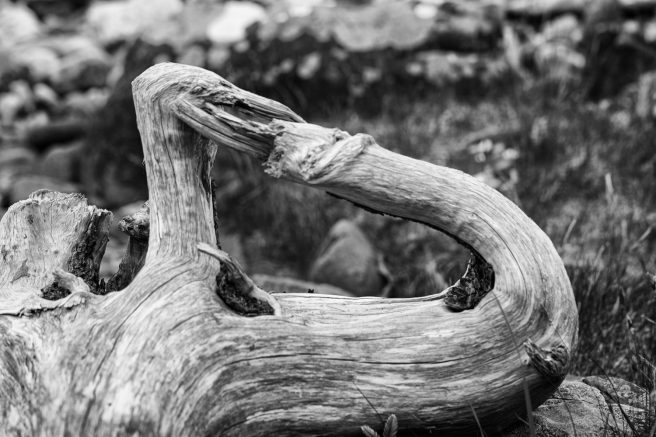
Northern Scandinavia
The River Bed
I made the decision around six years ago to purchase a drone when I could not decide which lens to buy for the camera as I realised I was going to a different locations taking a similar composition of a similar subject and it was time to experiment.
The drone gives me a unique view and perspective and a sense of freedom.
Kjetil Karlsen
I was introduced to Kjetil's work when Arild Heitmann submitted his article for his chosen end frame image. Like Arild, I was captivated by the image. As Arild says, "It depicts a typical stormy winter day in the north—visibility reduced to almost nothing, the wind and snow practically lashing out at you. I imagine that’s the sentiment behind the title: you couldn’t be further from lilac blossoms than this." I reached out to Kjetil to find more about his work and the story of his connection to the landscape of northern Norway.
We’d love to hear a bit about your background — what first sparked your interest in photography, what you studied, and what kind of work you do now.
With my curiosity, connection to the nature I was surrounded by, and my creativity, it was my grandmother who first sparked my interest in photography. She was also the one who bought me my first cameras. She always had a camera with her, almost wherever she was. We spent a lot of time together, and her knowledge of nature, her ability to convey stories in combination with photography, opened up a whole new world for me that was exciting and that I took to heart and that I felt familiar with from early childhood. At that time, the pictures were created as something concrete, in addition to the memories. Documentation of events and experiences.
Gradually, the technical elements became more important, and the patience of waiting for the right light, the elements of the image, and the awareness of the meaning of the image became clearer. To me, many of my previous photos appear "empty". Many of them are beautiful, and have good subjective memory. Preferably ,species photos from the world of fauna and flora. But still "empty", because apart from the fact that I have memories attached to each picture, there is no more. And it is this "more" that I gradually start to look for.
One beautiful summer evening in my teenage years, I lay on my back in the grass and looked up at the sky. It was midnight, and the sun was shining diagonally across the landscape towards where I lay. In the same way, the cool wind blew in over where I lay and carried with it the scents of the marshes, forests and mountains, and it was all an intense experience that I knew I would always remember. Then I thought... "How can I convey this feeling in one picture". A picture in which those who see it feel much the same. Of course, it was too ambitious a thought, but it was the start of where I am today.
Later, my interest in human emotions, interpersonal relationships, man's connection to nature and nature's mysticism became stronger, and my experiences with different landscapes and how these affected me became something I had to explore. Here in the north, the landscapes have great variation. It is a short distance from the sea to the mountain plateaus and mountain peaks, although there are large differences in altitude. From the forests that envelop you and invite you to security, to the bare mountain that lies there expansive, black and bare, and that puts man's mental strength to the test, to the mountain peaks that stretch huge and majestic towards the sky. Beautiful and dangerous.
Technology advance and evolutionary adaptation or why it is all about harmony (for me)
The idea that an artistic expression of harmony was an allegory for reinforcing the dominant social foundations is still a compelling argument. Landscape art has long been associated with power and order…. However, at this moment of environmental crisis, creating lyrically evocative narratives that connect us to our landscape is an act of resistance. This way of perceiving the natural world has also become a personal way of building a playful relationship with the landscape that addresses memory, nostalgia, history, landscape, place, storytelling and the passing of time ~Simon Dent, in Shan Shui in Silva Emete1
With film photography we photograph what we saw; with digital photography we see what we have captured without really having looked, nor really been able or even wanted to composev~André Rouille, Le Photo-Numérique: Une Force Néo-Liberale, 2020, p.47
They paved paradise and put up a parking lot ~Joni Mitchell, Big Yellow Taxi, 1970
As I write this, I am rapidly approaching 75 years old and thinking that is probably a good point at which to stop producing articles for On Landscape before some elements of old fogeyism start to creep in (and, be warned, this may already be evident in what follows)2. So, this article will be my 30th and last contribution and consequently provides an opportunity for reflection. When I wrote my very first article (some 8 years ago now) on The Science and Art of Hydrology3, it was an initial attempt to try to convey (and help to understand myself) what lay behind the types of landscape images that I was producing, particularly, as an academic hydrologist, those of water. This “trying to understand” has been a recurrent theme in articles since, including exploring some of the debates on photographic philosophies.
Because it has been suggested elsewhere that the technological advances in the last 200 years have far outstripped the capacity for human evolutionary adaptation and that this has resulted in a modernist separation of people from nature, both in the developed world and increasingly elsewhere. At its most basic, the technological developments that have provided shelter and comfort (for most), access to travel (for many), and fast communications and information/disinformation (for nearly all, in the West at least) have also served to create barriers between people and the landscape5. Those developments have meant that we are now living unsustainably on this earth and, in the majority, do not care enough about the exploitation of resources and resulting changing climate (present readers excepted, of course). Or rather that some of us might care, but are not willing enough to make sufficient major changes to our lifestyle to make it more sustainable – and that can often include our photographic practice.
This is, of course, despite the evidence that being out in “nature” is good for us both physically and mentally6. That benefit will depend on the nature and landscapes that are accessible to us, but even urban green spaces have been shown to have important positive impacts (while the negative impacts of exclusion from nature, such as during the Covid lockdowns, are also well recorded). In Switzerland, where I spend much of my time now, nature is readily accessible through good public transport systems and a network of well-marked trails for walking. But even in the Swiss landscape, the negative impacts of technological advances are all too evident when walking past the infrastructure associated with the ski industry, the surface damage resulting from ski runs and access roads, ways of storing water for use in snow canons, valleys drowned by dams for hydroelectric power generation (providing renewable energy of course) and fields disappearing under construction sites. Observing the increasingly rapid retreat of glaciers, accelerated by climate warming, is particularly sad7. That does provide opportunities for some images of waterfalls sustained by glacial melt throughout the summer, but many smaller glaciers will soon be lost completely so even that will not last in the longer term.
On the other hand, technological advances have meant that we have more scientific understanding of nature and landscape. Meteorological, hydrological, geological, pedological and ecological knowledge has been driven by, and also required by, advances in technology in an analogous way that we, as photographers, have driven and served (by buying new gear) the developments in camera technology, as Vilém Flusser pointed out more than 40 years ago. That scientific knowledge means that we could have a more harmonious and sustainable existence on this earth if there were not so many barriers to evolving to doing so.
Traditional pre-technological societies did not have such barriers. They were much more intimately embedded in the landscape, even if more vulnerable to natural disasters. Such societies had to know their landscapes intimately to survive.
But how does this relate to what we do as photographers?
It is evident that there has been dramatic progress in digital sensors over a short period of time, a good breeding ground for GAS and upgrading of kit, even if we do not really need the latest resolution and generation. The result, especially as a result of advances in mobile phones, has been a plethora of images, with resolutions that are way beyond what is necessary for anything that most of us will display electronically or print in hard copy form. It is currently estimated that some 61400 images are taken every second and that nearly two trillion will have been generated in 20249. Storing these images, both locally or in the cloud, requires resources of both hardware and energy that is adding to climate change. Sharing those images across the internet, requires more hardware and energy, that is adding more to climate change. The numbers continue to grow, despite our awareness of climate change and its potential impacts (and there are, of course, many other ways in which we as photographers contribute to CO2 and other greenhouse gas emissions10).
It can also be argued that part of the problem is that the camera itself puts another hardware barrier between us and the landscape. Looking through the viewfinder, we do not see a living landscape, we see a potential composition. We “take” images from the landscape in a way that is conceptually a form of exploiting the natural resource. Normally, that might have only a minimal impact (depending on how far we have had to travel to be there) but there are also some particularly vulnerable sites made popular though Instagram and YouTube where selfish or careless photographers - or just the sheer numbers of photographers - are damaging the site to get the shot or even just to take a selfie with the landscape as background11. Our adaptation to the technology is greater than our adaptation to the threats to the landscape and to life within it. In part that is because we are rewarded by our use of the technology - in having a record of our lives, or images that we can share with others, exhibit or put in a book.
With digital this has become even easier, because we can immediately review the images we take. We are encouraged by the technology to make ever more use of the technology. The numbers of images continue to grow and grow, encouraged by the apparent low cost of digital images, but with the all-but-hidden cost of using more and more resources (and the impact of AI generated images is only just starting to be felt)12. So now, on the one side we are overwhelmed by images of landscape beauty, and on the other we are overwhelmed by images of landscape loss and destruction (and the impacts of war and famine). We allow both to coexist, discordantly, in our minds and, sometimes, our practice spans both.
It is recognised that human evolution and adaptation is shaped by culture and technology much more rapidly than can occur by genetic changes.
Culture provides a second, and extraordinarily powerful, way of evolving. Genes encode information about phenotypic solutions to problems that organisms encountered in the past, and that information is transmitted only from parents to offspring. By contrast, cultural information—knowledge, technology, ideas and preferences—can be disseminated broadly, and the information can accumulate within a single generation ~Richard Lenski, 201613
Indeed, it has been argued that humans have put limits on the process of natural selection by having the technology to ensure that nearly all children survive to adulthood.
There's been no biological change in humans in 40,000 or 50,000 years. Every thing we call culture and civilization we've built with the same body and brain ~Stephen Jay Gould (1941-2002), 200014
So what needs to evolve culturally to deal with this technological overload and failure of sustainability?
Is it possible to bring some harmony to this cacophonous cascade of discords? Harmony has long been taught as one of the fundamental principles of art (the others commonly cited being balance, emphasis, movement, proportion, rhythm, unity and variety). Harmony in this sense means having a good balance of elements of colour, value, shape and textures in an image to produce an effect of wholeness. There are many articles online about harmony in photography, for example on how to use the colour wheel and complementary colours in composing an image (or, less happily, in how to modify colours in post-processing for greater harmony and impact)15. But harmony (as well as its musical connotations) also has the wider definition of living peacefully with one another, or of living in harmony with nature.
It is naïve, of course, to suggest that pre-technological societies lived in harmony with nature. They also exploited nature for survival (and in some parts of the world still do) and were affected by natural disasters of floods, earthquakes, tsunamis, and volcanic eruptions.
In fact, we are not short of philosophical advice about achieving harmony, from Confucianism and Taoism in ancient China; the Vedic philosophy of ancient India; Plato, Aristotle and the Stoics in ancient Greece; Marcus Aurelius in ancient Rome; to Leibniz, Schiller, Santayana and Naess in more modern times17. There was even a 2010 report by the Director of the United Nations that linked the goals of sustainable development to living in harmony with nature18.
Dwell on thoughts that are in harmony with nature and her laws, and act accordingly. Don’t let yourself be pulled off course by the insults or injuries of others. Let them go their way and you go yours, continuing on the path of reason. This is not selfish or antisocial on your part—far from it. Your individual reason is not opposed to the common good, but in harmony with it.” ~Marcus Aurelius, 121-180 BCE
While human evolution has changed little with the advent of industrial technology, clearly societal evolution and the nature of thought have changed dramatically in the last two centuries since the Enlightenment and its myth of understanding and controlling nature that drove the beginnings of the Industrial Revolution. While we still create myths of sustainability today, underpinned by idealism as well as science19, modern society is largely based on exploitation of both nature and people. The ideals and myths of living in harmony with nature have been largely lost. If we think about images in this way, then those that reveal the beauty of landscape might be considered as attempts at harmony; while those that represent loss and destruction are recording the ways we are failing to live in harmony with nature. Making and presenting either type of image can be considered as a political act (even if we rarely think about it in such terms), but the cases where the such images have had real political impact appear to be few.
Those few celebrated cases do, however, include the role of the images of Carleton Watkins in the designation of the Yosemite Valley as the first National Park in the US in 1864; the images of Ansel Adams (1902-1984) in the formation of the Kings Canyon National Park by Franklin D. Roosevelt in 1940; the images of Horace Kephert (1862-1931) and George Masa (1885-1933) that influenced the designation of the Great Smoky Mountains National Park in 193419; the Morning Mist, Rock Island Bend image of Peter Dombrovskis (1945-1996) in saving the Franklin River in Tasmania from hydroelectric power development in the 1980s21; and the Colorado photographer John Fielder (1950-2023) whose work inspired the Colorado Wilderness act that created 36 wilderness areas in the state22. But the images of Eliot Porter in The Place No One Knew23were too late to save the wonders of Glen Canyon from inundation under Lake Powell (though recent long term droughts, thought to be exacerbated by climate change, have allowed some of the side canyons to be visited again).
While Walter Niedermayr’s striking images of the Alps, including skiers and ski infrastructure, are also political in this sense of raising awareness, they have not resulted in any constraints on development. Martin Parr’s Small World images have not had led to any mitigation of the overtourism that is producing demonstrations and active resistance in places such as Barcelona, Venice, Mallorca, Bali, Santorini, and even rural Galicia24. Some of the aerial images of the destruction caused by mining and tailings by Edward Burtynsky even give the impression of abstract beauty, and certainly have not had any impact on the sustainability of mining practices25.
All the images of retreating glaciers, both by photographer artists, scientists and satellites have had little impact on national policies, even in Switzerland and other countries being significantly affected (some 10% of glacier volume in Switzerland has been lost in the last 2 years26). All the artistic images of lakes and rivers in Britain have failed to stop the illegal releases of untreated sewage that is having such an impact on the water quality and ecology. Even images of the sewage releases or resulting eutrophic algal blooms and all the scientific data that has been collected, including by citizen scientists, and public demonstrations have not yet had any significant impact on the practices of the water industry or policy in government27 (but we should hope that will not last). All the wonderful images of the amazingly skilled and dedicated wildlife photographers have done little to halt the decline in numbers of birds and animals as we live out the 6th mass extinction28.
Indeed, it can seem that images reflecting the beauty of nature only serve to suggest that the degradation is not so serious. Perhaps the very fact that image numbers continue to grow and grow only serves to minimise such political impacts. The sheer numbers have only meant that images will be less effective than 80 or 100 years ago. Already as individual landscape photographers, we tend to have an overload problem with the images we take ourselves, since although we will not consider them all to be of the highest quality it is still difficult to delete all the others since our opinions might well change in a few months or years (…though again that storage really does have a real cost in resources and energy, even if our travel to get to the places we photograph might dominate any other photography related energy consumption or CO2 emissions). That is not to say, however, that the hope for political impact, has died out. Richard Sharum, talking about his recent book Spina Americana, stated:
It reflects my general philosophy towards photography as an anvil for activism, as well as my opening argument for a new direction in the hope for a more collective and persistent empathy.29
I suspect that most readers of On Landscape will lean towards harmony with nature in ways that reflect our own emotional responses. Many will be prepared to argue that in attempting to show how beautiful nature can be, we strengthen the case that is worth preserving. That has certainly been the foundation for much of my own work. As such, although we do “take” our images from nature, we also want them to be a fairly faithful realisation of the real scene. We would like to hope that the image has some harmony with the viewed reality, our felt experience of being there, and what that reality might mean to us in a time of change.
This was precisely the goal, or mission, of film photographers: to fix a centre to the chaos of the world, to subject it to a geometric order and extract a truth by eliminating, cutting out, purifying until we end up with an intentionally constructed shot, captured at a “decisive moment” … At the opposite end of the spectrum are digital photos: too quickly taken, too fleeting, often too banal; they undermine the viewer's desire for the aesthetic experience of contemplation … The quest for truth has been transformed into a consumption of fictions ~André Rouille, Le Photo-Numérique: Une Force Néo-Liberale, 2020, p98/89/98
Many landscape photographers have written about the value (be that physical, psychological or spiritual) of being out and about in the landscape, over and above any images that we might bring back from any of our excursions. It does not even need any camera to be involved, which brings me back to my favourite photographic quotation, much cited in On Landscape30 and elsewhere, of Dorothea Lange (1895-1965) in the Los Angeles Times of 13th August 1978, that “The camera is an instrument that teaches people how to see without a camera.” The advantage of going for a walk with a camera is that it really concentrates the mind on looking, in particular in seeing some of the detail of what is there (and perhaps then create a composition)31.
And, returning to Vilém Flusser, there is always the challenge of avoiding redundant images. It is ever more the case that everything has been done before, that every new image is in some sense redundant, another version of the same. It might be our own version of what has been done before, with a degree of personal satisfaction of capturing the shot, but might there not be more interesting ways of trying to avoid redundancy? One way that might be more harmonious could be to explore the locally unique surroundings in preference to those highly photographed places that require long distance travel and that have been seen so often before. There might then be more satisfaction in the hunt to find something more original, more personal, than going somewhere far away to only produce redundant images you will already have seen. As David Ward put it:
It's important to me that I am making an enquiry about my surroundings in my images, rather than imposing a conclusion. I am not seeking to make definitive statements because I don't know the answers. The questions vary enormously from image to image; I might be asking about the colour of light or what is it that is beautiful about moving water or why I find that arrangement of elements interesting or musing on the ecology of a particular place.” ~David Ward in Nobody Expects the Inquisition32
This implies that we need to evolve a deeper, more thoughtful, approach to the landscape. Many landscape photographers are there already, of course, including the readership of On Landscape and those photographers following the 7 Nature First principles33 to minimise impact and to leave no trace of our passing in making our images (and ideally in the manner of our getting there too). As with the Swiss glaciers, seeking harmony has to represent more than recording their current beauty in the process of disappearing34. It should involve a consideration of what might be required to preserve that beauty in the long term, to ensure that that our relationship with the landscape might be sustainable in this technologically dominated world. But is then the viewfinder a barrier to thinking in that way and acting according? I think it can be. I think it has been in my photographic life in the past which has not always been so thoughtful about the impacts we have, even though as far back as I can remember I have cared about the landscape35. We have to think, therefore, outside the box, whether it is in hand or sitting on the tripod! To achieve some degree of harmony, both as one of the fundamental principles of art, and in the sense of our reflecting our own authentic feelings about a place or element of the landscape.
So in this, my last, article for On Landscape can I encourage all who might read this piece to evolve your thinking and practice towards a more ancient idea of harmony with nature, and consequently to be more thoughtful about your approach to the landscape and the sustainability of its beauty. That does require a philosophical stance, perhaps the personal philosophy of harmony as advocated by Arne Næss. What might that look like? It means thinking about harmony in the sense of sustainability in the long term, with the classic dilemma that sustainability implies policies at national and global scale and what we can do as individuals seems so miniscule. But if we do care, we should do what we can to live more sustainably; to think about our impacts on the landscape; to reflect nature (and not some artificial or augmented reality); and to reveal the wondrous details of nature that might otherwise be missed so as to encourage the recognition of their value.
You will, of course, appreciate that it really does not seem to be the way the world is going. There are more and more images that are simulacra or constructed reality rather than simulationsin the sense of Jean Baudrillard (1929-2007)36. But in terms of social evolution, education is important. Teach your children well, as the Graham Nash song says37. Do we need to do more to educate our children about nature and landscape before it becomes something that most will only experience as virtual realities in games, as nature documentaries on screens (however wonderful), or as distant backgrounds in selfies38? It is not as if we have not been aware of such change for a long time. If Vilém Flusser has not been widely read, even by photographers, in more popular culture Joni Mitchell was singing, as long ago as 1970:
“They took all the trees and put 'em in a tree museum
And they charged the people a dollar and a half to see them
…
Don't it always seem to go
That you don't know what you got 'til it's gone?” 39
Current technologies create barriers to real experience in favour of experience filtered by the technology. The response to the technology in this case is currently evolving to put the self before the landscape. The rise of the selfie represents a form of disengagement with nature, encouraged by the technology in a way that is not sustainable, but it is also not a necessary consequence. We can evolve our practice to stay aware of what is needed for sustainability and of harmony with the landscape. To cite Brad Carr:
The camera is a vehicle that can carry us towards a place of deep healing, resulting in self-acceptance, and, therefore, acceptance of others. Nature, I believe, is the portal through which we now need to travel if we wish to reverse the damage of the past and co-create a more peaceful, harmonious and loving world to exist in tomorrow.40”
That then is my two-penn’orth. I will stop now and leave you just with a few final images of some new visual haiku, taken from a second volume The River as Haiku41. These have been taken with harmony in mind, mostly on walking trips from our front door or reached by public transport. I hope you will be able to find projects of your own that allow you to do the same.
References
- https://www.onlandscape.co.uk/2023/10/shan-shui-in-silva-elmete
- An old fogey may derive from the Scots foggie, fogie (noun) from foggie (“covered with moss or lichen; mossy”, adj) to suggest a dull person (especially an older man) who is behind the times, holding antiquated, over-conservative views. The OED's earliest evidence for old fogey is from 1785, in a dictionary by Francis Grose, antiquary.
- In Issue 135, https://www.onlandscape.co.uk/2017/04/the-science-and-art-of-hydrology/
- See https://www.onlandscape.co.uk/2020/06/landscape-and-the-philosophers-of-photography/
- The writings of the iconoclast philosopher Ivan Illich (1926-2002), active in the 1960s and 70s, are worth exploring in this respect. It was he who, in his book Tools for Conviviality, suggested that the ideal form of transport was the bicycle as a compromise between going further and spending more time travelling. Anything faster and it would necessarily result in more time spent travelling. The proof of this is all the wasted hours spent in airports by many people since. His books on Deschooling Society and Medical Nemesis are also worth reading.
- See, for example, https://www.theguardian.com/environment/article/2024/sep/04/better-than-medication-prescribing-nature-works-project-shows
- See https://www.onlandscape.co.uk/2021/05/loss-in-the-landscape/ in Issue 231
- See, for example, Cost–benefit analysis of flood-zoning policies: A review of current practice at
https://wires.onlinelibrary.wiley.com/doi/10.1002/wat2.1387 (open access). In Switzerland, the risks are also getting greater as seen recently in the failure of the Birch glacier and consequent rock avalanche that buried most of the village of Blatten. This type of risk is increasing as a result of the loss of permafrost in the mountain soils. - See https://photutorial.com/photos-statistics/. Note that Vilém Flusser already talked about the redundancy of most images well before the age of digital photography. A more recent discussion along similar lines is the book by André Rouille, La Photo Numerique – Une Force Néo-Libérale, L’Echappé: Paris, 2020 (in French). The arguments on the service of the digital image to capitalism are not always convincing but the discussion is interesting. André Rouille has published a number of books on photography and maintains the site www.paris-art.com. The only book of his I could find that has been translated into English was A History of Photography: Social and Cultural Perspectives with Jean-Claude Lemagny from 1987.
- See the article by Joe Cornish in Issue no. 180 https://www.onlandscape.co.uk/2019/03/a-question-of-responsibility/ and the discussions that followed.
- See the article by Matt Payne on concealing locations, especially sensitive locations, https://www.onlandscape.co.uk/2024/12/geotagging-gatekeeping-location-sharing/.
- An academic paper on Life Cycle Analysis of film and digital imaging from 2006 suggested that:
When all impacts were considered, no single imaging scenario was clearly "better" or "worse" than the others. Imaging scenarios that were advantaged in one impact category were often disadvantaged in others. This leads one to believe that a more complete picture (with more impact categories) would also not show an “absolute winner.” See https://www.mech.kuleuven.be/lce2006/070.pdf. However, their figures suggested that the lifetime number of images for a film camera at that time was only 4800, and actually more than a digital camera at 4500. The number of digital images produced per year since 2006 has expanded exponentially. - http://assets.press.princeton.edu/chapters/s10711.pdf in Jonathan B. Losos and Richard E. Lenski (Eds), 2016, How Evolution Shapes our Lives, Princeton University Press, Chapter 1
- Gould, S.J. 2000, The spice of life. Leader to Leader. 15:14–19., see also Templeton, AR., 2010, Has human evolution stopped? Rambam Maimonides Med J. 1(1):e0006.
- E.g. https://iso.500px.com/color-theory-photographers-introduction-color-wheel/
- See https://en.wikipedia.org/wiki/Arne_Næss. Næss actually called his own ecological philosophy Ecosophy T where the T referred to Tvergastein, the mountain hut where he wrote most of his books. He encouraged people to develop their own personal philosophy.
“By an ecosophy I mean a philosophy of ecological harmony or equilibrium. A philosophy as a kind of sofia (or) wisdom, is openly normative, it contains both norms, rules, postulates, value priority announcements and hypotheses concerning the state of affairs in our universe. Wisdom is policy wisdom, prescription, not only scientific description and prediction. The details of an ecosophy will show many variations due to significant differences concerning not only the 'facts' of pollution, resources, population, etc. but also value priorities.”
Arne Næss, in Drengson, A. and Y. Inoue, eds. (1995) The Deep Ecology Movement: An Introductory Anthology. Berkeley: North Atlantic Publishers.p.8 - Even our current King has been involved in a book titled Harmony: A new way of looking at the world, co-written with Tony Juniper and Ian Skelly in 2010 - https://kings-foundation.org/about-us/philosophy-of-harmony/
- https://www.garn.org/wp-content/uploads/2021/09/Harmony-with-Nature-United-Nations-Report.pdf. This followed General Assembly resolution 64/196 with the title Harmony with Nature
- See for example the 2024 book Agrophilosophie: réconcilier nature et liberté of the French author and philosopher Gaspard Koenig, who proposes a system based on principles of recycling and individual responsibility for a sustainable soil, scaled up to local self-governing communities and to federal nation states with limited powers. He is not so convincing on how to persuade societies to move towards such a sustainable option unless some “miraculous political circumstances” appear somehow. See https://editions-observatoire.com/livre/Agrophilosophie/544
- See, for example, https://smokieslife.org/product/george-masa/
- See https://www.onlandscape.co.uk/2017/06/morning-mist-rock-island-peter-dombrovskis/
- See https://petapixel.com/2023/08/14/revered-landscape-photographer-john-fielder-dies-after-cancer-battle/
- Eliot Porter, 1963, The Place No One Knew, 25th Anniversary Edition published by Peregrine Books in 1988 (ISBN 978-0-87905-249-2) and reprinted in 2000. Michael Engelhard, in his 2024 book No Walk in the Park, points out that Eliot Porter’s book should really have been called The Place Not Many White Men Knew, since there were many places in Glen Canyon that were sacred to the indigenous peoples. The history of the Glen Canyon Dam controversy is summarised in https://en.wikipedia.org/wiki/Glen_Canyon_Dam.
- As reported in https://www.euronews.com/travel/2024/09/02/paradise-ruined-why-spanish-locals-fed-up-with-overtourism-are-blocking-zebra-crossing
- https://www.edwardburtynsky.com/projects/photographs
- See https://www.theguardian.com/environment/2023/sep/28/swiss-glaciers-lose-tenth-volume-in-two-years-climate-crisis#:~:text=Swiss%20glaciers%20have%20lost%2010,have%20caused%20the%20accelerating%20melts. Interestingly, just about the only landscape photographs shown at the recent biennial Images Vevey exhibitions in Switzerland were two of the Aletsch Glacier by Andreas Gursky, the first made in 1993, the second in 2023 (see https://www.images.ch/archives/wp-content/uploads/sites/4/2024/09/CP_GURSKY_IMAGES-VEVEY_04092024.pdf in French).
- E.g. https://www.theguardian.com/environment/2024/nov/03/thousands-protesters-march-for-clean-water-london-sewage-pollution in November 2024. It has been suggested that the private Water Companies have paid out more in dividends to shareholders than has been invested in environmental improvements, and in the case of Thames Water, to bring it to the point of bankruptcy while still releasing more raw sewage and with limited action to reduce the enormous losses of treated water from its pipe network. At the time of writing, there is news that water bills will rise to fund improvements, but without any indication that returns to shareholders will be reduced.
- https://www.worldwildlife.org/stories/what-is-the-sixth-mass-extinction-and-what-can-we-do-about-it. It seems that this is occurring even in the remotest parts of the Amazon forests, see https://www.theguardian.com/environment/2025/jan/30/birds-dying-pristine-amazon-climate-crisis-aoe
- https://www.theguardian.com/artanddesign/gallery/2025/jan/23/this-is-not-flyover-country-a-journey-down-americas-spine-in-pictures
- E.g. in https://www.onlandscape.co.uk/2021/09/the-pleasure-of-the-search-for-the-unexpected/ and https://www.onlandscape.co.uk/2011/07/featured-photographer-michela-griffith/
- See my previous article on walking in https://www.onlandscape.co.uk/2024/06/the-road-not-taken/
- https://www.onlandscape.co.uk/2021/08/nobody-expects-the-inquisition/
- See the article by Sarah Marino at https://www.onlandscape.co.uk/2019/12/7-principles-reduce-impact-nature-photography-wild-places/
- Such as in the images of Thomas Wrede and Ohan Breiding of the degradation of the reflective blanket that covers part of the lower Rhone Glacier in the Valais, Switzerland.
- And was a member of the Thetford Environmental Action Group in 1973. The Group did not last long, but does have an entry in the National Archives I was astonished to find.
- Simulacra et Simulations was first published by Baudrillard in 1981 in French. A good summary can be found at https://en.wikipedia.org/wiki/Simulacra_and_Simulation.
- Actually written in 1968 when he was still with the Hollies, but not recorded until 1970 with Crosby, Stills, Nash and Young. The lyrics start:You, who are on the road
Must have a code you try to live by
And so become yourself
Because the past is just a goodbyeTeach your children well
Their father's hell did slowly go by
Feed them on your dreams
The one they pick's the one you'll know by - André Rouille (op.cit.) notes the important difference between the tradition of the auto-portrait (including in photography) with the intention of only limited circulation, and the selfie intended to be posted on networks with the intention of being dispersed as far as possible.
- https://www.onlandscape.co.uk/2024/11/learning-to-see-again/
- The previous volume, The Landscape as Haiku, was introduced in the On Landscape article at https://www.onlandscape.co.uk/2024/04/landscape-as-visual-haiku/ . It is also available as a Blurb book or PDF at https://www.blurb.co.uk/b/11891565-landscape-as-haiku. The new book is called The River as Haiku and is available as a Burb book or PDF at https://www.blurb.co.uk/b/12348913-the-river-as-haiku. There is also now a third volume, Mallerstang Haiku, with images from my favourite valley in Cumbria. It is also available as a Blurb book or PDF at https://www.blurb.co.uk/b/12426797-mallerstang-haiku.
Desert: sand, dunes and intangible vastness
...sand as far as the eye can see, spread over large and small dunes on the plain. Everything is bare without a green splash of colour to distract the eye, plus unbearable heat. This roughly corresponds to the European perception of deserts. On closer inspection, however, they could be divided into sand, stone, rock and other desert forms, for example, with a geographic perspective.
My focus is on a sandy desert, more precisely, the Rub al-Chali in the south of the Arabian Peninsula. Known in English as ‘The Empty Quarter’. It is the largest sand desert in the world and, depending on the source, extends over 270,270 mi² (approx. 700,000 km²). It covers the territories of Yemen, Saudi Arabia, the United Arab Emirates and Oman.
This region became famous through travelogues such as “Arabian Sands” or “The Wells of the Desert” by Sir Wilfred Thesiger (1910 - 2003). He was one of the first Europeans to cross this desert between 1947 and 1950. The virtual collection ‘Pitt Rivers’ provides an insight into his photographic legacy with Bedouin portraits and numerous photographs of the desert.
My journeys in this region take me in small groups of photography enthusiasts interested in the landscape, from Muscat, the capital, southwards to Salala or vice versa.
Shortly after landing, the pulse rate changes - if we are still conditioned to the European speed of movement, life in Oman moves noticeably slower. Not when visas are being issued or luggage is being unloaded. It is the pace of progress here that adapts to the ambient temperature. In the winter months, this is around 25 °C (77 °F) on the coast and up to 33 °C (approx. 91 °F) inland.
Once inland, it quickly becomes clear that there is little greenery (trees, meadows, fields, etc.) or structures for the eyes and mind to latch onto. It is not just a visual reduction of stimuli that accompanies us in the vast plain before the desert. Earth colours and even white rocks dominate. Here and there, we come across the odd acacia tree. Petrol stations along the way are sparsely framed by a service station, a hotel, a small mosque and a garage.
As we leave the tarmac road, a gravel track accompanies us, as so often, to the oases on the edge of the stony plain. After letting the air out of the tyres, our desert adventure begins. Not from one moment to the next, we are greeted by the first small, waist- to man-high dunes. A few miles further on, the dunes reach a height of over 50 metres, with long ridges leading from peak to peak of a dune complex. But before we reach them, we first have to climb the dunes by the sweat of our brow over a flank. These large or high dunes were formed thousands of years ago. They appear to be firmly rooted and only change their surface contours with the wind. But that is quite enough to adapt our route from the previous year to the new conditions on site.
The course of our adventure adapts to the position of the sun. As at home, dawn and dusk offer the most interesting light from a photographic point of view. So we start with the dawn at around six o'clock in the camp and look for a suitable view in the immediate vicinity. Our photo spot is often in the immediate vicinity – just 50 to 100 metres above us on one of the dune ridges. After breakfast, we clear our camp and set off at around nine o'clock. If we come across any impressive views during the day, we take a photo stop.
As a rule, we don't use a tripod, except for focus stacking or panoramic shots. We spend our lunch break in the shade of our vehicles, under an awning we set up between them. If there is a fountain nearby, we like to combine the break with a refreshing shower. In the late afternoon, we usually reach our next overnight stop by 3.30 pm. Depending on their preference, the participants set up their tent, while others put up their sleeping bag directly under the canopy of thousands and thousands of stars. Once the camp has been set up, we sit together in a cosy atmosphere with tea/coffee/cocoa and biscuits before setting off again to take photos. We gather around the campfire for dinner.
During the day, as we drive through the dune valleys, we wonder from time to time whether we are in a landscape or rather in a natural environment in the sense of wilderness. After all, we so often talk about a desert landscape. Desert landscape - that sounds so obvious. But doesn't a landscape always presuppose human or cultural utilisation and shaping? Forest landscapes in contemporary Central Europe usually refer to forest plantations rather than original forests. Mountain landscapes are culturally characterised by alpine pastures, hiking and skiing areas and traffic arteries. River and lake landscapes have been straightened, dammed and controlled by man, and sometimes even created. 'Here', where we are in the desert, the dunes are characterised exclusively by wind and weather.
The formerly free-roaming camels are now accompanied by shepherds who provide the animals with water and food, milk the camels and slaughter them in due course. Apart from their tracks in the sand, they leave no visible changes in the dunes here. Any tyre tracks, like the camel tracks, are covered by the wind and sand. What remains are the eroded bushes on the sides of the dunes, just like on the plain. This natural environment has anything but a negative effect on us. Wilderness - taking into account the geographical conditions, in which we move respectfully.
The word wilderness: in earlier times, it was associated with negative characteristics, for example, as unpredictable, inhuman, unproductive, unfriendly, uncomfortable, untamed, scary, unsentimental, unjust, unembellished and various other negations. During these days, we feel how good this “empty space” without human intervention is for us. It seems as if the deprivation of sensory impressions sensitises our perception.
A journey through the desert often turns out to be a balancing act between an altered, heightened consciousness and a hallucination. Depending on your point of view, you could also think that the reality experienced here is like a hallucination caused by a lack of distraction (consumption, hunger for experience, etc.).
On the way, we enjoy the view, especially the vastness, which is difficult to put into words here. Even though our line of sight is repeatedly obscured by higher dunes, we know that beyond these dunes, which are visible to us, the desert continues for countless kilometres. Over the days, the theory develops that the desert is a place of contrasts. For example:
- We move in a space that is not tangible or imaginable, and we are shown our limits by our own physical and mental possibilities. Furthermore, this seemingly unlimited space is divided by below (desert) and above (sky) - similar to day and night.
- The dunes: stationary, rooted and yet their surface contours are subject to continuous change due to the constant wind: the transience of the moment in the face of eternity.
- Surrounded by dry sand, many a mind threatens to drown in the feelings and emotions it is thrown back upon.
- Our European hearing, very much conditioned to the urban topography, is confronted with the silence of the desert (to be equated with eternity). What some describe as pure pleasure is like a silent inner scream for others.We move in a space that is not tangible or imaginable, and we are shown our limits by our own physical and mental possibilities. Furthermore, this seemingly unlimited space is divided by below (desert) and above (sky) - similar to day and night.
The colour green - even if it is very limited in the desert - it does exist! Scattered throughout the dune valleys, small lush green bushes with a leathery surface grow close to the ground. Occasionally, gnarled umbrella acacias rise up in the dunes. I am impressed by the numerous, delicate bushes.
At dawn, they offer me favourite motif opportunities. In the immediate vicinity of the bushes, countless tracks from the previous night are visible in the morning hours. They belong to beetles and mice, occasionally a desert fox. They enjoy our vegetable scraps from dinner.
When I set out to photograph the landscape at home, I occasionally take the time to stage the same motif at different times of the day - here in the desert, this approach is almost a must! When we reach our campsite in the afternoon, the first dune valleys are already sinking into long, dark shadows under the light blue sky. The following morning, the sun is directly opposite the dunes and the sky is a vibrant blue (with the same white balance and toning, mind you). Shadows do not seem to exist at this time - the colours of the sand are remarkable.
The question is often asked whether the sand is “really” that red. Between you and me: I don't know! Depending on the time of day, the position of the sun and the direction of the sun, the same dune appears in different colours: White-yellowish in the backlight, with sidelight towards the sun it appears in a pale mixture of ochre and dull yellow tones, orange-coloured in the sidelight with the sun or red-brown with the sun behind it. A play of colours that is second to none!
With all the colours, there are also deliberately colourless shots, reduced to a light-dark contrast as well as structures and shapes, in black and white. Here, the colour of the sand is deliberately pushed into the background. Instead, my focus is on the entertaining play of light and shadow in the morning and evening hours.
Despite all the fascination and enthusiasm for the sandy expanse and emptiness, after ten days in the desert we look forward to the comforts of civilisation. As we immerse ourselves in it, the stimuli increase again, visually as well as all the other sensory organs. But before we indulge in the sensory overload at the evening souq in the city, we immerse ourselves in the waves of the Arabian Sea away from the tourist hotspots.
Regardless of whether we were travelling through nature in its wild and pristine form or a desert landscape, in the words of the American natural philosopher Edward Abbey (1927 - 1989): ‘Wilderness is a necessary part of the human spirit, it is as important to our lives as water and good bread.’ Or as an Arabic proverb puts it: ‘Water cleanses the body - the desert cleanses the soul.’
German Version
Wüste: Sand, Dünen und Weite…
…Sand, soweit das Auge reicht, verteilt auf großen und keinen Dünen, in der Ebene. Alles kahl ohne einen grünen Farbklecks der das Auge ablenkt, dazu unerträgliche Hitze. Das entspricht in groben Zügen einer europäischen Wahrnehmung von Wüsten. Dabei ließen sie sich bei genauerer Betrachtung, beispielsweise mit dem Blick der Geografie in Sand-, Stein- oder Fels- und weitere Wüstenformen unterscheiden.
Mein Augenmerk liegt einer Sandwüste, genauer gesagt der Rub al-Chali im Süden der Arabischen Halbinsel. Im englischen Sprachraum bekannt als „The Empty Quarter“. Sie ist die größte Sandwüste der Erde und erstreckt sich, je nach Quelle auf über 270.270 mi² (ca. 700.000 km²). Dabei bedeckt sie Staatsgebiete des Yemen, Saudi-Arabiens, der Vereinigten Arabischen Emirate sowie des Omans.
Bekannt wurde diese Region durch die Reiseberichte wie ‚Arabian Sands ‚oder ‚Die Brunnen der Wüste‘ von Sir Wilfred Thesiger (1910 - 2003). Er durchquerte zwischen 1947 und 1950 als einer der ersten Europäer diese Wüste. Einen Blick in seinen fotografischen Nachlass mit Beduinen-Portraits und zahlreichen Aufnahmen der Wüste, ermöglicht die virtuelle Sammlung, Pitt Rivers.
Meine Reisen in dieser Region führen mich in mit kleinen Gruppen von landschaftsinteressierten Fotoenthusiasten, ab Maskat der Hauptstadt in Richtung Süden nach Salala oder umgekehrt. Die Routen verlaufen, nach dem wir wahlweise das Hadschar-Gebirge (Dschibal al-Hadschar) oder die Dhofar Mountains (Dschibal Dhufar) überquert haben, um ins Landesinnere zu gelangen nahe der Grenze zu Saudi-Arabien – weit abseits der üblichen Reiserouten durch das Sultanat.
Bereits kurz nach der Landung verändert sich der pulsgebende Takt – sind wir noch auf europäische Bewegungsgeschwindigkeit konditioniert, bewegt sich das Leben in Oman spürbar langsamer.
Nicht etwa beim Ausstellen der Visas oder dem Entladen des Fluggepäcks. Es ist das Vorankommen, dass sich hier der Umgebungstemperatur anpasst. Diese liegt in den Wintermonaten an der Küste um die 25 °C (77 °F) im Landesinneren bis zu 33 °C (ca. 91 °F).
Im Landesinneren angekommen, wird schnell klar, dass Auge und Geist wenig Grünes (Bäume, Wiesen, Felder, etc.) oder Strukturen geboten werden, an denen sie sich festhalten können. Es ist nicht nur eine visuelle Reizreduzierung, die uns in der weitläufigen Ebene vor der Wüste begleitet. Es dominieren Erdfarben bis hin zu weißen Gesteinen. Hier und da stoßen wir auf vereinzelte Akazien. Tankstellen am Wegesrand werden spärlich eingerahmt von einem Rasthaus, Hotel, einer kleinen Moschee und nicht zuletzt einer Autowerkstatt.
Mit dem Verlassen der Asphaltstraße begleitet uns wie so oft eine Schotterpiste bis zu den Oasen am Rand der steinigen Ebene. Nach dem Ablassen der Luft aus den Reifen beginnt unser Abenteuer Wüste. Nicht von jetzt auf gleich, es sind erste kleinere, hüft- bis mannshohe Dünen, die uns in Empfang nehmen. Einige Kilometer weiter, erreichen die Dünen schon eine Höhe von über 50 Metern, mit langgezogenen Graten, die von Spitze zu Spitze eines Dünenkomplexes führen.
Doch bevor wir diese erreichen, heißt es im Schweiße unseres Angesichts erst einmal die Dünen über eine Flanke zu erklimmen. Diese großen bzw. hohen Dünen fanden ihre Grundform bereits vor Jahrtausenden. Sie wirken wie fest verwurzelt und verändern lediglich ihre Oberflächenkontur mit dem Wind. Doch das reicht vollkommen aus, um unseren Routenverlauf aus dem Vorjahr an die neuen Gegebenheiten vor Ort anzupassen.
Der Tagesverlauf unseres Abenteuers passt sich dem Stand der Sonne an. Wie zu Hause, bieten die Morgen- und Abenddämmerung aus fotografischer Sicht das interessanteste Licht. So starten wir mit der Morgendämmerung gegen sechs Uhr im Camp und suchen uns eine geeignete Aussicht in der näheren Umgebung. Häufig findet sich unser Fotospot in unmittelbarer Nähe – nur eben 50 bis 100 Höhenmeter über uns auf einem der Dünenkämme. Nach dem Frühstück räumen wir unser Lager und brechen gegen neun Uhr auf. Stoßen wir untertags auf beeindruckende Perspektiven, legen wir einen Fotostopp ein. Hierbei verzichten wir in der Regel auf den Einsatz des Stativs, ausgenommen beim Focus-Stacking oder bei Panorama-Aufnahmen. Die Mittagspause verbringen wir im Schatten unserer Fahrzeuge, zwischen denen wir ein Sonnensegel aufspannen. Befindet sich ein Brunnen in der Umgebung, kombinieren wir die Pause gerne mit einer erfrischenden Duschmöglichkeit.
Am späteren Nachmittag erreichen wir für gewöhnlich bis 15Uhr30 unseren nächsten Übernachtungsplatz. Je nach Vorliebe, richten sich die Teilnehmenden ihr Zelt her, während sich andere mit ihrem Schlafsack direkt unter dem Zeltdach von abertausenden Sternen betten. Ist das Camp soweit eingerichtet sitzen wir bei Tee / Kaffee / Kakao und Plätzchen gemütlich beieinander, bevor wir erneut zum Fotografieren aufbrechen. Zum Abendessen versammeln wir uns rund um das Lagerfeuer.
Tagsüber während wir die Dünentäler durchfahren, hängen wir von Zeit zu Zeit der Frage nach, ob wir uns hier in einer Landschaft oder doch eher in einem Natururraum im Sinne von Wildnis bewegen. Sprechen wir doch so oft von einer Wüstenlandschaft. Wüstenlandschaft – das sagt sich so selbstverständlich. Doch setzt eine Landschaft nicht auch immer eine menschliche bzw. kulturelle Nutzung, Prägung voraus? Waldlandschaften im gegenwärtigen Mitteleuropa beziehen sich für gewöhnlich auf Forstplantagen als auf ursprüngliche Wälder. Berglandschaft sind kulturgeprägt von Almen, Wander- und Skigebieten und Verkehrsadern. Fluss- oder Seelandschaften von Menschenhand begradigt, aufgestaut und kontrolliert, mitunter auch erst erschaffen.
Hier‘ wo wir uns in der Wüste bewegen, sind die Dünen ausschließlich von Wind und Wetter geprägt. Die ehemals freilebenden Kamele werden heute von Hirten begleitet, die die Tiere mit Wasser und Futter versorgen, Kamelkühe melken und zu gegebener Zeit schlachten. Abgesehen von ihren Spuren im Sand hinterlassen sie hier keine sichtbaren Veränderungen in den Dünen. Etwaige Reifenspuren werden wie die Kamelspuren von Wind und Sand zugedeckt. Was bleibt sind die abgefressenen Büsche an den Dünenflanken wie in der Ebene. Auf uns wirkt dieser Naturraum alles andere als negativ. Wildnis – unter Berücksichtigung der geografischen Gegebenheiten, in welcher wir uns respektvoll bewegen.
Reizwort Wildnis: in früheren Zeiten wurde diese eher mit negativen Eigenschaften in Verbindung gebracht. Beispielsweise als unberechenbar, unmenschlich, unproduktiv, unfreundlich, unbehaglich, ungezähmt, unheimlich, unsentimental, ungerecht, ungeschönt und verschiedene Negierungen mehr. Wir spüren während dieser Tage, wie gut uns dieser ‚leere Raum‘ ohne menschliches Einwirken tut. Es scheint so, als würde der Entzug von Sinneseindrücken unsere Wahrnehmung sensibilisieren. So entpuppt sich eine Reise durch die Wüste nicht selten als Gratwanderung zwischen verändertem – gestärkten Bewusstsein oder auch einer Halluzination. Denn je nach Standpunkt könnte man auch meinen, dass die hier erlebte Wirklichkeit einer Halluzination gleicht, welche durch den Mangel von Ablenkung (Konsum, Erlebnishunger, etc.) entsteht.
Unterwegs genießen wir die Aussicht, vor allem die Weite, die sich hier nur schwerlich in Worte fassen lässt. Auch wenn unsere Sichtachse immer wieder von höheren Dünen verdeckt wird, so wissen wir doch, dass es hinter diesen, für uns sichtbaren Dünen noch unzählige Kilometer so wüst weitergeht. So entwickelt sich über die Tage die Theorie, dass es sich bei der Wüste um einen Ort der Gegensätze handelt. Beispielsweise:
- bewegen wir uns in einem nicht greifbar oder vorstellbar weiten Raum, werden wir durch unsere eigenen physischen, wie psychischen Möglichkeiten in unsere Grenzen gewiesen. Weiterhin wird dieser scheinbar unbegrenzte Raum durch unten (Wüste) und oben (Himmel) geteilt – ähnlich wie Tag und Nacht.
- die Dünen: stillstehend, verwurzelt und doch unterliegen sie in ihrer Oberflächenkontur durch den ständigen Wind einer kontinuierlichen Veränderung: die Vergänglichkeit des Moments im Angesicht der Ewigkeit.
- umgeben von trockenem Sand droht so mancher Geist in seinen Gefühlen und Emotionen, auf die er zurückgeworfen wird zu ertrinken.
- unser europäisches Gehör, sehr auf die städtische Topografie konditioniert, wird mit der Stille der Wüste (gleichzusetzten mit der Ewigkeit) konfrontiert. Was die einen als puren Genuss bezeichnen, gleicht für andere einem stillen innerlichen Schrei.
Die Farbe Grün – auch wenn sie sehr reduziert in der Wüste in Augenschein tritt – es gibt sie! Verteilt in den Dünentälern wachsen häufig, bodennah kleine sattgrüne Büsche mit ledriger Oberfläche. Gelegentlich erheben sich knorrige Schirmakazien in den Dünen empor. Beeindruckend nehme ich die zahlreichen, feingliedrigen Büsche wahr. Sie bieten mir in der Morgendämmerung liebgewonnene Motivmöglichkeiten. In der näheren Umgebung der Büsche, sind in den Morgenstunden unzählige Spuren aus der vorangegangenen Nacht sichtbar. Sie gehören zu Käfern und Mäusen, gelegentlich einem Wüstenfuchs. Sie erfreuen sich an unseren Gemüseabfällen vom Abendessen.
Breche ich zu Hause auf, um in der Landschaft zu fotografieren, nehme ich mir gelegentlich Zeit, um ein und dasselbe Motiv zu unterschiedlichen Tageszeiten zu inszenieren – hier in der Wüste, drängt sich diese Vorgehensweise geradezu förmlich auf! Erreichen wir in den Nachmittagsstunden unseren Lagerplatz, versinken die ersten Dünentäler bereits in langen, dunklen Schatten unter dem hellblauen Himmel. Am Morgen darauf, steht die Sonne direkt gegenüber dem Dünenzug, der Himmel alles überthronend leuchtet in einem kräftigen Blau (wohlgemerkt bei demselben Weißabgleich inkl. Tonung). Schatten scheinen zu dieser Zeit nicht zu existieren – bemerkenswert dabei: die Farben des Sandes. Häufig wird die Frage gestellt, ob der Sand ‚wirklich‘ so rot ist. Unter uns: Ich weiß es nicht! Je nach Tageszeit bzw. Sonnenstand sowie der Blickrichtung zur Sonne, zeigt sich ein dieselbe Düne in unterschiedlichen Farben: Weiß-gelblich im Gegenlicht, mit Seitenlicht zur Sonne hin erscheint er in einer fahlen Mischung aus Ocker und stumpfen Gelbnoten, orange-farben im Seitenlicht mit der Sonne oder rotbraun mit der Sonne im Rücken. Ein Farbspiel das seines Gleichen sucht!
Bei all den Farben bieten sich auch gezielt farblose Aufnahmen, reduziert auf einen Hell-Dunkelkontrast sowie Strukturen und Formen, in Schwarz-Weiß an. Hier rückt die Farbe des Sandes gezielt in den Hintergrund. Stattdessen liegt mein Fokus auf dem kurzweiligen Licht- und Schattenspiel in den Morgen- und Abendstunden.
Bei all der Faszination und Begeisterung für die sandige Weite und Leere, freuen wir uns nach zehn Tagen in der Wüste auf die Annehmlichkeiten der Zivilisation. Mit dem Eintauchen in diese nehmen auch die Reize wieder zu, visuell wie auch all die anderen Sinnesorgane. Doch bevor wir uns der Reizüberflutung auf dem abendlichen Souq in der Stadt hingeben, tauchen wir Abseits der touristischen Hot-Spots mit Haut und Haar in die Wellen des Arabischen Meeres ein.
Ungeachtet der Frage, ob wir jetzt eine Natur in ihrer wilden wie ursprünglichen Form oder eine Wüstenlandschaften durchquerten, in Anlehnung an den US-amerikanischen Naturphilosophen Edward Abbey (1927 - 1989): „Wildnis ist ein notweniger Teil des menschlichen Geistes, sie ist ebenso wichtig für unser Leben wie Wasser und gutes Brot.“ Oder wie es ein arabisches Sprichwort formuliert: „Wasser reinigt den Körper – die Wüste reinigt die Seele.“
Marc Wilson, The Edge of Ruin
We interviewed Marc Wilson at the Royal Armouries way back in 2013 when he was out promoting his Last Stand book on the relics of wars. He's currently promoting a Kickstarter campaign to help in the publication a new and predominantly landscape project about the relics of our industrial past. We asked him a few questions about the project.
Can you give us a short summary of how you found yourself on the verge of going to print with this new book and what it’s about.
Even before I made The Last Stand (2010-2014) during much of the first decade of this century, I was travelling throughout the UK, making inroads into various projects that were never completed for various reasons.
Above all my not being satisfied with them. These covered topics such as tourism, leisure and perhaps not surprisingly, give the landscapes I was finding myself in, industry.
Do you see The Edge of Ruin as a conceptual continuation or as a new chapter in your long-term documentary narrative?
For me it is very much a continuation of one of the two strands of work that I make - which are both connected of course. My long term projects have taken the form of either more overtly Documentary work - such as ‘A Wounded Landscape, bearing witness to the Holocaust’ and ‘The Land is Yellow, the Sky is Blue’ and my more topographic, but still subject based, work, ‘The Last Stand’ and ‘Remnants’. This new work, ‘The Edge of Ruin’ ‘fits’ more into the topographic / survey strand of my work. So whilst on the face of it the landscape itself has become the subject, I view it very much as object as well as subject, much as I did the man made fortifications in The Last Stand. I work very much on each subject I approach on an individual level, not working to any pre-determined formula, either in terms of the visual or the working method.
So for each new body of work, alongside initial subject research is a period of visual research where I will visit locations and find the best working method in terms of both what is of interest and my approach, feeling, light, weather. So I can then take this visual methodology into each location with me, still though allowing for the locations and what I discover there to determine the final photograph.
What drew you specifically to the industrial landscape and what kind of story do you think these sites are still telling today?
For me the point of interest here is the created landscape, formed by both nature and man, borne out of industry and the search for power and wealth. So what you find at these places is something that is at the same time both natural and artifice. What I have avoided is making work about the remaining edifices, the man made buildings. Whether these stand, preserved for heritage, or crumble into the landscape, what I soon found I wanted to do was look beyond these and onto the physical landscape itself, much of which is as much as an artifice as the buildings.
What I found whilst making the work also is that these sites became for me a marker, not just of the past but a likely future if we continue on our current path, in terms of our disdain for the natural world around us.
Many artists incorporate the physical act of walking and exploration of terrain (both internal and external) in their work. Did this process become part of your project and influence the emotional tone of your images?
Whilst not visualised in the work, the act of having to walk in many cases long distances to these sites, certainly played its part in forming the imagery for this work. Both in literal visual sense but also in the mood it led me into once I had arrived to make work. I found I was never simply waiting to arrive at my destination but the whole journey there became the lead up to the photograph, to my understanding of the land I was walking into, and then through.
How has your experience of book creation (design and commission) developed since your original publications?
With each new book I hope I learn not simply more about the production process, through collaboration with designers, copy editors, etc, but more importantly how the books are viewed and read by the audience. Then I take those thoughts into my next book and try focus the design to answer those questions.
Questions such as size, cover material, paper choice, placement of text, etc. They all play such an important role in the overall ‘feel’ of the book, which is different every time depending on the subject matter. These days the costs of production have increased so much since I first self published
The Last Stand in 2019 that many of these choices have to be made within a budget - both in terms of the funds available to print (what I can raise on the Kickstarter) and balancing the cost of the book for the buyer.
I notice you’ve included mentoring rewards in your Kickstarter campaign. Is this something you’ve done before and is it something you’d like to develop?
I’ve done lots of teaching over the last 20 years, both in semester long modules and visiting lectures and tutorials. So for me starting mentoring a few years ago was a natural extension of that. I really enjoy the process as it allows you to work with an individual on long term projects, giving them all the help they are looking for both in terms of a specific series they are working on but also, more long term with their overall photographic practice. These can work both in person and online so which is great.
Currently for example I am working with one photographer in The Netherlands online and one in my home city of Bath in person.
Part of the Kickstarter process inevitably creates a connection between an artist and their audience. I’ve seen you making these connections before in your previous developments. How important is this to you and what do you see as the advantages and disadvantages of either a standoffish approach to an overly familiar one?
It’s important to me. I enjoy that connection with my audience. I don’t feel the need to create an ‘aloof’ aura, rather preferring to let the work set itself apart, if that makes sense. It is also the element of my appreciating the support for my practice that people give me. Obviously people buy my books and prints because they choose to for the subject, but I do feel there is an element of their feeling that at the same time they are ‘supporting’ me and I really like that. So the connections I try to make and foster are a part of that. It’s also how I like to be. The way I make and present my work is very much a reflection of myself so whilst I can see the potential advantage to setting yourself up on a pedestal, it’s just not for me.
Tell me about a couple of the most important images to you in the project.
I’ve never found it easy choosing any single image over others in my work. Some I can later on, as I discover the impact of the work on its audience more.
For now, there was a location in North Wales that was certainly the wildest conditions I have made work in. Not the coldest as I have worked in minus 22 in Ukraine, but wind so strong I had to brace myself before each small press of the shutter and so much horizontal rain, that I had to really work quickly as soon as I brought the camera out of my bag to my eye, knowing exactly where my frame needed to be, and back into the bag again. It was wild but I enjoyed it.
Luckily it was a location not too far from my car so I returned to dry off, found warmth in a cafe with best beans on toast I think I’ve ever had, and then walked back out to the location to make more work from a different perspective.
Were there any surprising discoveries whilst researching or exploring the landscape for this book?
I found how alone you can feel very quickly here in the UK. The time of year and weather I was purposefully walking into helped of course but I walked to and returned from the 60 plus locations, almost always without seeing another living soul. Sheep, horses, birds of prey yes but so few people. But this feeling only helped me in making the images I wanted to, allowing me to concentrate fully on the subject in front of me, my gaze not diverted by others, my concentration fully on each step I made and the history unfolding before me.
You can find out more about the project, and hopefully help raise money for it's publication, at its Kickstarter campaign.
Issue 332
End frame: Cromarty Firth, July 2024 by Marianthi Lainas
My first job after graduating from Liverpool Veterinary School was in West Kirby on the Wirral peninsula, just a few miles north of the University’s Leahurst campus where I had studied.
Over the four years that I lived in the area I regularly explored local walking paths and enjoyed spending time along the coast. I thought I knew these locations well until I came across Marianthi’s work some years later after I had returned to the South of England. I realised then that I had barely scratched the surface of coming to know the place, the landscapes of the miles-wide Dee Estuary with its mudflats, saltmarshes, sandflats, dunes and intertidal habitats. Marianthi’s main body of work includes many unique, expressive interpretations of the littoral landscape from the mouth of the Dee estuary, and deeply embodies the dynamic nature of an ecosystem in constant flux.
The image I have chosen for this end frame was made by Marianthi in collaboration with another estuarine habitat, the Cromarty Firth, whose principal river’s headwaters lie in the Scottish Highlands. This multilayered cyanotype image has been exposed twice. With each exposure, sand, salt and seaweed get dragged across the paper at the whim of the natural movement of waves, and the photosensitive paper becomes physically imprinted with their marks. The first exposure was co-created by an incoming nocturnal tide in the Firth, and the second, where Marianthi mixed the cyanotype solution with gold pigment ink, by an outgoing morning tide at the same location.
Any Questions, with special guest James McGurk
The premise of our podcast is loosely based on Radio Four's “Any Questions.” Joe Cornish and I (Tim Parkin) invite a special guest to each show and solicit questions from our subscribers.
Copilot
I’ve just plonked my comfortable bottom down on my comfortable sofa. And selected some Nat King Cole from my playlist. All in preparation for writing a few words for your perusal. But on opening Microsoft word its informed me that if I press “+L” Copilot will write my blurb with me. Or maybe it will write it for me. I’ve no idea. I don’t know who, or what, Copilot is. I’m guessing that Copilot is a more organised individual than I. With a much bigger brain. But if I start using Copilot (or Otto as I think I’ll start calling him/her/it), how long will he be happy being a copilot.
How long before I’m a passenger, stuck back in economy, complaining about the lack of legroom, while Otto flies me on a route entirely of his choosing? I don’t want any help to rite these few words. Other perhaps than a few spelling suggestions. I’m not really sure I want any other grammatical suggestions. I’ll start and finish a sentence however I want. .
My cameras are mostly of a decent age. They’re still quite simple. But how long before they come with their own version of Copilot? iPhones are well on the way with artificial intelligence. Not that I mind too much. I turn off most things and just point and shoot. A bit of straightforward snapseedery and I’m happy. It's me choosing what I’m taking a photograph of, and me that’s deciding how I want to present it. It’s the same as when I’m using the big camera. A simple, straightforward image, processed in Lightroom. Looking at the picture as I process it. Deciding how dark I want the darks to be and then deciding how I’m going to tone it. Hopefully, in such a way that it matches the image in my head. I don’t really want to rely on any other form of intelligence other than my own. I don’t even want to see suggestions as to how the finished article would look like. Tim and I spoke to Damian Shields the other day.
We were talking about how long it took to make an image. And I was in completely in agreement with the wee man. I talk about some of my pictures being snapshots. But they aren’t. The image I made last night of the Isle of Lewis from my bedroom window took me over 62 years to make. Because everything in my life that led me up to that moment influenced me. Otto wasn’t looking over my shoulder, making little suggestions..
Now, I’m not saying that artificial intelligence is a bad thing in itself. It’s a bit like a no age statement whisky in a way, blended with all sorts of ingredients. Whereas, I’d describe myself as more of a very well aged single malt. Peaty, smoky, maybe a bit of sweetness from being encased in an Oloroso cask for 25 years. Bottled at cask strength. Richly individual. My cupboard is full of such whiskies. Maybe not the same age as me. But they are all individual. All to be savoured at different moments. Matching a whisky to a mood. A bit like the photography and the photographs that I enjoy. From David Ward to Sandra Bartocha to Rachael Talibart to Joe Cornish to Valda Bailey. Individuals all. Amongst an ocean of individuals. All bobbing up and down with no artificial buoyancy aids. Plotting their own course.
And yes. I know. I spelt write wrongly about 350 words ago. But it made me giggle, so I left it in. And I’ve no idea what I had been planning to write about. But in a way, Copilot made the decision for me.
Tara Workman
For Tara Workman a desire to acquire (another) new camera unexpectedly opened the door to creativity. What began as a hobby became serious, obsessive even; I think we all know that feeling. From varied monthly challenges, she gravitated towards the nature around her in the Pacific Northwest.
Photography offers Tara a space where she doesn’t have to follow the rules, in contrast to her profession as a family physician. She can experiment, simplify, and over time is learning to avoid the things that can stop photography being an uplifting, positive, experience. To keep it as a passion, a gift.
Would you like to start by telling readers a little about yourself – where you grew up, what your early interests were, and what you went on to do?
I grew up in Barbados and moved to the US in 2007. I was a late bloomer when it comes to photography. I’m a full-time family physician (GP), and my earlier hobbies were mostly related to sports and physical activities, e.g. golf/tennis/hiking. I never considered myself a creative person, but I always loved taking photos. Family and friends on holiday; snapping random photos on trips simply to create a collection of memories. If you told me back then that I would someday be interviewed about my photography, I would never have believed it.
How did photography come into your life? What were your early images of, or about?
Back in the day, I had this unproductive habit of buying new cameras. I say unproductive because I knew nothing about cameras or photography. I shot primarily with the automatic settings, but could somehow still rationalize why I needed a new one. When I mentioned to my husband that I found a new camera that I thought would be perfect for me to ‘grow into’, he said that if I wanted said camera, I should actually learn to use it. Admittedly, I couldn’t argue with this logic, and I immediately enrolled in a “Basics of Photography” class.
Once I learned how to use the camera, it unlocked a new obsession. Initially, I photographed EVERYTHING. I took the camera everywhere and set myself monthly challenges to focus on certain topics e.g. slow shutter, the color blue, bokeh and people. It was a great way to learn, and to learn to pay closer attention to the world around me. I live in the Pacific Northwest and over time I, like many in this area, gravitated towards nature as my main focus. All other hobbies took a back seat from then on, and the rest is history. In some ways, I suspect my husband regrets not letting me simply buy the new camera with no strings attached.
Who (photographers, artists or individuals) or what has most inspired you, or driven you forward in your own development as a photographer?
My more recent style has been influenced the most by folks like TJ Thorne, Huibo Hou, Sarah Marino, Bruce Percy, and Alex Noriega, to name a few. They all have their own creative styles, but I think they’ve all influenced certain aspects of my own work.
Special mention to David Thompson, who has been an incredible mentor (He’d probably deny this, but it’s true). He’s been a grounding force in many ways but also helped me refine the knowledge I already had, and it really helped take my work to a new level.
There are also so many others that I enjoy outside of the nature genre, and it has encouraged me to branch out more in recent years and begin exploring other subjects as well.
- Beth Buelow, Jerad Armijo - a hodgepodge of creative exploration
- Stephanie Johnson - ICM
- Tania Malkin and Carolyn Cheng - Aerial
- Allan Schaller - Street photography
- Angie McMonigal - Architecture
I’ve revisited the ‘why’ behind my photography often in recent years. I naturally tend to be a rule follower, but photography has been the one aspect of my life where I want to break all the rules. Tripods/previsualization/rule of thirds: it all makes me want to run in the opposite direction. I’m most inspired by those photographers who carve out their own way of photographing the world, and if you ask them all about technique, they’ll likely give you a wide range of answers. My personal goal is to embrace my unique take on the world, so that when I look back at my images, they feel like a true reflection of chapters in my life rather than photography trends. I also want to feel less encumbered by the constraints of making the most technically perfect image. For me, it more so boils down to whether the images make the viewer actually feel something. All easier said than done but it’s all a process, right?
Would you like to choose 2 or 3 favourite photographs from your own portfolio and tell us a little about why they are special to you, or your experience of making them?
This first image will always be special because it was one of the first times I branched out of the usual landscape shapes and created something truly unexpected. It was taken on a trip to New Zealand, and we stopped on the side of the road in the middle of the day to check out a cluster of trees by a lake. I decided to play around with the ICM technique. I remember feeling like I’d just wasted time and space on the memory card taking photos I’d never use.
At home when reviewing the images, this one was by far my favorite of the trip. What I love most is that I was in one of the most popular places for landscape photography and I came away with an image that I could never have envisioned, created from a sense of play and without expectation. This is the feeling we all have when we first start a new hobby but often lose as we progress. This particular image bookmarks a turning point in my photography journey, and those serendipitous moments have now become the corner stone of my process.
With a full-time medical career it can be difficult to get out with the camera as often as I’d like. This forces me to make the most of opportunities as they come. Over the years I’ve had the most fun taking photos at our local dog park. My husband valiantly assumes the responsibility of tiring out the pups which allows me 30-60 mins of fun with the camera. I enjoy the randomness of the reflections which can change depending on time of day, weather and most importantly, how many dogs are splashing around in the water. And what keeps me coming back is that I always seem to find something new. Some of my favorite images were made here, and this one is from a recent collection of images where the colors and shapes take on a life of their own. I experimented with finding 3 images that seemingly fit together to create the panorama.
There are places you visit that resonate so deeply and will always feel like home. This is how I feel about the sand dunes of Death Valley National Park. I am drawn to its vastness and the unlimited compositional opportunities. I’m not one to look for the ‘perfect’ composition and then wait for the perfect light. I’d probably compare my method to a street photographer in the desert. It consists of wandering, observing, and taking advantage of the opportunities as the elements line up. I also enjoy removing elements like the sky or plants, abstracting away the context of size, time, and orientation in many instances.
Sand dunes are my ideal playground, giving unlimited creative opportunities and I may come away with up to 20 images to review from one day on the dunes. This current image is from my most recent visit. Taken in the throes of a sandstorm, I especially love the contrast of how peaceful this image feels knowing how chaotic it was as the sand whipped around in the wind while capturing the moment. In difficult conditions such as these, it feels like a well-earned reward to come away with a portfolio image.
How do you feel that your photography has evolved in recent years?
It’s been about 10 years now since I took that photography class and it has indeed been an interesting journey. Reflecting on it, I feel like things have come full circle in a lot of ways. In the beginning I took photos of things that caught my eye and had no real concept of the rules of composition, light etc. As I ’studied’ the craft I found myself emulating as one often does when learning, and I was influenced mainly by the communities on social media.
My “a-ha moment” came from realizing that the photographers I enjoyed the most were making unique images I hadn’t seen done before. I also discovered that the images that meant the most to me came from a sense of play without preconceived ideas. As time has gone on, I’ve found that I’m most productive when I’m open to what opportunities are available to me and the secret sauce truly is having fun. My most recent work has been a rediscovery of play and following my curiosity instead of the trends. It feels like I’m once again starting to reconnect with the eager photographer I was when I started.
With regard to style, I have a tendency to isolate areas of interest within a scene incorporating a minimalist feel. Most notably, there’s been an ever-growing love of creating abstract imagery. I find they lead to interesting and often unexpected viewer experiences. The feedback I get can highlight new perspectives of the image which I find quite rewarding.
A final key development, as mentioned previously, is that I’ve put more focus on fostering photographic opportunities and shedding things that could hinder the creative experience.
I know you enjoy travelling, but is there anywhere local that you keep being drawn back to?
As discussed previously, I have spent a lot of time at the dog park over the years, but another local area that I return to frequently is the Oregon coast. I find wandering the beach in the early mornings so good for the soul. It has been a staycation spot for us over the years, but I truly connected to this area photographically during the height of the pandemic when travel was limited. I made some of my most meaningful images there since it was a place I could roam freely without fear or anxiety. With a camera in hand the noise of the world around often disappears, and this was incredibly healing at that time.
Can you give readers a brief insight into your set up? This might be photographic equipment through to processing, but it’s good to hear which parts of the workflow especially interest you and where you feel you can make the most difference to the end result.
My goal these days is to photograph with as few limitations as possible and to spend more time in the field than on the computer processing. I have been actively reducing the gear I walk with; the tripod is usually the first on the chopping block.
I have 2 setups depending on the circumstances.
For dedicated photography trips, I carry the Sony A7rV with the Sony G Master 100-400mm and the G 24-105mm. In low light conditions, I will begrudgingly use the tripod.
For every day, spur of the moment, use or on family vacations, I now have the Sony RX100 VII. I am more frequently substituting my main camera for this tiny point and shoot, and I’ve been having a blast. It allows for quick clicks in most situations, not to mention my back is a lot happier. There are definitely trade-offs dealing with increased noise in low light, and far fewer bells and whistles, but overall, I’d say having the freedom it provides has been worth it.
I tend to treat photography as a solo venture, but I have a few close friends that I travel with. Once we find an area of interest, there’s an unspoken understanding that we’ll split up to wander around and meet up again later to debrief.
The wandering is my favorite part of the process. It’s the time where my mind has one singular focus; being open to whatever nature has in store on that day.
In the past after a trip, I would load the images as soon as possible and would process a few that day. These days it may take several weeks and a few outings before I even take the card out of the camera. I used to stress about the backlog of images, but a wise friend once told me, it forces you to be more selective in the images you do choose to process, therefore showcasing your best work. I’m choosing to believe he’s right.
Is it important to you that other people see your work in print? If so, how do you choose to print and present your pictures?
I rarely print my work. I know this may be taboo in many circles, but I’ve come to realize that it’s the making of the images that means the most to me. I enjoy the sharing and I’m incredibly pleased when my images resonate with others (especially those whose work I admire).
We all start off thinking that our photography is about place, subject, season… only at some point to realise that we are intrinsically part of it in what we respond to, and what we choose to show. What have you discovered about yourself through photography, or gained from it?
Photography is my happy place. For me it is the peace in the messy turmoil of life. When I have the camera in hand it’s like all the stressors disappear and I don’t think there are many other things in my life that have that effect. When I look at my images, I can only deduce that they are a reflection of elements in life that make me happiest. Simplicity, Color, whimsy, mystery, wonder. Location is secondary.
Images can be found on drives, vacation and not just dedicated photo outings as long as you’re open and curious. It has been such a gift to appreciate the world around me in a way I never had before. The best way I can describe it is, it’s as if my eyes were open but since photography I can finally see.
Hobbies have a way of sucking us in, and even something as apparently simple as sharing images online can begin to throw up hurdles. It stops being a relaxing activity; diverts our focus and time, edges into something more akin to work; and we can simply trip up over our own expectations of progress even before others come into the equation. Have you managed to find a path that works for you?
This is definitely something I had to actively work on. I went through a period of caring too much about what others thought, and it definitely hindered my creativity. I also put some unnecessary pressure on myself to ‘do something’ with my photography. I had this silly notion that the next step was obviously to make it into a business of some sort - workshops, prints etc. The more I contemplated the next steps the less I felt inclined to photograph, which defeated the purpose entirely.
I do feel it was important for me to explore all of these options to solidify what I ultimately want to get out of this journey. I have the luxury of pursuing a passion and keeping it separate from my career. I’ve realized (at least for now) it’s important for me to maintain those boundaries in order to continue to enjoy the process.
Where do you now look for inspiration, or draw motivation from?
I love to look at the images of other photographers. I still scroll social media regularly even if I’m not actively posting. It’s always a treat to come across a new image that stops me in my tracks. I’m especially motivated by photographers who’ve been at this for years and continue to push boundaries. It reminds me that there’s always a new image to be made, and your best images may still be yet to come as long as you keep clicking.
Do you have any particular projects or ambitions, techniques or themes that you would like to explore further?
In recent months, I’ve found myself creating several small series’ of images, 3-5 in a set. No particular focus subject-wise or goal beforehand, but I’m enjoying the process of curating small cohesive bodies of work as I go along. Feels like a new unlock with how I present the images.
I have also been branching out from nature photography a bit. Taking the point and shoot around gives new opportunities to experiment with other subjects. The beauty of photography is that we can draw inspiration from so many dimensions. I plan to explore as many as I can.
If you had to take a break from all things photographic for a week, what would you end up doing? What other hobbies or interests do you have? Is it still a long list, or have you managed to moderate yourself moving onto the ‘next thing’?
In the past year I’ve gone back to playing golf and tennis, with photography interspersed where reasonably possible. I tend to go overboard with interests and hobbies, but I think I’ve finally found a better life balance. For now at least… until the next thing.
And finally, is there someone whose photography you enjoy – perhaps someone that we may not have come across - and whose work you think we should feature in a future issue? They can be amateur or professional. Please include a link to their website or social media, as appropriate.
Any of the photographers listed previously would be worth diving into to but 2 additions that I think could use more attention would be Anna Morgan and Krista Mccuish. Both wonderful!
Thanks Tara. It will be god to see where your camera takes you next.
You can see more Tara’s photography at https://www.taraworkmanphoto.com/, and she may pop up every now and then on Instagram.
Good calls for Anna and Krista. We have interviewed them both, and you can read these features here:
https://www.onlandscape.co.uk/2024/05/anna-morgan/
https://www.onlandscape.co.uk/2018/11/krista-mccuish-featured-photographer/
Past Masters: Nicolas Poussin
Introduction
We celebrate the artworks and the artist, but we rarely celebrate his choices. Personal choices can lead us to devote time and tranquillity to art making, or not.
Choosing often seems like gambling on our future. It requires vision, character and determination, the same quality needed for art making.
The passing of time is the greatest motivator a person has to stay focused on making choices, without delaying them or wasting time, and to act upon them to best devote time doing what is most meaningful.
Slow photography on Öland
Carl Linnaeus, Swedish biologist and physician known for being the "father of modern taxonomy", noted on his Öland expedition in 1741: “Öland is different - as soon as we have touched the beach, we noticed that this was totally different from the other Swedish provinces. The wide, flat and open landscape stretches to the distant horizon, which is marked by the Baltic Sea.”
Öland, which is my second home (the first one being Italy), is a narrow and long island joined to the city of Kalmar on the mainland by Europe's once longest bridge. The name Öland translates as “Island Land”, Ö being the Swedish word for island.
Around 26,000 people live there permanently. However, during summer months, the population multiplies drastically, with Swedish and foreign tourists descending on this summer destination.
Most of Öland's landmarks go back in history hundreds and thousands of years. The island contains several Viking burial grounds, and there are several primitive stone‐walled forts, the most noteworthy of which is Graborg in the middle of the island.
The northernmost tip of the island is characterised by the so called “Trollskogen”, the Enchanted Forest, a stand of pine woods, crossed by series of paths leading to white beaches, wild flowers and picnic clearings, but so far I haven’t seen any trolls…
The central part of Öland is home to the “Mittlandsskogen”, Europe's largest contiguous deciduous forest area below the mountain range and here is also Sweden's largest hazel forest.
However, my preferred photographic environment is located in the agricultural landscape of southern Öland, which is a living mixture of fields, characteristic linear villages, pastures and coastal areas. The area has a history of several thousand years. In fact, the ancestors of today´s farmers have made southern Öland to the UNESCO World Heritage Site it is today.
Probably the most typical agrarian monuments are the characteristic stone walls. The many kilometers of stone walls connect the history of several centuries. For more than 2000 years, the islanders have built stone walls into fences. It was not until after the middle of the 20th century that knowledge of the art of laying walls began to decline. With the walls disappearing, both a piece of Öland's history and part of the plant and animal life are at risk of vanishing.
Part of this southern landscape is the limestone steppe called “Stora Alvaret” (Great Alvar), a treeless plateau that is unique in Scandinavia. The plateau produces plant life uncharacteristic of Scandinavia. In spring, many different species of orchids bloom there, including “Ölandssolvända”, which has not been found anywhere else in the world.
The coastlands and coastal meadows still have today a unique continuity of use. For thousands of years, they have been used for or as haymaking, as is clearly reflected in both flora and fauna. The coastlands include several highly distinctive plant communities and are an important habitat for a great number of rare and vulnerable bird species. Often round shaped boulders and rocks shaped by past glacial times can be found in this open landscapes offering interesting photographic opportunities.
Finally, reaching Ottenby at the most southern tip of the island, the visitor may be surprised by a savannah type of landscape, with open grasslands and very sparse trees which sometimes remind the shape of the typical African Umbrella tree. In particular, this area is home to a large number of birds, and likewise, birdwatchers wandering around the various bird sanctuaries and the museum dedicated to birds and their migration.
For far more than a hundred years, researchers, artists, authors, bird watchers and other nature lovers have been attracted to Öland by the light, the unique nature and the richness of the birds. In a similar way, it is here where I have discovered my true photographic style. Inspired by this somehow minimalistic atmosphere, I try to capture the essential elements in the landscape and to communicate this great sense of peace and quietness through my images. Öland is a place for slow photography, almost meditative photography; it’s about space and time. It is here that I live my photography.
An old hymn still sung in the villages of the island records, “This is the fair land of summer, the island of wind and sun. . . .”
My Favourites
Snowstorm
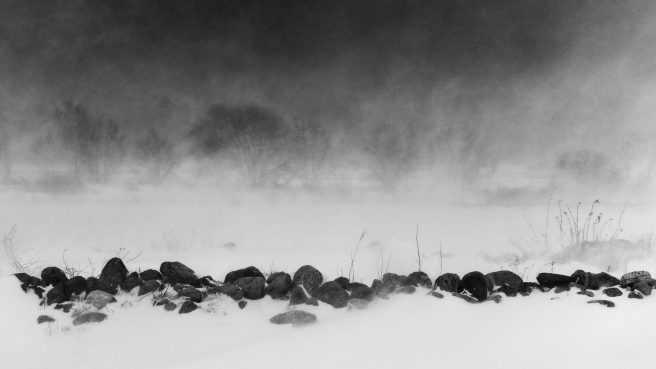
Ölandsfåk is the characteristic snowstorm on the island of Öland in Sweden. The wind blows so strong that it seems to snow horizontally. Huge drifts of hard-packed snow form in wind shielded areas while the ground can be almost bare out in fields. There are many old stories about people who got lost and froze to death in this weather. I took this picture from a safe distance from my house. This is one of my favourite winterscape pictures I took on the island. I like the contrast between the typical stone wall in the foreground and the painting like background of the trees in the snowstorm. It has a dramatic atmosphere, but at the same time, it transmits a sense of peace and quietness.
Savanna
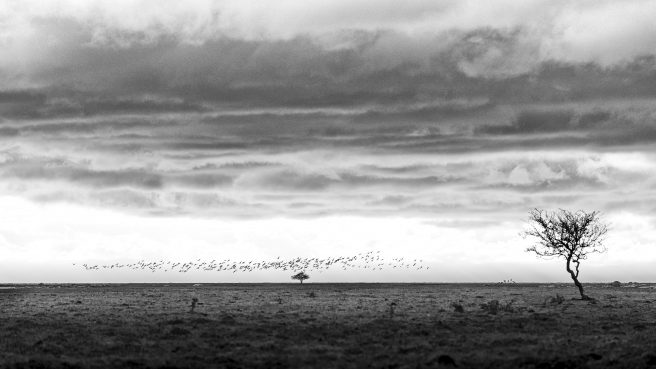
Öland’s savannah is the title of this image. Indeed, the southern tip of the island reminds one of the typical landscapes of Africa, with its open grasslands and sparse trees. This picture summarises three elements of the island which formed my photographic style; the big and often dramatic skies, minimalistic landscapes and birds (even if I’m not a particular bird photographer). It is somehow a meditative image.
Stoneway
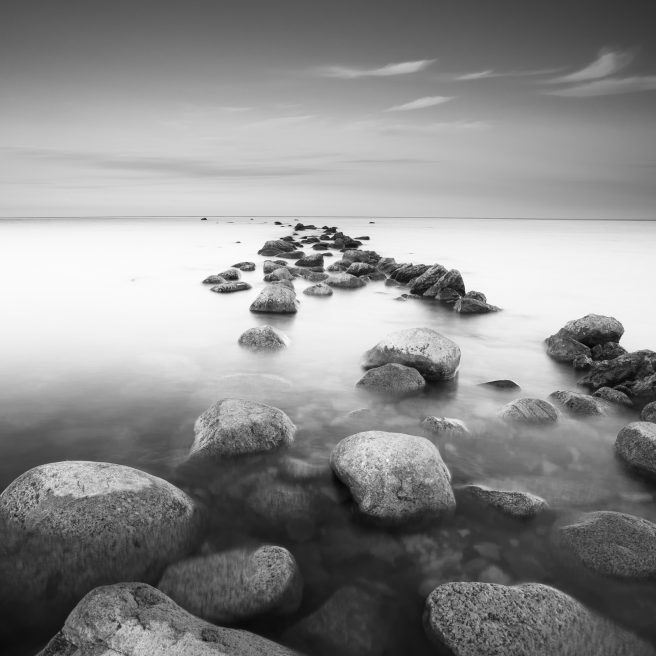
The island of Öland is about slow photography. I really like to slow down and almost absorb the landscape before taking a picture. This image is an expression of this feeling. I entitled it “Stoneway to Heaven” due to the almost endless line of rocks which seem to touch the horizon. Also, often my image titles make reference to songs or compositions since music is another important part of my life, I both love listening to music and playing it myself.
Issue 331
End frame: L’Éclipse by Eugène Atget
There is something immediately appealing about Eugène Atget’s 1912 albumen silver print L’Éclipse—a sense of spontaneity, playfulness, and ease with which the Parisian photographer pulls us right into the center of the crowd that gathered on Place de la Bastille to observe a solar eclipse. I feel almost compelled to turn my head to the left to follow the gaze and hand gestures of the spectators and, like them, expectantly stare into the sky.
Atget titled his photograph L’Éclipse, but he focused his large format wooden camera on the crowd of about twenty-five Parisians that gathered on a small platform on top of the stairs of the Place de la Bastille. We can only infer what the figures are looking at from the photograph’s title or perhaps from the viewing apparatuses that several people are holding to their eyes. Others simply shield their vision with their hands, thus guiding our attention nicely to the object of their fascination. This spontaneous composition is further enhanced by the arrangement of the figures who positioned themselves in a slight curve around a column and in front of an iron fence that provides a natural frame.
In the background, several buildings establish the exact geographic location of the gathering: Phares de la Bastille. The scene is completed by a few lamps and a row of trees lining an empty street. The absence of leaves informs us that the eclipse takes place either at the very end or the very beginning of winter—a detail supported by several figures sporting long overcoats.
Judging from their clothes and in several instances work uniforms, the moon gazers are middle and working class and, except for a middle-aged woman in the row closest to the camera, mostly men and children. There is something democratic about this gathering, a nod to modernity as the photograph depicts people of different social statuses, ages and genders, a group that might not otherwise gather in one place, all intently staring into the sky. Well, all but one. A young man with a cheeky grin has climbed a bit higher on the column to get himself a viewing advantage over the crowd. However, he finds Atget, who is likely standing relatively close to his subject, more worthy of his attention than the eclipse, and looks intently in his direction for what must be a minute exposure at the least.

